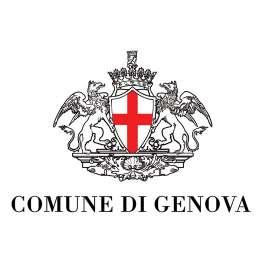

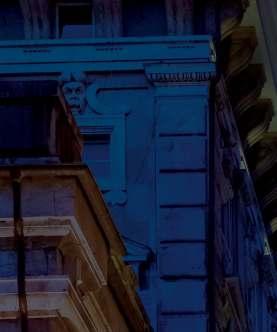




Getting around Genoa
• Emergency services and useful numbers
• Genoa for kids
• Genoa not to be missed
• Maps
Art and culture
• Museums
• Palazzi dei Rolli
• Palazzo Ducale
• Theatres
• Galleria Mazzini
• Churches
• Historic shops
• Monumental cemetery of Staglieno
• Votive niches
• The medieval city
• Porto Antico
• Villas and parks
• Seaside walks and panoramic points
• Waterfront
• Walls and forts
• Historic aqueduct
• Sea and beaches
• Events
• Euroflora
• The International Boat Show
For a pleasant stay
• Hotels
• Restaurants
• Eating at the market
• Sciamadde

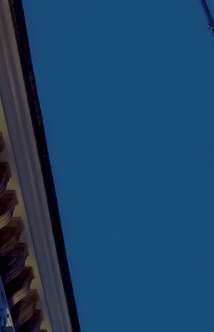



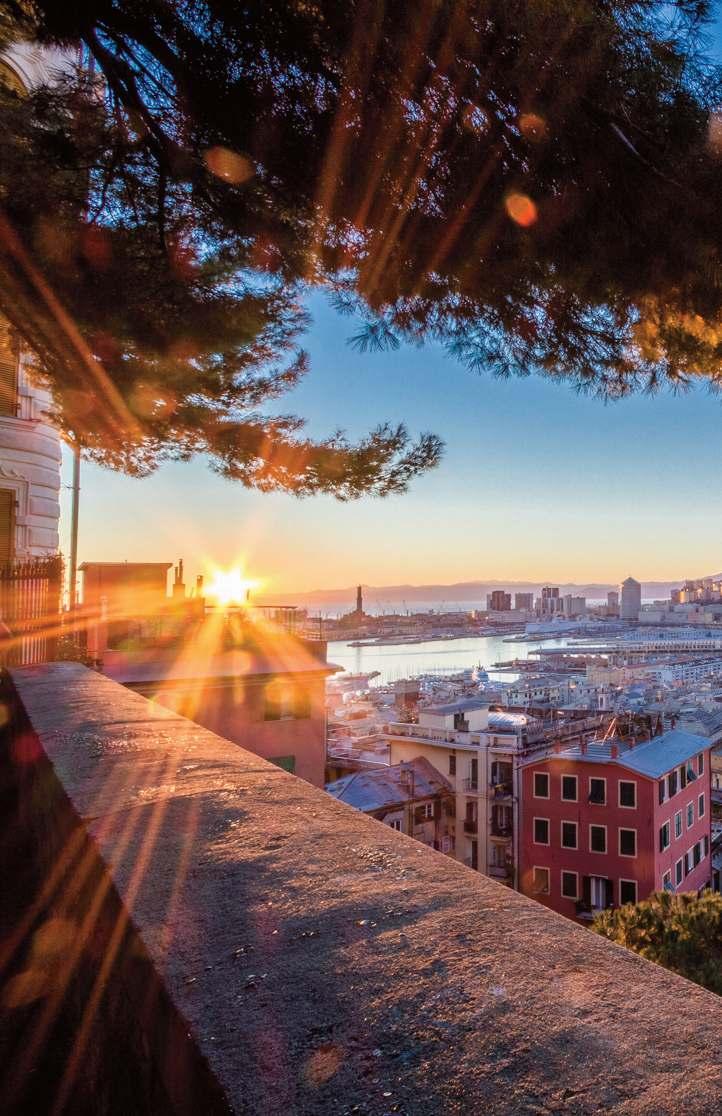
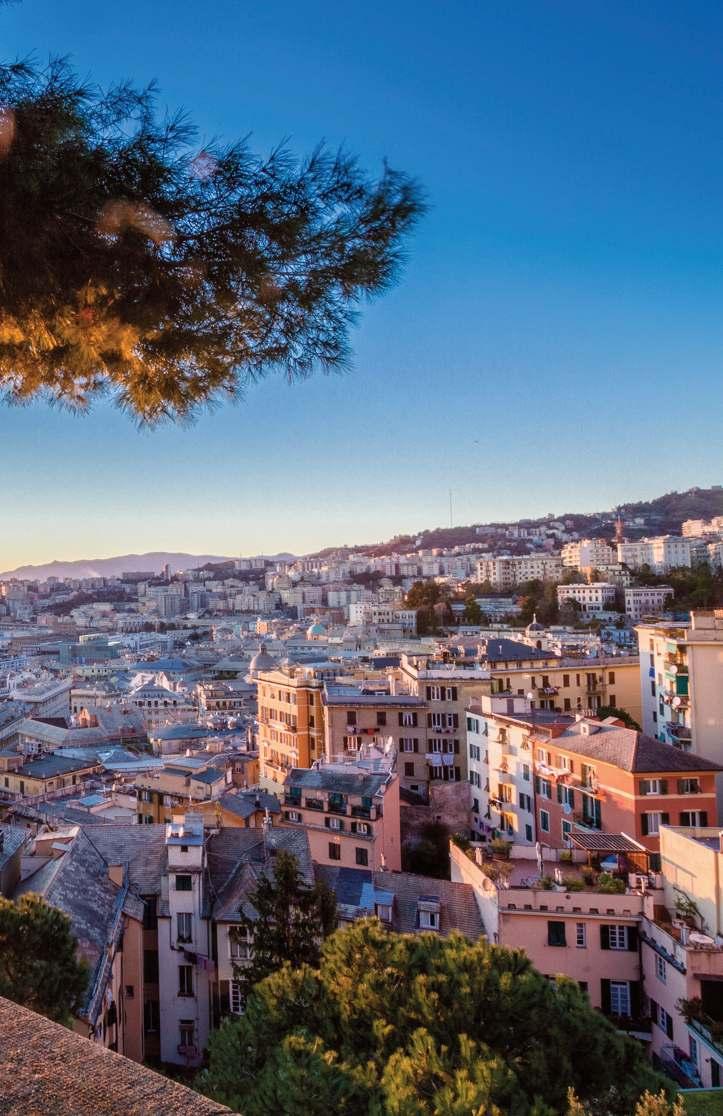
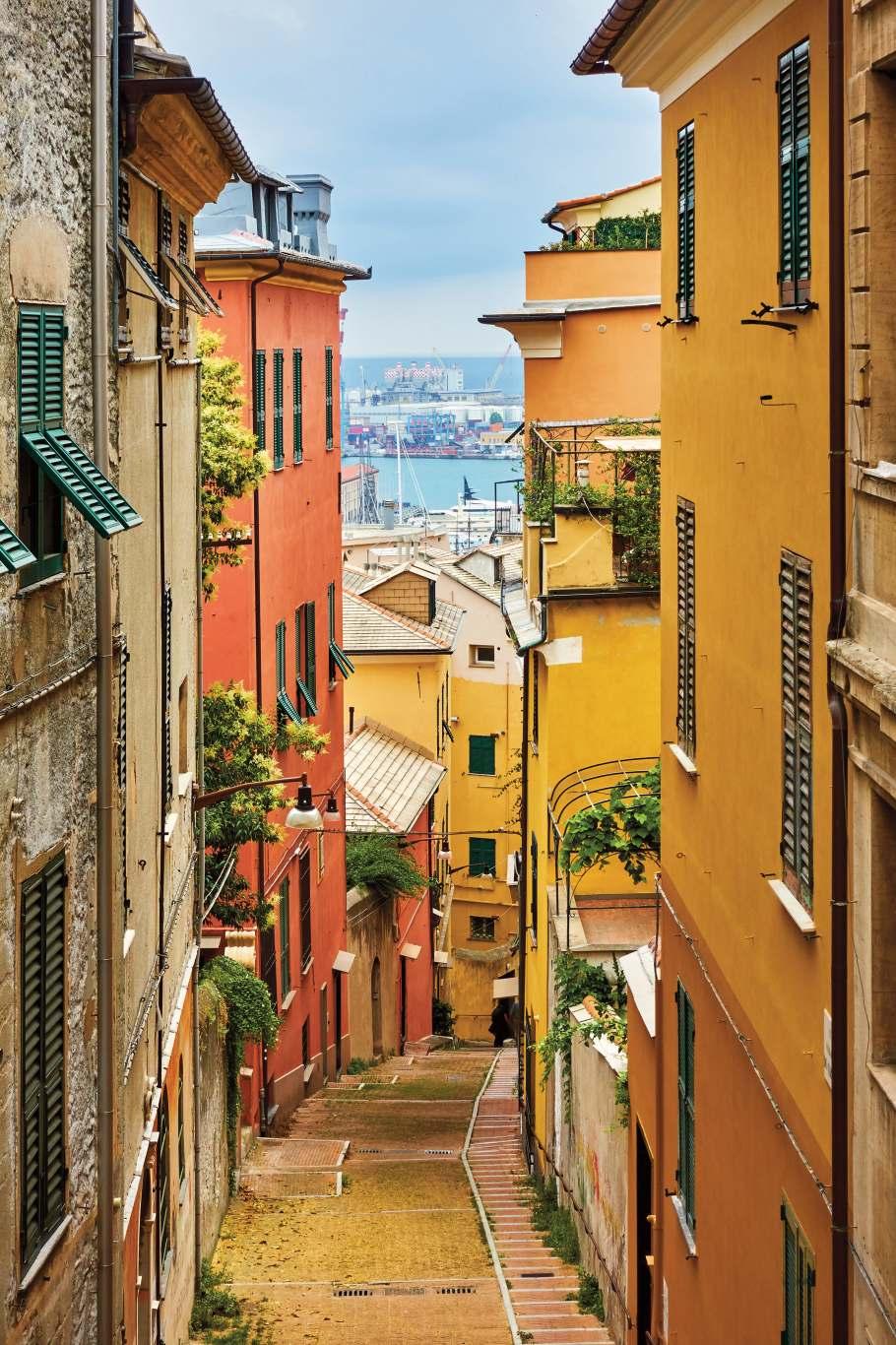
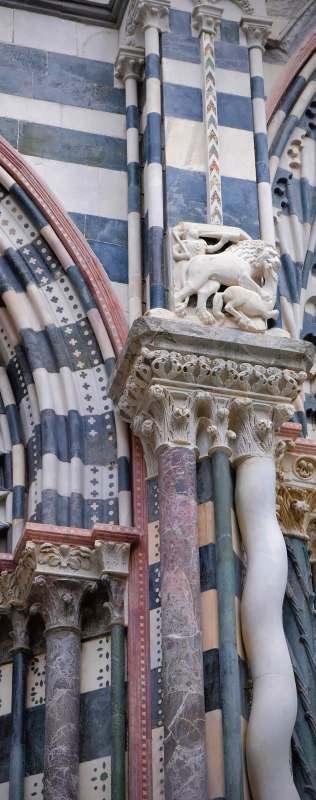

Infopoint IAT - City Pass - Guided tours - Taxi - Car rentalBicycle rental - Segway - Public transport - Tickets
Emergency services and useful numbers
Genoa for kids
Genoa not to be missed
Maps
Art and
Museums
Palazzi dei Rolli
Palazzo Ducale
Theatres
Galleria Mazzini
Churches
Historic shops
Monumental Cemetery of Staglieno
Votive niches
The medieval city
Porto Antico
Villas and parks
Seaside walks and panoramic points
Waterfront
Walls and forts
Historic aqueduct
Sea and beaches
Events
Euroflora
The International Boat Show
Hotels
Restaurants Eating at the market
Captions and image
Edizioni Liguri S.r.l. via XX Settembre 41/3 - 16121
tel. 010 5532701 amministrazione@edizioniliguri.it
For tourist information contact: info@visitgenoa.it
Tel. 010 5572903
IAT Garibaldi
Via Garibaldi 12 r
Opening times: Monday to Sunday 9:00-18:20
IAT Porto Antico
Ponte Spinola
Opening times: Monday to Sunday 9:30-18:20 (from April to October), 9:30-16:50 (from November to March)
IAT Cristoforo Colombo Airport Arrivals Level
Opening times: 9:00-18:00 in accordance with flight arrival times
IAT Stazione Marittima
Ponte dei Mille
Opening times: 8:30- 12:20 in accordance with cruise ship arrivals
• Infopoint IAT
• Guided tours
• Tickets and cards
It is the official tourist pass for Genoa, guiding visitors in the discovery of the city. It is created automatically and free of charge upon the first purchase of a card and it can be topped up more times for free, without limits, to give a maximum saving as well as the most pleasurable experience of visiting Genoa. Various types of cards are available for 24, 48, or 72 hours. The cards include free travel on AMT public transport and free access to the main museum attractions.
Discover the offers on www.genovacitypass.it
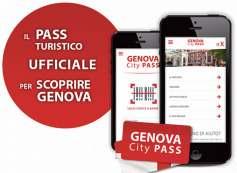
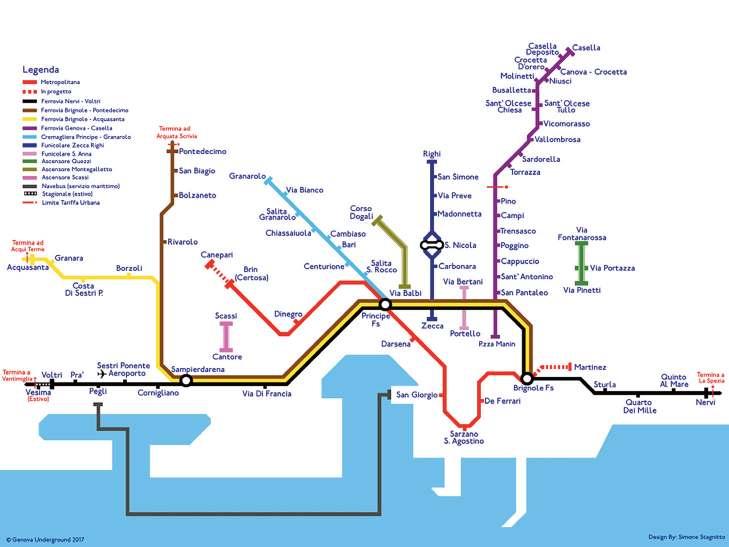
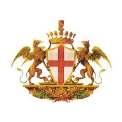

Visit Genoa is the official App of the Municipality of Genoa that provides all the necessary information for arriving and staying in Genoa, getting around easily, and experiencing the beauty and attractions of the city. Through virtual tours, 3D images, and audio texts in six languages, tourists can discover the most iconic places in Genoa.
From the IAT office on Via Garibaldi, guided tours depart to explore the historic center of Genoa, revealing the charming alleys and tiny squares that proudly guard ancient churches, towers, refined portals, and votive niches.
The tours also include the Palazzi dei Rolli, luxurious residences with magnificent stucco, marble, or painted facades, grand atriums, splendid gardens with fountains and nymphaeums, and inside, frescoed halls, sumptuous furnishings, fine collections, and rich art galleries. Additionally, the tours highlight the Historic Shops, traditional businesses and artisan activities that have been in operation for at least 70 years, and the most fascinating treasures of the historic center and the most characteristic neighborhoods of Genoa.
For information: www.visitgenoa.it/it/store
The taxi service in Genoa is managed by the Radiotaxi cooperative. Taxi stands are located near railway stations, Cristoforo Colombo Airport, the Maritime Station, and in various areas of the city.
Taxi can be booked:
• By calling +39 010 5966
• By sending a message via Telegram or WhatsApp to 392 5966123
• Online at www.5966.it
• Through smartphone apps:
- IT Taxi
- Telepass Pay
Payment can be made in cash, via electronic payment through POS, and with the apps IT Taxi, Telepass Pay, and Tinaba.
It is advisable to park the car in one of the many public parking lots in the city and use the AMT Public Transport.
The historic center is in a restricted traffic zone (ZTL); traffic and parking within this ZTL are reserved for residents. In the "Blue Zones," the blue indicates parking timelimited areas where charges apply.
For all information: www.genovaparcheggi.it
At the airport www.airport.genova.it
Alamo
Tel. 010 6143056 - www.alamo.it
Autovia
Tel. 010 6502051 - www.autovia.it
Avis
Tel. 010 6507280 - www.avisautonoleggio.it
Budget
Tel. 010 6512467www.budgetautonoleggio.it
De Franceschi - Allasia (only with driver)
Tel. 010 6503633 www.de-franceschi.allasiagroup.it
Dollar
Tel. 010 6512525 - www.dollar.it
Drivalia
Tel. 010 6140046 - www.drivalia.com
Enterprise
Tel. 010 6143056
www.enterpriserentacar.it
Europcar
Tel. 010 6504881 - www.europcar.it
Hertz
Tel. 010 6012525 - www.hertz.it
Locauto
Tel. 010 6143056 - www.locautorent.com
Maggiore
Tel. 010 6507280 - www.maggiore.it
Sicily by Car
Tel. 010 6591536 - www.sicilybycar.it
Sixt
Tel. 010 6512111 - www.sixt.it
Thrifty
Tel. 010 6012525 - www.thrifty.it
In the city:
Cairocar
(only with driver)
Via Milano 164F/r - 16126 Genova
Tel. 010 587017 - www.cairocar.it
Europcar
Via Giuseppe Casaregis 46/1
16129 Genova
Tel. 010 5955428 - www.europcar.it
Eurorent
(only with driver)
Via Milano 71 - 16126 Genova
Tel. 010 2466801 - www.eurorentge.it
Ferrari
Via Albaro 39 - 16145 Genova
Tel. 010 316923 ww.autonoleggioferrari.com
Genovarent
Via Eugenio Ruspoli 11A/r - 16129 Genova
Tel. 010 564003 - www.genovarent.it
Hertz
Via Eugenio Ruspoli 12 r - 16129 Genova
Tel. 010 5531003 - www.hertz.it
Hertz - Terminal Traghetti
Piazzale Iqbal Masih - 16126 Genova
Tel. 010 8907067 - www.hertz.it
Maggiore
Corso Sardegna 275 r - 16142 Genova
Tel. 010 8392153 - www.maggiore.it
RentalPlus
Via Giuseppe Casaregis 42/1 16129 Genova
Tel. 010 8565580 - www.rentalplus.it
Sixt
Piazza Giuseppe Verdi 2 - 16121 Genova
Tel. 010 6512111 - www.sixt.it
Toprent (only with driver)
Via Voltri 12 - 16158 Genova
Tel. 335 7943004 - www.toprent.it
Bikappa Bikes
Corso Europa 186A - 16132 Genova
Tel. 373 7570101
https://bikappabikes.com/ Monday-Friday 9-13/15-20; Saturday 9-19, Sunday closed. Booking is recommended.
Bike Fever 24/7
Via Lomellini 22 r - 16123 Genova
Tel. 010 3752824 / 351 8512959 www.bikefever.it
Futurebike
• Via al Ponte Reale 8 r - 16124 Genova
Tel. 010 4552918 ge2@futurebikeitalia.it
• Salita della Tosse 1 r - 16121 Genova
Tel. 010 4076968
ge4@futurebikeitalia.it
• Via Sestri 194 r 16154 Genova Sestri Ponente
Tel. 010 4550312
ge3@futurebikeitalia.it www.futurebikeitalia.it
Noleggio Biciclette e Pattini
Corso Italia
(near Boccadasse church)
Tel. 349 8499737
Monday-Friday 15-20; Saturday, Sunday and holidays 10-20. noleggiobicicletteepattinigenova @fastwebnet.it
Seifuori
Piazza Sciolla 1 - Stazione FS 16167 Genova Nervi
Tel. 351 5525365 www.seifuori.it
Treecycle
Via di Prè 121 r -16126 Genova
Tel. 340 4155861 www.treecycle.eu/noleggio/
The Segway is a personal transportation device equipped with a platform and two parallel wheels, powered by two electric battery-operated motors. It is a pedestrian vehicle that allows you to explore places otherwise accessible only on foot. Genova Segway Tours offers various routes of different durations, enabling visitors to
explore the main sites and the most characteristic corners of the largest pedestrianized historic center in Europe, all while riding Segways under the guidance of a tour leader.
Le Bighe del Bigo
Genova Segway Tours
Calata Cattaneo 18 - 16128 Genova
Tel. 010 0897269 - www.genovasegway.it

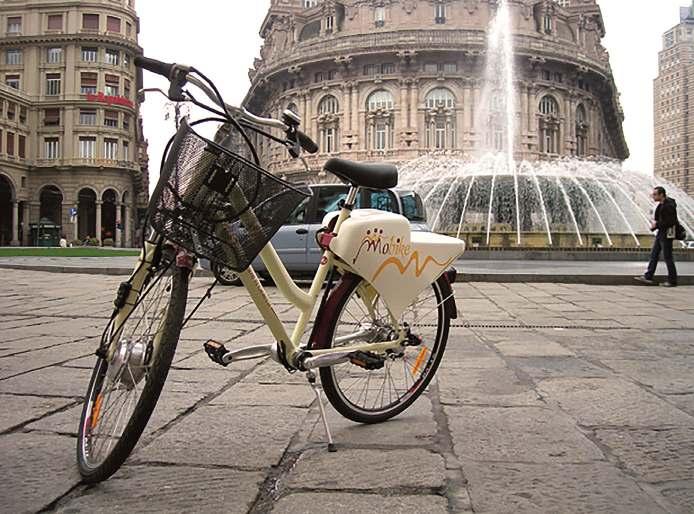
Public transportation is provided by AMT. A comprehensive network connects the entire city, allowing easy movement in all directions.
The integrated system includes buses, metro, funiculars, elevators, a ferry, rack railways, and narrow-gauge railways:
139 bus lines connect the coastal axis, from Voltri to Nervi, to the city's hills and the two valleys, Valbisagno and Valpolcevera.
1 metro line connects the Rivarolo area in Valpolcevera to the city center, with eight stations near the main railway stations and tourist, cultural, and commercial points: Brin, Dinegro, Principe, Darsena, San Giorgio, Sarzano/Sant’Agostino, De Ferrari, Brignole.
2 funicolars Sant’Anna and Zecca-Righi – connect the center to the hills
1 rack railway, a historic system dating back to 1901, runs between the Principe railway station and the picturesque hilltop neighborhood of Granarolo.
14 elevators allow quick access to hilltop neighborhoods and panoramic points.
1 narrow-gauge railway connects Genoa to the town of Casella, in the hinterland, along a scenic route through the green valleys of Bisagno, Polcevera, and Scrivia. For information on history, routes, and ticket purchase: www.ferroviagenovacasella.it.
1 ferry line – Navebus – connects Pegli to Porto Antico by sea. This service allows to reach the city center from the west in just 30 minutes. It's also a way to see the city from a unique perspective and avoid traffic.
1 shuttle service Airlink, integrated with the train to reach Cristoforo Colombo Airport from the Sestri Ponente station.
Volabus
Volabus is the service that connects the airport to the Genoa Brignole and Genoa Piazza Principe railway stations in about 30 minutes, passing through the city center. Timetables and fares are available on www.amt.genova.it.
Tickets for using the AMT network are sold at company ticket offices, newsstands, tobacconists, and many other commercial establishments.
Some types of tickets can be purchased via the AMT App; at the ILA totems located at major stops; via SMS (for Tim, Vodafone, and Wind Tre customers).
Tourist tickets are also available at Tourist Information and Welcome Offices (IAT).
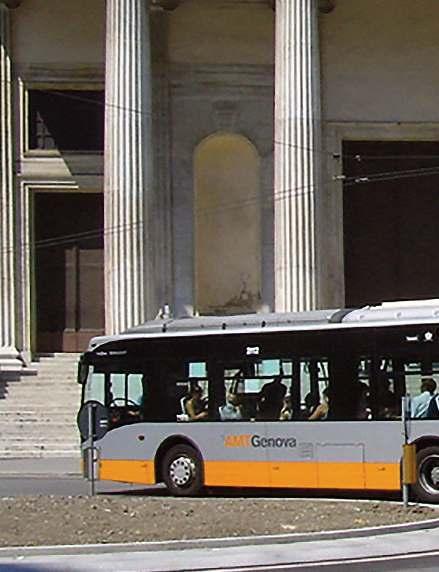
• 2,00 € - Ordinary ticket valid for 110 minutes valid on the entire Metropolitan City network
• 2,20 € - Integrated AMT -Trenitalia 110-minute ticket valid on the entire Metropolitan City network + Trenitalia within Genoa's urban area (from Nervi to Voltri, from Acquasanta to Pontedecimo)
• 5,00 € - Ordinary 5-hours ticket valid on the entire Metropolitan City network
• 10,00 € - Met Daily - 24-hour ticket valid on the entire Metropolitan City network
• 30,00 € - 24-hour 4 people ticket valid on the entire Metropolitan City network
• 5,00 € - One-way ticket line 782 Santa Margherita Ligure - Portofino
For more information visit: www.amt.genova.it












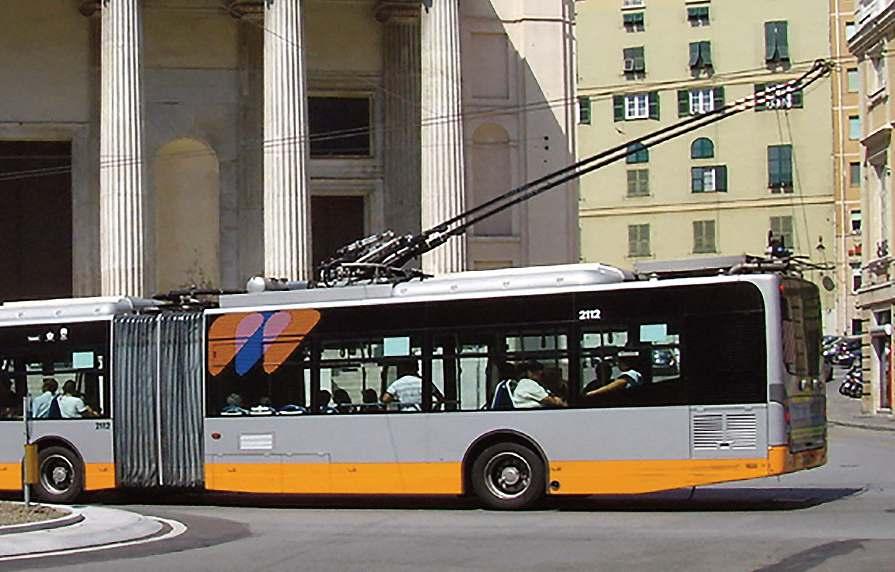



Through the official mobile application of the city's public transport network, you can search for information on lines, stops, routes, schedules, and purchase tickets. It is available for free download from the App Store and Google Play, as well as from the AMT website.
For more information: www.amt.genova.it



GoGoGe is the App that provides access to multiple mobility services, both public and private, integrating their use and facilitating payments. Through the platform, you can organize your travels by choosing from the following mobility options:
• AMT - Urban public transport integrated with trains and the provincial network;
• Genova Parcheggi - The city's extensive parking options;
• Genova Elettra - Car sharing service with free-floating vehicles;
• Trains - Tickets for all destinations within Italy.
The integration of these services aims to promote the use of sustainable transportation solutions and to enhance the user experience from both a planning and usability perspective, in order to meet various transportation needs in a personalized manner.
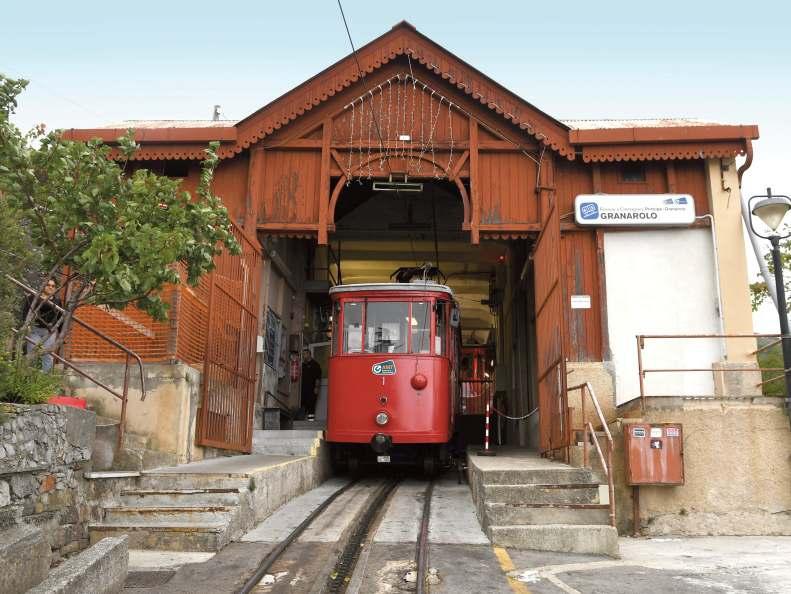

Emergency number: 112 (Carabinieri, police, fire brigade, emergency medical services).
Comando Polizia Municipale
Tel. 010 5570 - www.pmgenova.it
Doctor on call
Tel. 800 893580 from 20:00 to 8:00 on weekdays, 24/7 on Saturdays, pre-holidays, and holidays.
P.A. Croce Bianca Genovese
Piazza Palermo 25 - 16129 Genova
Tel. 010 363636 - www.crocebianca.it
Villa Scassi Hospital
Sampierdarena Civil Hospital
Corso Onofrio Scassi 1 - 16149 Genova
Tel. 010 84911 http://www.asl3.liguria.it/ospedali/villa-scassisampierdarena.html
Galliera Hospitals
Via Alessandro Volta 8 - 16128 Genova
Tel. 010 56321 - www.galliera.it
Giannina Gaslini Institute
Children's Hospital
Via Gerolamo Gaslini 5 - 16148 Genova
Tel. 010 56361 - www.gaslini.org
International Evangelical Hospital
Castelletto: Corso Solferino 1A 16122 Genova
Voltri: Piazzale Gianasso 4 16158 Genova Voltri
Tel. 010 55221 - www.ospedale-evangelico.it
Ospedale Policlinico San Martino
Largo Rosanna Benzi 10 - 16132 Genova
Tel. 010 5551 - www.ospedalesanmartino.it
San Martino Polyclinic Hospital
Viale Benedetto XV 10 - 16132 Genova
Tel. 010 352808
www.federfarmagenova.it
Pharmacies open 24/7:
Europa Pharmacy
Corso Europa 676 r - 16148 Genova
Tel. 010 380239
Ghersi Pharmacy
Corso Buenos Aires 18 r - 16129 Genova
Tel. 010 541661 - www.farmaciaghersi.it
Pescetto Pharmacy
Via Balbi 185 r - 16126 Genova
Tel. 010 261609 - www.farmaciapescetto.it
Animal Emergency 24/7
Centro Veterinario Genovese
Via Carlo Barabino 102 r canc. 16129 Genova
Tel. 010 5955028 - 347 3356222
Foce Veterinary Clinic
Via Eugenio Baroni 26 r 16129 Genova
Tel. 010 593949
Croce Bianca Animal Emergency Service
Tel. 010 363636
Lipu: tel. 335 1316084
www.lipugenova.org
ACI Roadside Assistance: 803116
Highway Police: 010 369011
Coast Guard Blue Number: 1530
Port Captaincy: 010 27771
State Forestry Corps: 1515

Genoa is a very compact and cosy city, easily accessible on foot and by public transport, making it suitable for children. The sea also offers various entertainment opportunities for the little ones.
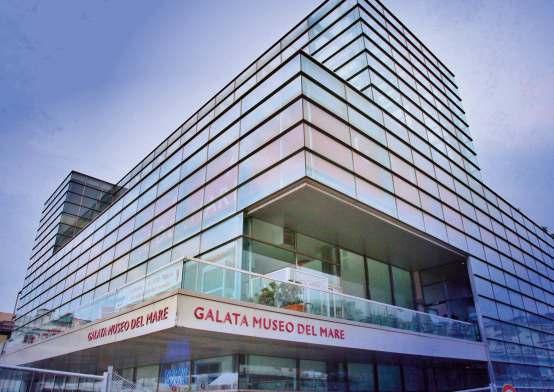
In addition to the Genoa Aquarium, children can have fun at the Galata Maritime Museum, listening to stories of ships, sailors, and explorers, boarding a galley or a brig-
antine, experiencing the thrill of steering a vessel in the midst of a storm, and discovering how the ships of the Genoese fleet have transformed over the centuries. In front of the entrance to the Galata is the submarine Nazario Sauro S518, the only Italian submarine visitable in the sea. Crew voices, engines, sonar, radar, and the sound of torpedo launches accompany this exciting experience. Inside the Museum, a section equipped with numerous multimedia activities allows visitors to learn how to navigate the submarine’s confined spaces and pilot a submarine.
At Ponte Calvi, the Neptune galleon, used as a set for Roman Polanski’s film Pirates, is moored. At 63 meters long, with a sail area of 4.500 m² and a weight of 11 tons, it stands proudly with its rich wooden sculptures. Visitors can board and explore its cabins, cannons, and hatches on an undeniably fascinating journey.
In Piazzale Mandraccio, the Betty Garden,
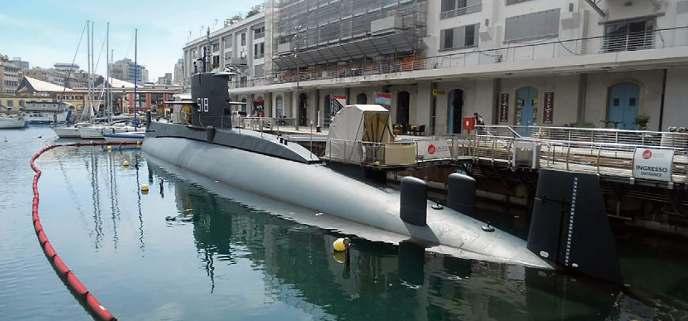
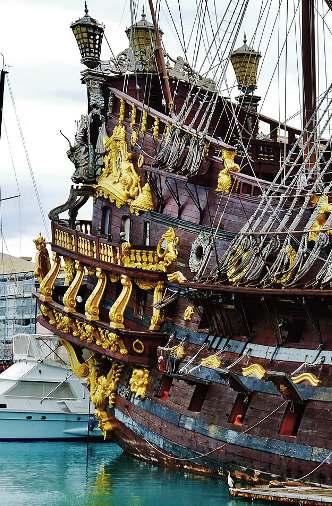
an inclusive playground, that can be enjoyed by able-bodied and disabled children alike, offers accessible play stations without any separations.
In the Città dei bambini e dei ragazzi (for ages 2 to 12), kids can make “small and big” discoveries, approaching science and technology in a fun way. Alternatively, they can

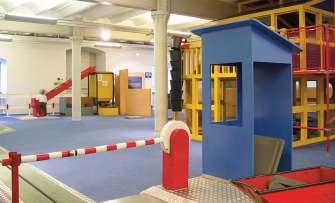
spend a few hours at the De Amicis Library, specializing in books and activities for children and young people.
Before leaving the Porto Antico area, you can take the Bigo panoramic elevator to see the entire city from above.

Genoa is a few miles from the International Sanctuary of Cetaceans, a protected marine area of international interest where various cetaceans live, from fin whales to sperm whales and dolphins. Many mini-cruises depart from Ponte Spinola in Porto Antico for the sighting of these beautiful animals, and seeing them can be a truly exciting experience. A biologist is always present on board to provide information and comment on the sightings. For information and reservations: www.whalewatchliguria.it
From April to September, boarding one oftheboatsoftheLiguriaViaMarecooperative is the best way to reach Portofino, San Fruttuoso di Camogli, and the Cinque Terre, comfortably cruising along the coast and stopping at the main seaside resorts.
Consorzio Liguria via mare Tel. 010 265712 - 010 256775 www.liguriaviamare.it
Genoa’s tourist trains offer two different routes (green and red) to admire the city and visit the most important places while comfortably seated, providing a panoramic view of the city. The travel time is about 45 minutes, departing from the Green Hub at Porto Antico. Opening time: every day from 10 am to 6:30 pm www.treninituristicigenova.it
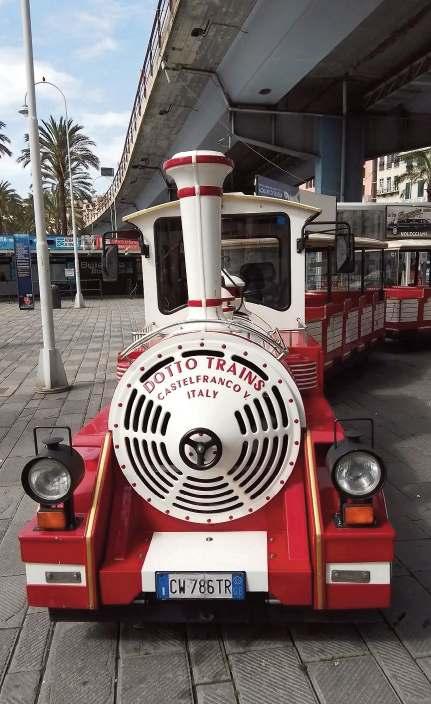


Genoa is a city full of hills. Elevators and funiculars, managed by the urban transport service, offer a unique experience: the Castelletto elevator, the Montegalletto elevator (which moves horizontally and vertically), the Sant’Anna funicular, the Principe-Granarolo rack railway, and the Zecca-Righi funicular allow you to discover the heights of the city and new panoramas.
If the kids are tired, a solution can be a tour of the city on an open-top double-decker bus: you will not only admire the city center but also the seafront of corso Italia with the opportunity to visit the famous village of Boccadasse and enjoy an ice cream.
Tel. 335 5417825 https://www.city-sightseeing.it/it/genova/
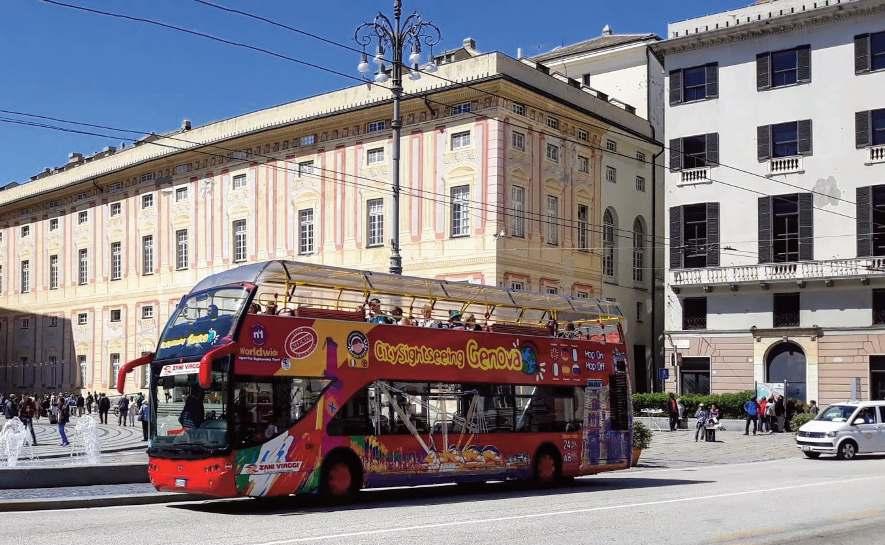
A first introduction to the city to help orient the visitor. More detailed information is provided in the chapters dedicated to each theme.
It is one of the largest medieval historic centres in Europe and the most densely populated: a maze of narrow alleys (caruggi) that
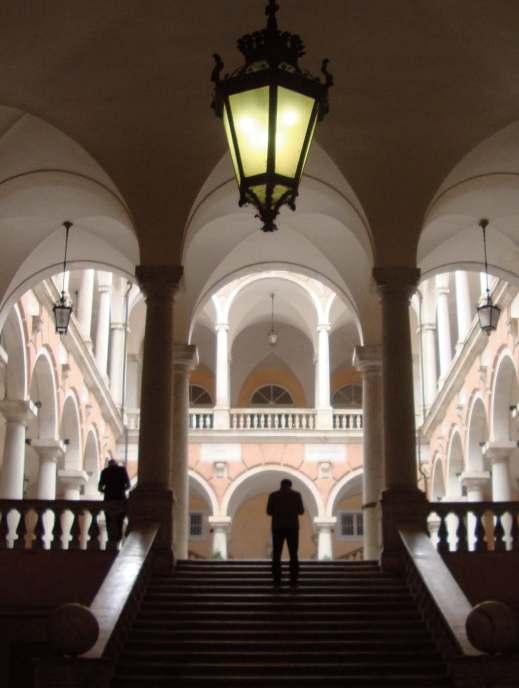
unexpectedly open into small squares where different smells, tastes, and cultures mingle. Admire the ancient noble palaces, the small squares, and the splendid churches alternating with historic shops that have
been operating for over a hundred years and stores of all kinds. At the intersections, look up to appreciate the magnificent votive niches, most of them dedicated to Mary, Queen of Genoa, donated by guilds to illuminate the streets at night. Explore it using the four coloured tours that cross it: the Rolli palaces (tour 1 red), the heart of the Superb (tour 2 green), the medieval city (tour 3 yellow), and the knights’ way (tour 4 blue). Discover the ancient medieval city, from Torre Embriaci to Santa Maria di Castello, the first inhabited site of Genoa in ancient times. Move from Campo Pisano to the church of San Donato to Porta Soprana, retracing some of the most significant pages of the Superb’s history, trying to follow the path of the medieval city walls. Visit the Carmine district, characterized by corners with unusual and evocative names, where time seems to have stood still. From here, you can reach one of the most beautiful panoramic points in Genoa, Spianata Castelletto
If while walking through the alleys of Genoa you come across a church, enter without hesitation: you will discover many hidden treasures of art and devotion. The Chiesa del Gesù (p. 79) represents a prestigious example of Genoese Baroque. The Basilica of Santa Maria di
Castello (p. 84), with its 15th-century Dominican convent and museum, constitutes a monumental complex of great importance. The church of San Donato (p. 81) is also Romanesque, with a beautiful octagonal bell tower. Santa Maria delle Vigne (p. 84), founded before the year 1000, features a Romanesque bell tower and cloister, while its interior is mainly Baroque, with bright frescoes dating from the 17th and 18th centuries. The church of San Luca (p. 82) is a small 17thcentury gem of the Spinola family. The Basilica della Santissima Annunziata del Vastato (p. 80) deserves to be visited on a bright day when the sun makes the gilding, marble inlays, frescoes, and the dizzying dome shine.
Porta Soprana (p. 106) is one of the main medieval architectures in Genoa. It opens in the so-called Barbarossa Walls, built in 1159 against the expansionist aims of Emperor Frederick Barbarossa. In front of the gate stood the ancient Benedictine monastery of Sant’Andrea, of which today survives the beautiful cloister with figured capitals from
the mid-12th century. Not far away is the Columbus’ House (p. 42), a 18th-century reconstruction of the original medieval building where the discoverer of the Americas lived in his youth.
Piazza De Ferrari and Palazzo Ducale
The main square of Genoa is named after Duke Raffaele De Ferrari, a benefactor of the city. In the centre stands a monumental bronze fountain from 1936. On one side, the Carlo Felice Theatre (p. 72) and the Ligurian Academy of Fine Arts (p. 36), both designed in the 19th century by Carlo Barabino; on the other side, the 20th-century Palace of the Regione Liguria and the Liberty-style New Stock Exchange Palace. Among these buildings stretches the side facade of the Palazzo Ducale (p. 70), the cultural heart of the city, where internationally renowned art exhibitions, conferences, cycles of meetings, and educational activities are held. The seat of the Republic’s government, it has a medieval core (the Grimaldina Tower) and a central body built between the 16th and 17th centuries.

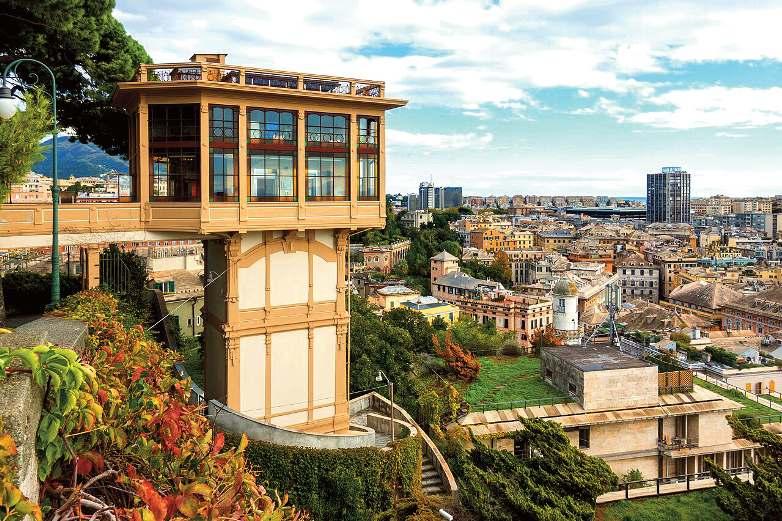
5. Piazza San Matteo and Piazza Banchi
Piazza San Matteo (p. 107) is a leap back in time: a well-preserved medieval noble settlement, the sign of the private power of a great Genoese family. All the palaces in the square and the church of San Matteo (p. 85)
with its cloister belonged to the noble Doria family. Piazza Banchi took its name from the money changers’ benches operating under the arcades of the various palaces. In 1595, the Merchants’ Loggia, designed by Andrea Ceresola, the Vannone, provided an illustrious covered seat for bankers and in 1855 became
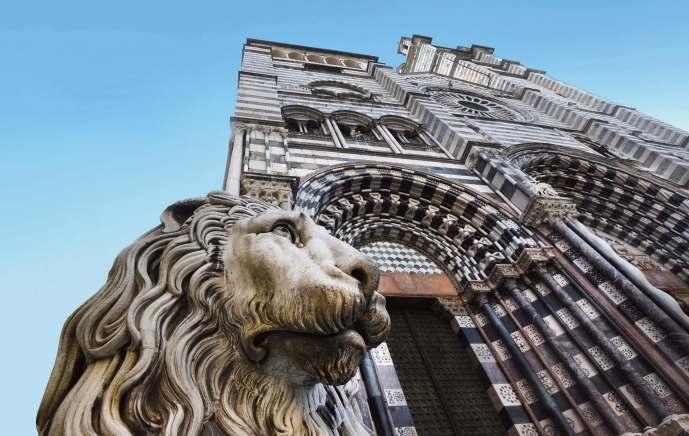
the first Commodity and Stock Exchange in Italy. The 16th-century church of San Pietro in Banchi (p. 86) represents a curious blend of sacred and profane: a unique example of a religious building located above commercial shops.
6. Cathedral of San Lorenzo and Diocesan Museum
Genoa’s Cathedral (p. 78) dates back to the early Middle Ages. The current building, constructed between the 12th and 14th centuries, features Romanesque sides and beautiful lateral portals, while the majestic facade is Gothic. Over the centuries, it has undergone several modifications that have altered its interior style. It is possible to climb the towers to see the city of Genoa from a unique perspective. The evocative underground rooms of the Treasure Museum (p. 37) hold important relics and valuable sacred art pieces from the 12th to the 18th century. In the adjacent Diocesan Museum (p. 38), you can admire the precious Passion cloths, considered the forerunners of jeans.
7. Vertical Genoa
Genoa has a wholly vertical dimension, made up of narrow crêuze, the typical paths that climb up the hills surrounding the city. Since the late 19th century, many special transportation systems have connected the centre to the heights: today, they are efficient means of transport for the Genoese and unique attractions for tourists (p. 8). The Liberty elevator of Castelletto Levante from piazza del Portello reaches the Spianata Castelletto, one of the most beautiful panoramic points in the city. The ZeccaRighi funicular, the horizontal-vertical combined elevator of Montegalletto, and the Granarolo cogwheel railway also offer spectacular views. With the Sant’Anna funicular, it is possible to reach the Ancient Sant’Anna Pharmacy (p. 88), operating for centuries within the convent of the Discalced Carmelite friars, specializing in herbal and galenic remedies.
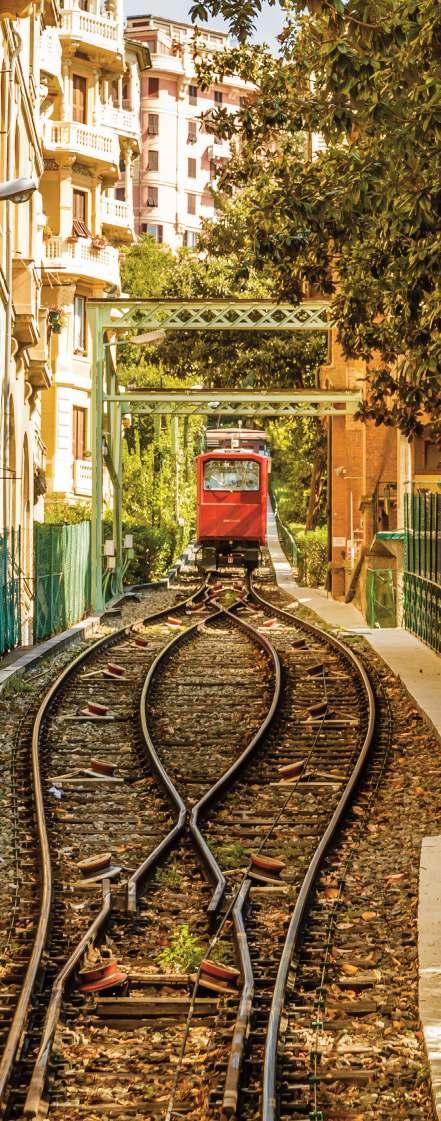

The seafront of Genoa, corso Italia (p. 124), is frequented by families and sports enthusiasts and lined with bars and beach establishments. It stretches along an easy and pleasant promenade to Boccadasse (p. 135), a charming Ligurian fishing village that retains all its timeless charm and is renowned today for its ice cream parlors and typical seafood restaurants. From the viewpoint, you can descend to the small beach and from there reach Capo di Santa Chiara, which offers a wide view over the Gulf of Paradiso to the promontory of Portofino.
Thanks to its mild and pleasant climate, many wealthy European families chose Nervi as their favourite holiday destination since the 19th century. Today it boasts the romantic Anita Garibaldi promenade (p. 125), overlooking the sea, and the Gropallo Tower, along with
an extensive system of parks belonging to historic villas such as Gropallo, Serra, and Grimaldi Fassio (p. 122). Inside these parks are several important museums of modern and contemporary art: the GAM - Gallery of Modern Art (p. 39), the Frugone Collections (p. 40), and the Wolfsoniana (p. 40). In addition, there is the G. Luxoro Museum (p. 41), a noble residence from the early 20th century.
Considered one of the most beautiful and fascinating in Europe, today it is a true open-air museum (p. 102). Designed in neoclassical style by Carlo Barabino in 1835, it preserves in the Pantheon the memory of great Genoese figures. Within the Irregular Grove, inspired by romantic gardens, are the tombs of Giuseppe Mazzini and other heroes of the Italian Risorgimento. Along the galleries and porticoes, hundreds of 19th and 20th-century funerary sculptures by important artists are displayed.
11. The Palazzi dei Rolli, via Garibaldi, Museums of Strada Nuova and Paganini’s Rooms, Palazzo Reale and Palazzo Spinola
During the time of the ancient Republic, the Rolli were lists of the wealthiest noble residences in Genoa. From these lists, palaces were randomly selected to host important foreign dignitaries during state visits. In 2006, 42 of the over 150 palaces were included in UNESCO’s World Heritage List (p. 46). Some of the most prestigious Palazzi dei Rolli overlook via Garibaldi, the ancient Strada Nuova: Palazzo Rosso, Bianco, and Tursi preserve, within a single museum itinerary, an extraordinary artistic heritage. Palazzo Rosso (p. 34) retains its character as a house-museum: in rooms decorated by major Genoese painters, historical furnishings and collections of the Brignole Sale family are displayed, along with works by Genoese, Italian, and foreign artists. Palazzo Bianco (p. 35) is an art gallery boasting precious paintings by Flemish, Spanish, Italian, and Genoese painters. The exhibition continues in Palazzo Doria Tursi (p. 35), one
of the most illustrious residences and now the seat of the Municipality. The museum wing of the palace houses the famous Cannon, Paganini’s favorite violin. Two other Palazzi dei Rolli are now important museums, housing frescoes, sculptures, paintings, furnishings, and belongings of noble families who lived there: Palazzo Reale (p. 35), a large 16th-17th-century residence of the Balbi and Durazzo families (later purchased by the Savoy, hence the appellation “Royal”) and the National Gallery of Palazzo Spinola (p. 35) which possesses a rich collection of paintings by major Genoese, Flemish, and European artists.
The ancient port area, redesigned by Renzo Piano in 1992, is now the city’s tourist centre. Here you will find the Aquarium of Genoa (p. 108), one of the largest in Europe: dolphins, sharks, seals, penguins, and fish of every shape and colour accompany you on a thrilling journey through the marine world. At the Porto Antico, you will also find the panoramic elevator Bigo and the Biosphere (pp. 110, 111), a scenic


glass and steel structure housing a tropical forest inside. Facing the water of the ancient Darsena is the Galata Maritime Museum (p. 44), the largest and most innovative maritime museum in the Mediterranean, with the Nazario Sauro submarine moored in front.
A short distance away stands the Romanesque complex of the Commenda di San Giovanni di Prè (p. 104), consisting of two superimposed churches and a medieval hospice for pilgrims and crusaders heading to the Holy Land. The Commenda houses the MEIItalian Emigration Museum (p. 42).
13. Lanterna and Villa del Principe
The Lanterna, a historic symbol of Genoa, at 77 meters is the tallest lighthouse in the Mediterranean and one of the oldest still in operation. It is reachable via a walk that winds for about 800 meters along the 17th and 19thcentury walls. Inside the fortifications is the evocative Lanterna Museum. From the first
terrace you can enjoy a splendid panorama of the harbour, the city, and the entire Gulf of Genoa. Villa del Principe (pp. 36, 118), the palace of Andrea Doria, is one of Genoa’s main historic villas, built in the 16th century in an area that, at the time of construction, was outside the city walls. Built as the strictly private residence of the Genoese admiral Andrea Doria, it was not listed as a Palazzo dei Rolli of the Republic of Genoa because it was a suburban villa and not a city palace. From his palace, immediately outside the ancient San Tomaso gate, towards Capo di Faro where the Lanterna stands, Andrea Doria maintained his influence over the city while remaining distant from the Palazzo Ducale, where the aristocratic oligarchy officially decided the fate of the Republic.
14. Villa Durazzo Pallavicini, Villa Duchessa di Galliera, and the Museum of Ligurian Archaeology
In Pegli, the 19th-century park of Villa Durazzo Pallavicini (p. 115) is a sublime example of a romantic historic garden. The visit to the Park follows a scenographic-theatrical path as it was conceived as a true theatrical narrative, unfolding in multiple acts among temples, grottos, lakes, waterfalls, huts, and centuriesold trees. Inside the villa, you can visit the Museum of Ligurian Archaeology (p. 41), which preserves the Paleolithic burials of the Caverna delle Arene Candide and the rich furnishings of the pre-Roman necropolis of Genoa. The Park and Villa are easily accessible by train or by Navebus (p. 8) connecting the Porto Antico with Pegli, the western district of the city. With this short boat trip through one of Europe’s largest ports, you can enjoy the enchanting panorama of Genoa from a privileged perspective: from the sea. On the hill overlooking Voltri, in the extreme west of Genoa, you can admire the largest historic park in Liguria (32 hectares and 28 km of avenues): Villa Brignole Sale Duchessa di Galliera (p. 114), built at the end of the 17th century, which hosted nobles and visitors from all over Europe. The villa offers a variety of environments: from the Italian garden to the romantic forest, from the 18th-century theatre to the neoromanesque castle with artificial waterfalls, to the ancient Sanctuary of Madonna delle Grazie with the tombs of the dukes of Galliera.
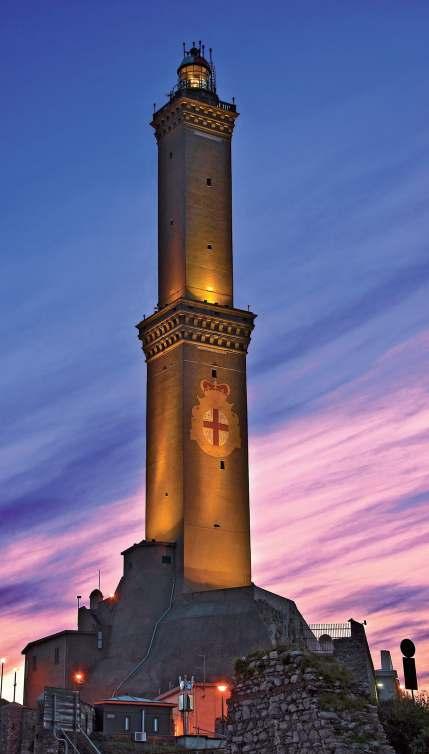

The Parco delle Mura (p. 128), a vast protected natural area on the hills behind the
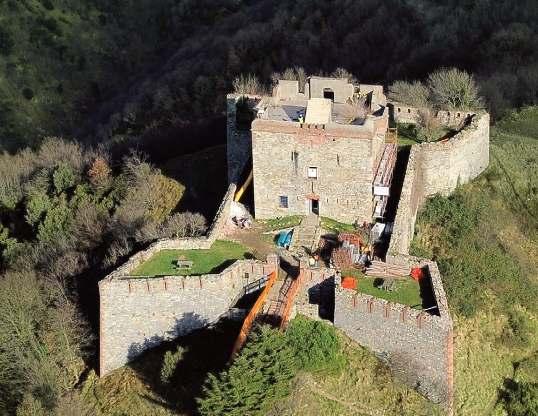
city, includes numerous fortifications erected between the 17th and 19th centuries, around which hiking and biking trails wind with splendid panoramic views of Genoa and the inland valleys. The park is easily accessible from the city centre by the Zecca-Righi funicular or by the historic Genoa-Casella railway (p. 8), which reaches the hinterland from piazza Manin. For hiking enthusiasts, the Historical Aqueduct (p. 130), of Roman origins, is now a pedestrian path of about 28 km winding through the greenery of the Valbisagno. Crossing the magnificent canal bridges and siphon bridges is particularly thrilling.
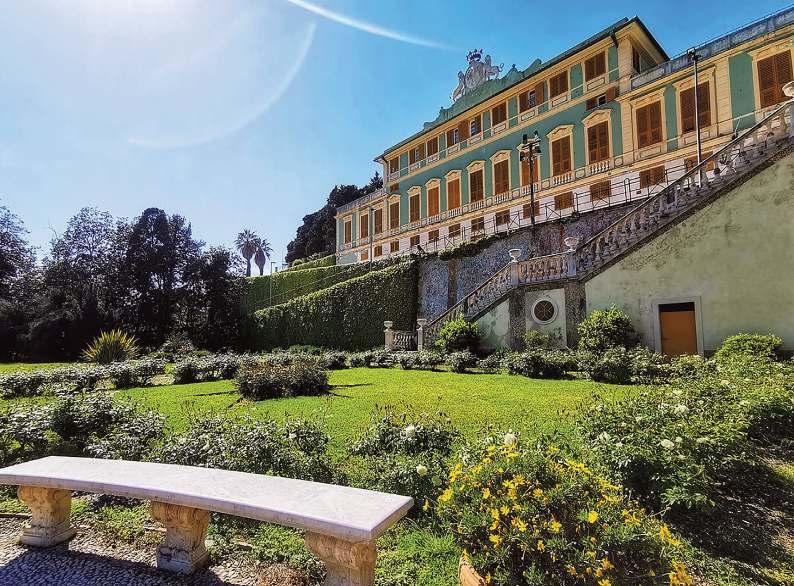
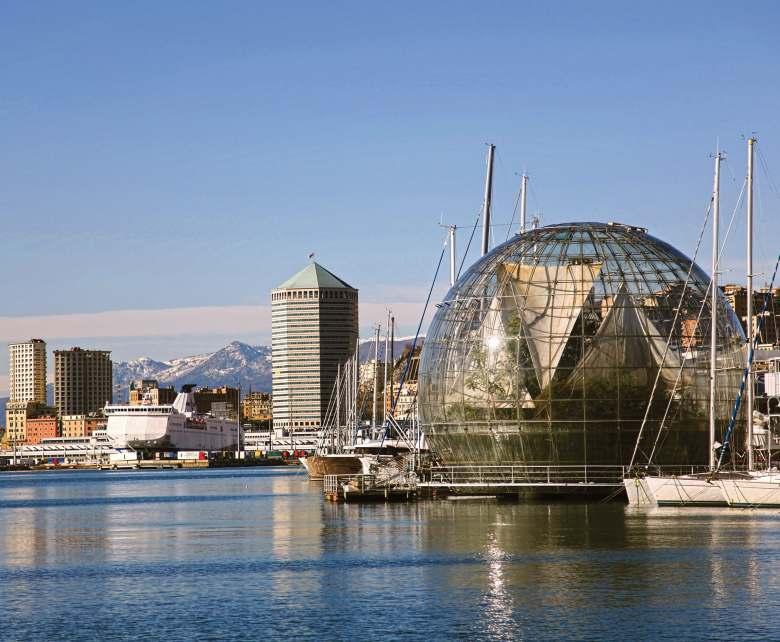


The city of Genoa has been selected by Lonely Planet, the renowned travel guide that has been guiding mil lions of travelers for over fifty years, as the Italian destination among the “Best in Travel” for 2025. The Best in Travel 2025 guide compiles the top destinations to inspire travelers to explore the world more consciously and broaden the spectrum of possible places to discover in the near future.
According to Lonely Planet’s rationale, the Ligurian capital secured fifth place in the top ten cities list (preceded by Toulouse, France; Puducherry, India; Bansko, Bulgaria; and Chiang Mai, Thailand) «thanks to its historic charm, delicious cuisine, and the “electric”
future on the horizon with new sustainable transportation options. In an era where sustainable travel is a priority, Genoa serves as a unique model of the results achievable through a creative interaction between past and present».
Genoa aims for high-quality tourism that values the city’s cultural offerings, gastronomy, and a slow, sustainable experience that invites visitors to discover picturesque views and iconic landmarks of Genoese identity. It is a city that skillfully blends history and innovation, making it ideal for travelers seeking an authentic and meaningful experience. A true hidden gem, waiting to be discovered for the first time and rediscovered later to uncover every hidden corner.
Palazzo Antonio Doria
Palazzo Giorgio Spinola
(sec. XVI)
(sec. XVI) ommaso Spinola To Palazzo (sec. XVI) Palazzo Clemente della Rov T
Palazzo Giacomo Spinola
(dei Marmi - sec. XV)
PalazzoPaoloeNicolòInte
alazzo Gio. Carlo Brignole
ole e
XVI) alazzoStefanoLom ec. XVII) alazzo Giacomo Lom ec. XVI) alazzo Bartolomeo L me Mni lini mellini a c omellino oih ceV olo nirMa ellini llii
(sec. XVI) Ayrolo Palazzo Agostino LO L M A C t nt 5 6 7 (s P P 7 6 5 P (s eriano IHCCEV O atala riano 2 2 2 sec. XVI) alazzo A XVII) E Fra alazzo Gio. Agostino
C
lazzo Antoniotto Ca ncesc ala sec. zzoGio.Francesc ONE N a alazzo alazzoG o Balbi oBalb A E Balbi M attaneo oBalbi o atala
Palazzo Pantaleo Spi (sec. XVI) in (sec. XVI)
(sec. XVI)
PlFL i icin n nola i 8 9 9 8 (s ( (s D B P ni I ZIINNI G MAG A ZIN P P 2 2 T) COT XVO VI) Tl L Ba
vicin
Palazzo Agostino Pallavicin
2 1 0 (sec. XVI)
Palazzo Angelo Giovanni S (sec. XVI)
obia Pallavicino To Palazzo (sec. XVI)
Palazzo Gio. Battista Spino
sec. secXVIIXVII)
alazzoFrancescoBal azzoFrancescoBal sec. XVI) AZZZ ZZ albi (sec. X alb XVII) . XVII) X se
PalazzoFrancoLercar T ri 1 1 1 2 1 0 (s P (s P R Spinola 3 3 3 aI)C V sec. XVI) ec. XVI)
5 4 3 (sec. XVI)
Palazzo Lazzaro e Giacomo (sec. XVI)
Giacomo e Pa alazzo Gi L scoBa l a a zzo e C L EL I DE D NIZIN o IN ec. StfBlbi Co A veD ov D oA PiGP A b lb
Capi lbiPiovera a t aleo antaleo iera Cos ardia lbiP u to G Por di anerta biPiovera ra
OTTON O (Pl
alazzo Cosmo Centu alazzoGi le - sec. XVII) eaale laz GADDA Cos lata
alazzo Giorgio Centu a zzo Stefano l alazzoCosm o urione N ni Riparazi urione (Palazzo avali
Palazzo Nicolosio Lomellin 1 1 1 5 4 3 (s P ola P o (s P no 3 3 3 ec. XVII)
alazzo Gio. Battista Centurione
alazzo Cipriano Pallavicini
alazzoNicolòSpinola(secXVI) ec. XV)
ec. XVII) alazzo Gio. Battista Grimaldi lGiBiGildi alazzo Nicolò Spinola (sec XVI) c. XVI) alazzo Spinola di Pellicceriaalazzo Francesco Grimaldi 0 9 8 M della Palazzo (Palazz Palazz zz (Pa Sale Palazzo e 1 1 2 XVI) se eridiana, ec (P rimaldi mo G rola o Ge co, sec zo Bianco, sec. XVI) aGrimaldi II) . XV c zoLucaGrim se sso, o Ro lazz o B esc zoLu a c a Fran o e fo Rodo n lf
XVI) aldassarreLomellini P Gildi la (sec. XVI) se (P ald zoBald P Municipio - sec. XVI) zo Nicolò Grimaldi (Palazzo L
alazzo Stefano De Mari
8 (s P alazzo (s (s P rignole 3 3 4 ec. XVI) alazzo Ambrogio Di Negro ec. XVI) alazzo Gio. Battista Grimaldi ec. XVI)






















orgio Palazzo S. G Gio 1 o (sec. XIII/XVI c. XIII/XVI)
AL
2 3 I eCH o (s C grE egV Ne Di t z a N Oec nuel l ella Portta ta lla - s - sec. X l a . Pietro in B Banch Di Negro (seec. XV anuel alazzo Ema c. sec. ro Pie Piet . e Filiberto XVI) hi (S. Pietro VII) o OTTONE O e Pietro etro
S.
(s S. Lo ( 4 5 ZZ c G BAanZ ncZ ch
sec.c.X/XII/XVII) X/XII
Maria del aria delle Vig MAAG ZIIN . d oggia di Banchi hi AZ n di g oggi elle XVII) ( a)i I)VV ne NI I (sec. XVI) C DEL . V Z GAZAGAMA
Spinolad ala (Palazzo Spinola d zzo sc Palazzo France e eatro Altrove Te (P T e zo Palazz zz
XVVI) c. XVI sec.
o Grimaldi
di Pellicceria -
(Palazzo del Melo Palazzo Ottavio Im S. Maria Maddale aMaddale )
l Gri C maldi diPellicceria-
ograno - sec. XVI) mperiale ena(secXVI/XV a a ena (sec. XVI/XVII) ena(sec











Chiesa del Gesù (se Porta Soprana (sec. Palazzo Ducale (sec
Palazzo Ottavio Imp Palazzo Ottav ( ) Loggia di Banchi (se (s ( 1 1 c. XVI) periale (Palazzo ec. XVI) ec.
del Melograno – se del M




Palazzo Ambrogio D azzo VI
Di Negro (sec. D
I) XVI)







Doria - sec. XVI) Villa del Principe (Pal (Stazione Marittima -
CommendadiPrè(se


1 0 (sec. XVI)
Palazzo Giorgio Cent PlFG
Palazzo Nicolò Spino 1 1 urione ildi(Pl ola (sec. XVI)
Spinola di Pellicceria
Palazzo Francesco Gr (StazioneMa erminal Croc Te • V WAV PERCORSO A T 1 - sec. XVI) imaldi (Palazzo rittima) ciere E Acquario di G • ario di G Nazario Sauro
Sommergibil Sommerg • Galata M ta • Museo (Stazione Ma Naz Acquario (Sta Genova o e S518 o del Mare












Strada Nuova Museums
Genoa is a city of museums: there are 33 within a 10 km radius, many in exclusive locations with breathtaking views or nestled in green surroundings. There are 8 museum houses and 3 UNESCO World Heritage Sites. For more information, visit the website www.museidigenova.it
In the extraordinary setting of the magnificent “Strada Nuova”, a Renaissance and Baroque thoroughfare established in the mid-16th century to accommodate the residences of the wealthy and powerful city aristocracy, a unique museum route connects three palaces
across various levels, including courtyards, loggias, gardens, and terraces. This route offers many panoramic views of the city and its historic center.
Palazzo Rosso, via Garibaldi 18
A “house-museum” where the charm of a 17thcentury residence comes to life, still housing rich art collections and historical furnishings of the
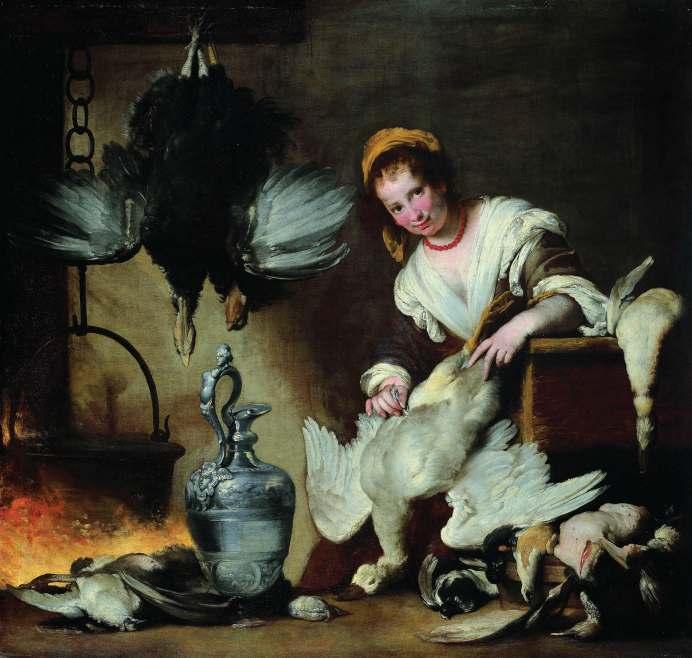
Brignole Sale family. The interiors are sumptuously decorated with frescoes and stuccoes.
Palazzo Bianco, via Garibaldi 11
This is Liguria’s principal art gallery, offering a rich and diverse overview of Ligurian painting from the 16th century, with high-level insights into Flemish, Spanish, and Italian art. The new connection between Palazzo Bianco and Palazzo Tursi passes through the site of the demolished convent of San Francesco di Castelletto, whose remains can still be seen in a unique and evocative setting.
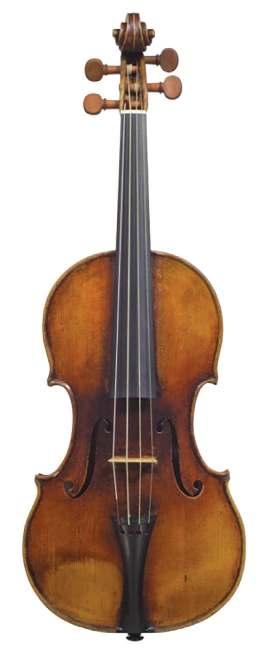
Palazzo Doria-Tursi via Garibaldi 9
Originally the most grandiose private residence built in the city during the “Century of the Genoese”, it now serves as the Town Hall. This marks the conclusion of the path dedicated to 18thcentury painting, offering a rich selection of decorative and applied art: tapestries, Genoese ceramics, coins, and official measures from the ancient Republic of Genoa. The Paganini’s Rooms house the memorabilia and violin of the famous musician: a Guarneri del Gesù (1743).
Opening time: from October 2nd, Tuesday to Friday 9:00-18:30, Saturday and Sunday 9:3018:30; from April 16th, Tuesday to Friday 9:00-19:00, Saturday and Sunday 10:0019:30; closed on non-holiday Mondays. Last entry one hour before closing.
Palazzo Reale, via Balbi 10
Its interiors, complete with original furnishings and artworks, showcase the transition from the 17th century to its transformation into the Savoy royal palace. Visitors can explore masterpieces by Veronese and Van Dyck, the Hall of Mirrors, terraces, and the rooftop garden overlooking the harbor, demonstrating how Genoese noble families transformed wealth into beauty.
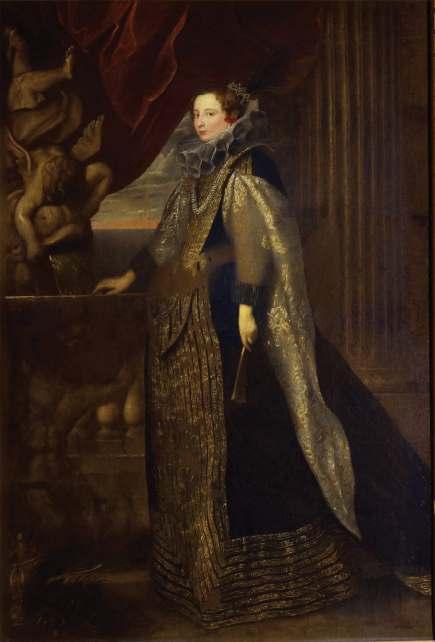
www.palazzorealegenova.cultura.gov.it
Opening time: Tuesday 13:30-19:00, Wednesday to Saturday 9:00-19:00, first and third Sunday of the month 13:30-19:00; closed on remaining Sundays and Mondays.
Last entry at 18:30. Free entrance on the first Sunday of the month.
National Gallery of Palazzo Spinola, piazza Pellicceria 1
A remarkable example of aristocratic housing,
still exhibiting luxurious 16th and 17th-century environments adorned with frescoes, furnishings, oriental textiles, and porcelain. It also features a significant historical painting collection among the city’s most prominent (Rubens, Van Dyck, Antonello da Messina, Grechetto, Valerio Castello). Unexpected spaces include 19th-century historical kitchens and the small yet elegant Hall of Mirrors. ww.palazzospinola.cultura.gov.it
complex. It presents an overview of Genoese sculpture from the 10th to 18th centuries, along with stone artifacts and frescoes. The journey also includes the Augustinian church and the triangular medieval cloister.
Opening time: from May 31st, Monday to Wednesday and Friday 10:00-19:00, Saturday and Sunday 10:00-19:30; from October 1st, Monday to Wednesday and Friday to Sunday 10:00-18:30; closed on Thursday. Last entry one hour before closing.
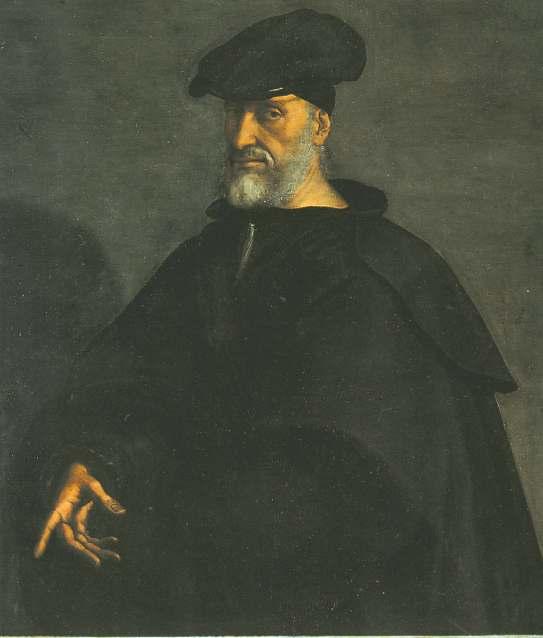
Opening time: Tuesday 13:30-19:00, Wednesday to Saturday 9:00-19:00, first and third Sunday of the month 13:30-19:00; closed on remaining Sundays, holidays, and Mondays. Last entry at 18:30. Free entrance on the first Sunday of the month.
Museum of St. Augustine piazza Sarzano 35
A perfect blend of ancient and contemporary, located within a restored 13th-century convent
del
piazza del Principe 4
This grand 16th-century building, surrounded by an Italianstyle garden and once directly linked to the port, was built for Admiral Andrea Doria and served as the true court of the Genoese Republic. From his palace, immediately outside the ancient San Tomaso gate, towards Capo di Faro where the Lanterna stands, Andrea Doria maintained his influence over the city while remaining distant from the Palazzo Ducale, where the aristocratic oligarchy officially decided the fate of the Republic.
The visit through richly decorated and furnished rooms allows visitors to relive the splendour of the noble family and the Republic itself. www.doriapamphilj.it/genova/ Opening time: Monday to Sunday 10:00-18:00; closed on January 1st, Easter Sunday, and December 25th. Last entry at 17:00.
Belle Arti
largo Pertini 4
The historic building of the Academy, founded in 1751, also houses its museum: paintings, drawings, prints, copperplate matrices, plaster casts, bronze and marble sculptures, architec-
tural elements in stone, plaster and terracotta models, ceramics, a collection of photographs and photographic plates, art volumes, historical furnishings, and medals.
The important art gallery offers a significant testimony of Ligurian art from the 14th to the 21st century.
https:/museo.accademialigustica.it
Opening time: Tuesday to Saturday 14:30-18:30; closed on Sunday and Monday. Free entrance.
Contemporary Art Museum of Villa Croce via Jacopo Ruffini 3
In the setting of a 19th-century villa overlooking the sea and surrounded by a large park, the museum is a reference point for contemporary art in Genoa. The collections consist of over 4,000 works, displayed with anthological selections, documenting modern and contemporary art from the 1930s onwards.
Treasure Museum of San Lorenzo Cathedral, piazza San Lorenzo
A true treasure trove of medieval, Renaissance, and Baroque goldsmithing and silverware, including the famous "Sacred Basin" in green Middle Eastern glass, it is a celebrated example

Opening time: From April 1st, Tuesday to Friday 11:00-18:00; Saturday and Sunday 12:0019:00; from October 2nd, Tuesday to Sunday 11:00-17:00; closed on Monday. Last admission half an hour before closing.
of modern museography housed in the medieval crypt of the cathedral, whose spaces were revisited by the architectural intervention of Franco Albini in 1956.
Opening time: Monday to Saturday 09:00-12:00 and 15:00-18:00; closed on Sunday. Reduced hours in case of special religious functions.
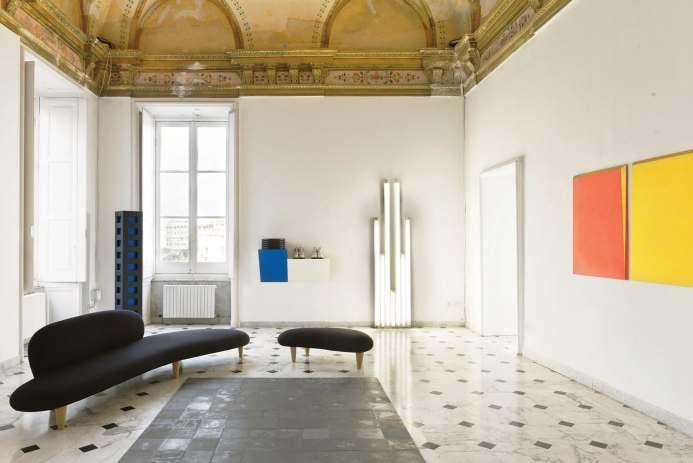
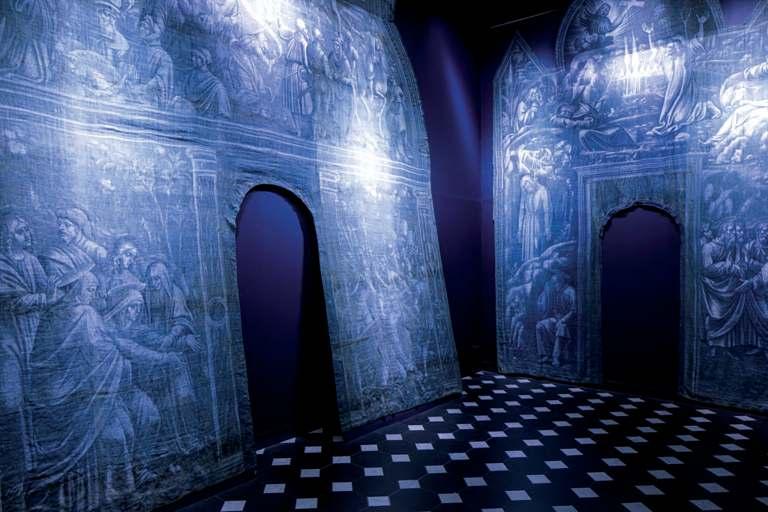
Diocesan Museum via Tommaso Reggio 20 r
Upon entering the museum, you discover a medieval cloister rich in frescoes, built on an ancient Roman domus, and a heritage of paintings and sculptures, textiles, illuminated manuscripts, silversmithing, reliquaries, musical instruments, and an initial archaeological section, to tell the artistic history of the city. Unique in the world is the room of 16th-century Passion Tapestries: 14 large linen cloths dyed with indigo and painted with white lead, considered the forerunners of denim fabric (which owes its name to Genoa). www.museodiocesanogenova.it
Opening time: Monday 10:00-13:00 and 14:0018:00; Wednesday to Sunday 14:00-18:00; closed on Tuesday.
Capuchin Cultural Heritage Museum viale IV Novembre 5
Attached to the Church of SS. Annunziata di Portoria, where the Mausoleum of Santa Caterina Fieschi Adorno is preserved, the museum collects the rich heritage of artistic assets from the Ligurian territories: works by the most famous Genoese painters of the 15th and 16th centuries, precious sacred furnishings and objects of Capu-
chin poor craftsmanship such as altar frontals, wooden sculptures, cribs, and silverware. www.bccgenova.it/
Opening time: open to the public during exhibitions Tuesday to Sunday 15:00-18:30; Thursday 10:00-13:00and14:30-18:30;closedonMonday.
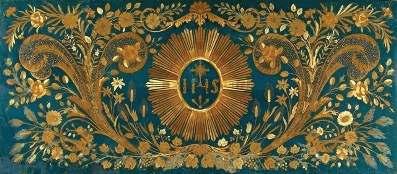
Jewish Museum, via Giovanni Bertora 6 It preserves the works of the “Journey into the Jewish World” collection by Emanuele Luzzati, donated by the artist to the Jewish Community of Genoa. Visits also include access to the Main Synagogue, used during the summer period and on major holidays, as well as the Minor Synagogue, where the original wooden furnishings from the 18th century are housed, originally located in the old Synagogue of Mura della Malapaga until 1935. The museum is temporarily closed.
Museum of Oriental Art E. Chiossone piazzale Giuseppe Mazzini 4
In the 19th-century park of Villetta Di Negro, facing the sea, stands a rationalist-style building,

specially designed by Mario Labò to house the collection donated to the city of Genoa by Edoardo Chiossone, a skilled Genoese engraver who lived in Tokyo from 1875 to 1898 and worked at the Paper and Values Office of the Japanese Ministry of Finance. The museum named after him is the first in Italy dedicated to Japanese art, founded in 1905, and it houses the largest, most precious, and varied collection of Japanese art in Italy and one of the most important in Europe.
Opening time: From October 2nd, Tuesday to Friday 09:0018:30, Saturday and Sunday 09:30-18:30; from April 16th, Tuesday to Friday 09:00-19:00, Saturday and Sunday 10:0019:30; closed on non-holiday Mondays. Last admission half an hour before closing.
text of undisputed beauty: the Galleria d’Arte Moderna di Villa Saluzzo Serra, the Raccolte Frugone di Villa Grimaldi Fassio, the Museo Giannettino Luxoro, and the Wolfsoniana are the cultural stops of a pleasant walk within the large public historical parks, with Mediterranean and exotic plants, connected to the famous rose garden of Villa Grimaldi Fassio, from which the magical presence of the sea is felt.
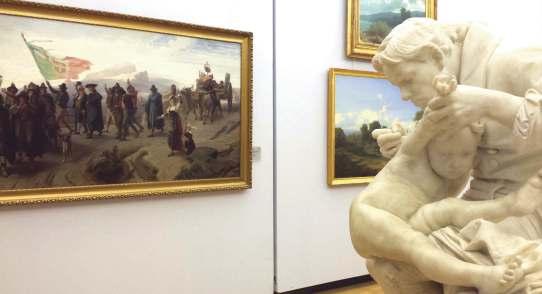
GAM - Gallery of Modern Art
Villa Saluzzo Serra, via Capolungo 3
Palaces and villas, prestigious venues of important museums, enhance a landscape and natural con-
Located in a 16th-century noble residence set in the magnificent parks with a sea view, expanded and decorated between the mid-18th century and the early 20th century, the museum exhibits
a selection of over three thousand pieces that make up the collections of the civic Galleria d’Arte Moderna, born from Prince Odone di Savoia’s donation in 1866, with paintings, sculptures, drawings, and engravings that tell the extensive and fertile period that stretches from the 19th century to the present day.
Opening time: From October 2nd, Tuesday to Sunday 11:00-17:00; from April 1st, Tuesday to Friday 11:00-18:00, Saturday and Sunday 12:0019:00; closed on Monday. Last admission half an hour before closing.
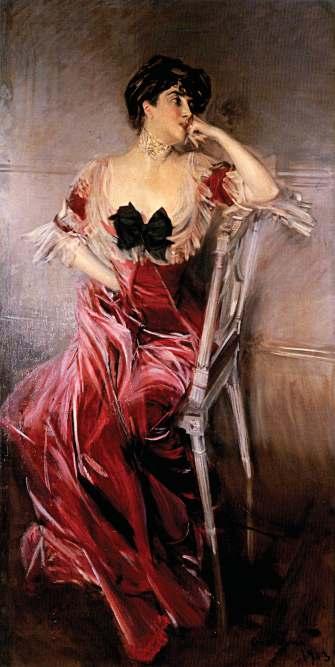
Villa Grimaldi Fassio, via Capolungo 9
The villa surrounded by parks houses the collections of the entrepreneurial brothers Lazzaro and Luigi Frugone, donated to the city in 1935 and 1953 respectively. Paintings, marbles, and bronzes that testify to the vibrant national and
international Belle Époque atmosphere between the late 19th and early 20th centuries, including three extraordinary works by Giovanni Boldini.
Opening time: From October 2nd, Tuesday to Friday 09:00-18:30, Saturday and Sunday 09:30-18:30; from April 16th, Tuesday to Friday 09:00-19:00, Saturday and Sunday 10:0019:30; closed on Monday. Last admission half an hour before closing.
Wolfsoniana, via Serra Gropallo 4
The collection, created by the American philanthropist Mitchell “Micky” Wolfson Jr and donated to the city, consists of a wide range of materials: paintings, sculptures, furniture, complete furnishings, glass, ceramics, wrought iron, silver, textiles, architectural drawings, graphics, posters, and advertising materials, sketches and drawings, books, and magazines. It focuses mainly on decorative and propaganda arts from 1880 to 1945, a period in which artistic expressions closely dialogue with the political, social, economic, technological, and aesthetic context in which they emerged. Opening time: from October 2nd, Tuesday to Sunday 11:00-17:00; from April 1st, Tuesday to Friday 11:00-18:00, Saturday and Sunday 12:00-19:00; closed on Monday. Last admission half an hour before closing.
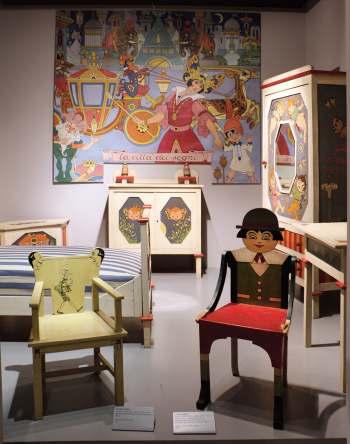
viale Mafalda di Savoia
Visiting this delightful villa gives the illusion of entering a still inhabited residence, in which the Luxoro family has scattered their extraordinary collections. Crossing the various rooms, you notice how the suggestive coastal landscape frames Genoese school paintings of the 17th and 18th centuries, precious night clocks from the late 17th century, 18th-century furniture and furnishings, silversmithing, ceramics, and the collection of nativity scene figurines.
Opening time: Tuesday to Sunday 11-17; closed on Monday. Last admission 16:30.
Museum of Ligurian
Villa Durazzo Pallavicini, via Ignazio Pallavicini 13
Housed in the ancient noble residence of Pegli, the museum recounts the events, climatic, environmental, economic, and technological changes of more than one hundred thousand years, from prehistory to the ancient age of a territory that has always been a place of passage and meeting of peoples, cultures, and ideas between Europe and the Mediterranean. Among the most famous exhibits, the burial of the Prince of Arene Candide, the Polcevera Table, the sarcophagus of Pasherienaset.
Opening time: from October 2nd, Tuesday to Friday 13:00-18:30, Saturday and Sunday 9:30-18:30; from April 16th, Tuesday to Friday 13:00-19:00, Saturday and Sunday 10:0019:30; closed on Monday. Last admission one hour before closing.
Museum of Risorgimento via Lomellini 11
Located in the birthplace of Giuseppe Mazzini, this museum preserves and exhibits a rich heritage of historical, artistic, and documentary materials that bring to life the symbolic figures of the Risorgimento: Giuseppe Mazzini and the republicananddemocraticmovement;Giuseppe Garibaldi and the Redshirts; Goffredo Mameli and the Italian national anthem. The exhibition traces the historical events that led to the Unification of Italy, from the anti-Austrian Genoese
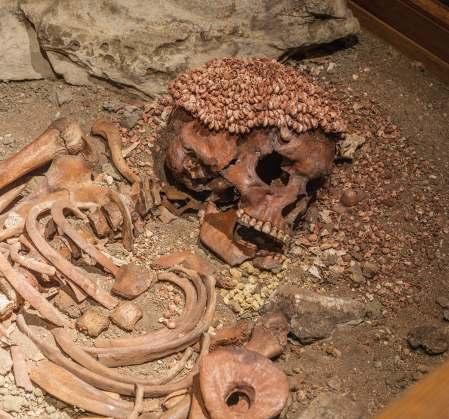
revolt of 1746 to the inauguration of the Monument to the Thousand in Quarto in 1915. Opening time: from November 1st, Tuesday 9:00-14:00, Wednesday to Friday 9:00-18:30, Saturday and first Sunday of the month 9:3018:30; from April 16th, Tuesday 9:00-14:00, Wednesday to Friday 9:00-19:00, Saturday and first Sunday of the month 10:00-19:30; closed on Monday.

Columbus’ House, via di Porta Soprana
On the ascent to Porta Soprana, the gateway to the medieval city from the East, stands the small two-story dwelling identified as Christopher Columbus’ family home from 1455 to 1460, when he was between 4 and 9 years old. It is a small memorial to the great navigator, where panels and materials tell his story and, above all, his daily life.
Opening time: from October 1st, Tuesday to Friday 10:00-17:00, Saturday and Sunday 10:00-17:30; from April 1st, Tuesday to Friday 10:00-18:00, Saturday and Sunday 10:0019:00; closed on Monday.
via del Seminario 10
One of the few Italian museums dedicated to theatre and performance. Established in 1966, it is now a foundation for the historical and critical study of theatre, stage art, and the conditions of the Italian actor. The archive preserves thousands of autographs, photographs, scripts, sketches, costumes, caricatures, original drawings, posters, playbills, and cuttings. Visitors can admire studies of Gilberto Govi, Tommaso Salvini, Alessandro Fersen, Sabatino Lopez, along with other interesting memorabilia, as well as an important collection of theatrical costumes.

piazza della Commenda 1
Set up in one of the city’s oldest medieval buildings, originally housing pilgrims, this fully multimedia museum tells the story of Italian migrations to the world. The visitor’s journey passes through 16 areas that trace the stories of migrations from the Unification of Italy to the contemporary era, through a chronological order enriched with thematic insights. www.museomei.it
Opening time: from October to May, Tuesday to Friday 10:00-18:00, Saturday and Sunday 11:00-19:00; from June to September, Tuesday to Friday 11:00-18:00, Saturday and Sunday 11:00-19:00; closed on Monday. Last admission one hour before closing.
Opening time: Library section Monday, Wednesday, and Friday from 9:00 to 13:00. Guided tours of the Museum and access to the Archive are by appointment only (tel. 010 5576085).
via al Porto Antico 4
The exhibition path is thematic and chronological: through two centuries of history, it relates sport, culture, and society thanks to exciting interactive and multimedia installations and hundreds of relics, trophies, documents, and photographs. www.fondazionegenoa.com
Opening time: Tuesday to Sunday 10:0019:00; closed on Monday. Last admission one hour before closing.
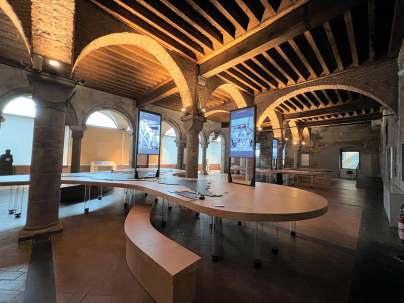
State Archive, via Santa Chiara 28 r
Set within the monumental complex of Sant’Ignazio, the State Archive of Genoa preserves thousands of documents produced by the magistracies that have governed the city since the 11th century: the Commune, the aristocratic Republic, the Napoleonic Empire, the Kingdom of Sardinia-Piedmont, the Kingdom of Italy, the Italian Social Republic, the Italian Republic, as well as the Archive of the Casa delle Compere e dei Banchi di San Giorgio, some archives of private families, and acts notarized by Genoese notaries since 1154. The Archive organizes exhibitions, lecture series, and guided tours.
www.archiviodistatogenova.beniculturali.it
Historical Archive of the Municipality
piazza Giacomo Matteotti 10
The oldest part of the collection consists of the funds of the magistrates appointed under the Republic of Genoa for the administration and provisioning of the city: the Fathers of the Commune, the Censors, the Abundance, and the Wine Provisors. Also preserved are a collection of manuscripts relating to the history of
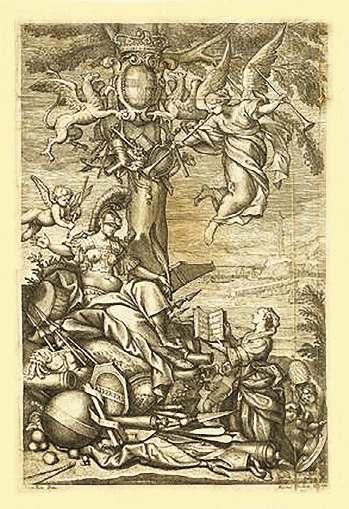
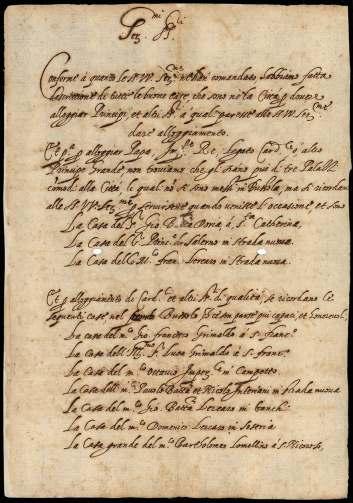
Genoa (15th-18th centuries), documents from the Captaincy of Voltri (16th-18th centuries), a curious collection of autographs (16th-20th centuries), the archives of municipalities annexed to Genoa in 1926, and the archives of the Brignole Sale and De Ferrari families. Opening time for archival fund consultation: Tuesday to Thursday 9:00-13:00 by appointment (tel. 010 5574808).
Docsai Centre
via ai Quattro Canti di San Francesco 49-51 Located in the premises of Palazzo Rosso, the centre offers the most important library of art history in Liguria. The topographic and cartographic collection includes about 8,000 pieces of ancient prints, watercolors, paintings, and projects; the photographic archive offers a glimpse into the economic, social, and artistic life of the city from the mid-19th century to the 1960s.
Library opening time: Tuesday to Thursday 9:00-16:00 by appointment; Topographic and Cartographic collections (tel. 010 5574961/59/57) and Photographic archive (tel. 010 5574963/62): Tuesday to Thursday 9:00-16:30, Friday 9:00-14:00.
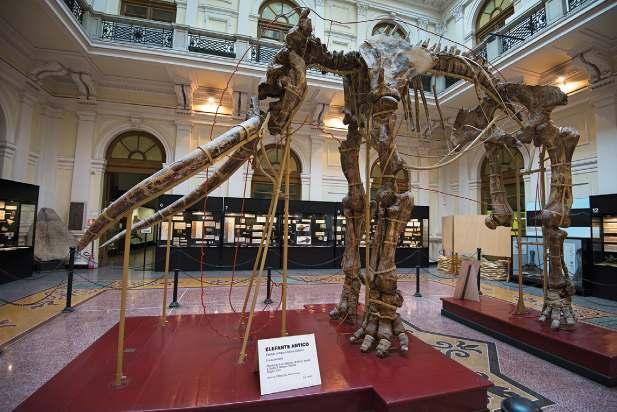
Natural History Museum G. Doria
via Brigata Liguria 9
Established in 1867, this is the city’s oldest museum, housing 4.5 million specimens and artifacts from around the world: animals, fossils, plants, and minerals. Over 6,000 items are displayed across 23 rooms dedicated to pale-
ontology, mammals, birds, reptiles, amphibians, fish, insects, and minerals. The cell room features a three-dimensional reconstruction of a cell enlarged 100,000 times. The rich visitor experience offers a journey through the planet’s biodiversity and is particularly appealing to children, teens, and families.
Opening time: from October 2nd, Tuesday to Sunday 10:00-18:30; from April 16th, Tuesday to Friday 9:00-19:00, Saturday and Sunday 10:00-19:30; closed on Monday. Last entry half an hour before closing.
Galata Maritime Museum
calata De Mari 1
Located near the Genoa Aquarium, Galata stems from a historical and environmental redevelopment project of the ancient Darsena area and the Arsenal of the Republic. The
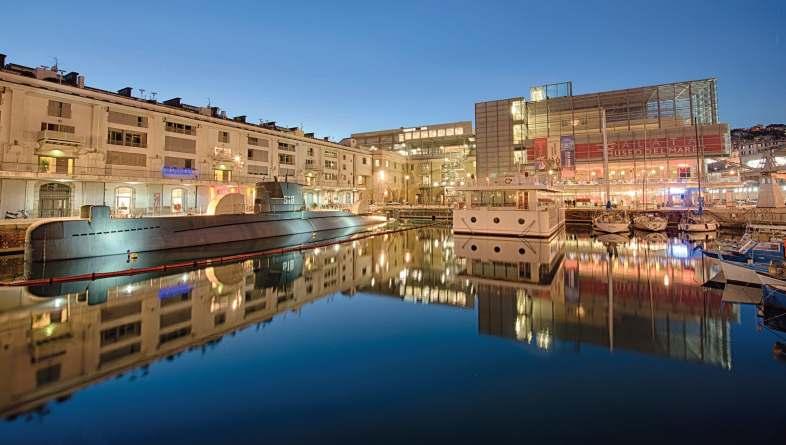
museum tour spans the main building and the museum’s waterfront area, where the submarine Nazario Sauro is moored, the only one in Italy open for sea visits. Inside, visitors traverse environments with scenic displays that create an evocative context for the precious collections: paintings, medieval nautical charts, atlases, onboard instruments, and models. www.galatamuseodelmare.it
This unusual museum-residence, housed in a neo-Gothic castle, offers a unique opportunity to enter the home of Captain Enrico Alberto D’Albertis, its creator. Travelling by sea and land across five continents between the 19th and 20th centuries, he encapsulated his world in a romantic setting, featuring “rooms of wonders”, maritime inspirations, Colombian evocations, and colonial trophies.
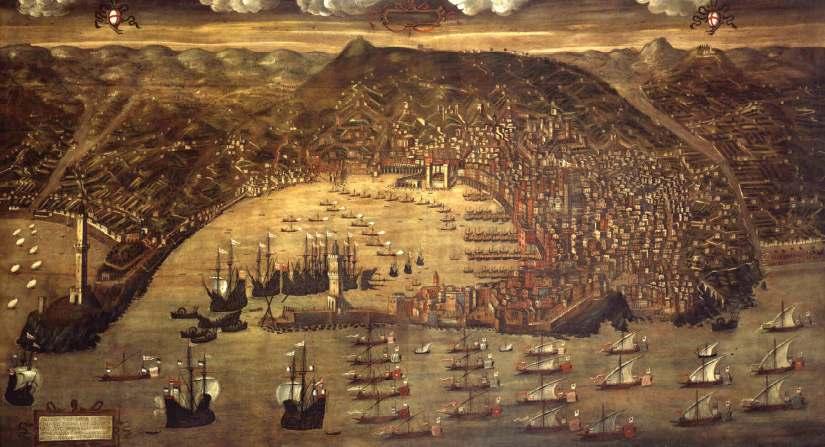
Opening time: from November to February, Tuesday to Friday 10:00-18:00, Saturday, Sunday and holidays 10:00-19:00, closed on Monday; from March to October, Monday to Sunday 10:00-19:00. Last entry one hour before closing.
Pegli Maritime Museum
Villa Centurione Doria, piazza Bonavino 7
The building houses valuable geographic maps, paintings, drawings, naval models, construction and navigation instruments, and documents on ancient shipyards and craft workshops.
The museum is temporary closed; new routes and activities are under consideration for a future reopening.
D'Albertis Castle Museum of World Cultures, corso Dogali 18
Opening time: from October 1st, Tuesday to Friday 10:00-17:00, Saturday and Sunday 10:00-18:00; from April 1st, Tuesday to Friday 10:00-18:00, Saturday and Sunday 10:0019:00; closed on Monday. Last entry one hour before closing.
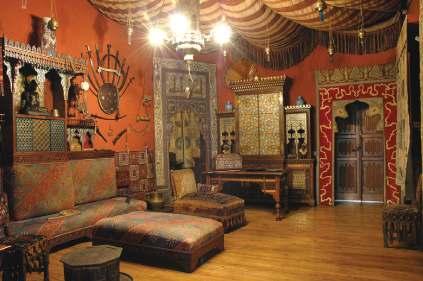

In 1576, the Senate of the Republic of Genoa established lists known as “Rolli” for public lodgings, which included the city’s main aristocratic palaces. In the previous years, Genoese aristocratic families had extensively renovated many of the ancient residences in the historic centre, while the most prominent families built new, opulent residences on Strada Nuova, now known as via Garibaldi. Due to political and logistical reasons preventing state guests from staying at the Palazzo Ducale, owners of palaces listed in the Rolli were obliged to host – drawn by lot each time – diplomats, dignitaries, and visiting aristocrats in their residences, covering all representation expenses. The palaces were classified into three different categories based on their size, grandeur of the building, the prestige of the guest, and the social and economic importance of the owner. Genoa’s unique model of public hospitality gained renown across Europe thanks to its international guests, such as the renowned Flemish painter Peter Paul Rubens, who celebrated its palaces in a volume published in Antwerp in 1622. Since 2006, UNESCO has recognized the splendid Renaissance and Ba-
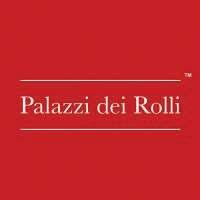
roque palaces of Genoese aristocracy as a World Heritage Site, officially named “Le Strade Nuove and the system of the Palazzi dei Rolli”. The UNESCO site comprises 42 palaces among over a hundred still existing in the city’s historic centre.
Many of these buildings are privately owned, serving as offices or residences for noble families, though several are open for visits throughout the year. Some have been converted into museums, while others house institutions that allow partial visits. Private palaces host exhibitions and cultural events. Walking through the historic centre, visitors can admire the decorated atriums and courtyards of these palaces. Since 2009, “Rolli Days” have been organized on select weekends, during which many public and private palaces open their doors to the public for guided tours led by knowledgeable guides. Visitors can also explore palaces outside the Rolli system, churches, and noble villas.
For more information, visit: www.rolliestradenuove.it www.palazzideirolli.it https://landing.visitgenoa.it/rollidays-online/

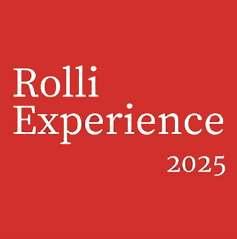
Rolli Experience It is a cultural initiative that offers an immersive weekend among the prestigious Palazzi dei Rolli, the splendid noble residences of Genoa, recognized as UNESCO World Heritage Sites. In the second half of the 16th century, these palaces were part of a unique public hospitality system. This enchanting experience is designed for those who wish to stay in Genoa, stepping into the shoes of a guest of the ancient Republic, through a rich program of exclusive events, including art, beauty, history, and flavors.
The offer includes a two-night stay in selected accommodations, primarily located within the Palazzi dei Rolli, thematic guided tours of the historic center of the
city, enogastronomic presentations, and visits led by expert scientific communicators.
To enhance the experience, there will also be musical entertainment, tastings, and themed dinners among the precious furnishings and frescoed ceilings of these spectacular Genoese noble residences.
The special Rolli Experience Tourist Card is also included. The card, which is completely free, can be activated and used during the same weekend as the Rolli Experience or, if preferred, at a later time up to and including June 30, 2025. It is valid for 72 hours from the moment of activation and grants access to some of the city’s most significant cultural and tourist attractions:
Palazzo Ducale, Musei di Strada Nuova, climb to the towers of the Cathedral of San Lorenzo, Basilica of Carignano, Lanterna, Galata Maritime Museum + Nazario Sauro submarine, Columbus House, MEI - National Museum of Italian Emigration, Royal Palace, Palazzo Spinola Galleries, D’Albertis Castle - Museum of World Cultures, Museum of Oriental Art E. Chiossone, Villa Croce Museum of Contemporary Art, Museum of Risorgimento, Museum of Natural History, Museum of Sant’Agostino, Wolfsoniana, Frugone Collections, GAM - Gallery of Modern Art, Museum of Ligurian Archaeology as well as the use of the city’s public transportation network (AMT).
The Rolli Experience will take place on the following dates:
January 2025: Friday 17 - Saturday 18 - Sunday 19
February 2025: Friday 14 - Saturday 15 - Sunday 16
For information and reservations: www.visitgenoa.it/en/rolli-experience-0
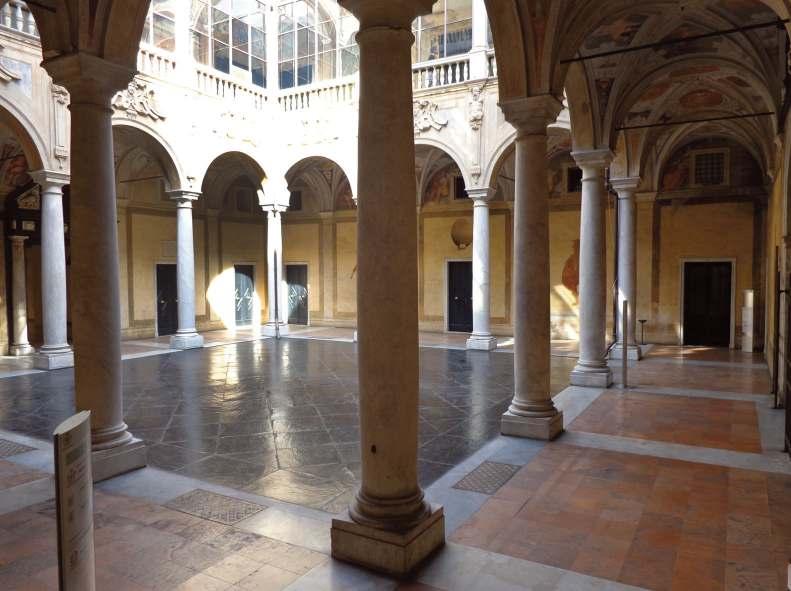
Largo Lanfranco 1
Public Use: Prefecture
Antonio Doria, an exceptional patron, was among the first to introduce Renaissance architectural models to the city. The palace’s design, built just before the mid-16th century on an area adjacent to the first city walls, was likely defined by the Lombard Bernardino Cantone, who soon after worked on the construction of many palaces in Strada Nuova. The representative heart of the residence is the atrium-courtyard system, overlaid by the gallery of the first floor loggia; notable are the decorations commissioned by Doria from leading artists of the time. Acquired by the Municipality of Genoa in 1876, the palace underwent significant adjustments and modifications following the opening of via Roma.
Piazza Rovere 1
In the early 1580s, Clemente della Rovere had his palace erected in the urban area connecting piazza Fontane Marose, and therefore
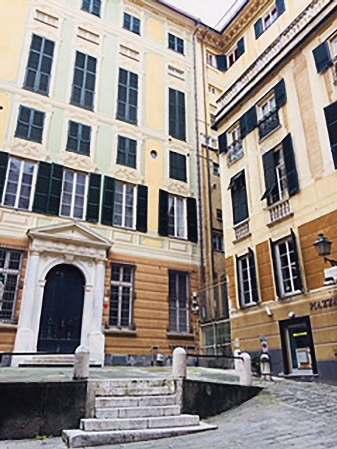
Strada Nuova, with the Acquasola gate of the 16th-century city walls. Overlooking a small square, the palace features complex architecture, formed by two distinct building units. Owned by Francesco Maria della Rovere, Doge in 1765-1767, the palace underwent significant interior revisions, enriched with stucco decorations, “French-style” furniture, and a notable collection of paintings. It is currently used as private residences.
3. Palazzo di Giorgio Spinola
Salita Santa Caterina 4
Built around the mid-16th century, the palace was constructed in an area contiguous to the convent of the Clarisse of Santa Caterina and adjacent to piazza Fontane Marose. The layout of the building was crucially influenced by direct contact with Renaissance architectural and decorative innovations, which were taking shape in neighbouring workshops at the time. In this context, the spectacular sequence of atrium-courtyard-nymphaeumstaircase can be inserted, organized on two different levels, ending with a nymphaeum
decorated with natural rocks, limestone concretions, and a statue of a satyr. Behind the nymphaeum, the monumental staircase forms a true scenic backdrop. It is currently used as private office space.
4. Palazzo di Tomaso Spinola
Salita Santa Caterina 3
Built for Tommaso Spinola according to the design by Giovanni Battista Castello, known as “il Bergamasco”, between 1558 and 1561, the palace was erected in what was then piazza degli Spinola in Luccoli, near piazza Fontane Marose and Strada Nuova, at the time real construction sites for the city’s Renaissance updates, and included in the third bussolo of the 1664 rollo. The facade is richly defined by stuccoes executed by Andrea Aprile da Carona following Bergamasco’s design, featuring herms, masks, garlands of flowers, and fruit. The internal decoration is of great interest, mostly carried out by the Semino workshop in the main rooms of the noble first floor. The palace is currently used as residential and office space.
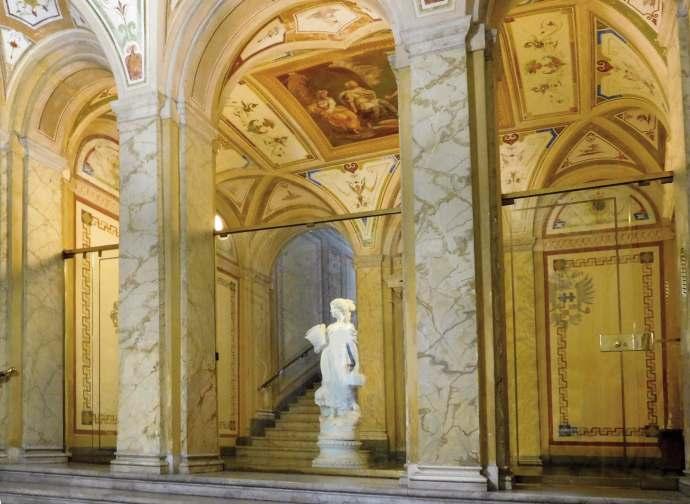
5. Palazzo di Giacomo Spinola
Piazza Fontane Marose 6
Overlooking the short side of today’s piazza Fontane Marose, once piazza di Luccoli, the palace was built around the mid-15th century by the Spinola family, who owned it until the early 19th century. The facade features the characteristic alternation of bichrome bands of white Carrara marble and typical stone from Promontory. In memory of the family’s ancestors, five statues were placed in special niches, the last of which is not well identified, depicting, from left to right, Oberto, Corrado, Opizzino, Calvot. After a long series of modifications due to the opening of via Carlo Felice, today’s via XXV Aprile, and the reor-
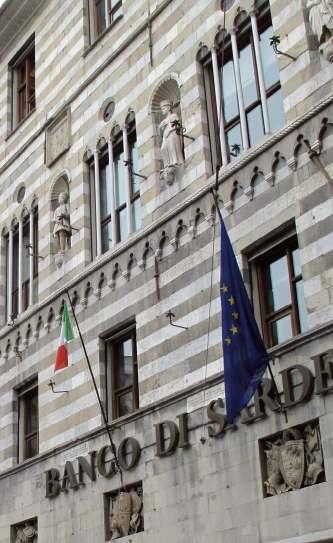
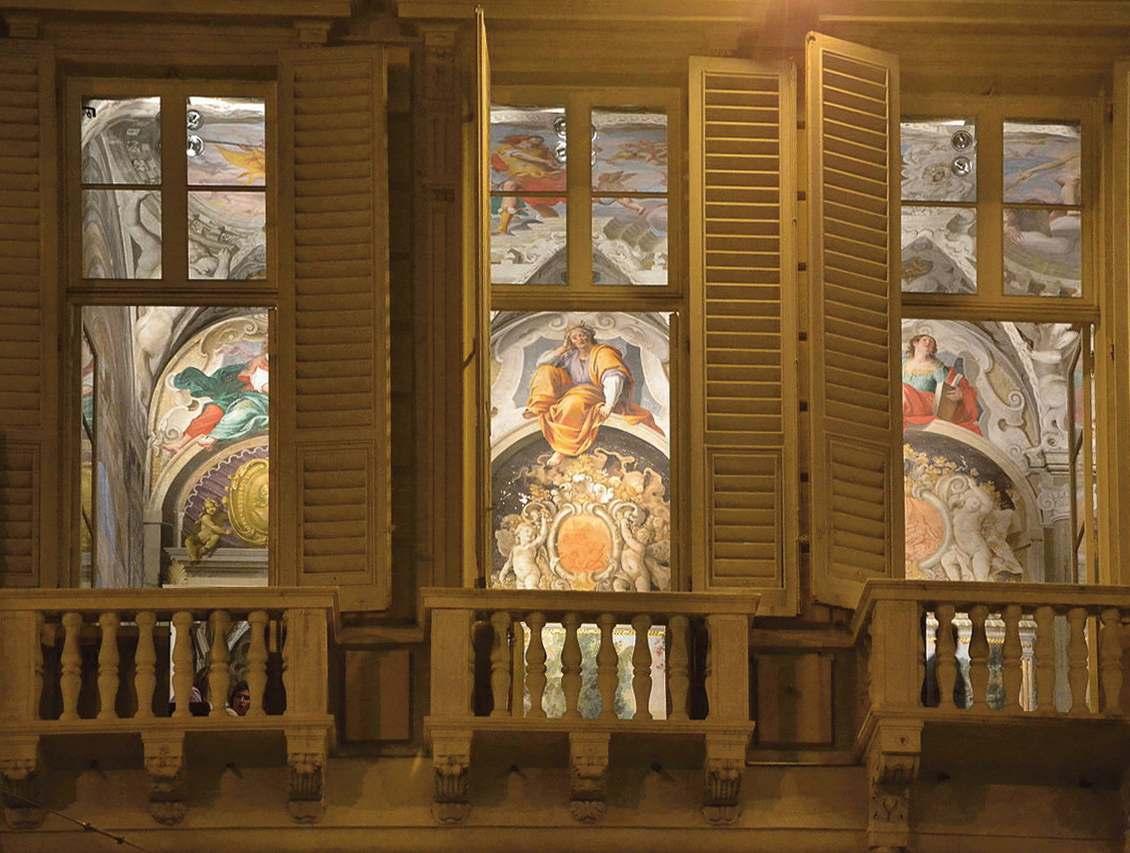
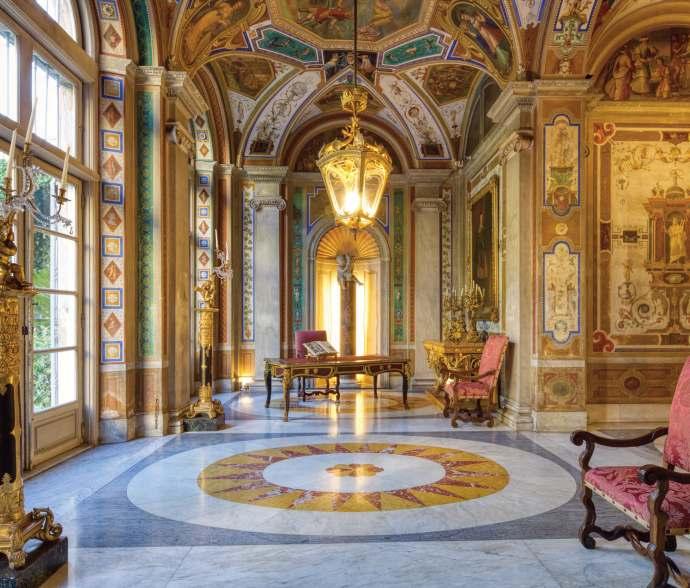
ganization of ground levels, the building was purchased by a credit institute between the late 1980s and early 1990s of the last century and underwent a general restoration by architects Tommaso Badano and Lionello Calza.
6. Palazzo di Agostino Ayrolo
Piazza Fontane Marose 4
In its current form, the palace is the result of various construction interventions that took place between the 16th and 19th centuries. In the late 17th century, it passed to the Negrones, who remain its owners to this day. The building underwent a major renovation at the end of the 18th century when Antonio Barabino oversaw a general restructuring of the facade facing the square. Due to the area’s development and the opening of via Carlo Felice (now via XXV Aprile) between 1825 and 1828, Carlo Barabino constructed the second entrance portal, modeled after
the existing architecture. The interior boasts significant decorative richness commissioned by Agostino Ayrolo. Around 1700, Gio Antonio Negrone commissioned Domenico Parodi to paint the fresco on the ceiling of a room titled The Glory of the Negrone Family.
7. Palazzo di Paolo e Niccolò Interiano
Piazza Fontane Marose 2
Located in a particularly important area for the city’s urban development, on the outskirts of Strada Nuova, in an area of orchards owned by the Spinola family, the palace was built between 1565 and 1567 at the behest of Paolo Battista and Niccolò Interiano by Francesco Casella, who worked on the remains of a pre-existing structure. Thanks to its magnificence, the palace was included by Peter Paul Rubens in his collection dedicated to the Modern Palaces of Genoa, as well as
being listed in all the Rolli lists. The building had various owners: by the late 17th century, it passed to the Grimaldi Pasqua, who expanded it towards the mountainside; the last change of ownership assigned it to the Pallavicino family, who still own it today. Particularly interesting is the facade facing the square, entirely painted by the Calvi brothers Lazzaro and Pantaleo, as a means of communication and magnification of the figure of one of the two patrons, Niccolò Interiano, elected Governor of the Republic in those years.
8. Palazzo di Agostino Pallavicino
Via Garibaldi 1
The first building to open Strada Nuova on the uphill side, the palace was built at the behest of Agostino Pallavicino starting in 1558 and was soon included in the 1576 Rolli at the first bussolo. The palace, the work of Bernardino Cantone, overlooks the street with a strongly structured architectural
facade. The refined white marble portal features a broken pediment accommodating the shield with the family coat of arms. The usual optical perspective that saw the development of atrium, courtyard, and garden sequence (lost following the opening of the vehicular tunnels of Portello) is today altered by the installation that the credit institute, the current owner, gave to the courtyard by closing it with a roof. Of great interest is the fresco decoration depicting ancient history episodes by Andrea and Ottavio Semino. With the opening of via Interiano, traced by architect Ignazio Gardella senior in 1854, the palace was cut on one side and covered with a stone and marble facing modelled on the pre-existing facade.
9. Palazzo di Pantaleo Spinola
Via Garibaldi 2
The palace, the first on Strada Nuova on the downhill side, was built by architect Bernardo

Spazio and master Giovanni Pietro Orsolino on commission by Pantaleo Spinola. Completed in 1564, the residence was included in the first of the Rolli lists in 1576, at the first bussolo. Passed to the Spinola of Tassarolo in 1563 and shortly after to Andrea Spinola of the lords of Arquata, it underwent significant structural changes in the third decade of the 17th century. Unlike other palaces, the building faces Strada Nuova with a plain facade, simply plastered and devoid of any decoration except for the white marble portal, surmounted by statues of Prudence and Vigilance. Passing ownership through the Giustiniani, Cambiaso, and then Gambaro families during the 19th century, in 1823 the palace became the property of a credit institute, which made further modifications.
10. Palazzo di Franco Lercari
Via Garibaldi 3
Built between 1571 and 1578 for Franco Lercari, a powerful Genoese politician and banker in the service of Charles V, the palace’s magnificence led to its inclusion in the Rolli lists from 1576, always in the first bussolo. It passed into the possession of the Parodi family in 1845, who still own it. Treated with rustication, entirely made of Finale stone, the building is marked by Doric order pilasters with “rustic” diamondpoint rustication and opened at the marble portal, created by Taddeo Carlone and composed of two telamons with broken noses, a direct reference to the unique event that saw Megollo Lercari, ancestor of the patron and mirror of his own virtues and negotiation skills.
11. Palazzo di Tobia Pallavicino
was built at the behest of Tobia Pallavicino, a knowledgeable financier updated on the latest Roman innovations who built his wealth on the alum monopoly of Tolfa. Purchased in 1704 by Giacomo Filippo Carrega, the palace was expanded and raised: it
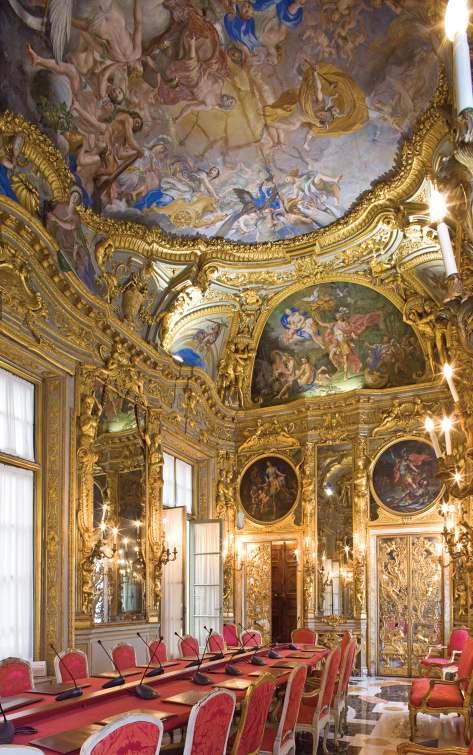
Via Garibaldi 4
Designed by architect Giovanni Battista Castello, known as “il Bergamasco”, the palace
is in this context that the complex decorative scheme by Lorenzo De Ferrari – here as designer, painter, and decorator – was implemented between 1734 and 1744. The extraordinary golden gallery stands at the conclusion of the expansions towards the valley and becomes the new place of representation for the magnificence of the family.
Transferred to the Cataldi family in 1830 and finally in 1922 to the Chamber of Commerce, which still owns it today, the palace underwent a general revision of its spaces by architect Giuseppe Crosa di Vergagni.
12. Palazzo di Angelo Giovanni Spinola
Via Garibaldi 5
Built from 1558 at the behest of Angelo Giovanni Spinola of Luccoli, banker to the King and Ambassador of the Republic, the palace, the work of architect Giovanni Ponzello, was soon expanded and immediately included in the 1576 Rolli at the first bussolo. Passed into ownership in the early decades of the 20th century to credit institutions, which still own it today, the compact block of the building is “pierced” illusionistically by a wide facade, which overlooks Strada Nuova with an important fresco decoration with lively polychromy, the work of the Lazzaro and Pantaleo Calvi and Semino. Particularly interesting are the
frescoes of a room on the noble floor overlooking the garden uphill from the palace, recently rediscovered and restored by Lazzaro Tavarone, depicting the palace itself in its complete decorative attire as well as some aspects of the garden in its original form.
13. Palazzo di Gio Battista Spinola
Via Garibaldi 6
Built around 1563 on commission from brothers Andrea and Gio Batta of the Spinola family branch of Vergagni – the third palace of the family on Strada Nuova – passed to the Doria, current owners, in 1723. The imposing cubic volume faces directly onto the street, while the spatial organization of the ground floor is based on the optical axis that provides direct visual communication between the garden and the atrium, passing through the colonnaded courtyard. The naval bombardment ordered by Louis XIV the Sun King in 1684 caused extensive damage to the building, which saw the reconstruction of the facade and a general refurbishment of its spaces. Inside, fresco decorations stand out, executed by Andrea Semino, entirely dedicated to the exploits of the Spinola family.

Via Garibaldi 7
Built between 1563 and 1569 by Nicolosio Lomellino, whose fortune came from coral fishing on the island of Tabarca, over the centuries the palace underwent several changes in ownership that contributed to defining its architectural
and decorative aspects today; in 1865 it was acquired by Baron Andrea Podestà and finally by the Bruzzo family, who still owns it. Enrolled from the outset in the first bussolo of the Roll of 1576, it was thus worthy of hosting popes, kings, and emperors. Built by Bernardino Cantone on a project by Giovanni Battista Castello “il Bergamasco”, the palace, organized over two noble floors, opens onto Strada Nuova with an extraordinary sequence of atrium-androne-courtyard and with a facade entirely decorated in stucco, unique throughout the street. The spectacular nym-
Via Garibaldi 10
The palace was built starting from 1583 for the two Spinola brothers, Giacomo and Pantaleo, according to a project that combines two specular houses accessed from the street through two identical portals, embellished with marble and Finale stone. The two residences differ in internal decorations, commissioned by the various owners over time. In 1624, Lazzaro Tavarone frescoed for the Adorno family emblems in the spaces of the atrium and the noble floor;
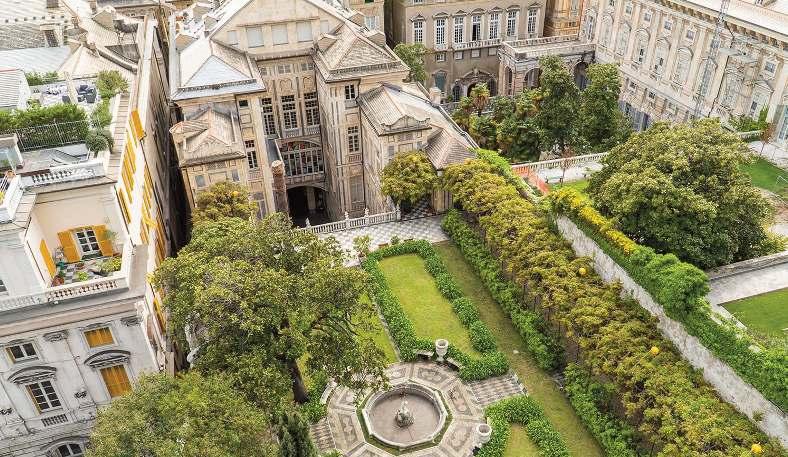
phaeum connects with the gardens uphill, organized following the slopes of the hill. In the first quarter of the 18th century, the spaces of the second noble floor were also renewed, frescoed by Domenico Parodi, Lorenzo De Ferrari, and Giacomo Antonio Boni. Noteworthy are the frescoes commissioned by Luigi Centurione in 1623 to Bernardo Strozzi for the rooms of the first noble floor, depicting the Allegory of the evangelization of the New World and the Allegory of navigation. The palace is open to visits. (www.palazzolomellino.org).
the eastern body is instead characterized by a 19th-century decoration commissioned by the Cattaneo family. Recently restored, the palace has been able to recover its decorative layout, defined by illusory architectures, masks, and single-color box windows.
16. Palazzo di Niccolò Grimaldi
Via Garibaldi 9 - Public use: Town Hall
The palace was built by the brothers Domenico and Giovanni Ponzello from the mid-1570s for Niccolò Grimaldi, called “the Monarch” due to his proverbial wealth. The
ample space available and the particular position of the building allowed a decidedly scenic arrangement of spaces: from the atrium, at street level, one passes to a courtyard on which opens the loggia of the noble floor and, at the back, the monumental staircase with a double ramp. The palace was soon sold to Giovanni Andrea I Doria, duke of Tursi and prince of Melfi and grandson of Andrea Doria and enrolled immediately in the Rolls at the first compass. Since 1850 the palace has been the seat of the Municipality of Genoa. It is part of the museum complex of Strada Nuova (p. 34).
of Genoa to Paris. Later on, it was acquired by Domenico Serra and the Campanella family and later heavily damaged by the bombings of World War II. From the first phase of the building, frescoed by Andrea Semino and Giovanni Battista Castello with episodes of Roman history and Stories of Aeneas, today remains testimony thanks to the reliefs by Rubens. The 18th-century interventions wanted by Cristoforo Spinola gave the residence a new neoclassical layout and an oval atrium on the ground floor. Then were completely renovated the living room on the noble floor and the two neoclassical temples on the terrace.
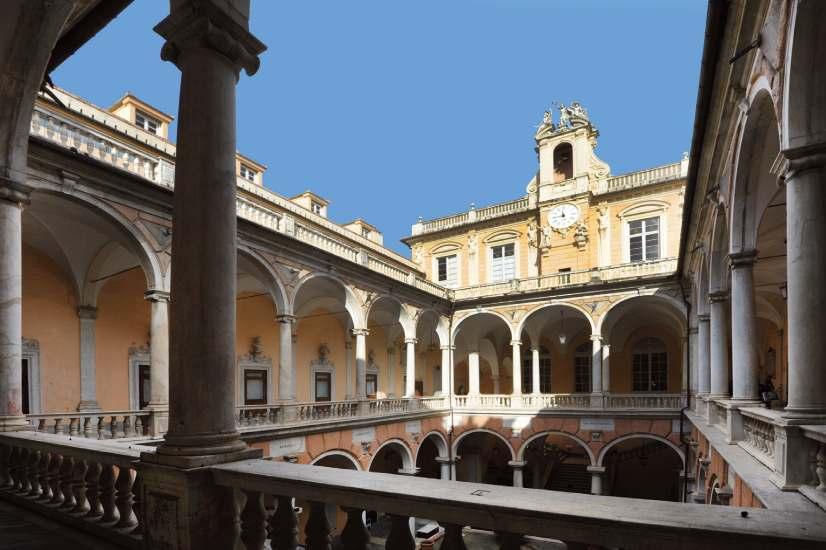
17. Palazzo di Baldassarre Lomellini
Via Garibaldi 12
Built starting from 1562 by the will of Baldassarre Lomellini by the architect Giovanni Ponzello, the building belonged for a long period to the Salvago, who acquired its ownership at the end of the 16th century and then sold it to Cristoforo Spinola, ambassador of the Republic
18. Palazzo di Luca Grimaldi
Via Garibaldi 11
Public use: Palazzo Bianco Museum
Built on a previous structure conceived by Luca Grimaldi before the opening of Strada Nuova, only in 1711 the palace came into the possession of Maria Durazzo Brignole Sale, who was already the owner of Palazzo Rosso.

She had the palace renovated by the architect Giacomo Viano, who worked on the architectural and formal modules of the 16th-century buildings, providing the residence with a new entrance from Strada Nuova. In 1889, the Duchess of Galliera, Maria Brignole Sale De Ferrari, donated the building and its precious art collection to the City of Genoa, which set up an exhibition of ancient art inside. Heavily damaged by bombings in 1942 and reconstructed in its 16th-century architectural forms, the museum reopened to the public in 1950 with a completely renovated exhibition curated by the architect Franco Albini and the new director Caterina Marcenaro. The museum route was later expanded with the outdoor spaces of the rear garden, which includes the remains of the Church of San Francesco di Castelletto, demolished in the early 19th century (p. 35).
19. Palazzo di Francesco e Ridolfo Brignole Sale
Via Garibaldi 18
Public use:
Palazzo Rosso Museum
Designed between 1671 and 1677 by the architect Pietro Antonio for Francesco and Ridolfo Brignole Sale, the palace features two overlapping noble floors, aimed at providing residences of identical prestige for the two brothers. Numerous phases of decoration and enhancement of the palace took place. The second noble floor was frescoed from 1687 onwards by leading figures of Genoese Baroque: Gregorio De Ferrari and Domenico Piola, and in a second phase, from 1691, by Giovanni Andrea Carlone, Carlo Antonio Tavella, and Domenico Guidobono. In 1874, the last heiress, Maria Brignole Sale De Ferrari, Duchess of Galliera, decided to donate the residence, complete with all its furnishings and collections, to the city of Genoa; thus, the

palace became a prestigious museum, also intended to house furnishings from the family’s residence in Paris. Subjected to two subsequent restoration interventions, in 1953 and 1961, the palace, distinguished by its red facade, houses paintings collected over more than two centuries by the noble family (p. 34).
Salita San Francesco 4
The characteristics of the building, constructed between 1536 and 1545, and the culture of the patron, Gerolamo Grimaldi Oliva, a wealthy merchant, powerful banker, and diplomat closely associated with Spain and Portugal, contributed to the creation of a unique residential typology for Genoa. Remaining in the possession of the Grimaldi family until the 19th century, the residence was purchased in the early 20th century by Evan Mackenzie, who established the headquarters of his insurance company there.
Mackenzie also commissioned architect Gino Coppedè, who made several modifications to the structure and decoration, including the Liberty style skylight covering the courtyard on salita San Francesco.
Over time, the desires and choices of the patrons led to innovative solutions in the interior decoration, carried out by Lazzaro Calvi, Giovanni Battista Castello “il Bergamasco”, and Luca Cambiaso. Used as a military hospital during World War I, the building is now owned by a private company that, after restoring it, opened it to the public as a venue for temporary exhibitions, cultural activities, and receptions (www.palazzodellameridiana.it).
Piazza della Meridiana 2
Overlookingp della Meridiana, for more than a century the palace served as a backdrop to Strada Nuova, along with the Palazzo di Gerolamo Grimaldi directly facing it, hindering the natural westward extension, which only occurred in 1786 with the opening of Strada Nuovissima (today via Cairoli). The building was erected between 1626 and 1628 commissioned by Giovanni Battista Brignole to Bartolomeo Bianco. The magnificence desired by the Brignole family for their residence during the 17th and 18th centuries is still evidenced today by the frescoes on the vaults of the noble floor rooms by Gregorio and Lorenzo De Ferrari. Also of great value are the marble busts preserved in the main hall of the noble floor.
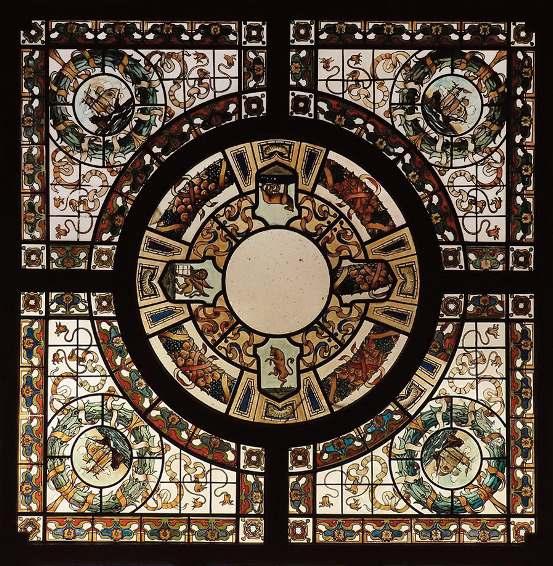
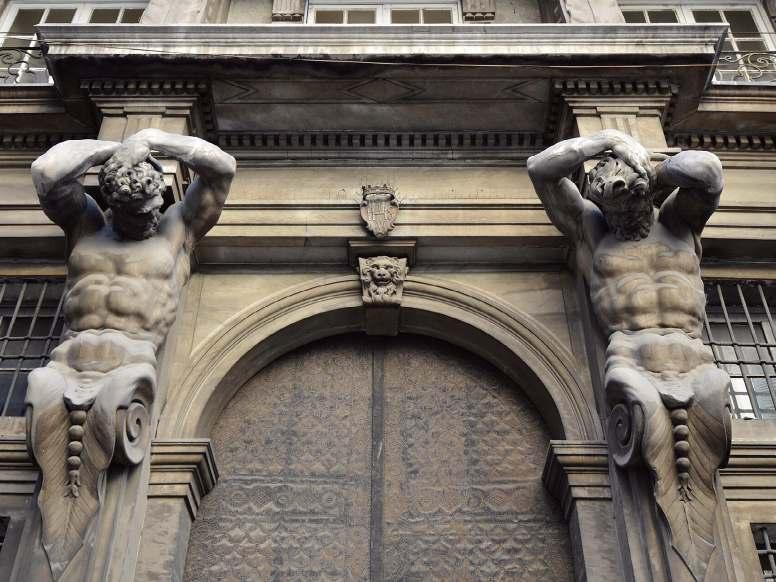
22.
Largo della Zecca 4
Built between 1565 and 1570 commissioned by Bartolomeo, the palace was constructed in the Vallechiara area, surrounded by the properties of the Lomellini hotel. The building immediately interacted with the Abbey of San Bernardo dell’Olivella, of which the patron was also a benefactor. The terrain’s topography, with significant gradients, allowed for an organization of the terraced garden adorned with marbles and fountains. Of particular interest is the intervention of architect Emanuele Andrea Tagliafichi, who in 1769, besides a general reorganization of the garden, worked on behalf of Doge Agostino Lomellini on the interiors and stucco decorations of some rooms, partly still visible today inside the commercial premises overlooking via Carlo Targa.
Included in the Rolli lists from 1588 onwards, the current palace is the result of an 18thcentury expansion by the Ticinese architect Gregorio Petondi starting from 1775. Passing through the hands of the Lomellini and finally the Doria Lamba, who still own it today, the building underwent a lengthy design process that evolved alongside the operations for the opening of Strada Nuovissima (today via Cairoli), which occurred between 1778 and 1786 by the same Petondi. The palace features a particularly interesting architectural solution that connects the two different and opposing entrances, creating a system of courtyards and atria. The interior was reorganized in its spaces according to the “modern” French layout, with rooms, salons, and enfilade galleries allowing visitors to traverse the apartment in a loop.

24. Palazzo di Giacomo Patrone Lomellini
Largo della Zecca 2
Public use: Military Zone Command
Located in the Vallechiara area, on the outskirts of Guastato (now piazza della Nunziata) and along the road that ascended to the Carmine village, the palace, initially built as a suburban residence of the Lomellini family, was rebuilt at the behest of Giacomo Lomellini, a wealthy and cultured member of the family who had made his fortune with the coral monopoly of Tabarca. Following several changes of ownership, it became the headquarters of the Military Zone Command from 1945. The palace became part of the urban circuit only with the opening of Strada Nuovissima (via Cairoli) in the 1770s, reflecting
the major transformations that have characterized the surrounding area since the 18th century. Of great value are the frescoes intended to adorn the interiors, created by Domenico Fiasella and Giovanni Carlone.
25. Palazzo di Antoniotto Cattaneo
Piazza della Nunziata 2
Public use: University of Genoa
The current appearance of the palace, donated to the University in 1999 by the Belimbau family, its last owners, is the result of a series of interventions that have affected both its architectural and decorative aspects, both inside and out. Towards the end of the 18th century, the residence passed to the Cambiaso family, who took care to renovate the facade and some
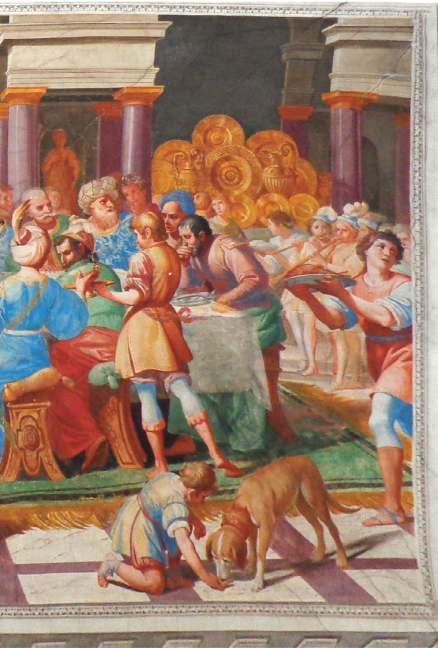
interior spaces, often entrusting the work to the Ticinese architect Giovanni Battista Pellegrini. In the noble floor apartment, one can admire the extraordinary illusory fresco decoration by Lazzaro Tavarone, created around 1610.
26. Palazzo di Gio Agostino Balbi
Via Balbi 1
Nestled between the hill slopes and the Franciscan convent of SS. Annunziata del Guastato, the palace, built from 1618 onwards for Gio Agostino Balbi by the court architect Bartolomeo Bianco, marked a new interpretation of monumental architectural typologies previously employed fifty years earlier in Strada Nuova. Remaining in the ownership of the Balbi family until 1709, the palace then passed to Marcello Durazzo, Marquis of
Gabiano, to the Durazzo Pallavicini, to the Negrotto Cambiaso, and finally to the Cattaneo Adorno family, who still own it today. Of particular interest is the planimetric composition of the building, organized around a double U shape, allowing spaces to be adapted to the steep slope, developed in loggias, galleries, and terraced gardens. Rich in 18th-century frescoes in its interior spaces, the palace still houses a valuable collection of paintings.
27. Palazzo di Gio Francesco Balbi
Via Balbi 2 - Public use: University of Genoa
Situated on the seaside flank of the new road axis financed by the Balbi family, the palace initially took shape as an enlargement and volumetric recomposition of the domus magna, a building that the family owned for several generations even before the street was laid out. It was later reorganized at the behest of Stefano Balbi, who in 1614 had the project for a new facade on the street and the general reorganization of the volumes approved by the Fathers of the City. By the late 18th century, the property passed to the Cattaneo della Volta family, while in the late 1930s the property was acquired by the Levante insurance company, which undertook a comprehensive restoration project following war damage. In 2001, the University of Genoa acquired ownership of the palace, using it as the seat of the Faculty of Arts and Humanities. The noble floor hall (now Aula Magna) houses the art collection envisioned by the Cattaneo family for their residence.
28. Palazzo di Giacomo e Pantaleo Balbi
Via Balbi 4
Public use: University of Genoa
The construction of the palace, located on the seaside side of the new urban axis, began in 1618 by the brothers Giacomo and Pantaleo
Balbi. The Balbi family retained ownership of it, preserving within it their valuable art collection. The building was acquired by the University of Genoa in 1972, which organized one of the locations for the Faculty of Arts and Philosophy. The initial project by architect Bartolomeo Bianco later saw the interventions of Pietro Antonio Corradi, including the creation of a bright rooftop garden adorned with a nymph.
Corradi also intervened in the upper floors of the building complex, expanding it with two wings protruding southward and enclosing the loggia of the second noble floor. Transformed into a gallery, this space became, around 1655, the quintessential place for family celebrations: here, the busts of the client’s antiquarian collection found a place, and Valerio Castello created the extraordinary fresco decoration of the vault.
29. Palazzo di Francesco Maria Balbi Piovera
Via Balbi 6
Public use: University of Genoa
The third palace on the seaside side of via Balbi, but the last in the architectural history of the 17th-century street, was built between 1656 and 1674 by Francesco Maria Balbi, who entrusted the design to the architect Pietro Antonio Corradi.
In the early 18th century, the new owners began an important project of architectural renewal and decoration, along with the acquisition of a magnificent collection of paintings, most of which were alienated when the building passed to Marcello Luigi Durazzo in 1824. In 1890, the palace was purchased by Genoese entrepreneur Edilio Raggio, who initiated further transformation by demolishing the interiors and converting them into apartments.
Concurrently, the facade was redesigned, a vast atrium overlooking a small rear courtyard was created, and a monumental staircase was built, on the vault of which a cycle of tempera

murals was executed, dedicated to Risorgimento allegories and the celebration of the Savoy monarchy and the unified State.
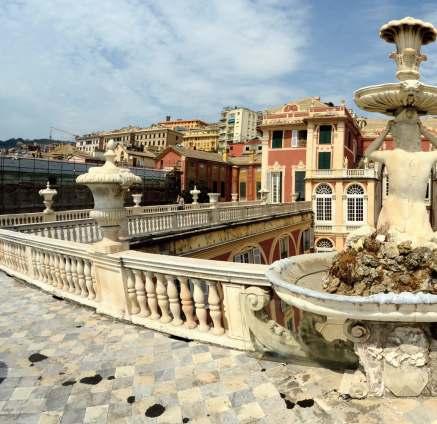
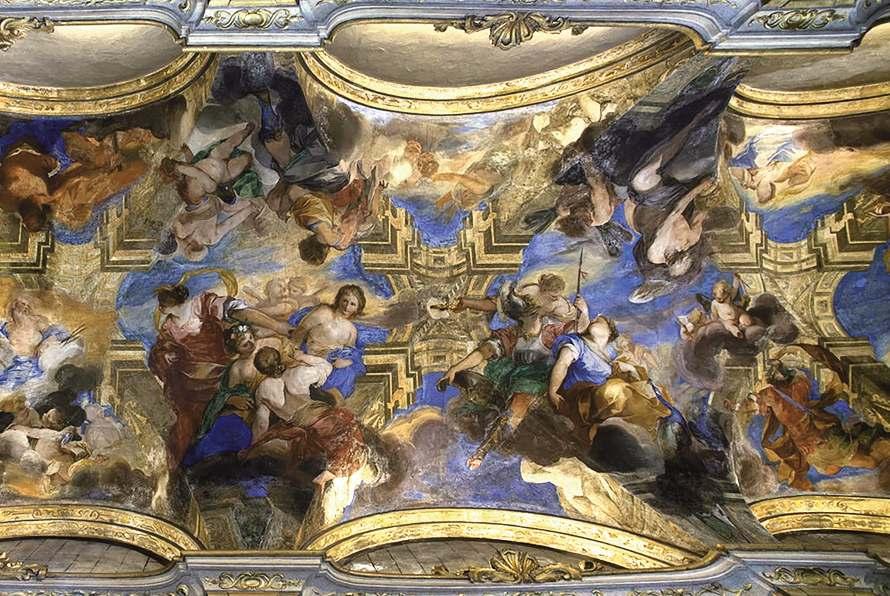
Since the 1950s, the palace has housed the Faculty of Arts.
30. Palazzo di Stefano Balbi
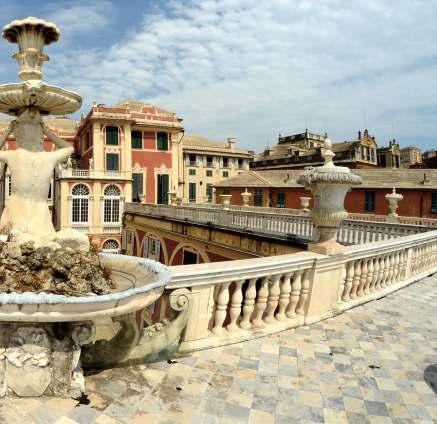
Public use: Museum of Palazzo Reale
The palace was built starting in 1643 for Stefano Balbi, the “director” of the opening of Strada dei Signori Balbi, by architects Pier Francesco Cantone, Michele Moncino, and Angelo Falcone. The building, initially built with a U-shaped plan, continued to expand and enrich itself thanks to the interventions promoted by the Balbi and Durazzo families between the 17th and 18th centuries. Today, it stands as one of the largest Genoese architectural complexes that has preserved its interiors intact, with fresco and stucco decorations, paintings, sculptures, furniture, and furnishings.
The palace was acquired by the Savoys in 1842 as a royal residence, and today it belongs to the Italian State, which has established the Museum of Palazzo Reale there. The monumental atrium with 18th-century
stuccoes, the courtyard of honor, the rooftop garden overlooking the sea, and the noble apartment on the second floor, with splendid reception rooms including the Galleria degli Specchi, created in the first half of the 18th century and modeled after the galleries of the Palazzi Colonna and Doria Pamphilj in Rome and the Galerie des Glaces of Versailles, can all be visited.
tion of the internal spaces of the second noble floor apartment, whose rooms were decorated with frescoes by Domenico Parodi and stuccoes by Mutoni and Giacomo Antonio Boni. Between 1756 and 1763, a small rooftop garden was added to the building, located on the first floor above the stables and coach houses. Recently restored, the palace is now home to private apartments and offices.
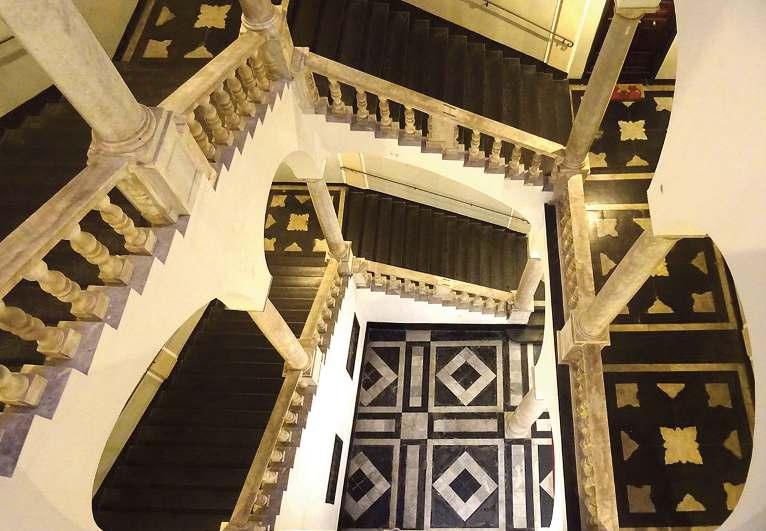
Via Lomellini 8
Built for the family of Giorgio Centurione, the palace underwent various phases of renovation during the 18th century by the Pallavicini family, who had profitable financial relations with Spain and the Duchy of Milan. The first phase dates back to the period 1718-1724: the architecture of the residence, still linked to 16th-century canons, underwent a first substantial renovation of the spaces of the atrium, the monumental staircase, and the facades. The intervention also included a new distribu-
Via Lomellini 5
There is little information on the architectural history of this palace. Most likely, construction was completed around 1594 by architect Gaspare Corte, commissioned by Giorgio Centurione, Doge of the Republic of Genoa in 1621-1622. The Centurione family later sold it to the Doria family during the 18th century, while in the early 19th century it became the property of the Cambiaso family, who at that time owned several other buildings in the Lomellini district. The monumental
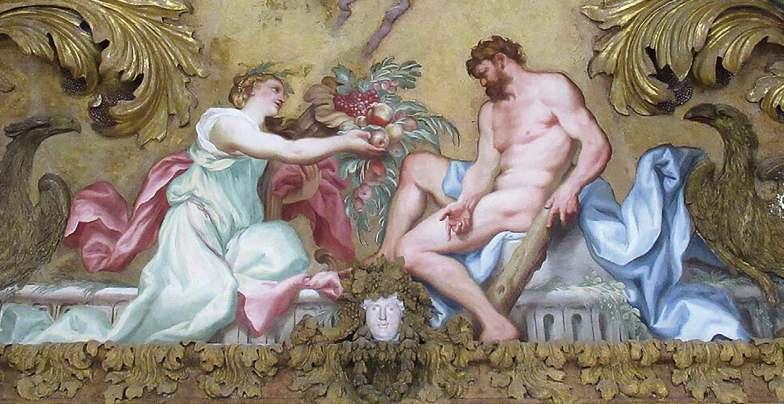
Renaissance portal remains primarily from the 16th century, whose pediment features a sculpture depicting the Madonna and Child at its centre. The residence is also of historical interest in Genoese history, as it was inhabited for many years by Giorgio Centurione’s daughter, Virginia (1587-1651), who later married Gaspare Grimaldi Bracelli. Widowed in 1607, Virginia dedicated herself to a life of charity and service to others, founding a monastic order. Virginia Centurione Bracelli was canonized in 2003 by pope John Paul II.
Centurione Piazza di Fossatello 3
Built by Battista Centurione starting in 1612, the palace remained in the family until the late 18th century, when it passed to the Saluzzo Brignole family, and almost a century later, to the Cambiaso family. Listed in the Rolli of 1664, the building was designed by architect Battista Cantone in collaboration with his son Filippo. The white marble portal gives access to a large atrium and a monumental staircase. The fresco decorations on the second noble floor are of great value: two rooms were frescoed by Giovanni Battista Semino with depictions of the Four Seasons, while subsequent rooms feature frescoes by Domenico Piola,
Gregorio De Ferrari, Bartolomeo Guidobono, in addition to the extraordinary passageway gallery – a unique architectural model in the city – whose barrel vault is decorated with mythological figures.
Palazzo di Cipriano Pallavicini
Piazza di Fossatello 2
The palace was built between 1494 and 1505 on pre-existing medieval buildings in the Fossatello area, at the intersection of important road axes. In 1540, cardinal Cipriano Pallavicini asked the Community Fathers for permission to renew his residence in Fossatello. On that occasion, considerable enlargement and regularization of the square perimeter were also achieved. The cardinal aimed to replicate a project by Donato Bramante for a Roman palace, with shops on the ground floor and residences on the upper floors. During the 18th century, it passed to the Grillo family and then to the Saporiti family, reaching Federico Rayper in 1840, a supplier to the Sardinian Royal Navy, who completely renovated the architectural layout to create income-generating apartments. The building thus acquired its neoclassical facade, which still overlooks the square today.
35. Palazzo di Nicolò Spinola
Via San Luca 14
The palace was built on a previous medieval building, still clearly visible on the ground floor with its white and black block columns that marked the open arcades on Vico Dritto,
the gods painted in the second half of the 17th century. The decoration is challenging to read due to damage sustained during World War II.

the main axis of the medieval Genoa road network stretching from Porta dei Vacca to the slopes of Castello hill. The palace was renovated by Nicolò Spinola and his successors in the 16th and 17th centuries. It is distinguished by a scenic facade painted by Ottavio Semino (1650) and Gio Andrea Ansaldo (ca. 1610). The monumental portal was probably created by Giovanni Giacomo Parraca da Valsoldo around 1560. The second noble floor salon features a banquet scene of
Piazza di Pellicceria 1
Public use: Museum of Palazzo Spinola
Built for Francesco Grimaldi before 1593, over the course of its history the palace changed hands many times. The last owners were Paolo and Franco Spinola, who in 1958 decided to donate the residence and all its artistic heritage to the Italian State. The family wished the building to maintain its appearance as a noble historical residence, except for the last two floors, heavily damaged during World War II. Today, the National Gallery of Liguria is housed here, a modern museum space hosting extraordinary works from the Spinola donation. In the early 17th century, the salons on the first and second noble floors were enriched by frescoes by Lazzaro Tavarone, glorifying the Grimaldi family and its ties to the Spanish crown. Between 1734 and 1736, the second noble floor was renewed in an architectural project organized by Bartolomeo Bianco and transformed into one of the most magnificent ceremonial residences in the city.
Vico San Luca 4
The palace was born around 1610 from the fusion of four row buildings of 13th-century origin. Gio Battista Grimaldi possibly
entrusted the work to the architect Andrea Ceresola, known as “il Vannone”, who was already active in the nearby area of piazza Banchi. The facade has remained substantially unchanged over the centuries: a high ground floor conceived as a commercial and storage area, surmounted by two overlapping noble floors.
There was once a sort of terraced turret on the roof, later modified in the 19th century. Organized today into apartments, the building still features rooms with decorations of great interest: on the first floor, a salon with walls and vault entirely frescoed by Lorenzo De Ferrari, who also worked on the noble floor. In the same apartment, there is also a small chapel with Rococo stuccoes.
38. Palazzo di Gio Battista
Grimaldi Piazza San Luca 2
The palace, overlooking piazza San Luca along with the homonymous church of the Spinola family, presents a sober facade: rustic basement of the ground floor, string courses, and niche windows with balconies supported by marble balustrades. The current configuration derives from the fusion of medieval pre-existing structures, whose arcades on the ground floor were closed during the 16th century.
Medieval remains are still visible at the back, where a 15th-century stone portal stands, and on the front of the building, where some Corinthian order columns are walled into the facade. Through the portal, one accesses the atrium and then the monumental loggia staircase.
existing buildings belonging to the Spinola family, stands in the central section of what was Vico Dritto and is named after Stefano De Mari, Doge of Genoa in 1663. The facade is organized by an illusory architecture that frames the windows on different floors. The
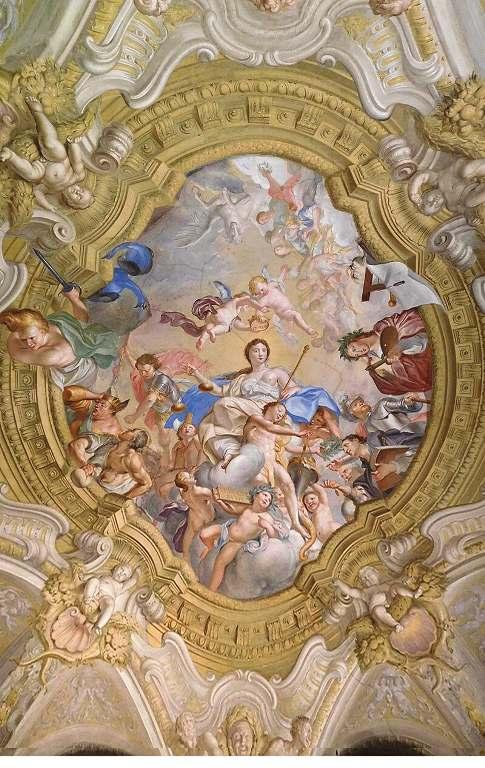
39. Palazzo di Stefano De Mari
Via San Luca 5
The palace, built in the 16th century on pre-
monumental late 16th-century portal leads to an atrium renovated in the 19th century. The palace is organized around the luminous internal loggied courtyard, along which runs the staircase that provides access to the various floors and private apartments into which the building is divided today.
40. Palazzo di
Palazzo Grimaldi della Meridiana
Di Negro
Via San Luca 2
The palace was built for Ambrogio Di Negro
Via al Ponte Reale
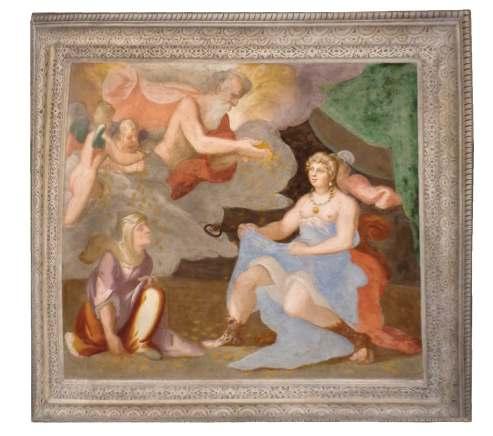
– several times magistrate, governor, and ambassador for the aristocratic Genoese Republic, Doge in 1585-1587 – on previous medieval buildings in an urban area of great importance, the ancient market immediately behind the port and a crossroads of important urban axes.
The palace features two main quadrature facades frescoed on a high rustic basement that includes the ground floor and mezzanine, intended for shops according to the courtly Bramantesque model already experimented by Cipriano Pallavicini in the Fossatello palace. The interior spaces of the first noble floor are a clear manifestation of the extensive humanistic culture of the patrons who, in the vaults of the rooms and salons, had subjects from mythological fables frescoed accompanied by Latin mottos.
In the large salon, there are clear references to overcoming adversity, perhaps alluding to the events of rivalry between “old” and “new” nobles.
41. Palazzo di
2
Built in the 17th century for Emanuele Filiberto Di Negro with the demolition of medieval houses of the “De Nigro” family, who owned a tower here, the palace first appears in the Rolli of 1614 under the name of Pietro Maria Gentile.
The facades, richly decorated with stuccoes, are easily admired – a rare case in Genoa – from broad perspectives; the grandeur outside is matched by the atrium and nymph of the loggied courtyard and the stucco staircase. In the 19th century, the construction of the Carlo Alberto cartway (now via Antonio Gramsci), which elsewhere removed the hovels leaning against the Ripa, left the palace facade intact, now transformed into the Hotel Feder. Recently restored, it is now intended for apartments and commercial activities.
Piazza De Marini 1
The palace was built during the second half of the 16th century for the De Marini family on the remains of medieval constructions previously owned by the same noble house that gave the name, in an area of great strategic importance immediately behind the Ripa Maris and open to port traffic.
The current appearance is the result of a general reconstruction in the 18th century commissioned by the Negrone family. Of particular interest is the16th-century marble portal, arched and decorated with vegetal elements: the work of sculptor Gian Giacomo Della Porta, it is surmounted by allegorical figures evoking peace. Sold in 1830 to Andrea Croce, the building is now home to offices and private residences.
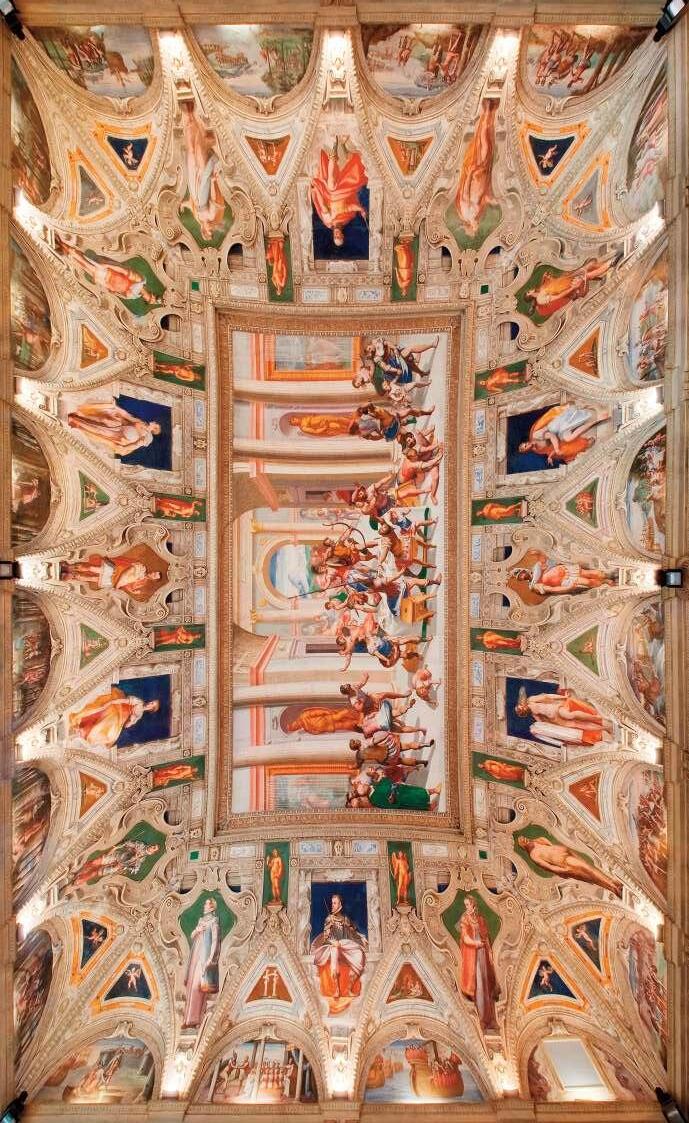

Palazzo Ducale is one of the symbolic historical places in Genoa and the major cultural production centre. Throughout the year, it hosts art exhibitions, conferences, lecture series, festivals, events, and educational activities. The construction of the Palace began in 1298, in the aftermath of the victory at the battle of Meloria against the Pisans and the battle of Curzola against the Venetians, when Genoa established itself as an economic power in the Mediterranean, outstripping the other maritime Republics.
The Palace became the seat of the government of the Republic of Genoa and the residence of the doge from 1339. It expanded until the end of the 16th century with the addition of new parts, becoming a true fortress. Today the most evident mark of the original medieval construction is the Grimaldina Tower, which, from the 14th century to the
early 20th century, served as a prison for political prisoners, conspirators, and anarchists. Only during the 16th century it was decided to give the building a more modern Renaissance-style character: the project was entrusted in 1591 to the Ticinese architect Andrea Ceresola, known as Vannone. To his intervention we owe the monumental layout of the Palace, characterized by a grand atrium flanked by two porticoed courtyards and a wide staircase leading to the loggias of the main floor, where the Hall of the Major Council, the Hall of the Minor Council, the Doge’s apartment, and the Doge’s chapel, frescoed by Giovanni Battista Carlone in the mid-17th century, are located. The typically neoclassical style of the representation halls – where the Senate of the Republic met – is due to a renovation after a devastating fire in 1777, which destroyed part of the main

floor and the facade. It was rebuilt by Simone Cantoni, who also created the Cantoni staircase, an example of neoclassical virtuosity connecting the loggia with the top floor. Subject to further decorative interventions and the restoration of medieval remnants (Loggia degli Abati and Munizioniere) between the 19th and 20th centuries, the Palace regained its former splendour thanks to a complex restoration effort and was opened to the city in 1992, during the Columbus celebrations.
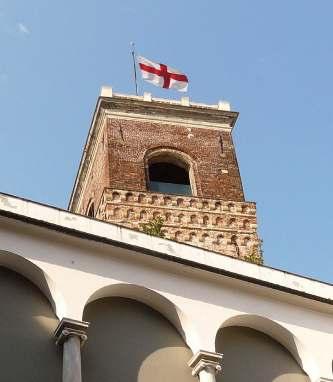

Palazzo Ducale houses the Historical Archive of the Municipality (p. 43), the Ligurian Society for Homeland History, the Ligurian Academy of Sciences and Letters, and Casa Luzzati, a cultural and artistic production centre dedicated to the work of the famous illustrator (www.casaluzzati.it).
Palazzo Ducale
Piazza Matteotti 9 - 16123 Genova Tel. 010 8171600 www.palazzoducale.genova.it


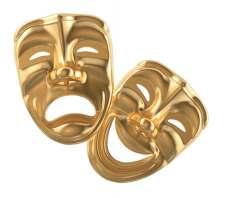
Genoa offers every year a rich program that incudes various genres: opera, dance, symphonic concerts, classic plays and avant-garde, comedy and cabaret, as well as shows for children. Through the web portal GenovaTeatro, you can check the schedule of all Genoese theatres, get information about shows and services, and purchase tickets online (https://www.genovateatro.it/).
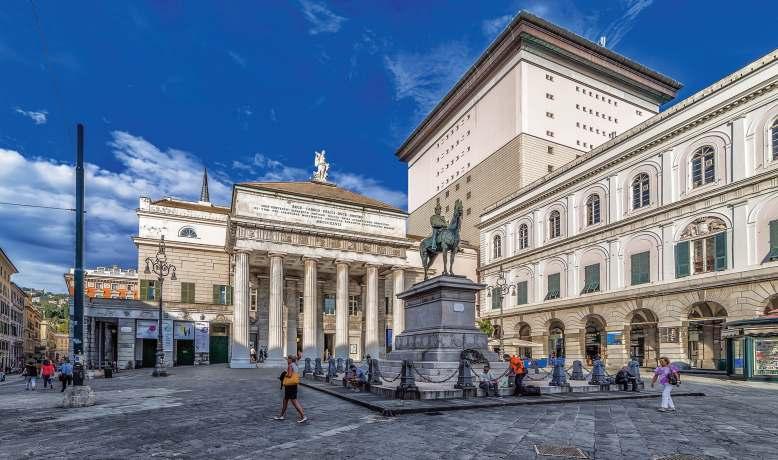
Teatro Carlo Felice is the city’s opera house and offers a high-level opera and symphonic season every year. Its magnificent structure also hosts the musical season of the Giovine Orchestra Genovese, combining high-quality offerings with a strong spirit of innovation. Teatro di Genova, the new entity formed by the merger of Teatro Stabile di Genova and Teatro dell’Archivolto, has been designated a National Theatre by the Advisory Commission of the Ministry of Culture. Currently, it operates in four venues spread between down-
town Genoa and Sampierdarena: Teatro della Corte, Teatro Duse, Teatro Gustavo Modena, and Sala Mercato. But there are still many theatres and theatre companies in downtown:

Teatro della Tosse, with its three historic venues in Sant’Agostino, Teatro del Ponente in Voltri, and a foyer always bustling with meetings, readings, and various initiatives,
serves not only as home to the Tosse company but also as a hub for artists and companies from around the world; additionally there’s Politeama Genovese, offering a rich program spanning comedic theatre, drama, comedy, musicals, dance, classical ballet, and civic theatre; TIQU Teatro Internazionale di Quartiere, known for its experimentation and artistic cross-pollination; Lunaria Teatro, which stages classical poetry from Euripides to Shakespeare, alongside museum valorization events and festivals; since 1999, Suq Genova Festival e Teatro has organized an intercultural theatre festival and subsequently founded the Suq Theatre Company.
Teatro Carlo Felice
Passo Eugenio Montale 4 tel. 010 5381433 - 5381399
Box office opening: Monday to Saturday 9:30-19:00
Teatro Nazionale di Genova
Piazza Borgo Pila 42 tel. 010 5342720
Box office opening: Tuesday to Saturday from 18:00 until the start of the performance; Sunday 15:00-18:00
Booking: tel. 010 5342400, Tuesday to Saturday 10:00-13:00 and 15:00-18:00 www.teatronazionalegenova.it/
Teatro della Tosse
Piazza Renato Negri 6 tel. 010 2470793
Box office opening: Tuesday to Saturday 15:00-19:00 www.teatrodellatosse.it/
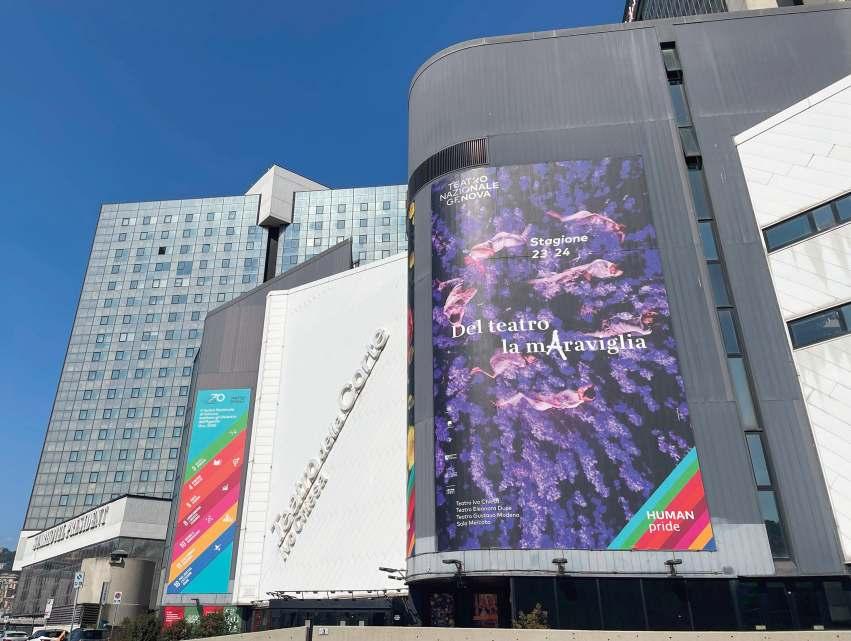
Politeama Genovese
Via Bacigalupo 2
tel. 010 8393589
Box office opening:
Monday to Friday 11:00-13:00. On performance evenings: 20:00-21:00 www.politeamagenovese.it/
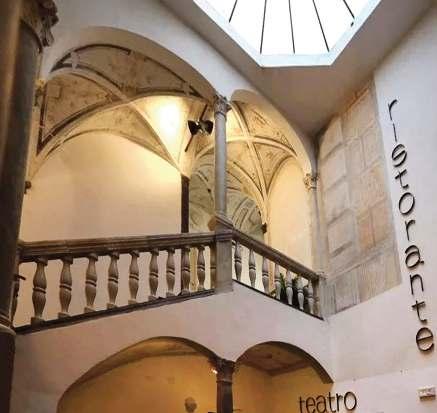
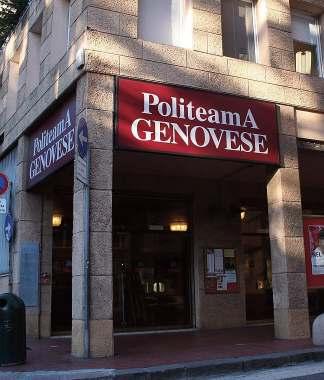
TIQU Teatro Internazionale di Quartiere
Piazzetta Cambiaso 1
Box office opening: on performance evenings one hour before the start www.sarabanda-associazione.it/
Lunaria Teatro
Piazza San Matteo 18 tel. 010 2477045 - www.lunariateatro.it/
Suq Genova Festival e Teatro
via Giosuè Carducci 3/16 tel. 329 2054579 - www.suqgenova.it/
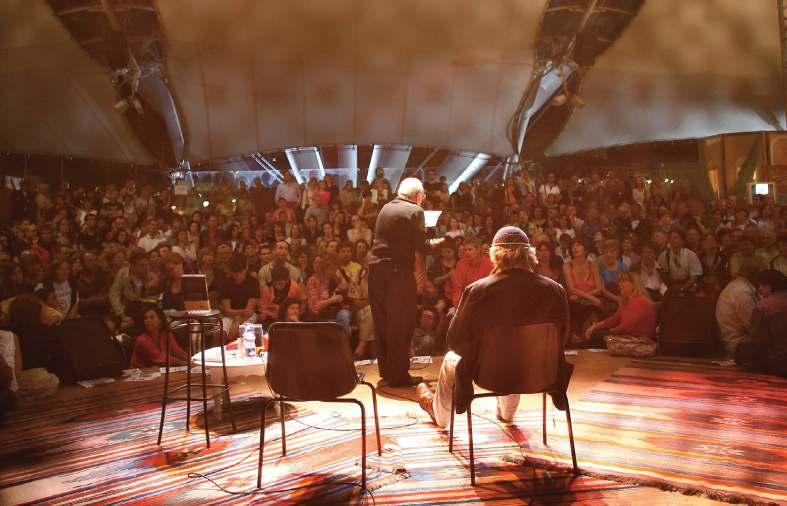
In the San Fruttuoso neighbourhood, you’ll find Teatro Garage, primarily focused on contemporary drama.
Heading towards Molassana, there’s Teatro dell’Ortica, a social theatre that not only presents shows for children but also works towards reintegrating marginalized individuals back into the community.
Teatro Garage
Via Paggi 43b tel. 010 511447 www.teatrogarage.it/
Teatro dell’Ortica
Via Salvador Allende 48 tel. 010 8380120 www.teatrortica.it/
Moving westward, you’ll encounter Teatro Akropolis, dedicated to international research in performing arts; in Bolzaneto, there’s Teatro Rina e Gilberto Govi, renowned for its Genoese dialect scripts, often comedic, along with a program that includes music and shows for children.
Teatro Akropolis
Via Mario Boeddu 10 - tel. 329 1639577
Box office opening: on performance evenings one hour before the start www.teatroakropolis.com/
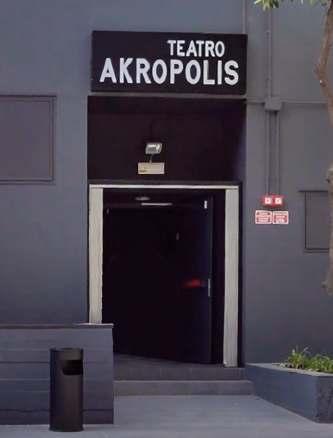
Teatro Rina e Gilberto Govi
Via Pasquale Pastorino 23 - tel. 010 7404707
Box office openings: Thursday 9:30-12:30 and 15:30-18:30 - www.teatrogovi.it/
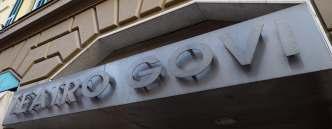


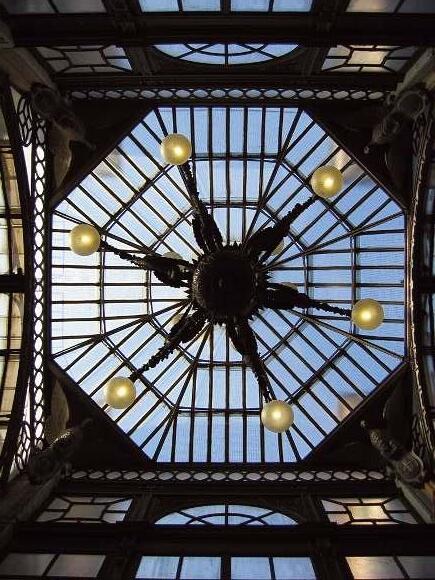
In the heart of the city, nestled between Piazza Corvetto and Piazza De Ferrari, and adjacent to the elegant Via Roma, just a few steps from the Carlo Felice Theater, Galleria Mazzini represents a meeting point between the past, present, and future. Named after the patriot Giuseppe Mazzini, it was built between 1866 and 1877, inspired by the famous Parisian passages and

the renowned Galleria Vittorio Emanuele II in Milan. Upon its inauguration, the Gallery became a source of pride for the entire city: considered lavish and refined, it quickly became a gathering place for intellectuals and prominent figures of the time.
In the 1990s, during the Colombian celebrations marking the 500th anniversary of the discovery of America, the Gallery underwent an important restoration, including a new floor. It was further enriched in 2001 with large octagonal marble and brass mosaics. Looking up at
the ceiling, one can admire the sparkling stained-glass windows and domes, the sumptuous bronze chandeliers featuring Janus, the symbol of the city, and the cast-iron griffins that seem to dominate the space. Walking through this small, elegant Liberty-style promenade, with its shops, cafes, and restaurants, is an unmissable experience for anyone visiting Genoa.
Every fourth Wednesday and Thursday of the month (except for August and December), the Gallery hosts an antique market, and in December, the traditional Book Fair.
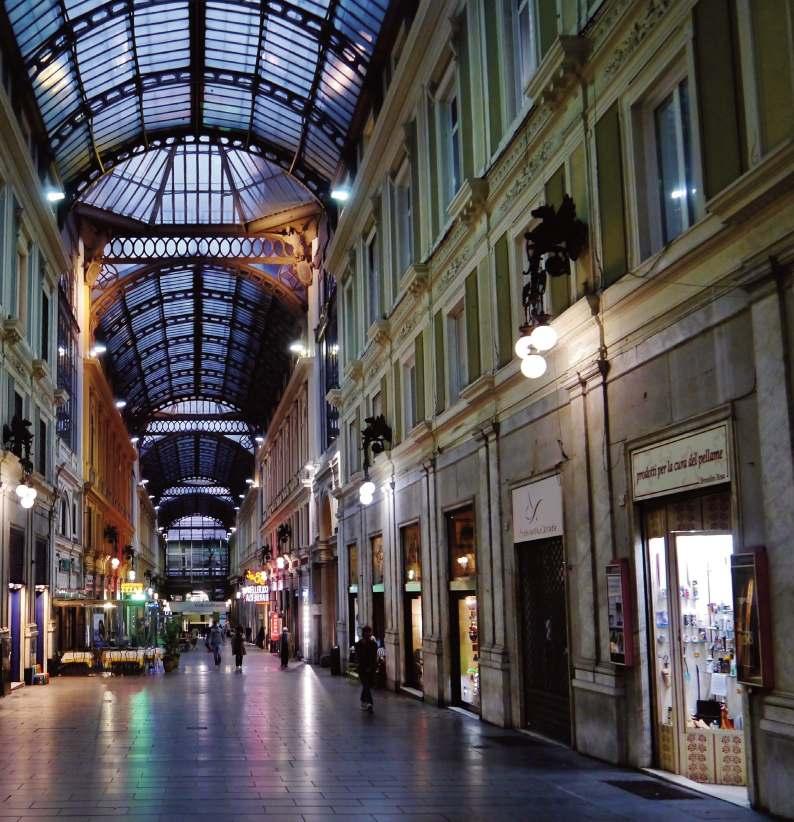

Cathedral of San Lorenzo
Piazza San Lorenzo
Opening times: 8:00-12:00 / 15:00-19:00
For information and reservations for visits to the Towers: www.torrisanlorenzogenova.it/#contact
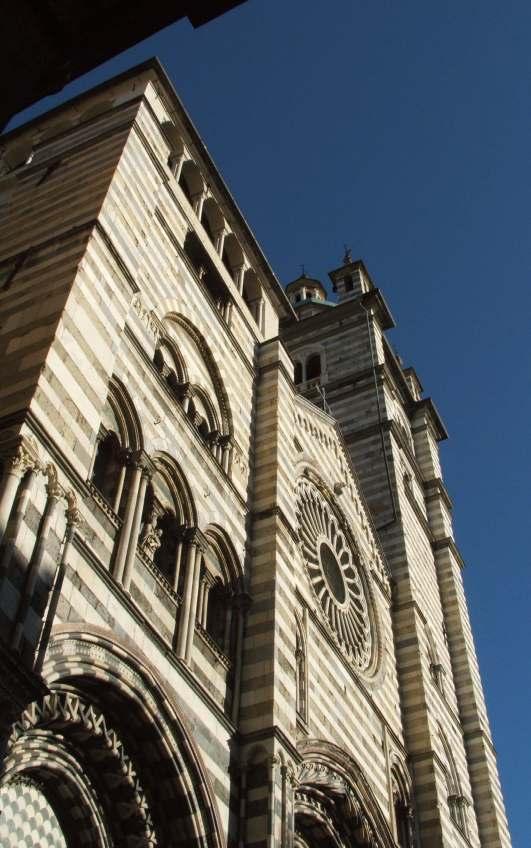
Founded in the 9th century, the basilica of San Lorenzo replaced the basilica of the Twelve Apostles, dedicated in the 6th century to saint Siro, the bishop of Genoa, who at that time was located outside the ancient city centre. Due to the transfer of the cathedral and the construction of the walls, the area became the heart of the growing and changing city. Throughout the Middle Ages the churchyard of San Lorenzo provided a fundamental stage for political and civil life. Pope Gelasius II consecrated it as a cathedral in 1118; funded by municipal taxes and military enterprises such as the Crusades, its reconstruction began in the form of a romanesque church. From 1133, the church gained archiepiscopal rank. After the fire of 1296, the building was partly restored and partly rebuilt in the forms of gothic architecture. Between the 14th and 15th centuries, the cathedral was enriched with new altars and chapels, including the splendid chapel that houses the ashes of saint John the Baptist, brought to Genoa at the end of the first Crusade. In 1455, the small loggia was built on the northeast tower facade, to which the opposite loggia was added in 1522, in the typical forms of mannerist architecture. In the mid-16th century, under the orders of the city magistrates, the Perugian architect Galeazzo Alessi redesigned the entire
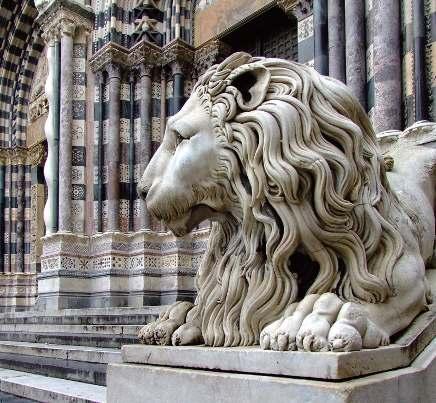
building; in the 17th century, Lazzaro Tavarone executed the frescoes of the Stories of san Lorenzo. A restoration in the late 19th century highlighted the medieval parts that characterize its current appearance. During the English naval bombardment of 1941, the cathedral was hit by an artillery shell, which remained unexploded.
Chiesa del Gesù Piazza Matteotti
Opening times: 8:00-12:30 / 16:00-19:00 www.chiesagesugenova.org
Originally dedicated to saints Ambrose and Andrew (the original 6th-century temple was dedicated to Ambrose, bishop of Milan), the church took its current form and dedication after the major reconstruction in the 16th century by the Society of Jesus, designed by the Jesuit architect and painter Giuseppe Valeriano. The current facade dates back to 1894, while the bell tower is from the early 20th century. The interior of the church is clad in precious polychrome marbles, gold, and stuccoes, representing a prestig-
ious example of Genoese baroque. In the 17th century, the vaults were frescoed by the Carlone brothers, and during the same period, noble Genoese families commissioned altarpieces from great European artists. The church houses absolute masterpieces such as the Circumcision and the Miracle of St. Ignatius by Peter Paul Rubens and the Assumption by Guido Reni, as well as paintings and frescoes by many important painters of the Genoese school and beyond, including Domenico Piola, Domenico Fia-

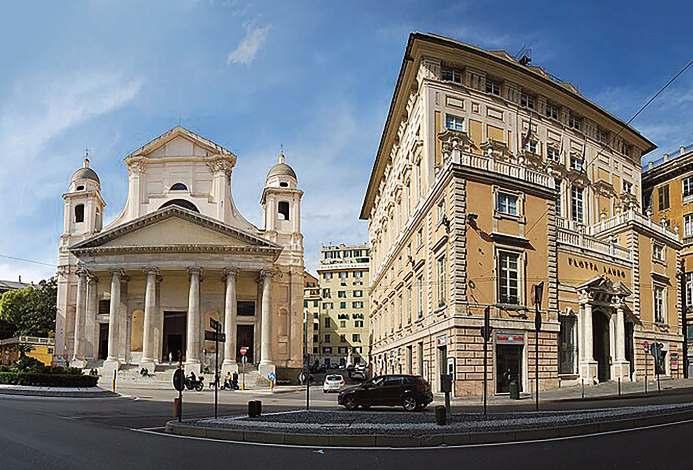
sella, Valerio and Bernardo Castello, Giovanni Andrea and Lorenzo De Ferrari.
Santissima Annunziata del Vastato
Piazza della Nunziata 4
Opening times: 7:30-20:00; closed Saturday 12:00-14:00 www.basilicaannunziatadelvastato.it
Since the early 16th century, various branches of the Franciscan community have succeeded in the Vastato complex; at the end of the century, the main chapel was sold under the patronage of the Lomellini. In the 17th century, under the guidance of Taddeo Carlone, the church assumed baroque forms. The neoclassical facade with two bell towers and a magnificent pronaos with six ionic columns was built in 1867 according to designs by Carlo Barabino, elaborated by Giovanni Battista Resasco. Andrea Ansaldo created a complex perspective machine in the dome, built with trompe-l’oeil frescoes and fully rounded figures, an important example of the splendour and theatricality of early 17th-century Genoese painting. The church houses great works of art by extraordinary artists of the late mannerist, baroque, and 18th-century Genoese schools. Thanks to a recent important restoration, today we can enjoy Giulio Cesare Procaccini’s Last Supper in all its original magnificence.
Santi Cosma e Damiano Piazza San Cosimo
Through the alleys at the foot of Castello hill, you reach this small church located in a secluded and suggestive corner of the historic centre. The perfectly preserved facade features arcosolium tombs and the particular Barisone tomb with pointed arches and small

columns. The church is entirely original and dates back to the 11th century, while the bell tower, portals, and internal arches are from the 12th century. The vaulted roof dates back to the late 17th century. In addition to some interesting 17th-century canvases, the interior preserves the beautiful Tomb of the Barbers and Surgeons, whose protectors are saints Cosmas and Damian, dating back to 1476.
San Donato
Via di San Donato 10
Opening times: 10:00-12:00 / 15:00-18:30 www.sandonato.org
Erected in the 11th century and later enlarged and modified over the centuries, the church boasts on its right flank the wonderful octagonal bell tower, emblem of a very early romanesque style, which can be admired along Sant’Agostino street.
The facade is animated by the original portal with moldings. Inside, the Roman columns reused from the first existing building and the black and white stone columns dating back to the 12th century stand out.
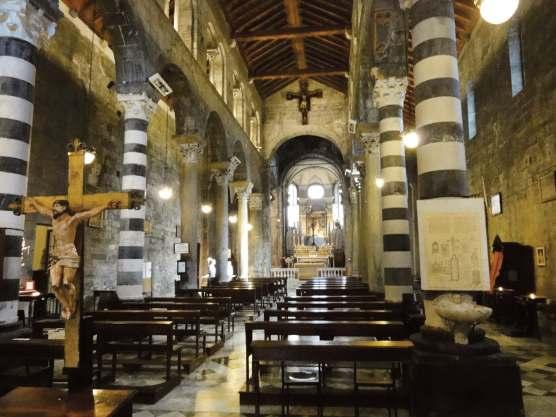
Unmissable are the 14th-century panel of the Virgin and Child by Nicolò da Voltri, in the right apse, the famous triptych of the Adoration of the Magi by Joos van Cleve (1515),
kept in a side chapel, and the altarpiece by Domenico Piola depicting the Holy Family. The church also preserves the baptismal certificate of Niccolò Paganini, the famous Genoese musician.
San Giovanni di Prè Piazza della Commenda 1
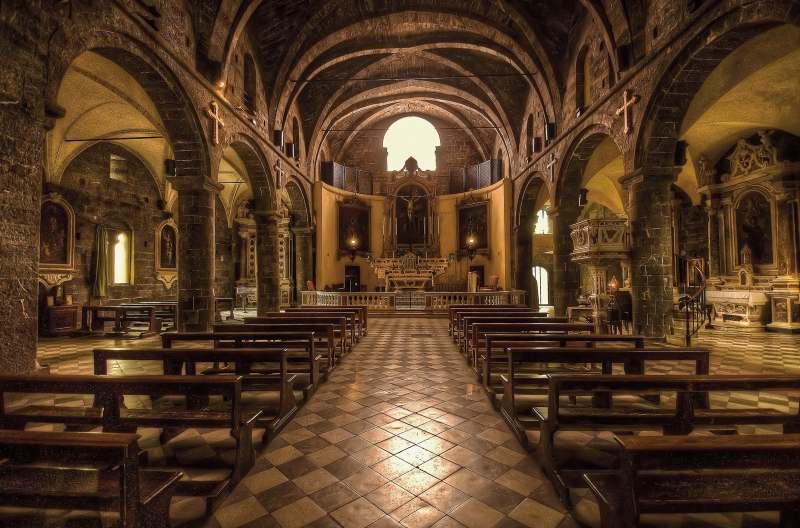
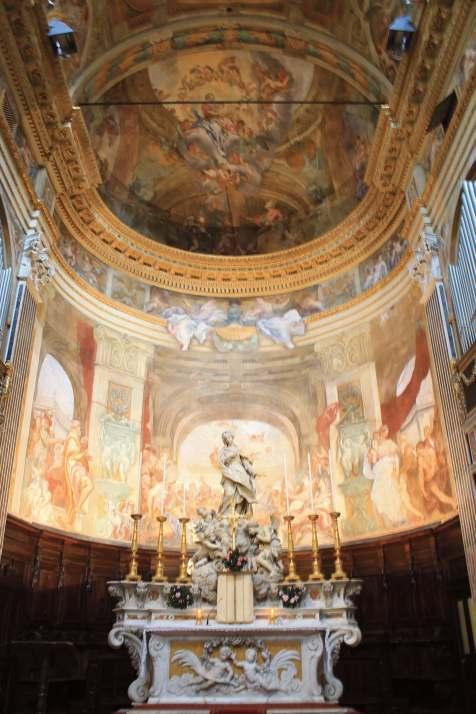
The upper church, now dedicated to saint John the Evangelist, stands out in the maze of alleys for its severe bell tower, typical of Genoese romanesque architecture, with its four pinnacles, elegant pyramidal spire, and three orders of triforiae. The basilica was built without a facade because it was reserved for knights, who accessed it through an internal passage to the Commandery. Once the church was opened to public worship in the 18th century, its orientation was reversed by opening the portal in the apse that even now welcomes the faithful. Crossing this unusual threshold, you enter an equally surprising interior, with a very special light given by the black stone of Promontory, which stands out against the light plaster in an
elegant contrast mirrored by the checkered floor. The lower church, with three bright aisles andelegantcrossvaults,wasoriginallydedicated to saint Hugh and used as a meeting place for pilgrims; later it was destined for confraternities
San Luca
Piazza San Luca 1
Opening times: 8:00-12:00 / 15:00-19:00
Located in the heart of the historic centre, the small, delightful church of San Luca was the parish church of the Spinola and Grimaldi families. Built in 1188, it now has the look resulting from the mid-17th-century restoration. The central-plan interior with a dome was entirely decorated by Domenico Piola in 1695 and preserves the precious Nativity of the Grechetto (1645). It is impossible not to stop in front of the Immaculate Virgin by Filippo Parodi (1649) placed on the high altar: in Carrara white marble, it depicts the Virgin standing on a cloud of angels supporting her.

San Marco al Molo
Via del Molo 18
Openingtimes:Monday16:00-18:00;Thursday, Saturday, and Sunday 10:00-12:00 / 16:0018:00
Behind Porta Siberia, near the ancient port of Mandraccio, stands the tiny church curiously dedicated to the patron saint of the maritime Republic of Venice, bitter enemy of Genoa. The romanesque-style building, completed in 1177, has undergone modifications and restorations over the centuries and now appears in the late 18th-century baroque forms. It houses valuable artworks from the 17th and 18th centuries. On the left side, some inscriptions and a bas-relief depicting the lion of St. Mark, taken from the city of Pola in 1380 when the Genoese sacked it during the so-called War of Chioggia, are walled up.
Piazza Carignano 8
Opening times: 8:00-12:00 / 16:30-19:00 www.basilicadicarignano.it
For information and reservations for guided tours of the ancient panoramic walkways: www.kalata.it/experience/basilica-di-carignano/
A refined Renaissance masterpiece, the Greek cross basilica was designed in 1549 as the parish church of the Sauli family by the famous architect Galeazzo Alessi, creator of some of the most important patrician villas in
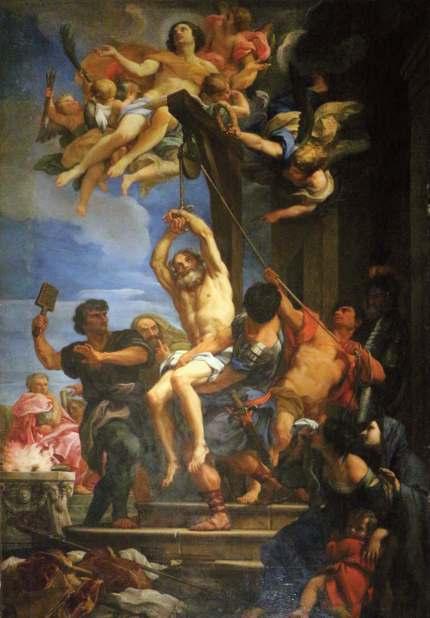
Genoa. The construction took place over a very long period: the dome was completed in 1602, the decoration of the main facade in 1722, while the steps date back to the 19th century. The sober and luminous interior, dominated by the large dome, is characterized by Corinthian capitals, geometric decorations, and imposing statues of the saints; among the most prestigious those of Saint Sebastian and Blessed Alessandro Sauli by Pierre Puget (1668). Noteworthy are the paintings decorating the altars: in particular, Saint Peter healing a lame man by Domenico Piola (1694), the Martyrdom of Saint Blaise by Carlo Maratta (1680), and the Pietà by Luca Cambiaso (1571).


Santa Maria di Castello
Salita di Santa Maria di Castello 15
Opening times: 10:00-13:00 and 15:00-18:00 www.santamariadicastello.it
The monumental complex of Santa Maria di Castello, with its adjoining convent and museum, stands on the pre-Roman site where the city’s first fortified settlement developed, just above the natural shelter of the ancient port’s coastline. Here, in 658, the Lombard king Aripert is said to have built the first place of worship, which the master builders later reconstructed in the early 12th century in the form of a romanesque basilica, using materials recovered from ruins of Roman architecture. In 1442, the church was assigned to the Dominicans, who in the following decades erected the convent with three cloisters. The interior, now brightly decorated in the 18th century style, preserves the three-nave layout of the romanesque basilica. On the vaults and in the side chapels, there is a precious series of paintings and frescoes by Genoese artists and others. In the first frescoed cloister, you can admire the Annunciation, a masterpiece of Renaissance
painting painted in 1451 by Justus von Ravensburg. Ancient canvases, illuminated manuscripts, 15th-century frescoes, ancient marbles, and a beautiful collection of Russian icons are housed in the museum occupying the convent spaces.
Santa Maria delle Vigne
Piazza delle Vigne
Opening times: 8:00-19:00
The name of the square derives from the fact that in the 10th-11th centuries there were
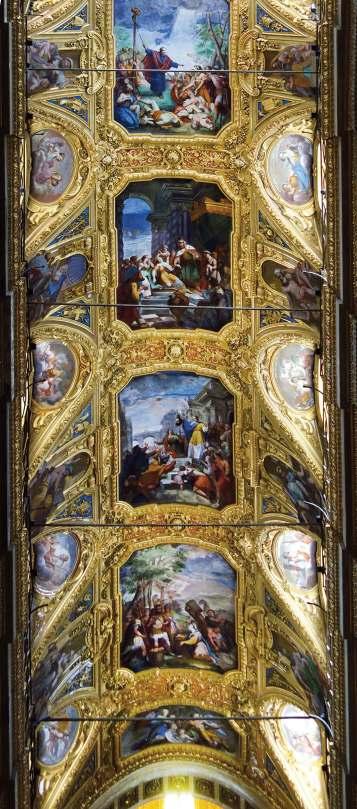
vineyards here, later disappearing due to the urbanization of the area by the Grillo family, owners of the palaces facing it.
The basilica of Santa Maria delle Vigne, one of the oldest and most important churches in Genoa, was founded in 981. From that period, only the tall bell tower with bifores and pentafores and an octagonal spire flanked by pinnacles is visible today. The imposing neoclassical facade was built in 1842
San Matteo
Piazza San Matteo 18
Opening times: Tuesday to Saturday 10:0012:00 and 15:00-19:00; Sunday and holidays 9:00-12:00; closed on Monday
The splendid church of the Doria family, with its characteristic decoration in black and white stripes, was built in 1125 and renovated in 1278 in gothic forms. The facade has retained its original elegance, embellished by the late Roman

on the previous structure from 1640, which still reveals itself in the sumptuous interior decorations that proclaim the triumph of Genoese baroque. Exiting from the side door of the right nave, you can admire the 15th-century portal surmounted by a statue of the Almighty and a lunette frescoed by Piola. Returning to the square, to the left of the main facade, after entering vico del Campanile delle Vigne, you can catch a glimpse of the cloister of the Canons of the Vigne (12th century). Under the archivolt, the suspended tomb of Incisa Vivaldi, from 1304, enriched with a front of a Roman sarcophagus from the 2nd century, depicting the Death of Phaedra
sarcophagus of Lamba Doria with the Allegory of Autumn and the mosaic-decorated lunette above the portal (1280). On the strips of white marble, several inscriptions extol the deeds of the Doria family. The interior was profoundly transformed at the behest of Andrea Doria in the mid-16th century and today presents itself in a rich baroque style curated by Gian Battista Castello and Luca Cambiaso, with frescoes, paintings, stuccoes, and wooden sculptures. The crypt houses the tomb of Andrea Doria, surmounted by torch-bearing putti and low reliefs of harpies. Next to the church, the evocative 14th-century quadrangular cloister with paired columns and pointed arches.

San Pietro in Banchi Piazza Banchi
Opening times: 9:00-18:00
The church represents a unique example of a religious building located above commercial premises, in a curious blend of sacred and profane. Elevated above the level of the square, it is built on a base that houses some shops; the portico is surmounted by a frescoed facade with a double row of three normal windows. The dome of the apse can only be glimpsed when viewed from below.
purposes, leading to a compromise between the intentions of the Lomellino family – who intended to allocate the area for commercial use – and the desire of the population to erect a church to fulfill a vow.
San Siro
Via San Siro 4
Opening times: 8:30-12:00 / 16:00-19:00
This was the city’s first cathedral, built in the 4th century on the site of an ancient place of worship dedicated to the Twelve Apostles. Rebuilt between 1585 and 1620 after a fire, it is now one of the finest examples of baroque churches; the neoclassical facade is a design by Carlo Barabino (1821). The interior is decorated with stuccoes and frescoes by the Carlone brothers and contains numerous canvases by Genoese artists. The main altar in black and bronze marble is the work of Pierre Puget (1670). Jacopo da Varagine’s Golden Legend recounts the miracle of saint Siro, depicted in a marvelous fresco in the choir of the church: the saint managed to lure out from the well the basilisk, a horrendous infernal creature with the body of a snake and the head of a rooster,

The church was built thanks to the proceeds from the sale of spaces used for commercial
which had plagued the area with its pestilential breath, and he forced it to disappear into the sea. Giuseppe Mazzini was baptized in this church on June 23, 1805.
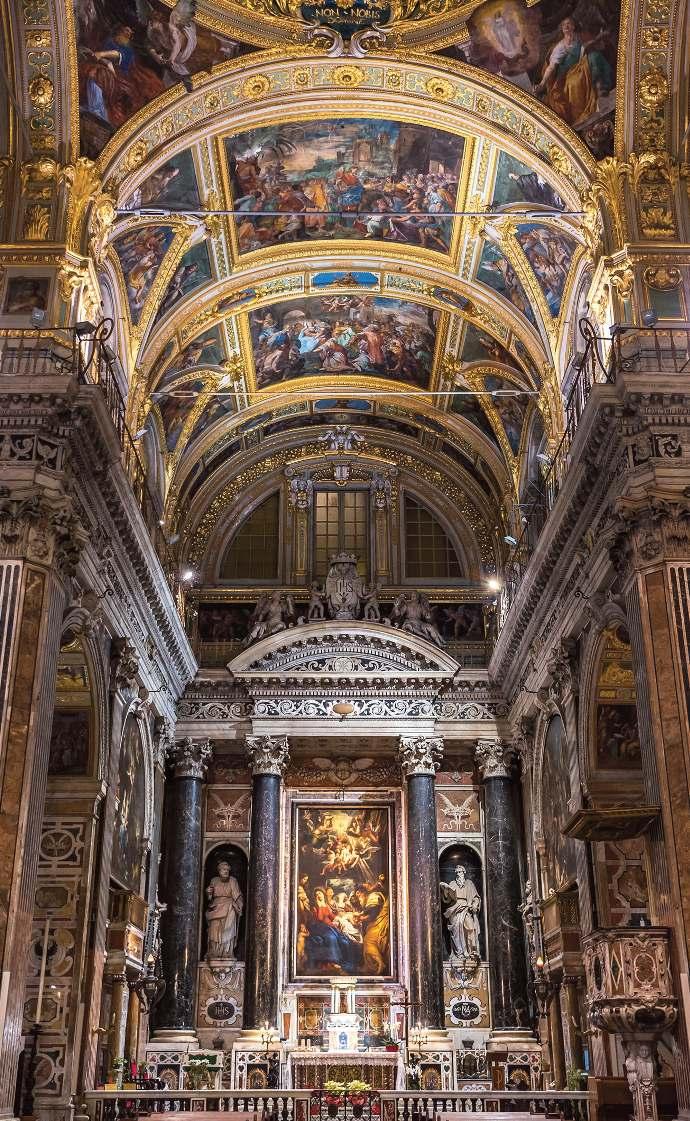
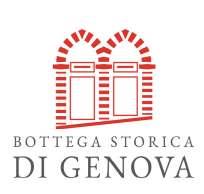
Genoa has managed to preserve, like few other Italian cities, the charm of its historic shops. “Going shop-hopping” through the narrow alleys and small squares is a unique and unrepeatable experience. To protect this uniqueness and pass it on to future generations, the Register of Historic Shops was established in 2011. These are commercial establishments that have been in business for at least 70 years: confec-
Located within the convent of Sant’Anna, founded in 1584, the pharmacy opened to the public in the 19th century. It maintains its galenic and herbal tradition and retains the charming original structure. It offers ancient remedies, bee products, and rose infusions cultivated with care and passion.
Piazza Sant’Anna 8 - tel. 010 2513285 www.erboristeriadeifrati.it

tioneries and chocolatiers, cafes, wine shops, fabric and clothing stores, pharmacies, groceries, taverns, fried food shops and poultry shops, workshops that keep traditional techniques alive, all housed in ancient buildings in the historic districts of the city, with original furnishings and equipment, preserving wisdom from times past. For information and visiting itineraries www.botteghestorichegenova.it.
Antica Farmacia della Maddalena (1680)
Located in a small cell in a medieval building with a vaulted ceiling; on the facade is a large Art Nouveau iron lamp representing a griffin holding a lantern. In addition to 17th-century bronze mortars, the pharmacy has a collection of early 20th-century brass and Bakelite inhalers, ancient ceramic jars from Albissola and Faenza, mercury densimeters, old suppository molds, and cases of 19th-century medicines and ancient documents.
Piazza della Maddalena 16 r - tel. 010 2474242 www.farmaciamaddalena.com
The shop in piazza Soziglia, active since 1814, is a true jewel: silk frescoed ceiling, inlaid shelves and counters, mirrors, and marbles. In a magical atmosphere similar to Parisian confectioneries, it offers candied fruits, preserves, fondants, candies, chocolates, and violets. The store on via Roma, opened at the end of the 1920s, is a simple yet unusual environment, elegant but homely, with beautiful mirrors, chandeliers, and furniture by the Genoese artisan Bisso. Piazza Soziglia 74-76 r - tel. 010 2474574 Via Roma 51 r - tel. 010 819051 www.romanengo.it
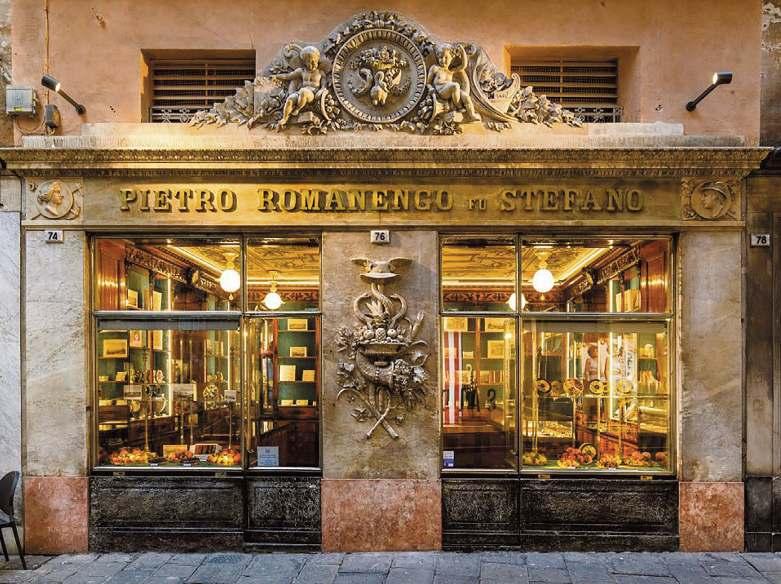
Founded in 1780 as Cioccolateria Cassottana, it was renamed Marescotti in 1906. Since 2008, after years of closure, the pastry shop has been managed by Alessandro Cavo, the fifth generation of pastry chefs who invented the famous Voltaggio amaretti in the late 19th century. It is located in the 13th-century Gattilusio loggia and retains precious Charles X style furnishings.
Via di Fossatello 35-37 r - tel. 010 2091226 www.pasticceriacavo.it
Its centerpiece is the white Carrara marble counter, composed of a top and a fascia balustrade supported by pillars, with elegant and refined lines, some featuring high-relief sculptures of excellent craftsmanship, including figures from the Italian Risorgimento.
Via Macelli di Soziglia 8 r - tel. 010 2474597
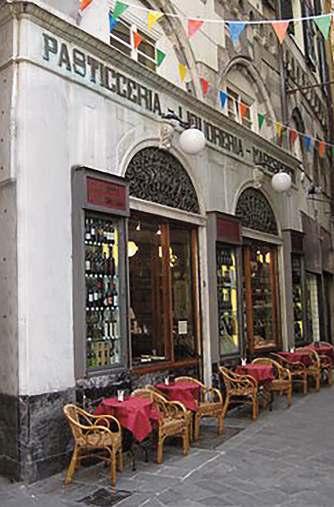

Giovanni Rivara fu Luigi (1802)
The shop, which sold various types of fabrics for personal and home linen and the famous Chiavari macramé, has been passed down from father to son. Rich documentation tells an important part of Genoese economic history and beyond: the fabrics arrived from rich Lombardy as well as by sea from England, Ireland, Holland, and Belgium. Piazza San Lorenzo 36 r - tel. 010 2473252 www.rivara1802.it
Pasticceria Villa di Profumo (1827)
In a scenic fantasy of colours, depending on the seasons, are displayed multicolored chocolate confetti and classic Avola, pralines, marron glacé, Lent treats, candied fruit, fruit pulps, original chocolate olives, mignon pastries, and the typical Genoese pandolce.
Via Portello 2 r - tel. 010 2770002 www.villa1827.it
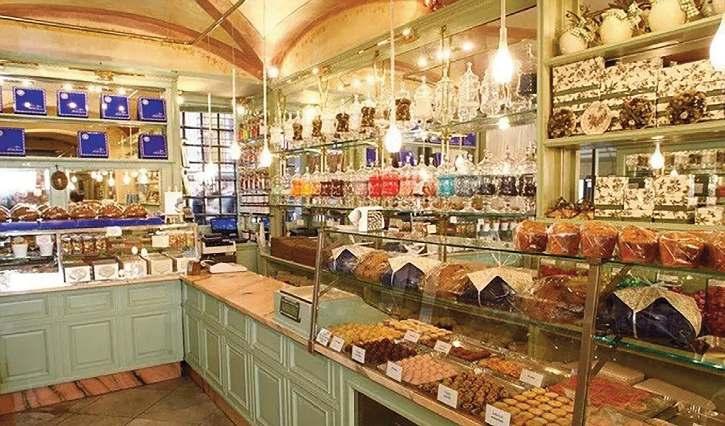
Bar pasticceria Klainguti (1828)
A cultural salon for the city’s high society, frequented by Giuseppe Verdi, for whom the Klaingutis created a special brioche called “Falstaff”. Mirrors, stuccoes, and chandeliers recall Belle Époque atmospheres.
Piazza Soziglia 98 r - Under restoration
Laboratorio del rame (1860)
Over the decades, the Rivarolo workshop has perfected many processes, including high artistic value, but its strength remains the inimitable tinning of copper.
Among the most interesting elements are workbenches with a flattening plate, an original late 19th-century horse, and numerous tools.
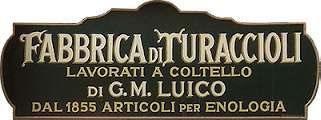
Luico fabbrica turaccioli (1855)
Normalandmoreelaboratecorksinvarioussizes and for all needs, labels, and accessories for bottling; displayed on early 20th-century wooden shelves and drawers are ancient cork working tools and a gold medal received in 1870.
Salita Santa Caterina 17 r - tel. 010 588445 www.luicoenologia.com
Via Celesia 55 tel. 010 7457216
www.laboratoriodelrame.it
Trattoria detta del Bruxaboschi (1862)
A true institution of Genoese gastronomy. Managed by five generations of the same family, it has witnessed Italian history from unification to World War II, when maestro De Barbieri, evacuated there, played the violin.
Via Francesco Mignone 8 - tel. 010 3450302 www.bruxaboschi.com
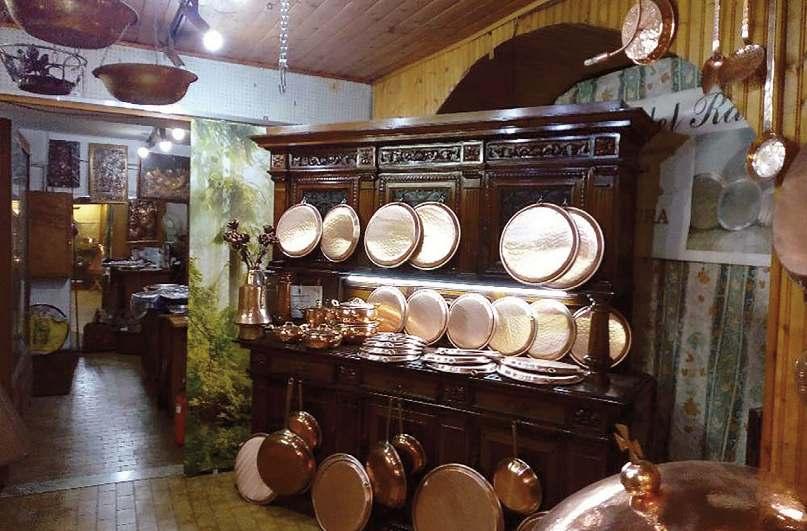

Romeo Viganotti
fabbrica di cioccolato (1866)
Here, chocolate is still processed in vintage machines and molds, following ancient recipes handed down for three centuries. Among the historic products, resulting from a long and careful manual process, are boeri, orange peels, croccantini, cremini, and sugared almonds.
Vico dei Castagna 14 r - tel. 010 2514061 www.romeoviganotti.it
Mangini caffè confetteria e pasticceria (1876)
In one of the city’s most elegant and spacious squares, it evokes atmospheres of times gone by; it maintains the confectionery tradition of the place by producing cakes, pastries, pralines, nougats, the “Sacripantina” cake, and the “Zena” cake traditionally square in shape.
Piazza Corvetto 3 r - tel. 010 564013

Cartoleria Barisione (1878)
It offers refined stationery items and gift items, but the highlight is the participation tickets, through which almost a century and a half of public and private history of the city and the Genoese is told. On the upper floor, period equipment such as cutters, ink bottles, and various matrices are preserved.
Piazza Soziglia 86 - tel. 010 2475389
Arduino antiquariato (1870)
A small but intriguing shop offering antique and vintage jewelry, period and contemporary costume jewelry, medals and decorations from the two world wars, coins from the Genoese Republic, ceramics, Murano glass vases, English silver and Sheffield items, and also its own original creations produced artisanally.
Via Garibaldi 15-17 - tel. 347 7816534 www.arduino1870.it
In the ancient wood-fired oven, farinata is baked, thin and golden, stuffed anchovies, and vegetable pies prepared with prescinsêua, the traditional fresh milk curd.
Via dei Giustiniani 16 r - tel. 010 2468336
Tripperia Casana (1890)
Outside, a beautiful transom and a simple display window; inside, a Genoese floor, barrel-vaulted ceiling, walls with white majolica tiles, as well as the ronfò wrapped in small brown majolica tiles, and the large hood above the copper pots.
Vico Casana 3 r - tel. 010 2474357
Merceria Fassio (1890)
Once through the threshold, with original period window and sign as well as the marble and slate flooring, you enter the oldest haberdashery in Genoa, where the workbench for lining and making buttons, the counter, and wall shelves in wood, which completely cover the walls, date back to the period of the business’s foundation. The beautiful cash register is from the early 20th century. The old wooden drawers preserve and display a wide variety of merchandise:
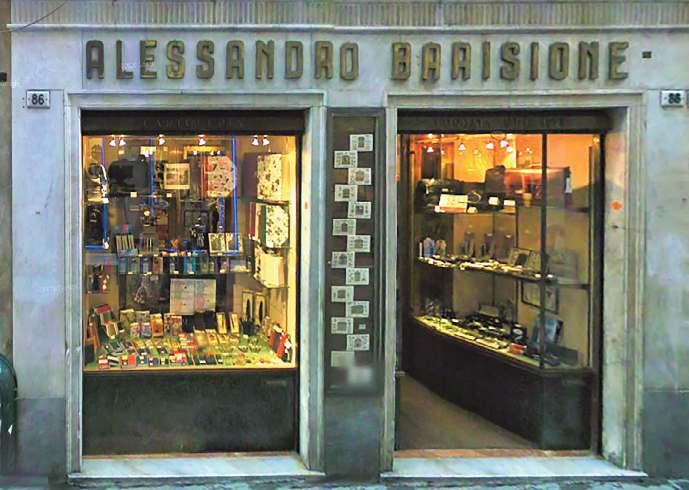
ribbons, buttons, lace, trimmings, beads, hooks, zippers, and all other sewing items.
Via Colombo 69 r - tel. 339 7507685 www.merceriafassio.com
Ghiglino 1893 abbigliamento (1893)
The shop retains most of its original elements: the display windows with the sign, and once you step inside, the column with an early 20th-century capital, wooden counters, 1930s chandeliers, and the staircase leading to the upper floors. Also present are measuring tools, scissors, a beautiful vintage cash register, photographs, and diplomas.
Via XX Settembre 26-28 r - tel. 010 580473 www.ghiglino.it
Luigi Busellato timbri, targhe e incisioni (1896)
The shop houses century-old boxes and drawers containing stamps, punches, sealing wax, plates, studs, and various spare parts. For decades, stamps for shipping documents and seals for packages and letters departing from the port were ordered here.
Via al Ponte Reale 3 r - tel. 010 2472344 www.busellato1896.it

Pissimbono abbigliamento (1898)
A reference point for Genoese men’s clothing, it retains part of the original furniture and fittings, including sewing machines, green marble tailoring tables, and a perfectly functioning late 19th-century National cash register. Via XXV Aprile 64 r - tel. 010 2474248 www.pissimbono.it
Finollo abbigliamento (1899)
Surrounded by the scents of the old English house Floris and period wood paneling, you can breathe the air of the late 19th century among the famous ties and shirts designed by the owners.
Via Roma 38 r - tel. 010 562073 www.finollo.it
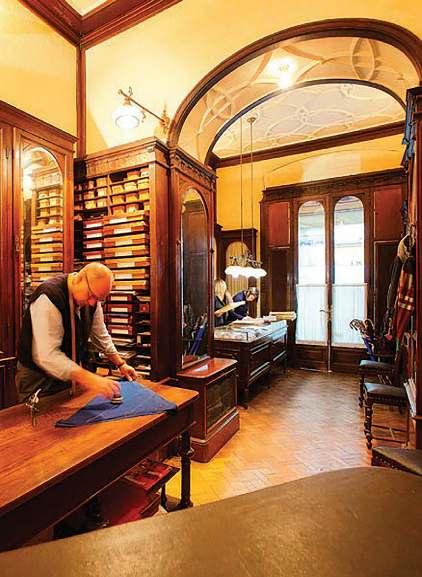
Ostaia de Baracche (18??)
Located along the ancient salt route in the Forti area, its original function as a resting and refreshment place for travelers and convoys that traveled it in the late 19th century is still evident. The floors are made of grit, with
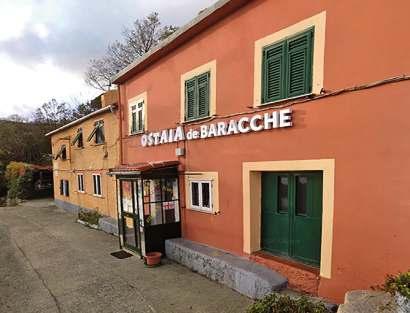
exposed beams and ancient stairs. Significant furnishings include an old wooden cistern, several coat racks, iron chandeliers, and service furniture.
Via delle Baracche 2 - tel. 331 6305719
Cantine Moretti (1906)
The cellars were opened on the remains of the 17th-century Cistercian monastery of San Bernardo, and some wine cisterns were built inside an altar of the church. The venue retains many period tools used for dispensing and selling wines.
Piazza San Bernardo 73 - tel. 349 547 3697 www.cantinemoretti.it
Farmacia Alvigini (1906)
Liberty-style white tiles decorated with cyclamens embellish the harmonious niches; the same floral decorative motif recurs on many pharmacy jars and the historic leech container, which, along with mortars, scales, and other laboratory equipment, constitutes a collection of great value.
Via Francesco Petrarca 14 r - tel. 010 561024 www.farmaciaalvigini.com
Ferramenta Caffarena (1907)
Original period display window and sign, with ancient marble flooring and vaulted ceilings inside. The shop maintains a coherent set of furniture dating back to the early decades of its activity: chests of drawers, shelving, and counter, and preserves historical documents.
Via Chiabrera 60 - tel. 010 2471919
Barberia Giacalone (1908)
Located in a 17th-century building, it was renovated and decorated in Liberty style in 1922 by the Bottaro glassworks. A small gem of elegance and refinement, restored and reopened by the FAI in 1992.
Vico Caprettari 14 r - tel. 340 3477055
Caffè degli specchi (1908)
The wood paneling, the white ceramic tile cladding, the bar shelves, and the large mirrors that give the place its name have a remarkable coherence and undeniable value. It was a meeting point for artists, intellectuals, and writers in the 1920s.
Salita Pollaiuoli 43 r - tel. 010 256685 www.caffedeglispecchi.it
Casella pelletteria e accessori per calzature (1908)
Opened in the Marassi district, where numerous leather tanning factories were active, the shop made custom shoes and sold accesso-
ries, intending to provide the city with an excellent shoemaking service. The shop retains many craft tools: iron shoehorns, scales for weighing leather, decorated bronze heels, shoe stretchers, and wooden and iron forms.
Via del Piano 11 r - tel. 010 870025 www.casellaaccessoricalzature.it
Aresu antica polleria (1910)
A colorful and cheerful shop, with a scenic display of poultry and assorted game, where almost everything is original from the early 20th century: the massive wrought iron door, the display window, the ceiling with hooks and beams, the wall cladding in white majolica with Liberty decorations, and the white marble inlaid counter with lozenge decorations. The wooden and steel doors of the refrigerators, where ice blocks were used to preserve the meats, are well preserved.
Vico Inferiore del Ferro 1 r tel. 010 2474246
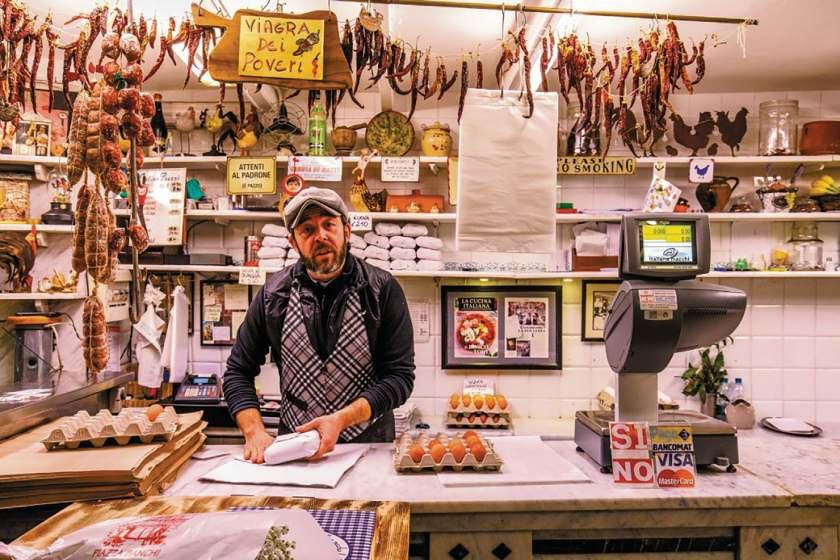
Pasticceria Svizzera
Vital Gaspero (1910)
Located in the palace where Lord Byron once resided, the shop has early 20th-century display windows, sign, shelves, counters, and cupboards, and retains cake pans and ancient copper molds for chocolates handed down by various master confectioners. Via Albaro 7 -

Giallo (1913)
Overlooking terraced vineyards and olive groves down to the Bisagno stream, the trattoria, which offers Genoese dishes faithful to ancient recipes, retains the original tables, a cupboard, a wooden kneading trough still used for kneading, and a ronfò. The kitchen still contains mortars, pestles, and wooden
pipes, copper pans for farinata, skimmers, and aluminum pots.
Via alla Costa di Bavari 3 tel. 010 804758
Gioielleria Magnone (1914)
Located in the historic centre of Sestri Ponente, it retains some documentary evidence and substantial photographic material, as well as a precious old safe.
Piazzetta Banchero 6 r - tel. 010 6048122
www.magnone1914.it
Luigi Stagno calzature (1915)
A Liberty jewel: the round display windows are decorated with festoons and garlands tied with neoclassical ribbons. Inside, there are display windows with mirrors and gilded decorations, a table that serves as a counter, armchairs, stools, the toilet chair, and bronze wall lights. The ceiling is also wooden, with a central medallion decorated with gold leaf.
Largo Sandro Pertini 5 - tel. 010 566743
Lucarda abbigliamento (1920)
The “shop for seafarers” has remained as it was originally: old shelves, walls striped in white and black according to Genoese tradition, and, up the stairs of the ancient palace in Sottoripa, a real “scagno” (the merchant’s office) with wooden walls still from the previous jute warehouse, adorned with memorabilia from the century of ocean liners. Via di Sottoripa 61 r - tel. 010 2476913 www.lucardagenova.com
Pescetto abbigliamento (1922)
A reference point for Genoese for selected fashion brands, cashmere, alpaca, camel, Shetland, and merino knitwear in the refined ground floor environments. Via di Scurreria 8 r tel. 010 2473433 - www.pescetto.it
Sormani farmacia operaia (1927)
An artistic gem facing the Ripa Maris, it is accessed through a beautifully carved portal. The furnishings feature chiaroscuro carvings, pilasters with masks, coats of arms, garlands, and vegetal motifs that cover the entire room with boiserie, from the black and white mar-
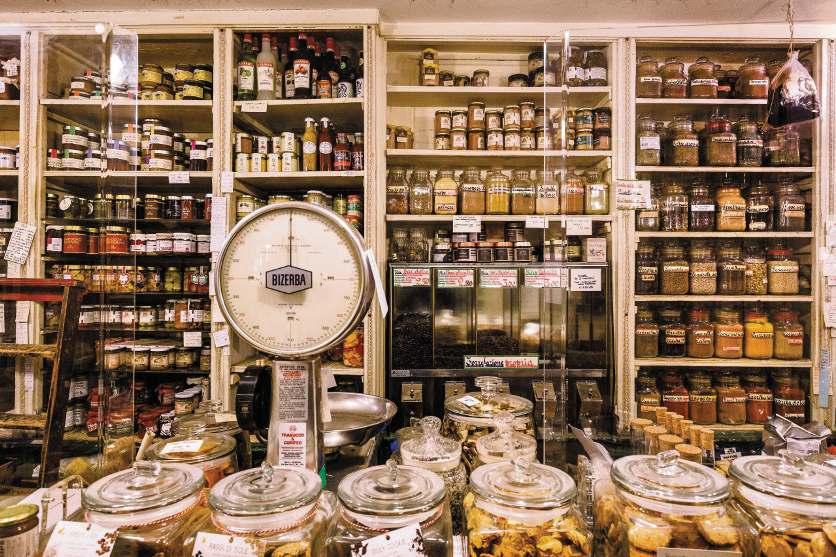
ble floor to the vaulted ceiling. Many precious objects are on display: glass ampoules, metal pill boxes, ceramic jars, bronze mortars, and the famous seltzer bottle.
Piazza della Raibetta 6 r - tel. 010 2468811
Viganego drogheria (1930)
The shop retains its old partitions, wooden ceilings with beams covered with cane, the original tile floor from that period, the door, counters, and drawers for loose products. Everything inside testifies to the old way of selling: decorated tin cans from the early century, a two-plate scale with mirrors, and a cash register dating back to 1920.
Via Colombo 22 r - tel. 331 5956753 www.drogheriaviganego.com
M. Torielli drogheria e coloniali (1930)
The charm and aromas of over 250 types of spices from five continents, teas, coffees, honey, chocolate, essences, candies, and much more, all stored in glass jars with beautifully handwritten labels. The atmosphere is unique
and ancient, with furniture and objects from the late 19th and early 20th centuries: the white lacquered wooden Liberty counter, shelves, showcases, glass containers, and small drawers for various products.
Via San Bernardo 32 r - tel. 010 2468359
Trattoria da Maria (1930)
Inside, in addition to various period documents, there are numerous notes from customers, with thanks, testimonials of appreciation for the cuisine, but also of esteem and affection. The back counter, the cold storage, and the ancient wooden staircase are original.
Vico Testadoro 14 r - tel. 010 581080
Enoteca bar Ricci Giacomo (1932)
A historic wine shop in Pegli that retains its old sign and showcases made of pitch pine set in slate panels. Inside, the charming original furnishings: oak barrels, furniture, and shelves with decorative elements, Thonet chairs and stools, the wooden counter paneled in slate, and numerous period objects
such as corkscrews, water and whiskey jugs, and a “ladra” funnel for testing the wine quality in the barrel.
Via Gerolamo Rovetta 4 r - tel. 010 6967500
Polleria Fratelli Parodi (1932)
In the shop, located in a 20th-century building in the centre of Pegli, almost everything dates back to the opening: the wooden showcases, the terrazzo floors, and stucco ceilings, the imposing marble counter from the Pyrenees and Carrara with high reliefs, the brick and wood hood, the wrought iron chandeliers. Many tools are also present, including an “egg mirror” for determining freshness, a crowbar for unpacking egg crates, and ancient scales.
Via Ignazio Pallavicini 6 - tel. 010 6981135
Zuccotti fabbrica di cioccolato (1933)
The simple furnishings – the external sign, the sales counter, the shelves – reflect the original image of the laboratory, where the old equipment for main processes is still in use among documents and ancient recipe books: refiners, roasters, molds, and copper conches.
Via di Santa Zita 36 r - tel. 010 580504 www.zuccotticioccolato.it
Bottega artigiana del vetro (1937)
Inside, traces of the old flooring and lunetted pavilion ceilings remain. Various tools for glass working are still in use or displayed in special showcases: glass cutters, wheels for sinopias, straightedges for decorative glass, and a grinder, some of which were handmade.
Piazza delle Scuole Pie 3A tel. 010 2477752
Elettrauto Battifora (1938)
The workshop is located in Sestri Ponente, on the ground floor of an eclectic style building. The shelves, sales counter, and workbench are the same since 1938. The test bench built by the founder, still functional, is fascinating. The walls display old advertising plaques; shelves and cabinets house ancient motor parts, voltmeters, and ammeters that are museum pieces.
Via Hermada 10 - tel. 010 6507181
Costa abbigliamento (1939)
The shop window and counter are characterized by cherry wood paneling with floral motif inlays. Inside, a cherry wood boiserie adorns the left wall, where long and thin drawers create lines that converge in the large mirror at the back, while the right wall is decorated with marble slabs containing stucco panels with ancient designs.
Corso Buenos Ayres 15 r - tel. 010 566723 www.costa1939.com
Dallai libreria antiquaria (1939)
Located next to the portal of a Rolli palace, the small shop is a “scagno” (merchant’s office) rich in carefully selected rarities. It has a beautiful wooden and glass display window, which, along with the sign, supports a small flower shelf. A magical environment that tells centuries of history, among ancient books and prints hanging on the shelves, almost protecting the precious bindings.
Piazza De Marini 38 r tel. 010 2472338 - www.libreriadallai.it
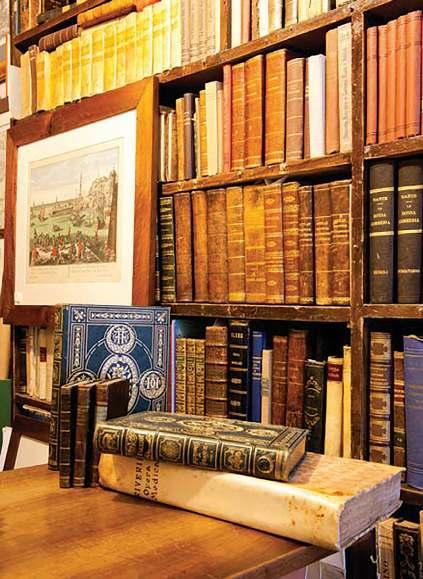
Pasticceria Sansebastiano (1939)
The shop is located on the hill of Carignano, between the Basilica dell’Assunta and the medieval church of Santa Maria in Via Lata. It features walnut wood furnishings – the wooden counter, showcases, and display cabinets – and an interesting collection of equipment: trays, plates, a candy-making machine, mixers, and various utensils.
Via Galeazzo Alessi 9 r - tel. 010 543289 www.pasticceriasansebastiano.it

Under the medieval arcades of Sottoripa, the shop maintains an organic complex of original elements: the tiled counter with a marble top, the large hood above the charcoal braziers, the masonry wood-fired oven covered with mosaic tiles, and the ronfò. Note the cast iron charcoal stove and the grit floor in Genoese style. Almost all small equipment, such as large pots and iron cauldrons, a 1948 spring scale, and pans for farinata are still in use.
Via di Sottoripa 113 r - tel. 010 2470617
Athos abbigliamento (1946)
The underground shop hosts a true museum: counters, shelves, and wall cabinets, a collection of 1950s clothes still with tags and labels, many period objects such as the cash register, the sewing machine, the typewriter, ancient scissors, and a pair of original wooden tailor’s meters officially calibrated by the authorities. Piazza Dante 16 r - tel. 010 591467 www.athosgenova1946.it
Morsia G.B. serrature (1946)
The shop retains its original sign and part of the showcases, the simple interior furnishings – counter, shelves, wall drawers, cash register, and safe – and the painted wooden cladding. An interesting workshop displays old keys, trade tools, and historic locks.
Via Edmondo De Amicis 28 tel. 010 543170
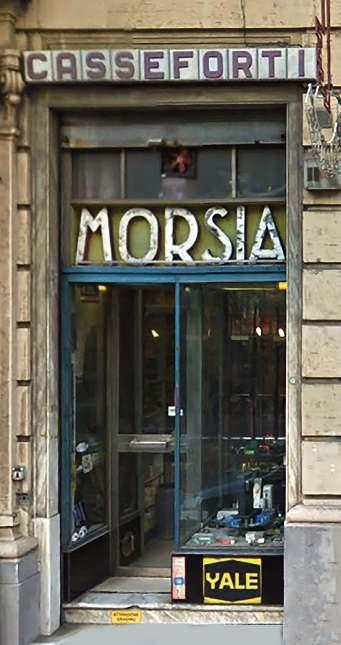
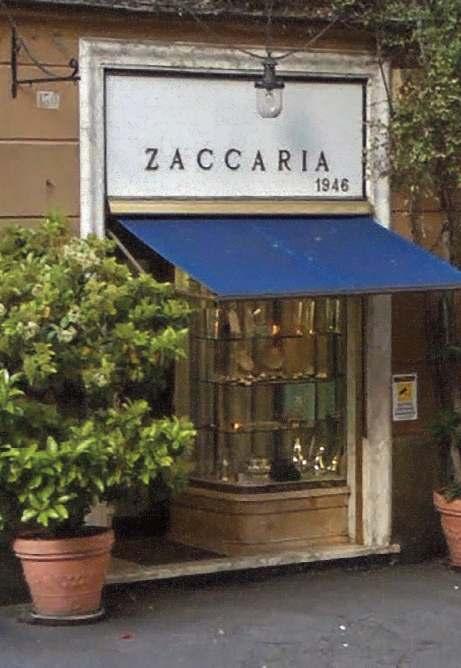
Many notable figures from politics, entertainment, and sports had lunch under its 15th-century vaulted ceiling, and their presence is marked by photographs on the walls. The traditional furnishings largely date back to the opening; shelves and sideboards still house period tools and magazines mentioning the legendary Rina.
Mura delle Grazie 3 r
tel. 010 2466475
The showcases with a jellow marble base date back to the opening; inside are late 19th-century furnishings: the wooden counter, armchairs, stools, tables, display cases, trunks, exhibitions furniture, a coin drawer, and naturally the safe. Many tools are also preserved, some still in use, including a watchmaking lathe, a sleeve for adjusting ring widths, calipers, pliers, tongs, and two precision scales with wooden bases and brass plates for for weighing precious metals.
Corso Buenos Aires 130
tel. 010 581994

Albergo Ristorante Nazionale
Via Gallino 25 r tel. 010 7211632 nazionale1891.wordpress.com
Bernardini Wood
Via Tripoli 28 tel. 010 507300 www.bernardinilegno.com
Farmacia Giusto
Via Bruno Buozzi 59 r tel. 010 261962
Gioielleria Cavo
Via San Lorenzo 101 r tel. 010 2469401
Gioielleria Pisano
Via Fieschi 2/12 tel. 010 581507 www.pisanogenova.it
Les Gourmandises
Via Sapello 26 r tel. 010 660508 www.lesgourmandises.it
Ostaja San Vincenzo
Via San Vincenzo 64 tel. 010 565765
Panarello
Via Galata 67 r tel. 010 561037 www.panarello.com
Pasticceria Tagliafico
Via Galata 31 r tel. 010 565714 www.pasticceriatagliafico.it
Pedemonte
Electrical Material
Via del Campo 54 r tel. 010 2472096
Pittaluga Fabrics
Piazza del Monastero 10 r tel. 010 6457456
www.pitcasa.com
Ristorante Vittorio al Mare
Belvedere Edoardo Firpo 1 tel. 010 3760141 www.vittorioalmare.it
Steri Giovanni & C.
Via Sottoripa 125 r tel. 010 2476923
Art and Architecture
Studio Albertella
Via Orsini 29-31 r Tel. 010 3623472 www.vetratealbertella.it
Trattoria del Parroco
Via Righetti 2 r tel. 010 3620428
Trattoria La Ruota
Via Oberdan 215 r tel. 010 3726027 www.trattorialaruota.com
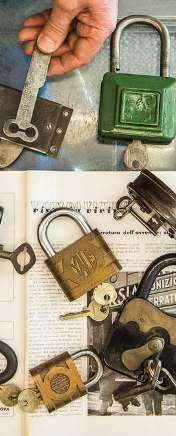




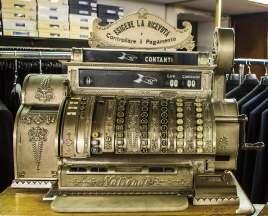













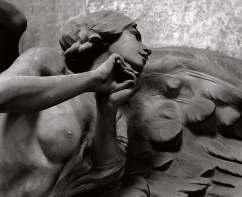
Designed in 1835 by Carlo Barabino in neoclassical style and later completed, after his death, by his pupil Giovanni Battista Resasco, the cemetery was inaugurated, albeit still unfinished, on January 1st, 1851. The original core structure is quadrangular; expansions in subsequent decades were accompanied by extensive vegetation growth, lending the site a distinctive blend with the natural environment, rich in evocative qualities. It houses monuments spanning over a century of artistic languages, from neoclassicism to realism, symbolism, Art Nouveau, and Art Deco. Here lie members of noble families and citizens of Genoa, as well as famous foreigners who visited the city, such as Oscar Wilde's wife, Constance Mary Lloyd Wilde; among the others Giuseppe Mazzini, Nino Bixio, Raffaele Rubattino, Gian Carlo Di Negro, Enrico Alberto d'Albertis, Gilberto and Rina Govi, Fabrizio De André, and Edoardo Sanguineti.
The Boschetto Irregolare (irregular grove), inspired by romantic garden designs, contains the graves of the Thousand and other heroes of the Risorgimento.
Staglieno was a tourist attraction for celebrities and noble people from all the world: Friedrich Nietzsche, Guy de Maupassant, Mark Twain, Empress "Sissi" Elisabeth of Austria, and Ernst Hemingway were enchanted by the site and mentioned it in their writings.

Piazzale Resasco
Tourist and cultural information point, open MondaytoFriday9:00-15:00-tel.0105576470 www.staglieno.comune.genova.it/it
For guided tour bookings and further information, visit www.exploratour.it/staglieno/.
Opening time: every day 7:30-17:00; closed on January 1st and 6th, Easter Monday, June 24th, August 15th, and December 26th.


As tangible sign of the great devotion of the Genoese, the votive niches find their origins in the Christian tradition dating back to the Middle Ages, primarily linked to the worship of Mary. A tradition destined to reach its peak in the 17th century, after the city's consecration to the Madonna, who was named Queen of Genoa. In 1630, Pope Urban VIII decreed that in ceremonies precedence should be given to cardinals and ecclesiastical electors over anyone without royal rank. The lack of a monarchy thus seemed to be a weakness for Genoa, which responded by proclaiming the Madonna the Queen of the city. It was a political, rather than religious, response that reveals the cunning and diplomacy of the leaders of the Republic as no one could fight against the Madonna. After the solemn coronation, which took place in the cathedral on March 25th, 1637, by the hands of Archbishop Giovanni Domenico Spinola, the effigy of the Madonna was depicted on coins. The gold shields of the Republic, which until then had borne the image of the turreted city, after five hundred years replaced the subject with the Madonna on the clouds, crowned with stars, with the Child in her arms and the scepter. The Grand Council of the Republic ordered that the motto "ET REGE EOS" be engraved on every gate of the city and, to legitimize the new Kingdom, Marian images were placed on public and private buildings. The votive niches became a way to consecrate the city to the Madonna, and for this reason, between the 17th and 18th centuries, they were placed on every street, alley, and square, so much so that by the 19th century there were as many as 849.
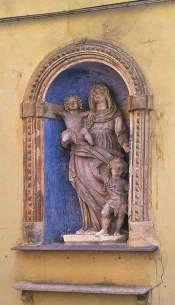
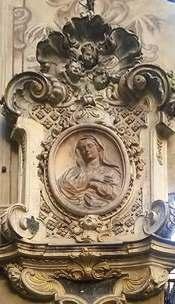
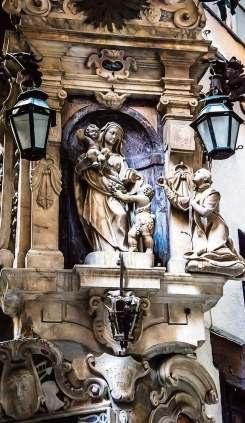



To discover some of the most significant votive niches in the city, you can follow two different dedicated itineraries: www.loquis.com/it/channel/61340/Comune+di+Genova+Le+Edicole+Votive+Tour+Regina+di+Genova www.loquis.com/it/channel/60109/Comune+di+Genova+Le+Edicole+Votive+Tour+dell+Immacolata

The Commenda di Prè was the ancient hospital of the knights of St. John of Jerusalem: one of the most interesting complexes from the romanesque period, built starting in 1180 by the Jerusalemite knights, ancestors of the knights of Malta, where the Church of the Holy Sepulcher once stood. Assistance was provided here to pilgrims and crusaders traveling to and from the Holy Land. The three floors included the convent, the hospital, and two overlapping churches dedicated to St. John. The lower church, the smaller of the two and intended for the people, is divided into three naves with cross vaults. The niche carved into the base of the bell tower contains the date of inscription and the epitaph of the founder. The upper church, reserved for the knights until 1731, is charac-

terized by rectangular cross vaults, massive colonnades, and transept pillars. The beautiful bell tower has three orders of triforiums and a pyramidal spire. Today, the Commenda houses the Italian Emigration Museum (p. 42).
The gate, named after the Vachero family, who owned many buildings in the area, closes the western side of the city walls known as the “Barbarossa Walls”. These walls were built to defend the Republic’s autonomy from the expansionist ambitions of Frederick Barbarossa, emperor of the Holy Roman Empire. The construction of this important work, completed in a very short time between 1155 and 1159, engaged the majority of Genoese citizens both materially and financially. The two semicircu-
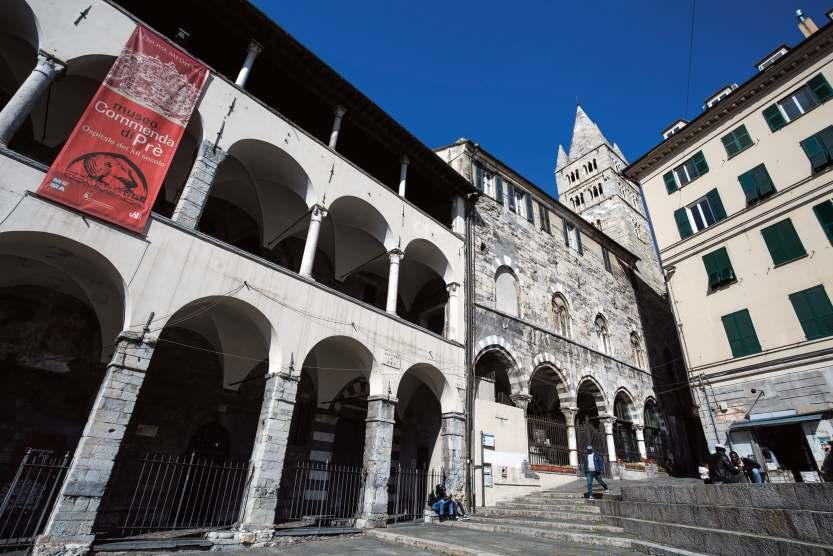

lar towers are connected by a pointed arch; the mountain-facing tower was incorporated into the Serra Palace in the 18th century, while the sea-facing tower was made visible again thanks to the 1960 restoration. The inner façade, with double columns featuring phytomorphic and zoomorphic capitals, is noteworthy.
Genoa did not have a public building until 1257 when the Captain of the People, Guglielmo Boccanegra, decided to build one near the Ripa Maris, the economic centre of the city. The Antelamic Masters from Lombardy, under the guidance of friar Oliverio, constructed the building like a pier jutting into the waves. The palace served as the town hall for only two years, until 1262 when Boccanegra was deposed and exiled. The city government headquarters moved to Palazzo Ducale and Palazzo San Giorgio became the seat of the magistracies overseeing port traffic, soon housing the customs and the offices of the “Compere”, which managed loans made by citizens to the municipality. According to tradition, in 1298, after the battle of Meloria, the Venetian Marco Polo was imprisoned there and dictated his masterpiece, The Travels of Marco Polo, to Rustichello da Pisa who was in jail too. In the 15th century, the palace passed to the Banco di San Giorgio, the powerful credit institution that managed the Republic’s public debt and administered overseas taxes and colonies. The institute also oversaw the palace’s renovation, with the sea-facing façade
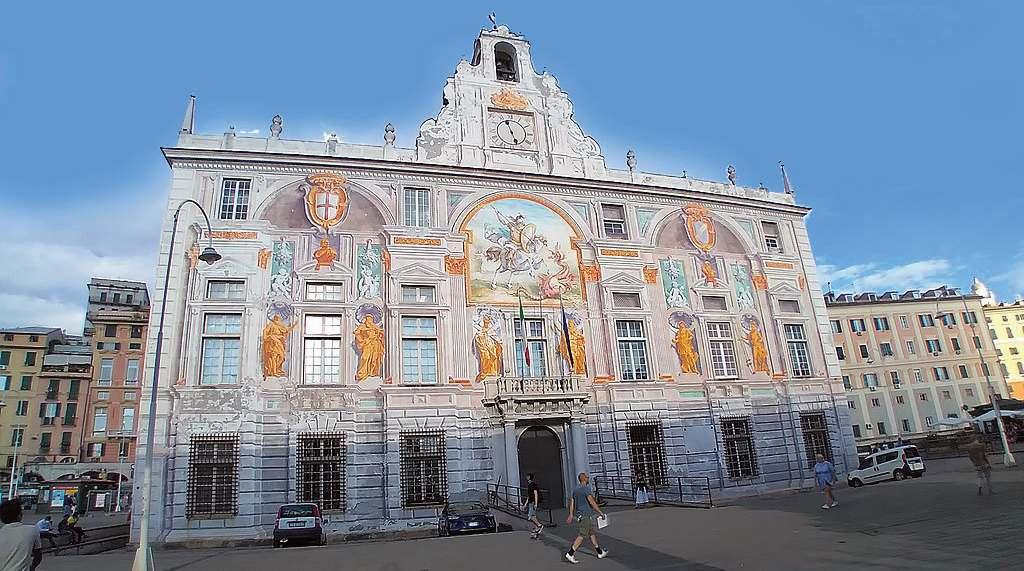
originally frescoed by Lazzaro Tavarone (16061608) with the image of St. George slaying the dragon. The medieval section, with its portico of five gray stone arches, exposed brick upper floors, triforiums, and Ghibelline crenellations, was restored and extensively remodeled in 1890 by Alfredo D’Andrade. Today, the palace is the seat of the Port Authority.
tower is the tallest in Genoa and the only one to have survived the 1296 ordinance that required all city towers to be reduced in height to honour the figure of Guglielmo Embriaco, conqueror of Jerusalem in 1099.
It is one of the most hidden, evocative, and fascinating places in Genoa, secluded and silent, surrounded by tall, narrow, and colourful houses; an intimate and cozy corner where time seems to have stopped. The site was used as early as 1039 to bury foreign prisoners. It is said that in 1284, after the battle of Meloria against Pisa, the bodies of thousands of captured Pisan sailors were laid to rest here. Only from the 1500s it was authorized the construction of the houses we admire today. The square is paved with an evocative risseu, the typical Ligurian mosaic of black and white pebbles.
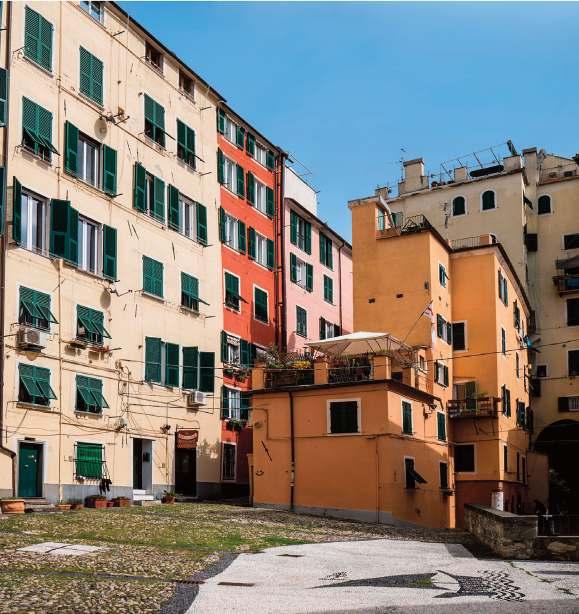
All around piazza Embriaci, the ancient domain of the powerful family of the same name, there are many traces of medieval splendour, such as the marble columns revealed by recent restorations and the palace’s defensive walls, with the precious 16th-century portal commissioned by the Cattaneo family. Behind the palace stands the 12th-century tower, characterized by its rusticated stone blocks and crowned with corbels and battlements. The
On the Sant’Andrea Plain stands the majestic Porta Soprana, dating back to the 12th century and characterized by two towers separated by a pointed arch. The gate, called “Superana” because it was located in a dominant position on the hill, was one of the five gateways that opened in the “Barbarossa Walls” and was the main access to the city coming from the East. There are commemorative plaques celebrating the glories of Genoa. «If you bring peace, you are allowed to touch these gates» reads a Latin inscription that warns the

stranger not to have aggressive intentions because the Genoese can defend themselves very well.
An example of a well-preserved high-medieval noble settlement, piazza San Matteo, with its 14th-century church of the same name surrounded by palaces with the characteristic bands of white marble and black stone from Promontory, constituted the court of the Doria family and the tangible sign of the power of a great family in the medieval life of Genoa. The oldest palace is that of Branca Doria (no. 13), built simultaneously with the church, with its original façade on vico Falamonica. Behind the palace, overlooking the square with the arch of the portico, the precious quadrangular cloister with paired columns and pointed arches was built at the beginning of the 14th century. Branca Doria is remembered in the 33rd canto of Dante’s Inferno: Dante places him among the traitors of guests for having his father-in-law slaughtered.
The façade of the palace of Domenicaccio Doria (no. 16) still features a portico with three pointed arches and octagonal pillars.
The Doria Quartara Palace (no. 14) was built in the 15th century by Giorgio Doria, incorporating some medieval houses and was included in the list of Palazzi dei Rolli. The magnificent overdoor by Giovanni Gagini from 1457 depicts saint George and the dragon, an emblem reserved for a select number of families who served the homeland. On the main façade and in vico San Matteo, traces of a quadrature decoration are visible,
while in vico dell’Umiltà, the medieval masonry and the blocked portico emerge. The Lamba Doria Palace (no. 15) is characterized by the portico with four arches and octagonal pillars and the multiforiums transformed into windows in the 17th century. It was donated by the Republic of Genoa to Lamba Doria in recognition of his valour as a commander during the battle of Curzola (1298), where the Genoese won an important victory over the Venetians. Heavily damaged during World War II, it was recovered starting in 1950.
The palace of Andrea Doria (no. 17) is of Renaissance origin, built in 1468 for Lazzaro Doria and donated to the admiral by the Senate of the Republic in 1528, as testified by the inscription above the portal. However, Andrea Doria always preferred to reside in his suburban villa in Fassolo.
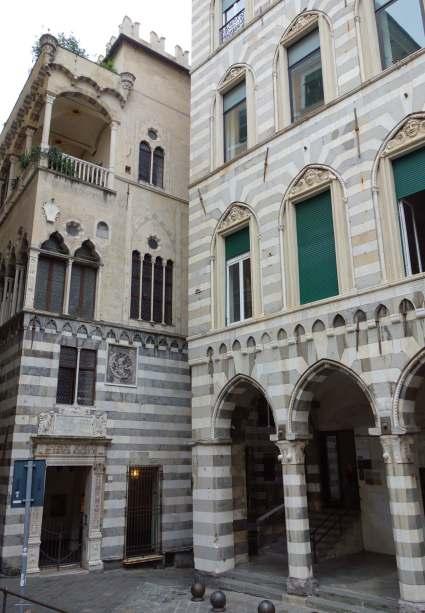

In 1992, on the occasion of the celebrations for the 500th anniversary of the discovery of America, architect Renzo Piano designed the redevelopment of the ancient port area to return it to the city: several new structures were added to the pre-existing buildings from various eras.
The Porto Antico area thus became a true urban park that stretches from piazza Cavour to Ponte Parodi, where it is possible to walk, have an aperitif or ice cream, dine, shop, go to the cinema or a concert, ice skate, or dive into a pool.
To consult the calendar of scheduled events: https://portoantico.it/

One of the main aquariums in Europe, with a vast representation of the aquatic environments of our planet.
In its 70 tanks, it offers an incredible display of biodiversity: from tropical fish to jellyfish,
from amphibians to plants that survive in the great depths of the sea.
The large Cetacean Pavilion allows you to admire dolphins from every point of view.
The Biodiversity Pavilion is the “green” continuation of the visit to the Aquarium: the route winds along the Blue Ship to illustrate the rocky Mediterranean coast with a touch

tank where you can stroke rays; the landscape of Madagascar is reconstructed with the tropical lagoon tank, alligators, corals, and the dense vegetation of the typical forest.
Ponte Spinola Tel. 010 23451 www.acquariodigenova.it
Open 365 days a year with varying opening times depending on the season; online booking is recommended.

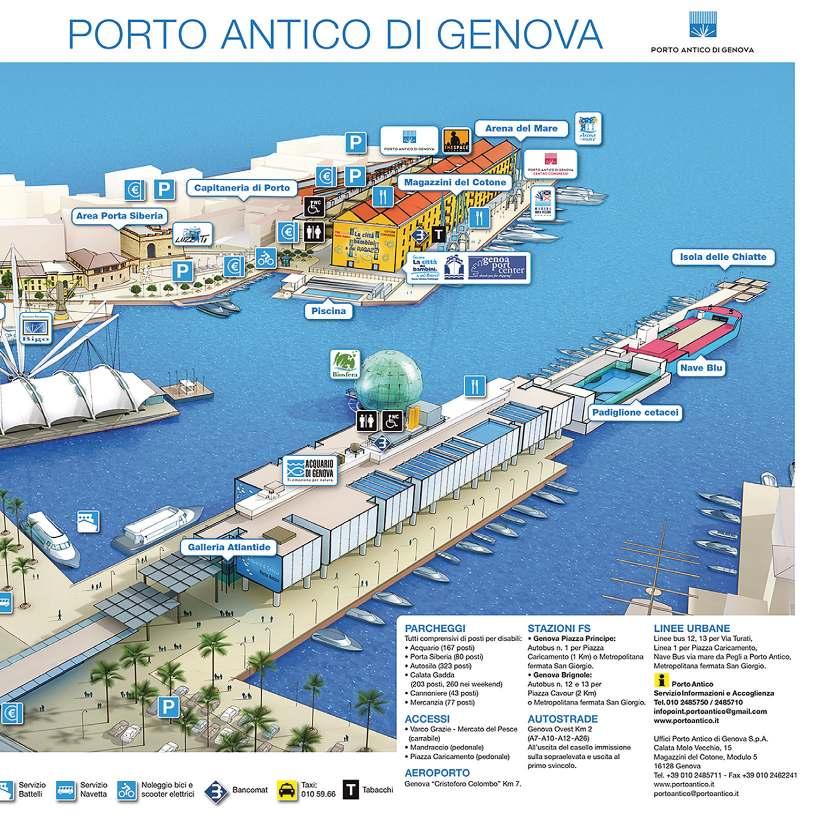

A symbol of the Porto Antico, beloved and iconic almost as much as the Lanterna, the Bigo is the panoramic elevator that offers a unique viewpoint over Genoa. Designed by Renzo Piano, the Bigo resembles the old cranes that used to move goods in the port. Every day of the year, every 10 minutes, the circular structure gently rises to a height of 40
meters and offers a 360° view over the port and the city. Several multilingual photographic panels and an audio recording illustrate, on one side, the city with its ancient palaces, the labyrinth of caruggi, and the bell towers rising above the slate roofs; and on the other side, the port with the bustling activity of its docks. For schedules and ticket purchases: www.acquariodigenova.it/biglietti/
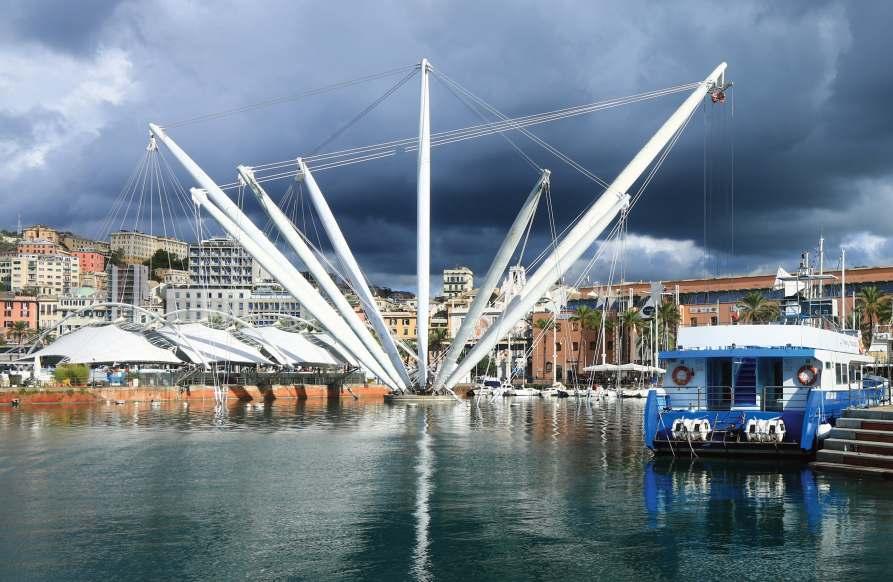
The Biosphere – a steel and glass bubble – is the scenic spherical structure located in the Porto Antico of Genoa, designed by Renzo Piano. It is the place to learn about the fauna and flora of tropical forests, delicate ecosystems threatened by human exploitation. Visitors can observe over 150 plant and ani-
mal species up close, admiring their beauty and fragility.
There are rare specimens of tropical plants traditionally used by humans, such as the chewing gum tree, the coffee plant, banana, and cinnamon.
For schedules and ticket purchases: https://www.acquariodigenova.it/biglietti/


An exhibition path that uses the “five senses” as a tool to impart knowledge and have fun, guiding children and young people on a journey of self-discovery and exploration of the world through play and direct experience. During the visit, it is possible to move freely from one room to another to discover, play, and explore our own senses in a technological, colourful, contemporary environment, surprising even in its scenic setups.
The Città dei Bambini e dei Ragazzi spans over 2000 square meters with equipped areas. There are also spaces designed for the youngest visitors, from 2 to 4 years old, with particular attention to mothers, fathers, and their needs. Many services are available: party area, relaxation area, nursery area, shop, and refreshment point.
Ponte Spinola 4
Tel. 010 2345920 www.cittadeibambini.net
Opening times: every day from 10 am to 6 pm; online booking is recommended.
Located in the heart of the Porto Antico of Genoa, in the Magazzini del Cotone, the library occupies a space of 2000 square meters, bright and comfortable, with a splendid view of the old port docks. It is a welcoming place designed for reading but also for the activities it offers daily to children and young people, as well as to teachers, parents, and educators. The library has about 180 reading seats, a “soft space” for reading with the little ones, small tables for
young readers, and open shelves that host more than 75,000 volumes and comics, from children’s literature to adult fiction, with special attention to the field of pedagogy.
Magazzini del Cotone - 1st Module, 2nd floor Tel. 010 5579560
www.bibliotechedigenova.it/contenuto/sede-5 Opening times: Monday to Friday 9:00-19:00; Saturday 9:00-13:30; closed on Sundays and holidays.

A massive building dating back to 1551-53, designed by Galeazzo Alessi, Porta Siberia was part of the 16th-century walls and was used as a customs area. It is believed that its name derives from “cibaria” (foodstuffs) because, through this gate, food supplies destined for the city arrived by sea and those departing for other Mediterranean ports. The restoration of the interior spaces has enabled the setup of structures that host artistic and photographic exhibitions.
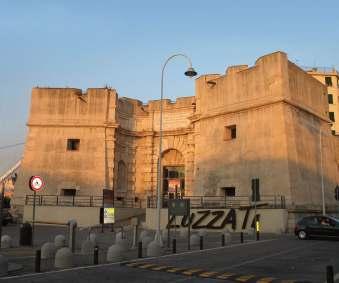
Built between the late 19th and early 20th century as general warehouses to address the lack of storage facilities for goods awaiting shipment, the two large buildings were later
connected by a bridge crane and designated as cotton warehouses. Today, the new complex hosts a conference center, a multiplex cinema, exhibition spaces, commercial areas, and dining facilities.

The four buildings are the last remaining structures of the duty-free port area where goods in transit, both incoming and outgoing, were stored. They were part of a vast district consisting of eleven buildings, constructed between the mid and late 17th century, isolated from the rest of the city by walls and connected, to the west, to the 16th-century gate known as the Mercanzia Gate, the access point to the namesake pier and Palazzo San Giorgio. Today, the four surviving buildings, along with the 19th-century Millo building, are part of the Porto Antico of Genoa.
Bigo. Foto: Benjamin Smith

Villa Brignole Sale
Duchessa di Galliera
Vico Nicolò da Corte 2 - Genova Voltri www.villaduchessadigalliera.it
Opening time: every day from 8:00 to sunset
32 hectares and 18 kilometers of pathways make up this 18th-century park, featuring an Italian garden, a romantic woodland, a neoromanesque castle with artificial grottos and waterfalls, olive trees, fallow deer, goats, and an ancient sanctuary located on the hills overlooking Voltri and the Ligurian Sea. In 1699, the Marquis Anton Giulio Brignole Sale commissioned the construction of the formal garden, completed in 1711. In 1803, Emanuele Andrea Tagliafichi worked on the English garden; in 1814, Carlo Barabino completed the “Lion” woodland, and in 1872, Maria Brignole Sale De Ferrari, Duchess of Galliera, created the vast romantic garden designed by Giuseppe Rovelli. In
1888, the Duchess bequeathed the villa to the Brignole Sale Charity Foundation. Since 1931, it has been used by the Municipality of Genoa.
Beyond the magnificent Italian garden, one ascends to the “Lion Valley”, a pathway inspired by Dante’s Divine Comedy, recently restored, featuring scenographic elements that captivate visitors among ruins, marbles (including the Lion), and the Hermit’s grotto. The arch ideally marked the passage to the underworld, and from there, a path of elevation led to the area – now fenced for deer –that was traversed by purifying water, inviting one to look up towards the Sanctuary of Our Lady of Grace. Behind the villa is the romantic English woodland. In the Belvedere area stand the Coffee House (1803), the castle, rocky ponds, and a grotto system, representing one of the most significant examples of romantic woodlands in Liguria. Inside the park, there are also bunkers and a network of underground tunnels built during World War II.

Villa Durazzo Pallavicini
Via Ignazio Pallavicini 13 - Genova Pegli www.villadurazzopallavicini.it
Opening times: from March 1st to October 31st, from Tuesday to Sunday, with hours varying with the seasons; closed from Novem-
ber 1st to February 29th, except for special openings. Entrance fee.
The historic park of Villa Durazzo Pallavicini, named the “Most Beautiful Park in Italy” in 2017, boasts unique architectural, artistic, landscape, and botanical features.
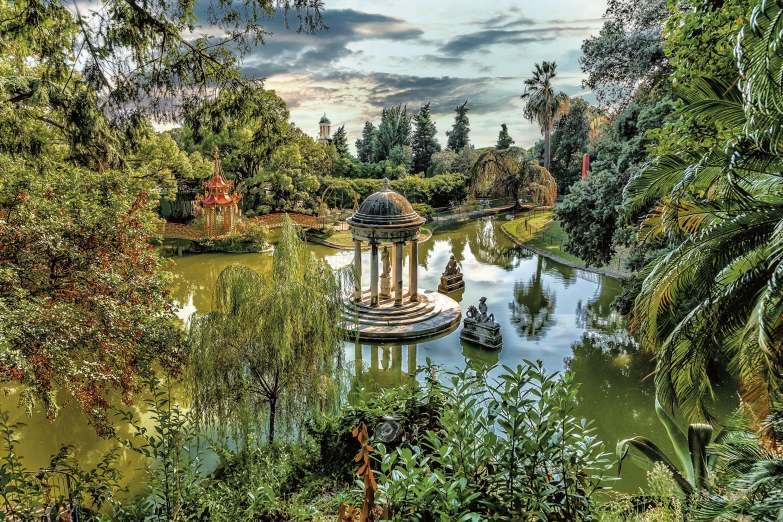

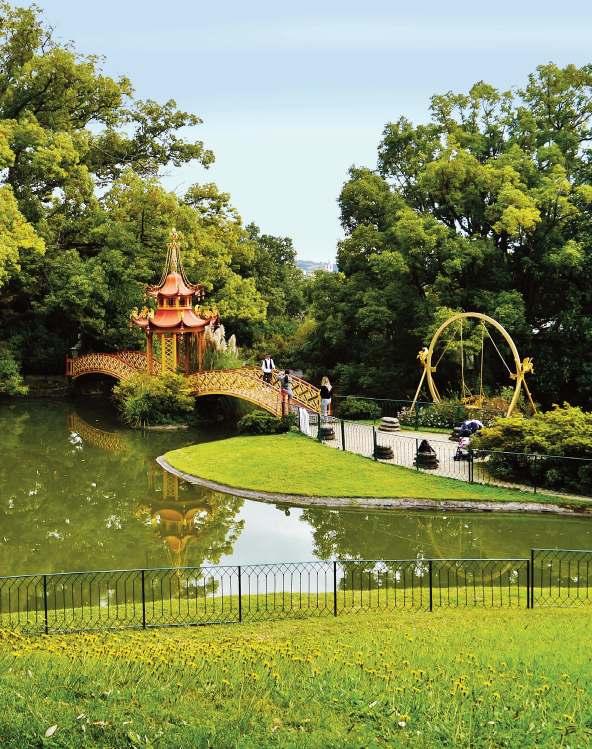
It was built starting in 1840 and inaugurated on September 23rd, 1846, for the Italian Scientists’ Congress. Designed by architect Michele Canzio, scenographer of the Carlo Felice Theatre, at the behest of Marquis Ignazio Alessandro Pallavicini, it is an excellence in Italian and European romantic historical gardens. It develops on the steep side of a hill completely transformed to create flat spaces, large water basins, and a maze of paths climbing from the entrance to an altitude of 134 meters. Among its peculiarities stands out its structure based on a theatrical narrative with esoteric and Masonic nuances, making the visit a historical, cultural, land-
scape and botanical, but also meditative and philosophical experience.
The path is divided into three acts, each composed of four scenes characterized by scenic artifices capable of appropriating the panorama. The use of exotic and indigenous vegetation creates emotional atmospheres; the rich surface water system is remarkable, it includes two lakes, waterfalls, streams, fountains, and numerous garden architectures in neoclassical, neo-gothic, rustic, Chinese, and exotic styles. In the 19th century the park was an important stop in the Grand Tour; in 1928 Princess Matilde Giustiniani ceded the park to the Municipality of Genoa. The itinerary starts from the villa’s main entrance, located next to the Genoa Pegli railway station. The access avenue leads to the building that was once the summer residence of the Marquises, now housing the Museum of Ligurian Archaeology (p. 41). Not far away is the beautiful Botanical Garden, initiated in 1794 by Marquise Clelia Durazzo, a botanical expert. After entering the actual park, with its almost theatrical scenographies and going beyond the Gothic Tribune, one walks to the Coffee House where noble guests sipped the precious beverage and proceeds along the Classical Avenue to the Triumphal Arch, and then temples, obelisks, grottos, lakes, pagodas, rare and majestic trees.
Villa Doria
Piazza Bonavino 7 - Genova Pegli
Opening time: every day from 8:00 to sunset With 115,000 square meters of park behind the villa built in the 16th century for the wealthy banker Centurione, Andrea Doria’s

in-law, inhabited by Prince Gian Andrea Doria and descendants, the complex represents an important evidence of the 16th-century Genoese suburban villa model, preserving significant elements of histori cal, cultural, and vegetational value. There is an artificial lake built in the second half of the 16th century by archi tect Galeazzo Alessi; in the middle of the lake there is an island where two statues of satyrs once stood, spouting water. A small bridge con nected the two shores, allowing a complete circuit around the basin.
Villa Rossi Martini
Piazza Poch 4 - Genova Sestri Ponente
Opening time: every day from 8:00 to sunset
This noble Genoese villa, better known simply as Villa Rossi, was built by the noble Lomellini family in the 17th century and soon sold to the Centurione Spinola family. In 1855, it was bought at auction by the Rossi Martini family, who expanded the beautiful park. The park, which has remained virtually intact to this day, measures about 40,000 square meters and represents the green lung of the Sestri Ponente district. The English-style design was created by landscape architect Giuseppe Rovelli, who used various species of palms, at that time considered highly sought-after plants. To the north extends a large clearing entirely surrounded by tall trees: pines, cedars, holm oaks, cypresses, and palms. The park is often used for cultural and leisure events, especially in the summer season.

Via Lodovico Antonio Muratori 5
Genova Cornigliano
www.percornigliano.it
Opening time: every day from 8:30 to sunset.
Built starting in 1752 for the Marquis of Gabiano, Giacomo Filippo Durazzo II, it is a precious and innovative example of 18thcentury residential architecture. The layout is typical of French aristocratic residences, with a central building flanked by two wings around a large courtyard; the interior of the
The park of about 6,000 square meters was renovated by the “Per Cornigliano” society and opened to the public in 2009; every summer it hosts various cultural events, exhibitions, concerts, shows, and conferences.
Piazza del Principe 4 - Genova www.doriapamphilj.it/genova/

building features an impressive marble staircase and houses two paintings by Francesco Solimena, dated around 1717. In 1856, the construction of the new Genoa-Voltri railway altered the park’s appearance, severing the building’s connection to the sea. In 1865, the villa became the property of the House of Savoy, and king Victor Emmanuel II chose it as the summer residence of his son, prince Oddone of Savoy.
After his premature death in 1866, the villa was put up for sale again. In 1872, it passed to Cavalier Patrone and at the end of the 19th century to the Bombrini family.
Opening time: Monday to Sunday 10:00-18:00, last entry at 17:00. Entrance fee.
Over the centuries, the garden of Villa del Principe has changed shape several times, maintaining its dual role as a natural wonder and historical testimony. Andrea Doria endowed his residence with splendid gardens, extending from the sea to the Granarolo hill. The creation of the “delightful gardens” that welcomed emperor Charles V during his stay at the Villa in 1533 is probably linked to Perin del Vaga. From this period, the Dolphin Fountain has survived. Doria then commissioned the Florentine Giovanni Angelo Montorsoli to create «new additions of buildings and beautiful gardens»: the Triton Fountain is evident testimony of this. It was Giovanni Andrea who commissioned architect Giovanni Ponzello to carry out works destined to give the monumental complex its definitive appearance. By the end of the 16th century, the seaside garden appeared as a
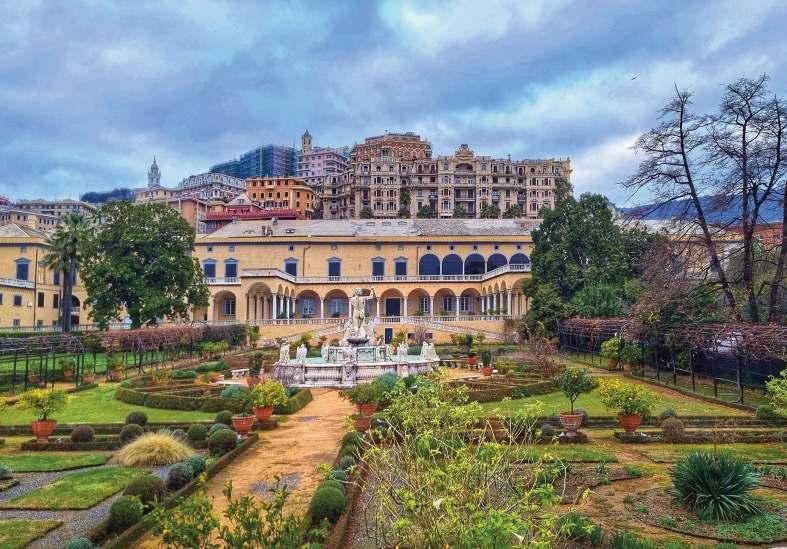
large space articulated in geometric shapes, around the central pivot of the Neptune Fountain. Two “delightful” architectures struck visitors: the large aviary, which in its ornate iron structure a hundred meters long housed thousands of birds, and the grotto, still existing but completely decontextualized, covered with mosaics.
In the 1850s, prince Filippo Andrea V transformed the seaside garden into a small “English” park of romantic taste: sinuous paths and groves substituted the pre-existing symmetry axes. During World War II, bombings caused significant destruction.
Recently, a restoration intervention of the seaside garden has been started, aimed at proposing its late 16th-century layout again.
Corso Solferino 25 - Genova
Opening time: every day from 8.00 to sunset
A large English-style park with wooded areas, characterized by the neoclassical villa that includes the tower of the original building, dating back to the 16th century. It was built by the noble De Mari family in the area between Salita di Sant’Anna and salita di San Rocchino, in the Castelletto district.

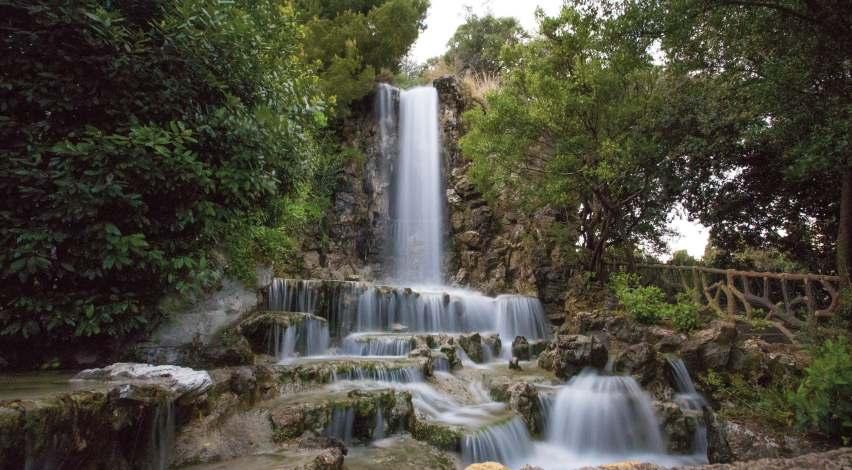
Villetta Di Negro
Piazzale Giuseppe Mazzini - Genova
Opening time: every day from 8.00 to sunset
Close to Piazza Corvetto, the elevated position of Villetta was originally for defensive purposes, with the area being the site of the city’s 16th-century walls. After military use ended, the land was leased to Ippolito Durazzo in 1785, who created a botanical garden. In 1802, Marquis Gian Carlo Di Negro purchased the site and commissioned architect Carlo Barabino to design a neoclassical villa as his residence and an English-style park. The marquis enriched the park’s botanical wealth with his collection of classical antiquities and later inaugurated a series of busts of famous Genoese, some of which still visible today. Thanks to Marquis Di Negro, patron and scholar, Villetta remained a location for receptions, artistical and cultural events until his death in 1857. Since then the Municipality acquired the site and designated it as a public park. Between 1863 and 1892, the grottoes, the artificial waterfall, and the gardener’s house were built. Naval bombardments on Genoa in 1942 hit
and destroyed the villa. To preserve Villetta Di Negro as an important cultural site, the Municipality commissioned architect Mario Labò to design a new building on the ruins of the previous villa, which became the Museum of Oriental Art “Edoardo Chiossone”. Today, the park, which covers about 2 hectares, fea-
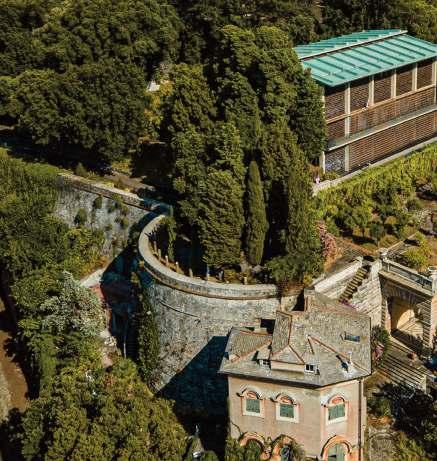
tures lush vegetation with botanical particularities dating back to its original use. Climbing the tree-lined paths, you can reach several panoramic points offering spectacular views of the city and the extraordinary artificial waterfall.
Viale IV Novembre - Genova
Opening time: every day from 8:00 to sunset
A garden in the heart of Genoa that holds a great secret: the area where the current park stands is situated on a part of the ancient 14th-century walls and was built over the necropolis that houses the skeletons of those who did not survive the Black Death of the 17th century, the same epidemic recounted by Manzoni in The Betrothed
The Acquasola park, the city’s first public park, was designed in 1821 by architect Barabino on the area of a medieval bastion connected to the 16th-century city walls. Inspired by French boulevards, the project was executed in 1825 with a terraced structure that connects with the nearby Villetta Di Negro park. On the opposite side, towards via San Vincenzo, the esplanade is enclosed by a
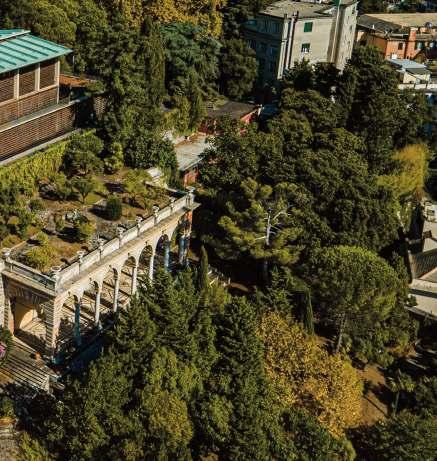
strong wall built in a military manner. The park, which spans 2,5 hectares, is essentially a rectangular garden with strict formal rigor, designed for walking and carriage rides.
Via San Fruttuoso 70 - Genova
Opening time: every day from 8:00 to sunset
The park surrounds the villa built at the end of the 15th century for the nobleman Lorenzo Cristoforo Cattaneo, which hosted

the king of France, Louis XII, in 1502. The villa then passed to the Salvago family, the Imperiale di Sant’Angelo family, and finally to the Municipality of Genoa. Currently, the villa houses the Lercari Civic Library.
The garden of the villa is arranged on multiple levels with geometric terraces and in the mid-16th century was completed with a nymphaeum and enriched with ramps with balustrades and long pergola corridors. The subsequent layout with an English lawn and groves of holm oak, cedar, and cypress is more recent and dates back to the 19th century.
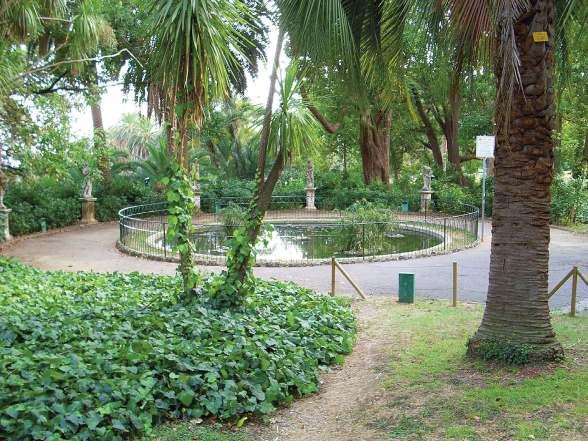
Opening time: every day from 8:00 to sunset
Nervi is an elegant seaside village a few kilometers from the centre of Genoa. In addition to the characteristic small port and promenade, the area offers the splendid Parks: a large green area formed by various gardens that once belonged to the villas Gropallo, Saluzzo Serra, Grimaldi Fassio, and Luxoro, now home to precious museums of modern and contemporary art, as well as important cultural and sectoral events such as the Nervi International Festival and Euroflora. With English lawns, palm trees, and other rare and precious trees, fountains, and the Rose Garden, the Parks are designed to evoke the refined lives of their aristocratic former owners. Walking along the green paths of the parks, you reach the Capolungo cliff, with an extraordinary view of the Golfo Paradiso and the Portofino promontory. Between the Parks and the rocks winds the Anita Garibaldi promenade.
The first villa you encounter starting from the city centre is Villa Gropallo (via Aldo Casotti 1): renovated in the mid-19th century by Marquis Gropallo as a country residence, it
hosted Gabriele D’Annunzio and Eleonora Duse. Today, it houses the Brocchi Civic Library.
Heading east, after crossing a small connecting bridge, you reach Villa Saluzzo Serra (via Capolungo 1). Probably built in the 16th century, it originally belonged to the Romeo family and, subsequently, to the Saluzzo marquises. In 1815, Gerolamo Serra bought the villa, beginning the transformation of the property into a landscaped park.
Parco dell’Acquasola
The complex was ceded to the Municipality in 1927, and since 1928, the villa has housed the city’s Gallery of Modern Art.
The third is Villa Grimaldi Fassio (via Capolungo 2): purchased in 1956 by shipowner Ernesto Fassio, it was the last to become municipal property. Today, it is a museum and houses the precious Frugone Collections,
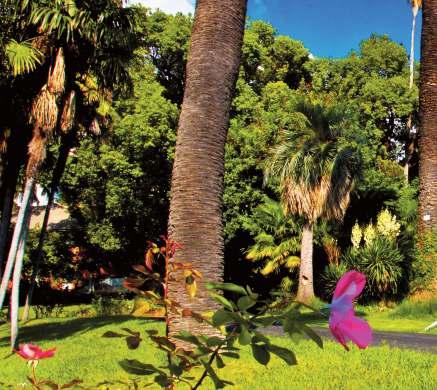

with sculptures and paintings by various Italian and European artists.
A standout feature within the Parks is the Luigi Viacava Rose Garden: restored in 2012 and divided into areas grouping ancient, modern, and competition roses, it

boasts over 200 varieties of plants with extraordinary colours.
The last, and most recent, is Villa Luxoro (viale Mafalda di Savoia), built in 1903 as the Luxoro family’s summer residence, now an enchanting house-museum.
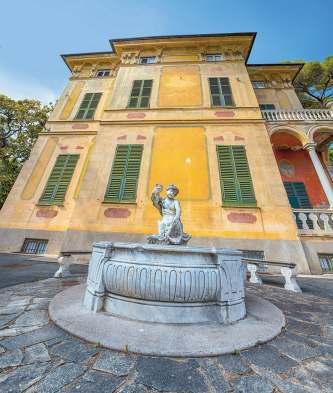

Near or a bit farther away, as a backdrop and magnificent frame, the sea is always present in Genoese walks.
One of the most beautiful walks in the city is around Porto Antico, circling around the Magazzini del Cotone to the opposite end, skirting the Aquarium and Biosfera until you reach the floating island of Chiatte.
A very short but evocative walk over teak wooden planks from the Genoa Ferry Terminal parking to reach the Lanterna let you see to see the modern port up close.
The quintessential promenade for Genoese is corso Italia, a residential area overlooking the sea, dotted with restaurants and beach establishments. From here you reach the enchanting village of Boccadasse. Corso Italia is also a fitness destination, ideal for running and skating, while the entire neighborhood hosts swimming pools, gyms, tennis, and squash courts. Another romantic and charming path, from Vernazzola beach, an ancient fishing village, leads to Sturla. It is recommended at dusk, followed by dinner in one of the nearby restaurants.
Among the most panoramic walks is the one that runs along the Circonvallazione a Monte and arrives at Spianata Castelletto, from whose viewpoint there is a wonderful open

view of the historic center and the port. In Carignano, it is also possible to enjoy a splendid panorama of the sea and the city from the Poggio della Giovine Italia, from the
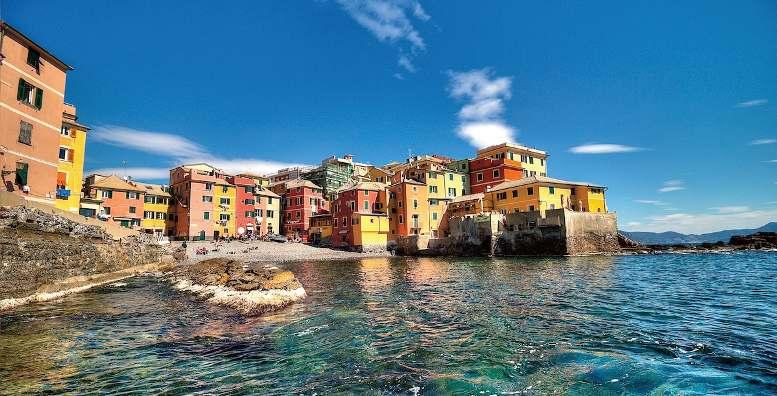
ancient walls of Zerbino and Santa Chiara, up to the terraces of the modern art museum of Villa Croce.
The Zecca-Righi funicular, with a quick change of scenery from the city center to the Righi hill, allows reaching the starting point of the paths that lead to the ancient forts of the city. At more than 300 meters above sea level, the panorama is unique.
To the West, the small port of the Marina di Sestri is an enchanting place for a walk and a drink at sunset. Likewise, the elegant and somewhat rétro promenade of Pegli, reachable by boat from Porto Antico, hosts an antique and modern art market on the last Sunday of the month. Also loved by athletes and residents is the modern waterfront of Pra’ overlooking the sea.
To the East, between Sturla and Nervi, along of the Aurelia route you can walk or jog enjoying a splendid sea view, or take a stop on the beaches or near the Scoglio dei Mille. The most famous and romantic, how-
ever, remains the Anita Garibaldi promenade, which winds over the cliffs from the small port of Nervi to the ancient dock of

Capolungo: two kilometers of sky-blue railing, suspended in a timeless atmosphere between the green Mediterranean scrub, the blue sea, and the fishermen's boats.
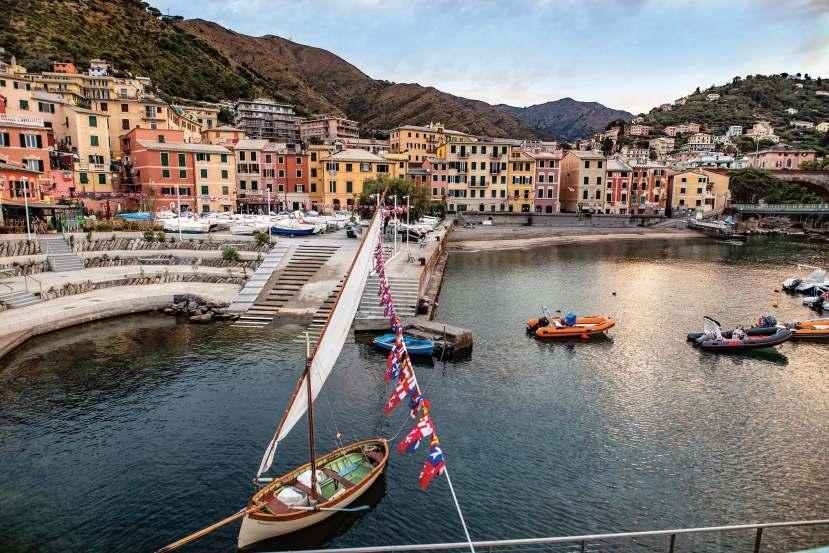
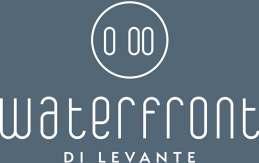
Renzo Piano redesigned the ancient port area in 1992, creating the Porto Antico of Genoa (p. 108), which is the heart of the Waterfront, the soul of the historic center, and the largest square on the Mediterranean. It is a space that is always open, where tourism, culture, conferences, fairs, shows, sports, yachting, dining, and shopping converge daily. The spaces of Porto Antico have become a citadel of entertainment and leisure: the Arena del Mare and Piazza delle Feste, which in winter transforms into an ice skating rink, host concerts by important Italian and international artists, festivals dedicated to all expressions of culture and art, as well as cinema and various performances. The Magazzini del Cotone provide exceptional venues for international conferences and seminars. In addition to the Aquarium, other attractions in the area include the Bigo, a panoramic elevator reminiscent in form and name of ancient manual cargo cranes, the Biosphere, a spectacular spherical structure in glass and steel housing over 150 species of plants and animals, and the Città dei Bambini e dei Ragazzi, an interactive museum for children aged 2 to 12.
The Porto Antico of Genoa is currently a focal point in the new city Waterfront: Renzo Piano's project focuses on shipbuilding activities that respect the environment and citizens'
health, the Fiera del Mare areas, renovated and competitive at the European level, the recreational yachting capable of leading in the Mediterranean, the Palasport, a venue for high-level indoor sports, and a waterfront promenade from Porto Antico to Boccadasse. The project also includes a large urban park that will connect the city and the port, between the historic walls and the new Porto Canale. It will mark the endpoint of Corso Italia to the west, symmetrically connecting to Boccadasse. As part of the Eastern Waterfront project, piazzale Kennedy will be renaturalized with an "urban beach." The urban park will feature a mass of trees with native species typical of the Mediterranean scrub, ideally extending the piazzale Kennedy beach
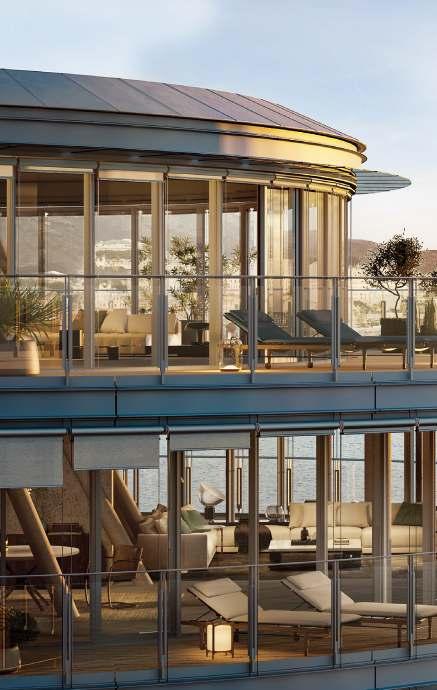
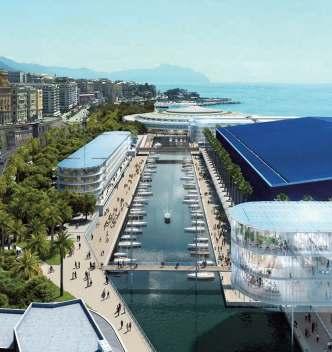
towards Porto Antico, mitigating the presence of the elevated road and new urban-oriented infrastructure. The urban park will be designed as a linear garden along the historic walls, partly at ground level and partly as a rooftop garden above underground parking. There will also be a seaside promenade connecting Boccadasse to Porto Antico, featuring
a cycle and pedestrian path that serves as the ideal continuation of Corso Italia. A panoramic elevator near the historic walls will provide direct vertical connection between the urban park and Corso Aurelio Saffi, ensuring urban connectivity between the Levante Waterfront and the Carignano neighborhood. Finally, the project includes a Casa della Vela, with its viewpoint overlooking the regatta fields, acting as a true "sailing stadium".

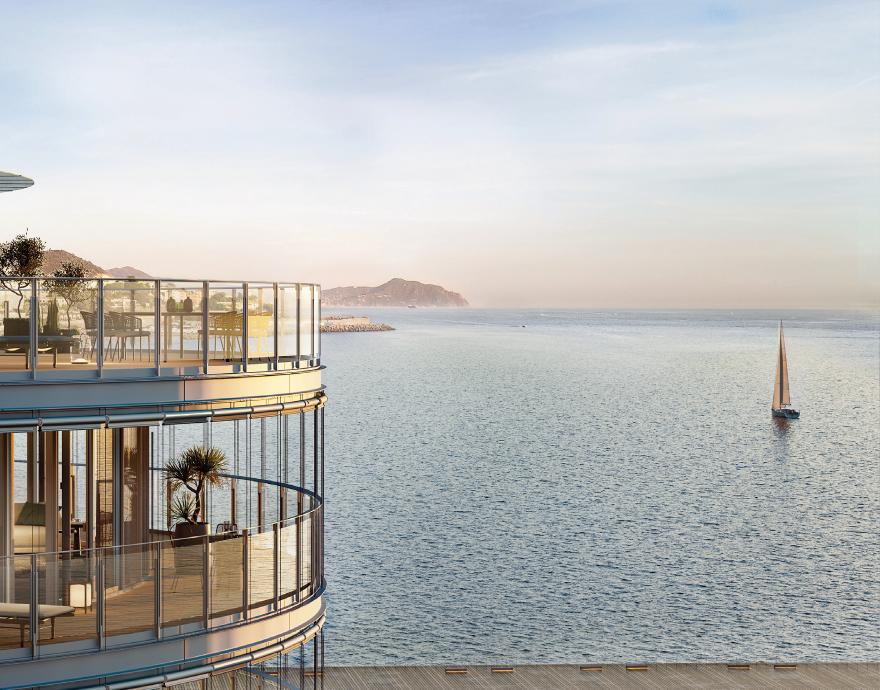

Parco delle Mura
The charm of Genoa, "superb for men and for walls," as Francesco Petrarca wrote, also lies in the extreme variety of its landscape: Genoa of the sea and cliffs, of hills and woods, of forts and walls... an extraordinary vertical city.
The magnificent landscape of the locally pro-
entire European panorama, second only to the Great Wall of China.
In addition to the 17th-century walls, the park includes 16 military forts built between the late 18th and early 19th centuries, gems of a crown that has borne the scars of time. Since 2008 the park safeguards 617 hectares of hillside straddling the Valbisagno and the Valpolcevera, which are the main city valleys. The walls and forts are connected by over 16 kilometers of roads and trails immersed in a landscape of meadows, pastures, and woods, home to several species of protected flora and fauna, either rare or endemic.
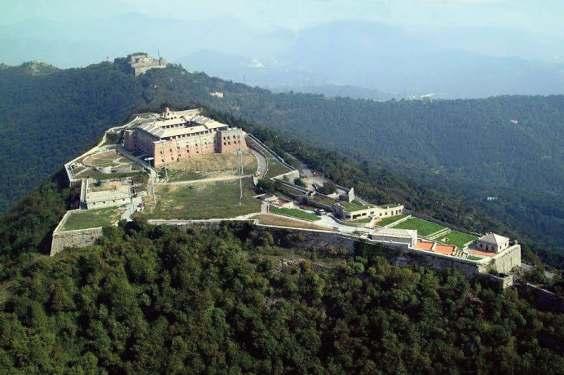
tected natural area Parco delle Mura owes its name to the new walls, built in the 17th century for enhanced defense of the city and its port basin, which surround Genoa in a high and almost invisible embrace. Still well preserved, with its 12 kilometers, this defensive wall is the longest in Europe. This defensive system is a synthesis of military technologies derived from the main European schools (particularly the French, and later the Kingdom of Sardinia) and represents a unique example in the
The classic itinerary starts from the upper terminus of the Zecca-Righi funicular and continues towards Forte Castellaccio and Forte Sperone
The hike can continue to reach the 19th-century Forte Begato towards the Valpolcevera

or inland to reach Forte Puin, Forte Fratello Minore, and the magnificent Forte Diamante, which dominates the area at 660 meters above sea level.
The route passes through meadows, fields, woods, and ruins of a pastoral and agrarian past. From the main trail, there are deviations that allow connections to other paths and
allow for customization of the visit based on individual needs of time, difficulty, and interest. The Genoa-Casella railway connects the Park of the Walls to the city center. This historic narrow-gauge railway winds through a scenic route immersed in greenery and, along with the Righi funicular, represents the most convenient and fascinating means of transport to reach the forts.
Other magnificent fortifications rise on the ridge descending west towards the Sampierdarena district – Forte Tenaglia, Forte Crocetta, and Forte Belvedere – and on the hills to the east, behind the neighborhoods of San Fruttuoso and Marassi: Forte Santa Tecla, Forte Quezzi, Forte Ratti, and Forte Richelieu
To download the brochure Genoa’s Forts and Walls: An Urban Park www.visitgenoa.it/sites/default/files/2023-08/I%20Forti%20e%20il%20Parco%20delle%20Mura_0.pdf


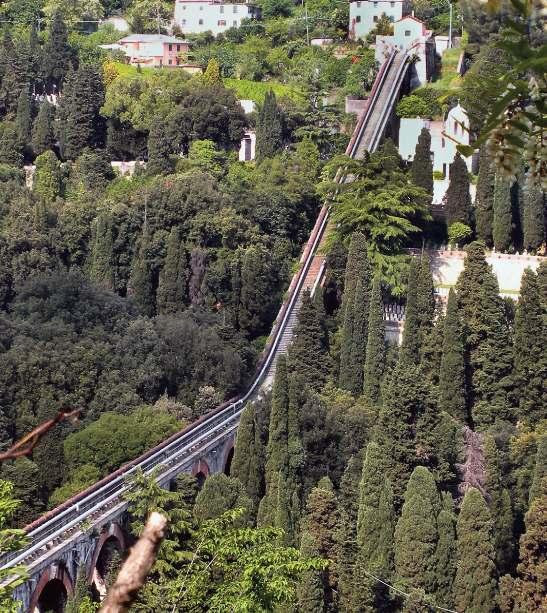
The historic aqueduct of Genoa is an impressive structure, built in Roman times starting from the valley floor of the Bisagno. Throughout the Middle Ages and into the 17th century, it was further expanded and elevated to meet the needs of a rapidly expanding city. While parts of its 40 km length have disappeared due to urban development, significant stretches still exist, tracing a fascinating pedestrian hiking route (not suitable for bicycles) that is rich in historical and naturalistic interest. Key architectural and engineering features include the canal bridge over the Torbido stream and the portal of Barabino in the Rovinata Gallery, as well as engineering masterpieces like the siphon bridges over the Geirato and Veilino streams, ancient washhouses, marble boundary markers, oak and chestnut forests, and sunlit slopes with Mediterranean scrubland. Over the centuries, the aqueduct has transformed and blended among the houses and gardens of old villages, reaching into the city center. The journey begins at Cavas-
solo in the upper Bisagno valley, passing through the hills of Prato and Struppa neighborhoods, where visitors can explore the romanesque Abbey of San Siro from the 12th century. It continues towards Molassana, crossing the Geirato stream on the first canal bridge – a feat of engineering allowing water passage through a siphon within the bridge structure, avoiding the longer and more hazardous valley route prone to landslides. Built in 1777, this bridge spans over 600 m with 22 arches.
The aqueduct then proceeds along the Bisagno valley, crossing the valleys of the Trensasco stream and the Cicala valley, venturing into a wild environment of Mediterranean scrubland and steep wooded slopes, overlooked by Forte Diamante atop its namesake hill. The journey extends a few more kilometers to the church of San Bartolomeo
di Staglieno, near the filter house – a filtration station for the aqueduct system. From here begins the spectacular canal bridge over the Veilino stream, a marvel dating back to 1837, designed by architect Barabino. This 450 m long, 20 m high bridge supported by 19 arches was originally lined with iron pipes carrying water to the city center; the upstream piping remains from the original construction.
The bridge almost "flies" above the spires and domes of the monumental Staglieno Cemetery, offering an incredibly panoramic view. After climbing over 200 steps of the bridge, you reach a tunnel cutting through the hill of Via delle Ginestre, beyond which you arrive at Via Burlando. Here, the trace of the aqueduct disappears, engulfed by houses, but it's possible to reach the city center on foot or by bus.

Localit‡ di partenza: Cavassolo
Localit‡ di arrivo: Molassana
Accessi intermedi: Prato via Struppa, via Trossarelli, Via di Creto, Via San Felice Brughe
Sviluppo totale: 7 km
Difficolt‡: T
Molassana linee 13 14 715 725 728
cod. fer. 0232 linee 470 481 (capolinea) cod. fer. 2046 linea 477 479 (capolinea) cod. fer. 2043
Via San Felice 6 linea 477 cod. fer. 1378
Struppa 6/Creto linee 13 14 470 479 715 725 728
cod. fer. 0241
Struppa 8/Trossarelli linee 13 14 715 725
cod. fer. 0243
Struppa/Suppini linee 13 14 715 725 cod. fer. 0245
Prato/Pian Martello linee 13 14 (capolinea) cod. fer. 0246 linee 715 725 726 linee 824 831 832 (capolinea) cod. fer. 8253
Cavassolo/bivio per Davagna linee 715 725 824 832 cod. fer. 4597
La Presa linee 715 725 824 832 cod. fer. 4599
Trossarelli
La Presa linee 715 725 824 832 cod. fer. 4708
Cavassolo/bivio per Davagna linee 715 725 726 824 831 832 cod. fer. 4421
Prato/Pian Martello linee13 14 (capolinea) cod. fer. 0246 linee 715 725 726 linee 824 831 832 (capolinea) cod. fer. 8253
Struppa/Benedetto Da Porto linee 13 14 715 725 cod. fer. 2497 Via Trossarelli 15 linee 470 479 cod. fer. 2181
Struppa 3/Trossarelli linee 13 14 470 479 715 725 cod. fer. 0248
Struppa 5/Creto linee 13 14 470 479 715 725 cod. fer. 0250 Via di Creto 2 linee 470 728 cod. fer. 2653 linea i27 cod. fer. i566
Via San Felice 6 linea 477 cod. fer. 1353 Molassana linea 48 cod. fer. 2045 (capolinea) linea 14/ cod. fer. 0288 (capolinea) linee 13 14 715 725 728 cod. fer. 0259 linee 470 481 (capolinea) cod. fermata 2046 linea 477 479 cod. fer. 2043 (capolinea)
Localit‡ di partenza: Molassana
Localit‡ di arrivo: Molassana
Accessi intermedi: Via S. Felice Brughe, via Geirato, San Giacomo via Rio Maggiore, Pino Sottano Codeviola
Localit‡ di partenza: Molassana
Localit‡ di arrivo: Staglieno
Veilino
Salita alla Chiesa di Staglieno via Lodi Chiesa San Gottardo
Accessi intermedi: Pino Sottano Codeviola, via Lodi, Crosa dei Morchi, Salita alla Chiesa di San Gottardo, Sciorba, Fidenza, Salita Preli da via Lodi, Salita alla Chiesa di San Bartolomeo/Staglieno.
Sifone Geirato
Pino 2 Codeviola Crosa dei Morchi
San Gottardo Sciorba Fidenza
San Sebastiano
Staglieno piazzale Resasco via Piacenza/Ponte Veronelli via delle Gavette
Sviluppo totale: 8 km
Difficolt‡: E
Voi siete qui You are here
Localit‡ di partenza: Piazza Manin
Impianti di risalita visitati: Ascensori Manin-Contardo, Magenta-Crocco, Castelletto Levante e Ponente, Funicolare S.Anna
Ascensori Castelletto Ponente e Levante
Accessi intermedi: Líitinerario si sviluppa lungo il centro urbano ed Ë accessibile dalla rete AMT lungo tutto il suo sviluppo.
Localit‡ di arrivo: Porto Antico
Ascensore Magenta Crocco
Funicolare SantíAnna
Ascensore Manin Contardo
piazza Manin via alla stazione trenino di Casella
Sviluppo totale: 3,5 km
Dislivello: -85mt
Difficolt‡: T
piazza Caricamento
piazza Manin
linea 34 cod. 0570
linea 36 cod. 0558
Ramo delle Fucine Lampiunea via Turati
piazza Caricamento
linea 1 cod. 0170
linea 32 cod. 0001 via Turati linea 13 cod. 0207 via alla Stazione di Casella
36 cod. 0526 Voi siete qui You are here
Castelletto Levante e Ponente tutti i giorni dalle ore 6.40 alle ore 24.00 Funicolare SantíAnna tutti i giorni dalle ore 7.00 alle ore 00.30 Manin-Contardo feriali dalle ore 6.05 alle ore 24.00 festivi dalle ore 7.20 alle ore 24.00 Magenta-Crocco
i giorni dalle ore 6.55 alle ore 00.40

A dive into the blue is possible even in Genoa city itself. Just a few minutes from the center, along Corso Italia, you find most of the city's beach clubs often equipped with pools. Continuing eastward, you reach the tiny bay of Boccadasse, perfect for sunbathing, strolling, and enjoying sunsets in a picturesque setting.
Further east, sheltered beneath Castello Türke – one of Coppedè's masterpieces –reachable via a long staircase, is the beach club of Capo Santa Chiara. Continuing in the same direction, you'll come across the beaches of Vernazzola and Sturla, bustling in summer but also enjoyable for sunbathing in winter among the fishermen's boats pulled ashore or for water sports.
In Quarto, the well-known beach of Priaruggia and in Quinto, some beach clubs are among the most frequented “urban”
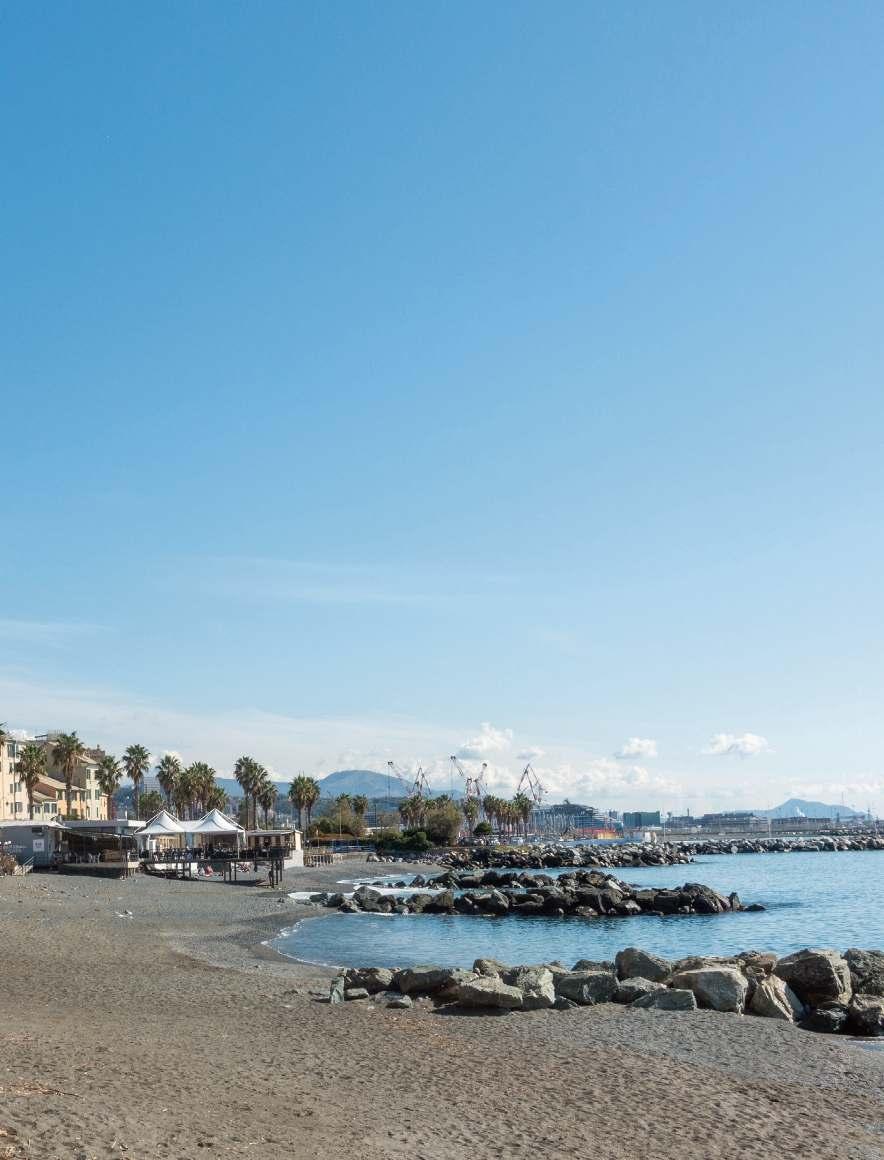
seaside spots by Genoese residents. On the border between Quinto and Nervi, lies Caprafico beach. Access to the Nervi cliffs and beach clubs is from the Anita Garibaldi promenade. Nervi boasts small beaches such as the harbor beach and, eastwards, Capolungo.
In the western part of the city, the first bathing beaches are in Multedo and Pegli, but if you venture further to Voltri and beyond the water is cleaner and the beaches are arger. At Vesima, easily reachable by train and away from residential areas, there are several beach clubs, a couple of restaurants, and a lovely equipped cove where sea currents almost always gift clear water. Leaving the city, just a few kilometers away, the Ligurian coast is studded with beautiful beaches and crystal-clear waters, boasting a national record of Blue Flags and awards for sea quality.

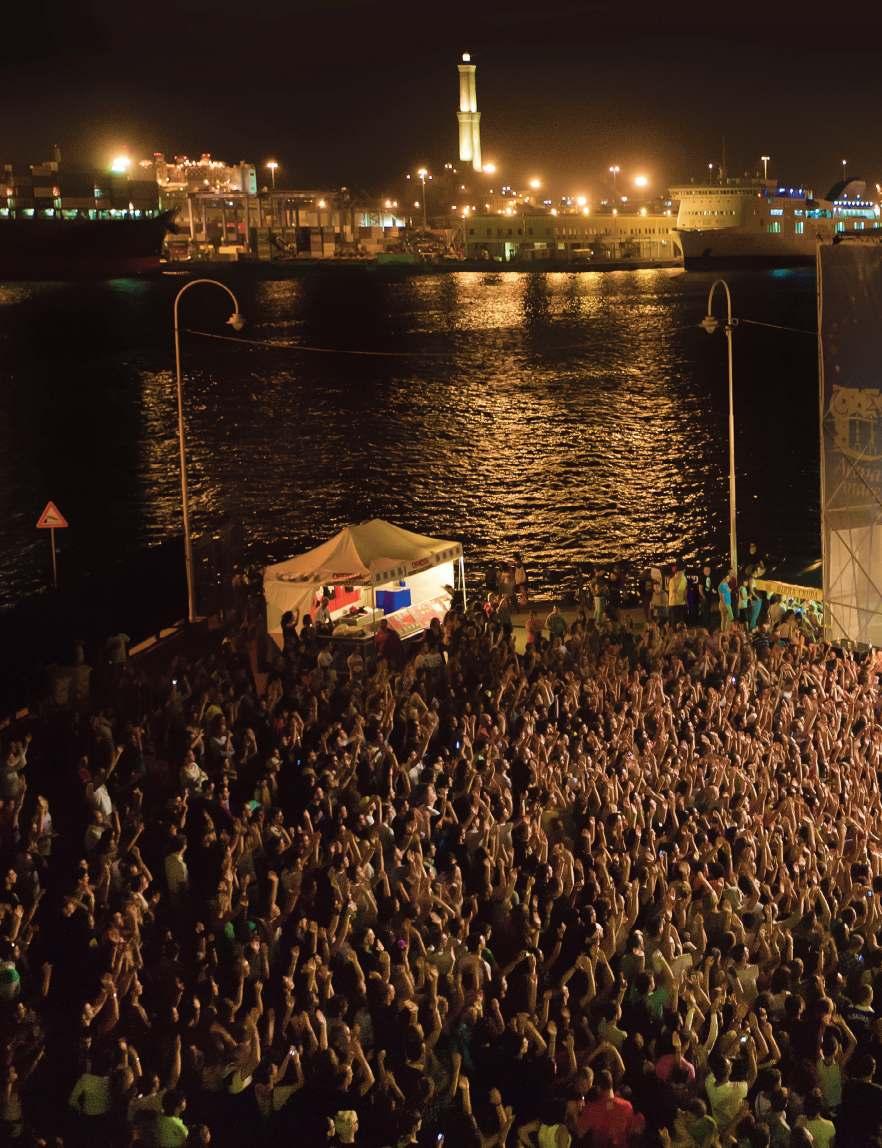
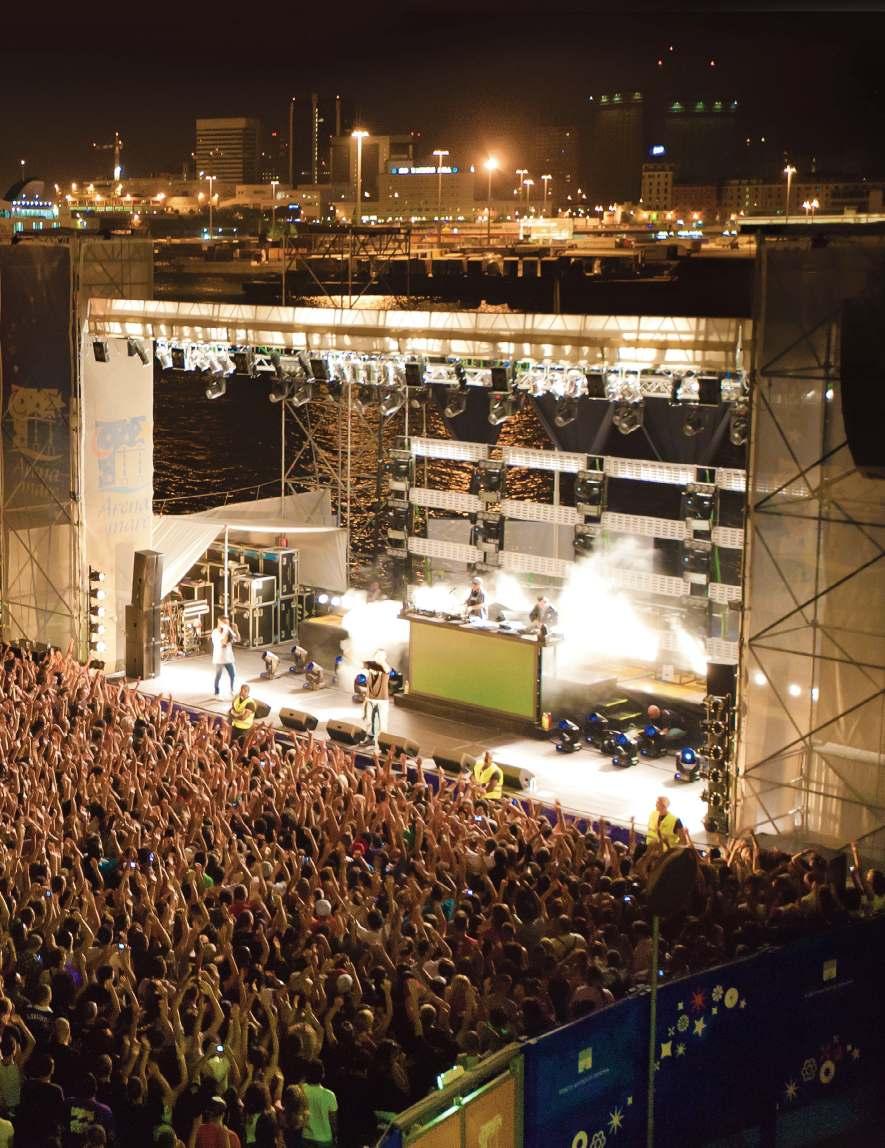
Carnival
Event Description
Descrizioneevento
Carnival 2025 features a rich program of activities with events designed for all ages.
IlCarnevaleËcaratterizzatodaun riccoprogrammadiiniziative,con appuntamentidedicatiatuttele et‡.
The celebrations include various events held in charming city locations, filled with candy, games, and music. Traditional Ligurian games and masks will also be revived.
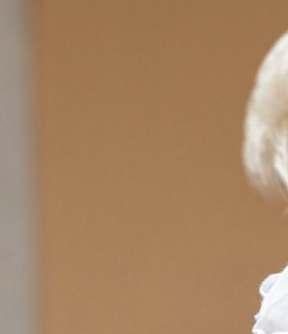
Date February
Data ebbraio
Location
Events take place throughout the city
Target Bambiniefamiglie
Target Audience
Children and families

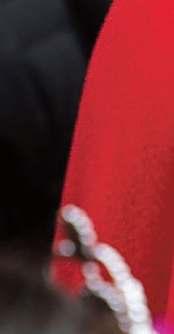




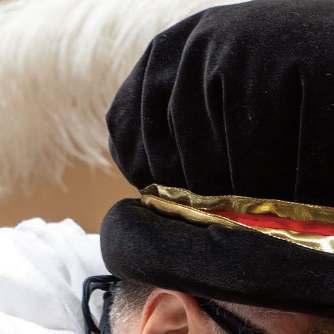
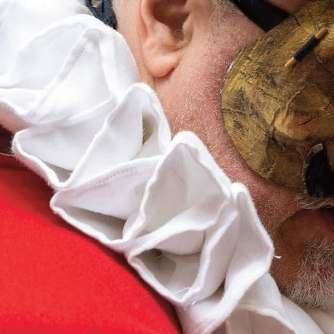



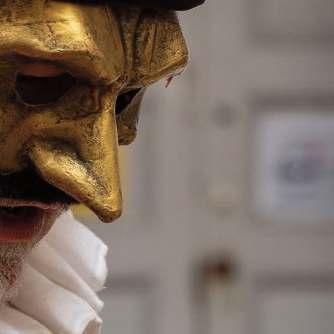
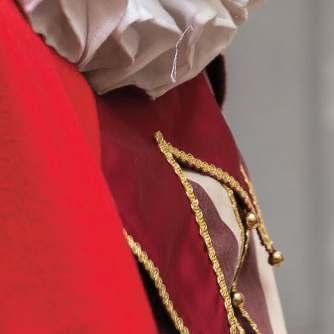

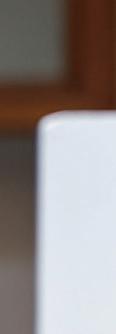

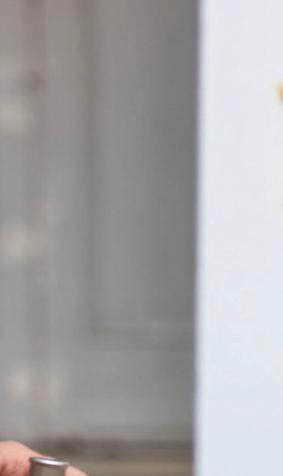
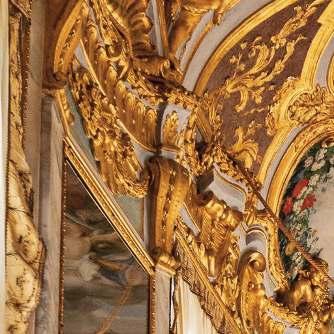
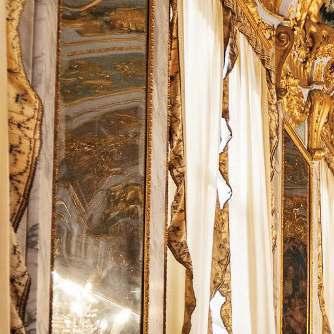


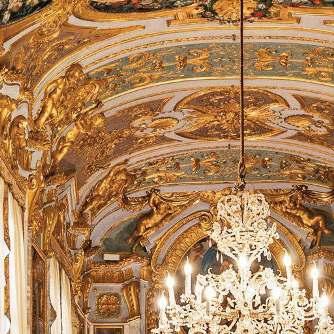
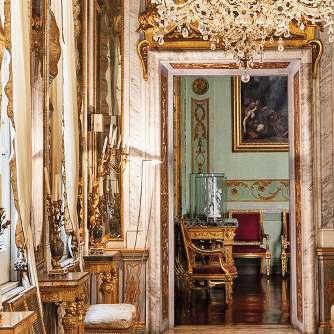

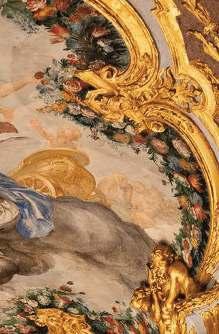
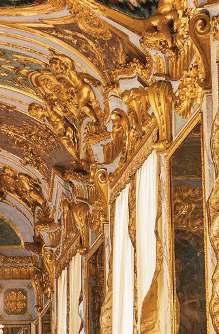


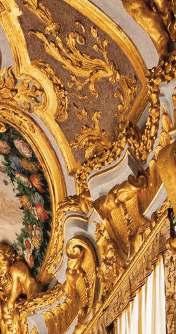
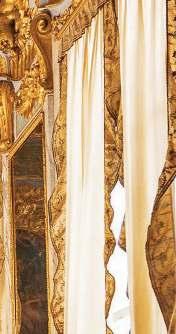
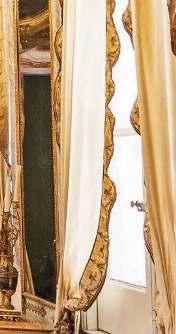

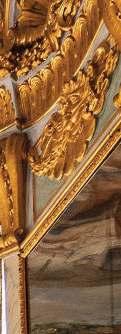
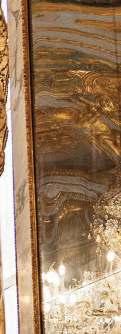


Event Description
Descrizio
Descrizione evento
The Rolli Days are the most significant cultural event promoting and celebrating the UNESCO World Heritage site
“Le Strade Nuove and the Palazzi dei Rolli” in Genoa.
IRolliDa eventoc valorizza
ìLeStrad deiRolli spiegazio
oneevento ayssonoilpi˘importante culturaledipromozionee azionedelsitoUNESCO deNuoveeiPalazzi diGenovaî.Attraversole onideidivulgatori
With the guidance of scientific communicators – young professionals trained at the University of Genoa in the humanities – thousands of visitors can admire the beauty of palaces that are typically closed to the public as they are private residences or o ce spaces. The event not only showcases palaces but also includes churches, villas, and gardens.
delsetto formatid diGenov possono dipalazz pubblico egiardin visite,iR diimport comesp cheveng accadime
Date
oredellehumanities dallíUniversit‡degliStudi va,migliaiadivisitatori ammirarelebellezze zinormalmentechiusial oinquantositiprivatio maanchechiese,ville ni.Oltrealletradizionali RolliDayssiarricchiscono tantieventicollaterali ettacoliteatraliemusicali gonodedicatiagli entipresentiincitt‡.
In addition to traditional tours, the Rolli Days are enriched by significant side events, such as theatrical and musical performances tied to the ongoing happenings in the city.
I Rolli Days sono il più importante evento culturale di promozione e valorizzazione del sito UNESCO “Le Strade Nuove e i Palazzi dei Rolli di Genova”. Attraverso le spiegazioni dei divulgatori scientifici, giovani professionisti del settore delle humanities formati dall’Università degli Studi di Genova, migliaia di visitatori possono ammirare le bellezze di palazzi normalmente chiusi al pubblico in quanto siti privati o sedi di u ci. L'evento coinvolge non solo palazzi ma anche chiese, ville e giardini. Oltre alle tradizionali visite, i Rolli Days si arricchiscono di importanti eventi collaterali come spettacoli teatrali e musicali che vengono dedicati agli accadimenti presenti in città.
February 15th-16th
April 26th-27th
May 3rd-4th
Data
Li
October 17th-18th-19th
Maggio e ottobre
n torico+delegazioni
Location
Location
Historic centre + surrounding districts
T Location Centros Taarget Pubblico
oadulto
Centro storico + delegazioni
Target Audience
Adults
Target Pubblico adulto
Event Description
Descrizioneevento
On April 23rd, Genoa transforms into a sea of red and white to celebrate the Flag Festival of Genoa. Among the many associated activities, the “Treasure Hunt of Saint George” stands out, honoring the banner with the red cross on a white field, a symbol of the city and Genoese pride since the time of the Crusades and the glorious Maritime Republic. On Saint George’s Day, an institutional ceremony traditionally takes place at Palazzo Ducale in the presence of local authorities. In the days leading up to the celebration, thousands of Genoese flags are distributed to citizens to adorn the city with this proud emblem. Events and performances are organized for adults and children alike.
Date April 23rd and the preceding weekend
Location
Palazzo Ducale and city center
Il23diaprilelaSuperbasitinge dirossoebiancopercelebrarela festadellaBandieradiGenova. Traletanteiniziativecollaterali vieneorganizzatalaìCaccia a Caccia altesorodiSanGiorgioî,una celebrazionechehareso omaggioalvessilloconlacroce rossaincampobianco,simbolo dellacitt‡edellíorgoglio genovesesindaitempidelle crociateedellagloriosa Repubblicamarinara.Nelgiorno diSanGiorgio,poi, Ëtradizionalmenteprevista lacelebrazioneistituzionalea PalazzoDucaleallapresenza delleautorit‡.Duranteigiorni precedentiallafestavengono consegnateallacittadinanza migliaiadibandierediGenovape colorarelacitt‡conlabandiera orgogliodiGenova,evengono er organizzatieventiespettacoliper adultiebambini.
Target Audience
Adults
Children and families
Data 23aprileeweekendprecedente
Location
PalazzoDucaleecentrocitt‡
Target
Pubblicoadulto,Bambinie famiglie

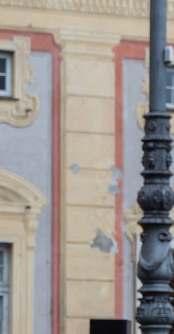
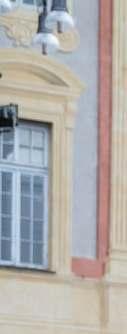
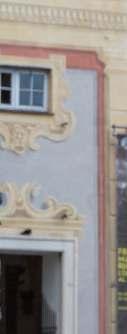

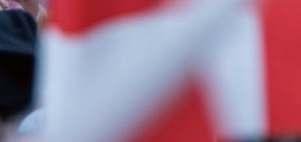
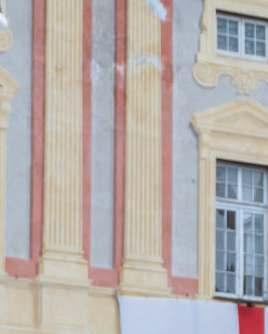
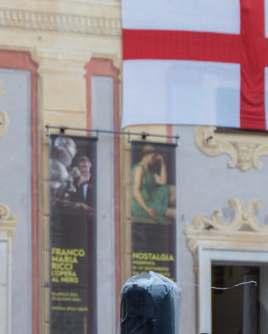


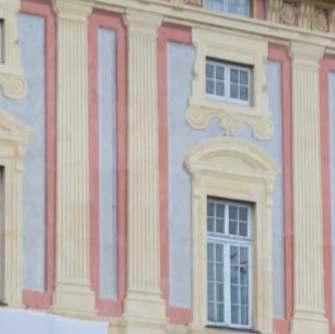
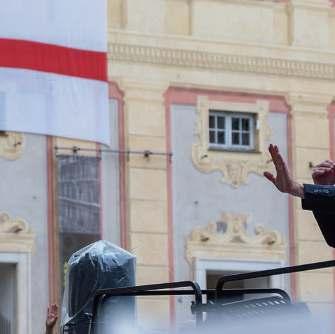

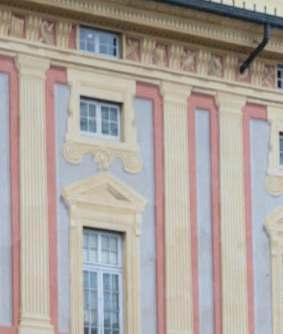
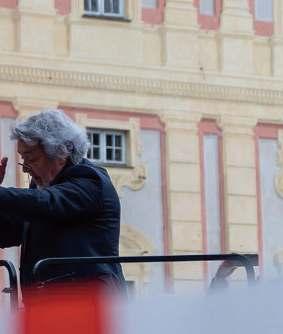



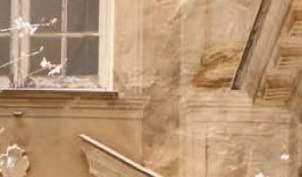
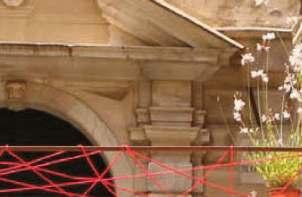


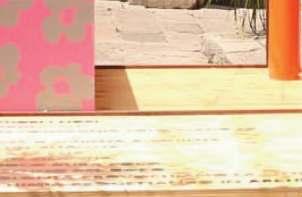
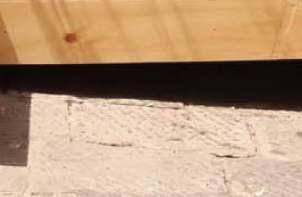
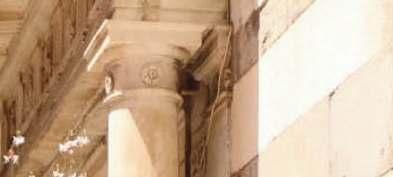
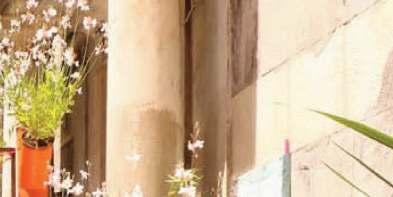


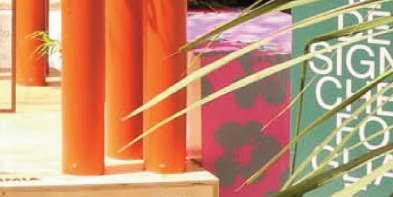
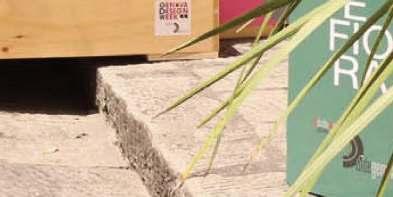

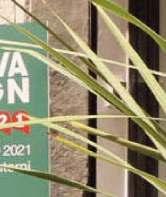

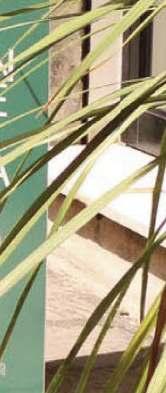


Event Description
Descrizione evento
Design as a means to explore new horizons and its impact on an evolving society, alongside the fluidity of ideas and inspiration to replace static notions – these are the main themes of the spring event dedicated to rediscovering design in the city.
Genoa Design Week 2025 will take place in May, supported by the Municipality of Genoa, with the goal of highlighting the city’s vibrant nightlife district through late-night openings of palaces and workshops.
Il design come opportunità per esplorare nuovi orizzonti e il suo impatto sulla società in evoluzione, ma anche luidità delle idee e dell’ispirazione per sostituire la staticità, questi sono i temi trainanti dell’evento primaverile di riscoperta del design in città. La Genova Design Week nel 2025 viene organizzata nel mese di maggio con il contributo del Comune di Genova e si pone l’obiettivo di valorizzare la zona della movida con l’apertura di palazzi e botteghe sino a tarda notte
Date May 21st-25th
Location Historic centre
Target Audience
Adults
Centro storico Target
Pubblico adulto
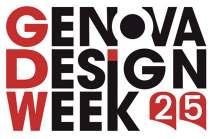
Event Description
Descrizioneevento o otte per sua da una r e Il24giug SanGiov Patrono eungior celebrare storiael oltrenov Battista. speciale igenove il24giug animato tradizion spettaco leggende attesade líattenzio Matteott accensio tT
On 24 June, Genoa celebrates San Giovanni Battista, the city's patron saint. For one night and one day, the city comes alive to celebrate its tradition, its history and the close bond that has bound it to Giovanni Battista for over nine hundred years. This anniversary is a special festive occasion for the people of Genoa: on the night between 23 and 24 June, the city centre is animated by events, music and the traditional Ghost Tour - a spectacular journey through the myths and legends of ancient Genoa - while waiting for midnight, when the focus shifts to Piazza Matteotti for the traditional lighting of the great bonfire of St John the Baptist. On the 24th, the traditional procession of the ancient Genoese confraternities, the ‘casacce’, with the blessing of the sea and the city by the Cardinal of Genoa.
Dateth
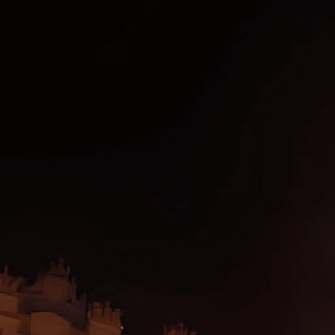
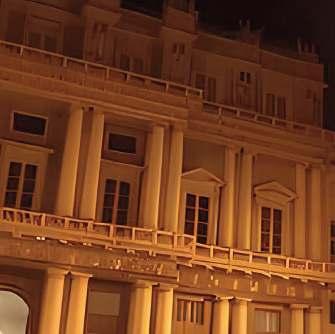
June 23rd-24th
Location
Giovanni Il24inve tradizion antichec ìcasacce mareed cardinale
gnoGenovafesteggia vanniBattista,ilSanto dellacitt‡.Perunanott rno,lacitt‡sianimaper elasuatradizione,lasua ostrettovincoloche vecentoannilalegaal QuestaricorrenzaËuna occasionedifestaper si:nellanottetrail23e gno,ilcentrostoricoË daeventi,musicaedal naleGhosToourñuno olareviaggiotramitie edellaGenovaantica-in ellamezzanotte,quando onesispostasuPiazza iperlatradizionale onedelgranfalÚdiSan Battista. ecespazioalla naleprocessionedelle confraternitegenovesi,le eî,conlabenedizionedel dellacitt‡impartitadal ediGenova.
Piazza Matteotti
Target Audience
Adults
Data 23-24giu
Young audiences
ugno
Children and families
Location
PiazzaM
T
Taarget
Pubblico
Bambini
n Matteotti oadulto,pubblicogiovane, efamiglie

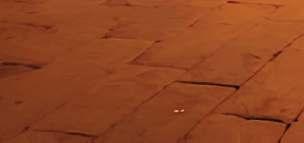



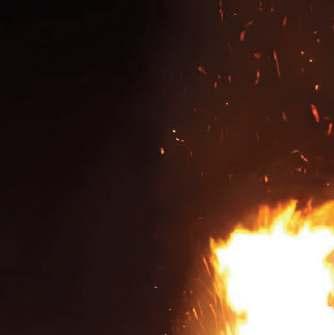
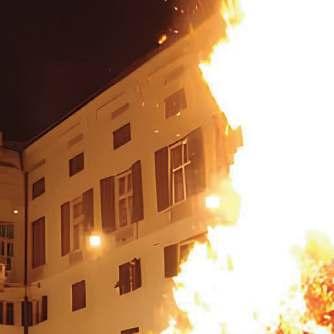


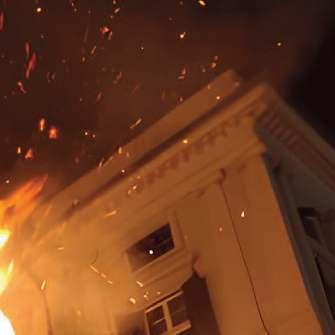
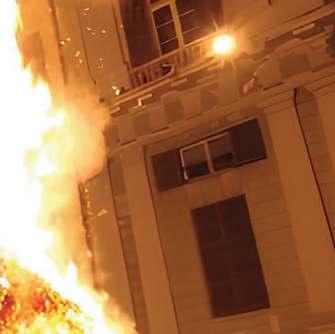


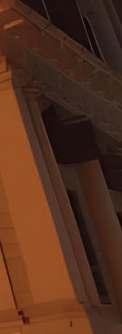



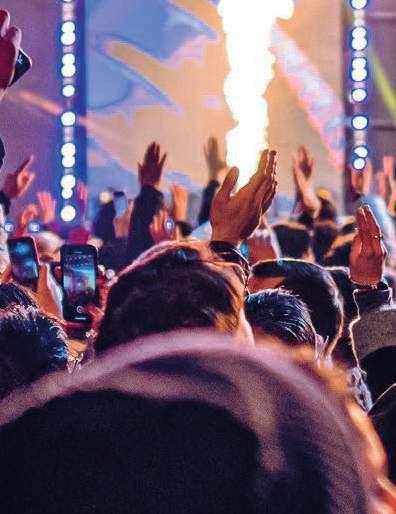

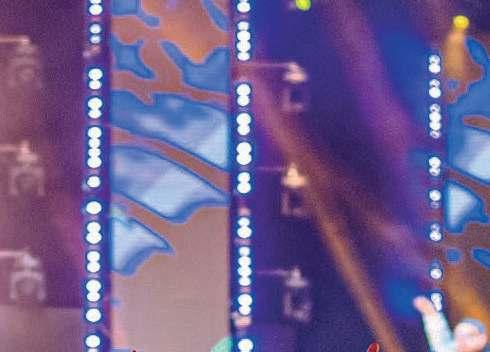
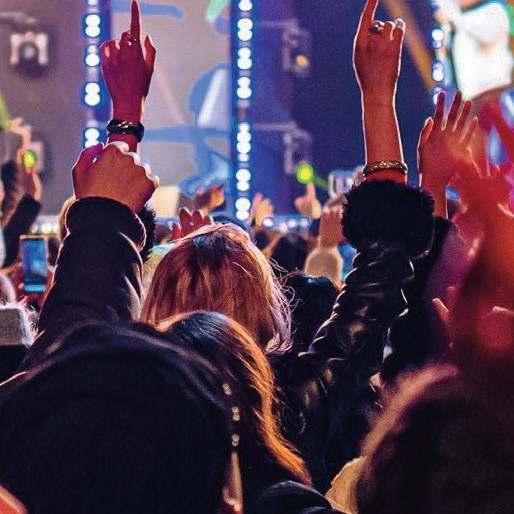




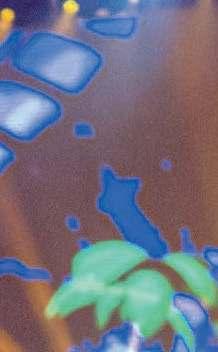
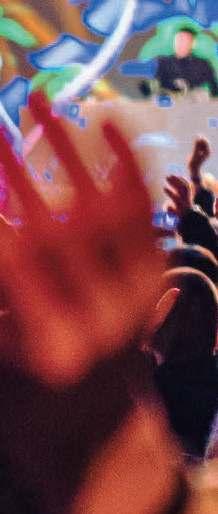
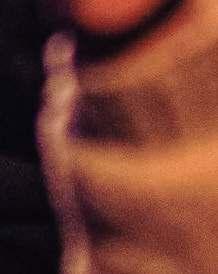
Event Description
From June to August, Porto Antico comes alive with musical and theatrical performances in the enchanting settings of the Arena del Mare, Piazza delle Feste, and Isola delle Chiatte. Additional shows and concerts are planned in various locations throughout the city. For information and program updates, visit: www.portoantico.it and www.visitgenoa.it
Date From June to August
Location Porto Antico
Target
Adults
Young people
Children and families

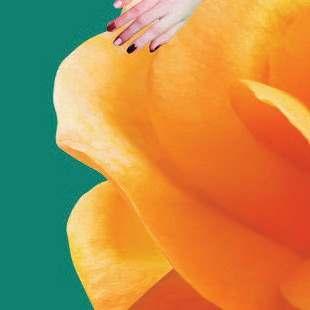



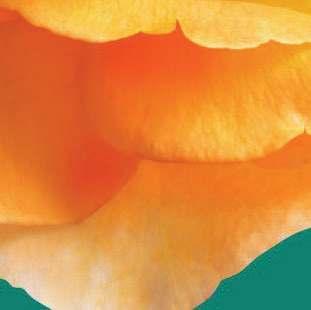


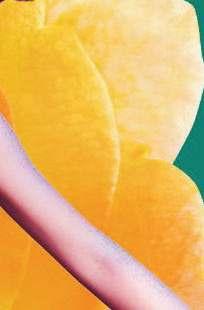
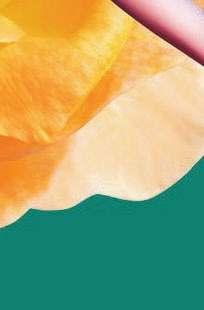



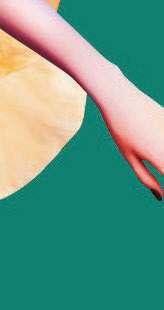




lEvent Description
Descrizioneevento
LaRassegna,cherappresenta pi˘grandeappuntamentoest conlegrandiperformancedi BallettoeMusica,omaggiala tradizioneconprimeassolute
This festival, the most prominent summer event for Ballet and Music, celebrates tradition with world premieres, national previews, and renowned stars in the extraordinary setting of the Parks of Nervi. It is internationally recognized not only for the quality of its program but also for the prestige of its brand, which boasts unique traditions in Italy. These are evidenced by the participation of world ballet stars who have graced the Nervi stage in past decades. Today, the festival stands as one of the city’s cultural highlights, aiming to enhance and promote young talents in the field of dance.
Date
From late June to late July
Location
Parks of Nervi
Target
Adults
Data
Da fine giugno a fine luglio
il ivo , ar ei in he i ni one tradizion anteprim nellostra Parchidi campoin perlaqu incartell unmarch unichen testimon delleÈto cheneid calcatoi Larasseg unadelle culturac obiettivi lanciode campod ne assolute, menazionali,grandistar aordinariocontestodei Nervi.»riconosciutain nternazionale,oltreche ualit‡delprogramma one,perilprestigiodi hiochevantatradizioni elnostroPaese, niatedallapartecipazione oilemondialidelballetto, decennipassatihanno lpalcoscenicodiNervi. gnarappresentaoggi epuntedidiamantedella cittadinaehatraisuoi lavalorizzazioneeil ellegiovanipromessenel delladanza. n iNervi oadulto T Location Parchidi Taarget Pubblico
Descrizioneevento


65th EDITION, 18 - 23 SEPTEMBER 2025
Descrizioneevento
Event Description
The Genoa International Boat Show, now in its 65th edition, is a not-to-be-missed event both for the international yachting market and for all sea enthusiasts. It is the expression of a unique heritage, combining history, knowledge, expertise, know-how, design, technology, innovation, research, development and business. It is an event that reflects the world-class excellence of the Italian yachting sector, and is a mirror of a market characterised by a sustained growth trend. The exhibition area now accounts for over 220,000 square metres between land and water, and the 2024 edition will feature over 1,000 boats and 1,052 brands on display.


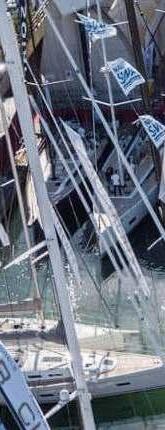
Date September 18th-23rd
Location
Waterfront di levante
Data settembre
Location
Target Open to everyone
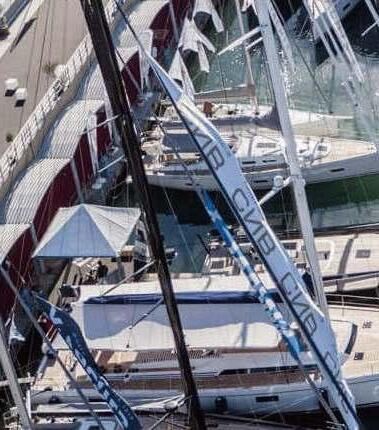
WaterfrontdiLevante
Data settembre
T
Taarget
Apertoatutti
Location
WaterfrontdiLevante
T
Taarget
Apertoatutti

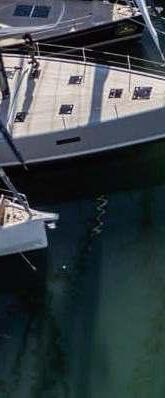

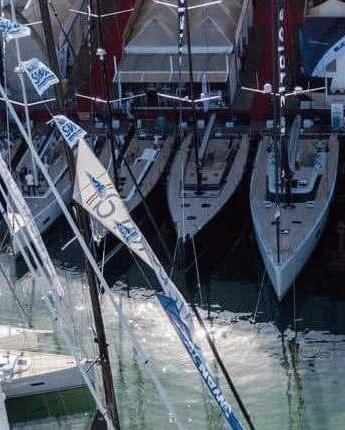
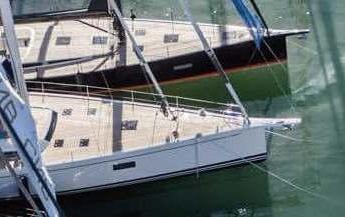

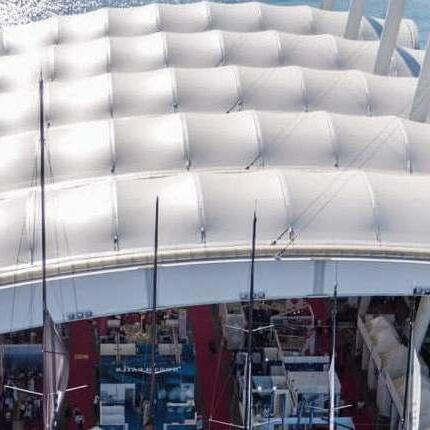
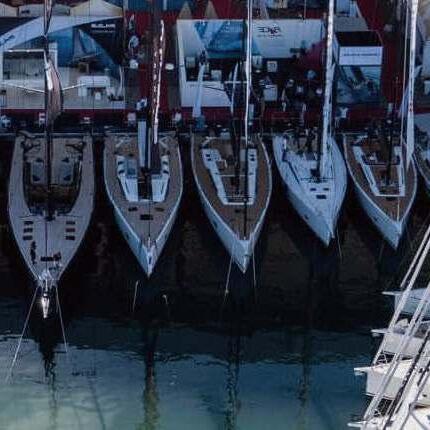
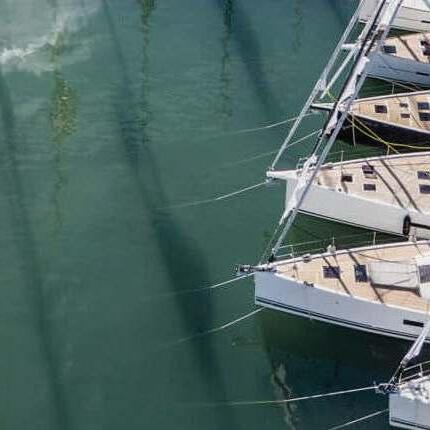
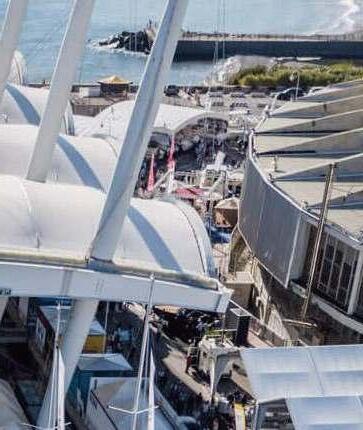
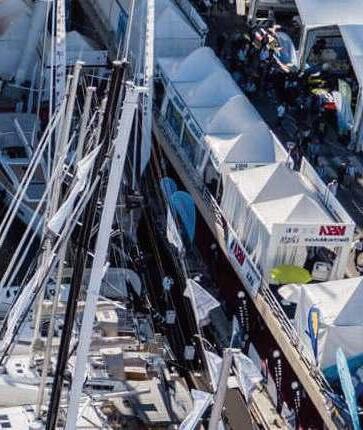
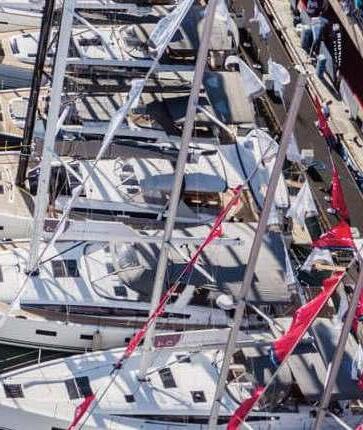


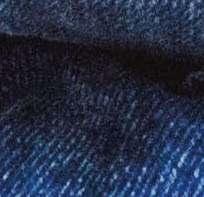

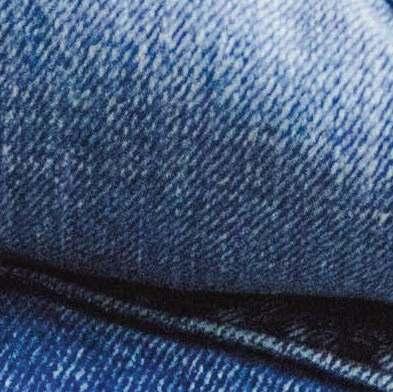

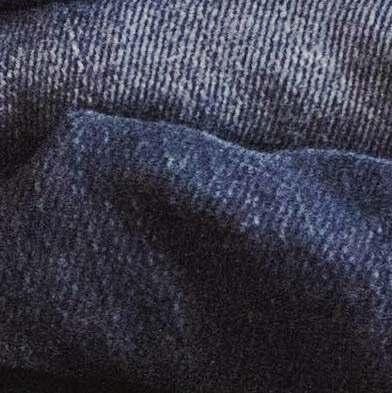

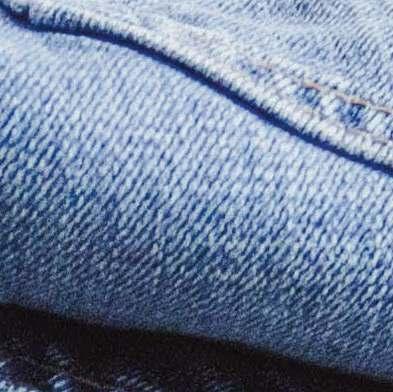
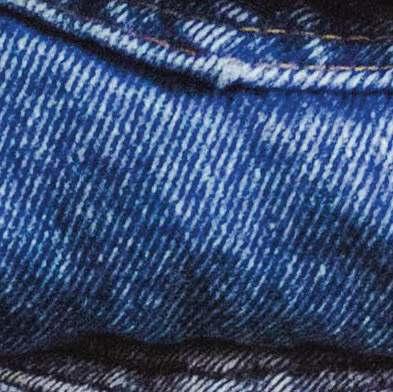
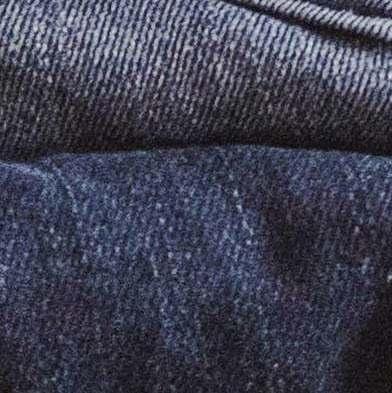


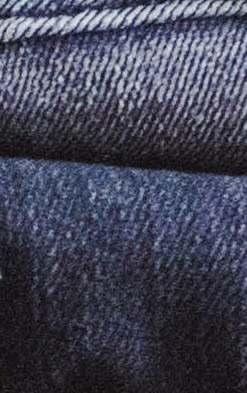



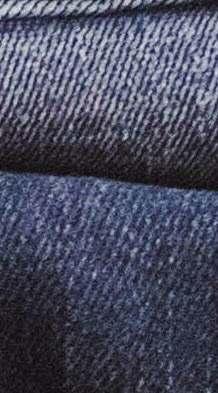
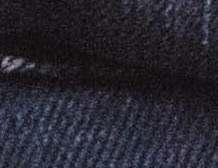



Event Description
Descrizioneevento
Genoa Jeans Week is aimed at promoting and showcasing the historical origins and production chain of denim fabric worldwide. Through creative installations, exhibitions, and events, the denim district comes to life for a week. During the 2024 event, over 40 initiatives took place, involving third sector organizations, trade entities, and cultural venues. The event attracted national and international guests from the fashion world, who could also enjoy various exhibitions in the city dedicated to Genoa's blue fabric. From art installation to workshop, from fashion show to exhibition there will be more than 100 events on the programme.
LaGenovaJeansWeekË líeventochevuolepromuoveree valorizzareleoriginistorichee produttivadeltessuto jeansnelmondo.Attraverso allestimenticreativimostreed creativi, eventi,vienefattovivereperuna settimanaildistrettodeljeans. Durantelamanifestazione2023 sisonosvolteoltre40iniziative chehannocoinvoltoentidelterz settore,entidelcommercioe luoghidellacultura,favorendola partecipazionediospitinazionali einternazionalilegatialmondo dellamoda,che hannopotutoancheassistere allediversemostreorganizzate incitt‡atematessutobludi Genova.Dallíinstallazioneartistic alworkshop,dallospettacolodi modaallamostra:sonostati120 gliappuntamentidelprogramma 2023. o a
Data
ottobre
Date
First week of October
Location
TBD
Location
TBD
Target
Pubblicoadulto,pubblicogiovane, Bambiniefamiglie
Target Adults, young people, children, and families
Event Description
Descrizioneevento
MaledettiArchitettiËunciclo divisiteguidate,eventied esplorazioniurbanegratuite chehalíobiettivodiportarealla luceilpatrimonioarchitettonico delNovecentogenovese.Un weekendediverselocation perunraccontoorganicocheñ grazieaunasquadradicultori dellamateriañporter‡allaluce peculiarit‡,segreti,bellezzee storiediunvastorepertoriodi
primagrandezzaqualiRenzo e e ve pagaqua Piano,PieroGambacciani, RobaldoMorozzodellaRocca eGinoCoppedË.Ilnomedi questoevento,organizzatoda ComunediGenovaeFondazione OrdineArchitettiGenova,prende scherzosamentespuntodal pamphletdiTomWolfeedescriv benelíapprocciodeigenovesi versolaproduzionearchitettonica delventesimosecolo:unrapporto
"Maledetti Architetti" is a series of guided tours, events, and free urban explorations aimed at uncovering the architectural heritage of 20th-century Genoa. A weekend and di erent locations for an organic story that – thanks to a team of experts - will bring to light peculiarities, secrets, beauties and stories of a vast repertoire of buildings signed renowned architects such as Renzo Piano, Piero Gambacciani, Robaldo Morozzo della Rocca, and Gino Coppedè. The name of the event, organized by the Municipality of Genoa and the Genoa Architects Foundation, humorously draws inspiration from Tom Wolfe's pamphlet and aptly describes the Genoese approach to 20th-century architectural production – a relationship often marked by conflict, misunderstandings, impatience, controversies, and resentments. It's a complex relationship, a century of love and hate that is now time to fully understand and appreciate.
polemicheerancori.Unarelazione odio,cheËgiuntoilmomentodi fondo.
Date TBD

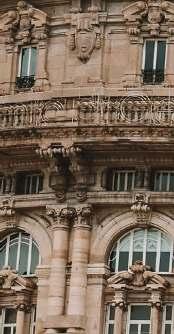
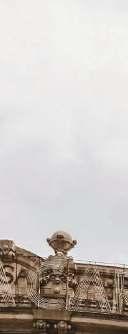
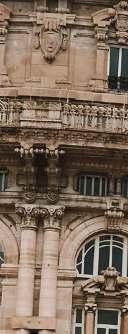
Data 23-24novembre
Data TBD
Location City Center
Location
Location
Centrocitt‡
Target
Centro città
Adults

Target Pubblicoadulto
Target Pubblico adulto
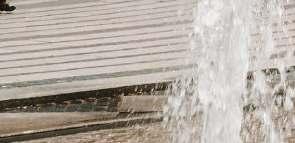
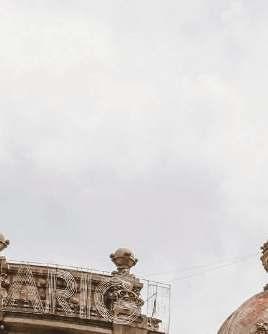
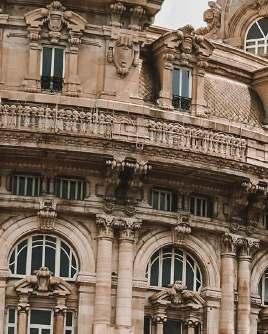

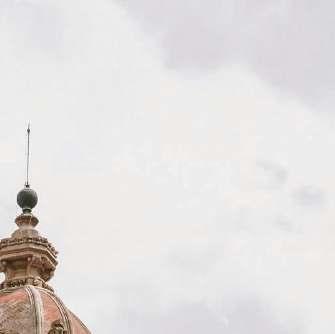

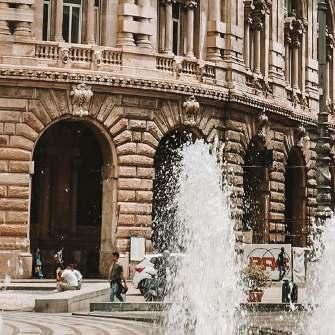

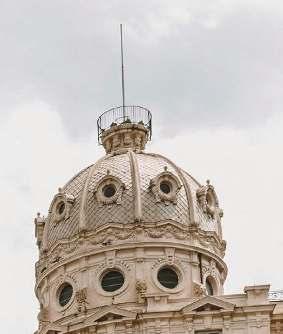
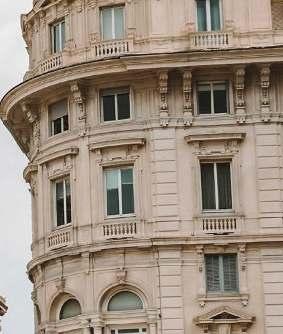

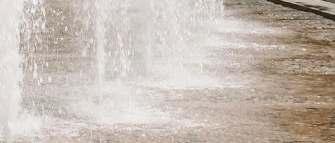

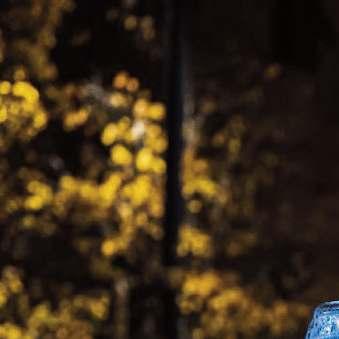


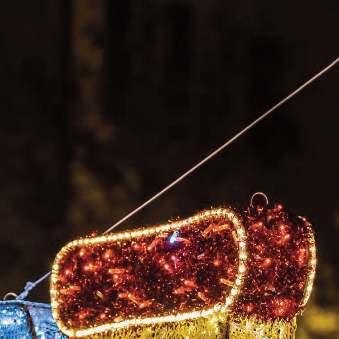

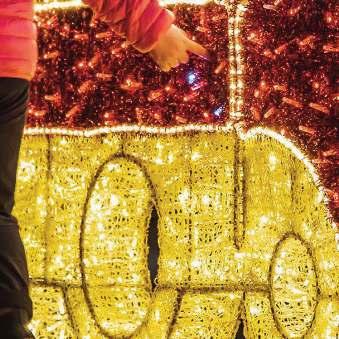



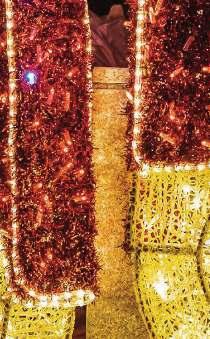
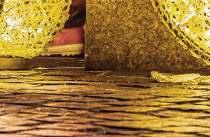
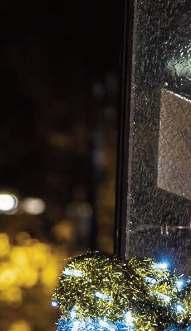

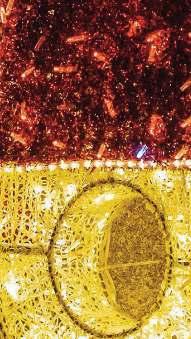

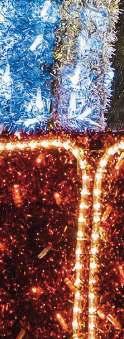
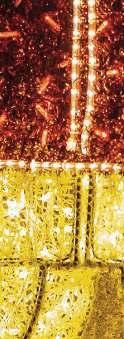

Event Description
Descrizio
Nelmese
Genovas occasion
grandie slittediB etrampo
In the weeks before Christmas Genoa comes alive with events and entertainment opportunities for children and adults. Glimmering lights, Santa Claus sleds, jugglers and waders, events in schools, December is dedicated to families from all over Genoa, with itinerant shows not only in the city center but also in delegations. In particular the Santa’s sleigh allows children to leave letters gifts, waiting for a magical Eve night. Moreover the Municipality of Genoa has promoted the Cribs Passport to encourage the Genoese and tourists to visit churches and museums located in and around Genoa that host seasonal or permanent cribs. The crib visitors with the highest number of stamps in their passport will be rewarded.
oneevento echeprecedeilNatale, sianimadieventie nidiintrattenimentoper piccini.Giochiluminosi, BabboNatale,giocolieri olierieventinellescuole dicembre famiglie spettaco incentro delegazi slittadiB aibambi deiregal nottede Inoltre,a diunPas cittadini tuttiipre allíiniziat vienepre periodo olieri,eventinellescuole, evienededicatoalle dituttaGenova,con oliitinerantinonsolo ocitt‡maanchenelle oni.Inparticolarela BabboNatalepermette nidilasciarelelettere i,inattesadiunamagica llaVigilia. attraversolacreazione ssaportodeipresepi,i sonoinvitatiavisitare esepipartecipanti tiva.Chinevisitadipi˘ emiatoalterminedel deipresepi.
Date
December
Data
Dicembr
Dicembre
Location
T Taarget
Location
The whole city
Location
Tuttala
e n citt‡
Bambiniefamiglie
Target Audience
Centro storico e tutta la città comprese le delegazioni
Children and families
Taarget
T Data
Bambiniefamiglie
Target
Bambini e famiglie
Event Description
Descrizione evento
Descrizioneevento
In collaboration with the Liguria Region, on December 8th, the city of Genoa lights up the Christmas tree in Piazza De Ferrari Gospel choirs and DJ sets featuring popular Christmas songs will animate the square before a highly awaited moment for both adults and children.
IncollaborazioneconRegione Ligurialacitt‡diGenovaaccend lílbdiNtlPid de líalberodiNatalesuPiazzade Ferrari,accompagnandoquesto momentoconunospettacolo musicaleatema.Corigospeledj setconleprincipalicanzoni nataliziesialternanoanimandola piazzaprimadiunmomento moltoattesodagrandiepiccini


Date December 8th
In collaborazione con Regione Liguria la città di Genova accende l’albero di Natale su Piazza De Ferrari, accompagnando questo momento con uno spettacolo musicale a tema. Cori gospel e dj set con le principali canzoni natalizie si alternano animando la piazza prima di un momento molto atteso da grandi e piccini
Location
Piazza De Ferrari
Target Audience
Data 8Dicembre
Data Verso l’8 dicembre
Adults, young people, children, and families
Target
Location Piazza De Ferrari
Pubblicoadulto,pubblico giovane,ibbiifili bambiniefamiglie
Target
Pubblico adulto, pubblico giovane, bambini e famiglie
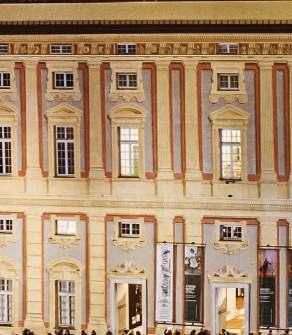
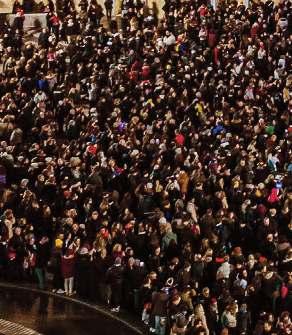
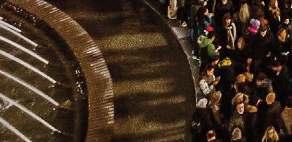
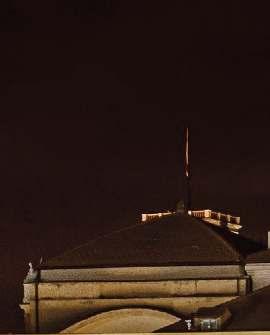


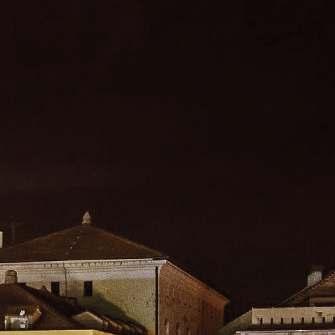
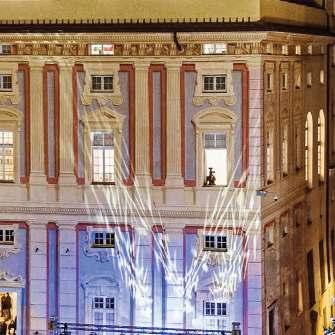
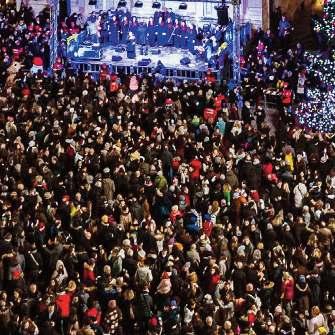




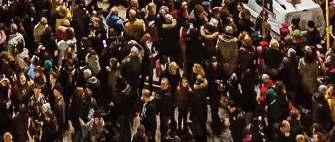


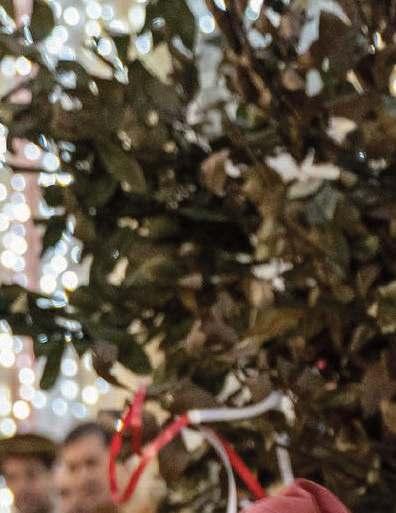
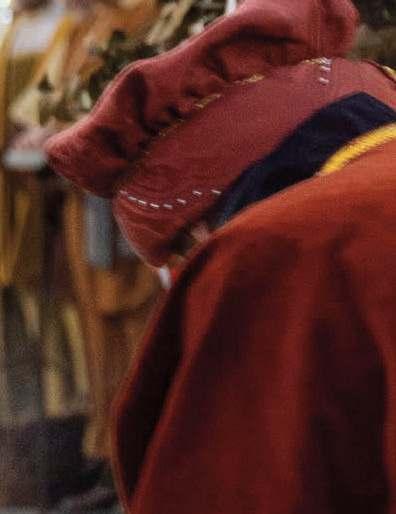
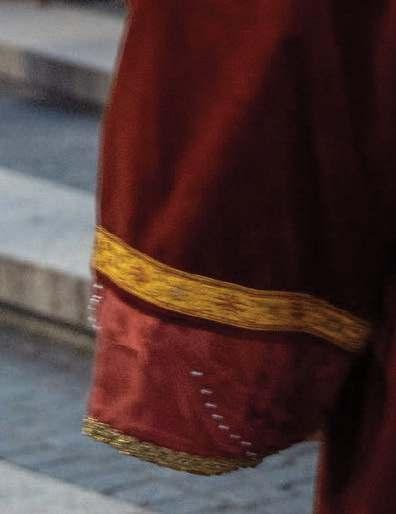
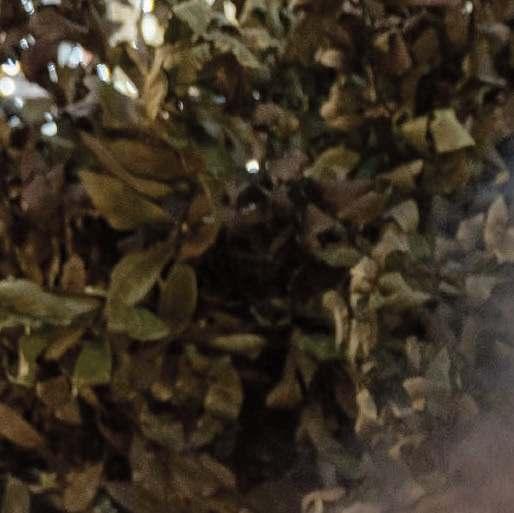

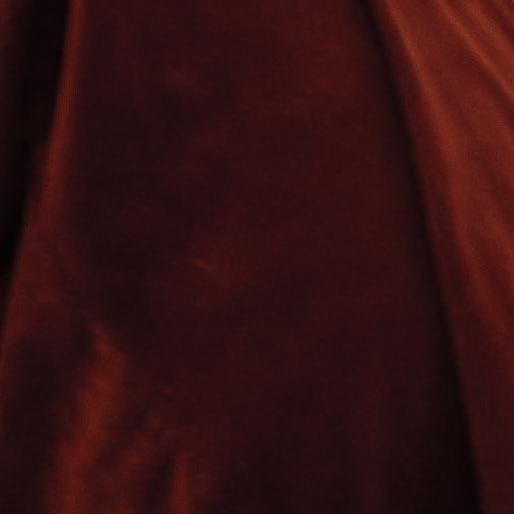



Co Descr
Event Description
The Confeugo ceremony revives an ancient tradition of the Republic of Genoa, documented since the 14th century.
Lacer ripren dellaR docum
Inocc dellíim nuovo unom
During Christmas and the imminent start of a new year, the people paid a benevolent homage to the highest authorities of the Republic by presenting a laurel trunk decorated with white and red ribbons.
Representing the population, this gift was carried by the Abbot of the People to the Doge. The trunk was then burned, again for good fortune, and attendees sought to take home a charred ember as an amulet.
allem Repub tronco bianch dellap recato alDog brucia auspic dipor come fupoi Comp inque conse dellet
Ëilpre cheim Pl
Popol tronco
izioneevento rimoniadelConfeugo deuníanticatradizione RepubblicadiGenova, mentatadalsecoloXIV. casionedelNatale,e mminenteiniziodiun oanno,ilpopolorendeva maggiobeneaugurante assimeautorit‡della bblica,presentandoun odíallorodecoratoconnastri hierossi.Inrappresentanza popolazione,ildonoera odallíAbatedelPopolo ge.Iltroncovenivapoi ato,sempreperbuon cio,eipresenticercavano tarneacasauntizzone, amuleto.Latradizione ripresanel1923daìA agnaî,associazionenata ellíannoperlatutelaela rvazionedellaculturae tradizionigenovesi.Daallora esidentedellaCompagna mpersonalíAbatedel o,portandoiltradizionale odíalloroalSindaco.
Starting from 1923 the tradition was revived by A Compagna, an association to safeguard and preserve Genoese culture and traditions. Since then, the president of A Compagna , who embodies the Abbot of the People, presents the traditional laurel trunk to the Mayor. The two leaders meet in front of the Palazzo Ducale, following a procession of performers in costume and flag bearers that first escort the Abbot from via San Vincenzo to piazza Matteotti.
Leduepersonalit‡siincontrano davantialPalazzoDucale,dopo
costumeesbandieratoricheha accompagnatolíAbatedaviaSan
The Abbot greets the Mayor with the historic formula «Ben trovòu messero Duxe» (Well met, Lord Doge), receiving in return «Benvegnou messe l’Abbou» (Welcome, Lord Abbot).
LíAbatesalutailSindacoconla storicaformulaìBentrovÚumesse roDuxeî(BenritrovatoMesser Doge),ricevendonecomerisposta ìBenvegnoumesselíAbbouî (BenvenutoMesserAbate);gli
The Mayor o ers the traditional "Confeugo," which is immediately lit, and as the "Campanon do Paxo" (the bell of the Palazzo Ducale, located on the Grimaldina Tower) rings overhead, the laurel burns in a striking choreographic setting.
chesubitovieneacceso,ementre rintoccadallíaltoilìCampanondo Paxoî(lacampanadelPalazzo Toorre
Ducale,collocatasullaT
Grimaldina)líallorobruciainun
Date December 21st
Location
Piazza De Ferrari
Target Audience
Data
21 o 22 dicembre
Data dicembre
Adults, young people, children, and families
Location
Location
PiazzadeFerrari
Piazza De Ferrari
T
Taarget
Target
Pubblicoadulto,pubblico giovane,bambiniefamiglie
Pubblico adulto, pubblico giovane, bambini e famiglie
Descrizioneevento
Event Description
Chiuderebenelíannoperiniziare ilnuovoancorameglio,questo ËlíobiettivodelTricapodanno organizzatodaqualcheannoin varielocationcittadine.Il29eil 30artistidelpanoramanazionale sialternanosulpalcodelPorto e e Anticopreparandoilpubblicoal grandeconcertonedel31suPiazza deFerrari,chevedealcunideipi˘ grandicantantiitalianiinterpretare iloropezzipi˘famosi.Tregiornidi Capodannoinmusicaperunacitt‡ semprepi˘viva.
To close the year well in order to start the new one even better, this is the aim of the Tricapodanno (New Year's Eve) organised for the past few years in various city locations. On the 29th and 30th, artists from the national scene take turns on stage at the Porto Antico, preparing the public for the big concert on the 31st in Piazza De Ferrari, which sees some of the greatest Italian singers perform their most famous songs. Three days of New Year's Eve in music for an increasingly lively city.


Data
Data
29-30-31Dicembre
29-30-31 dicembre
Location
Location
Date December 29th-30th-31st
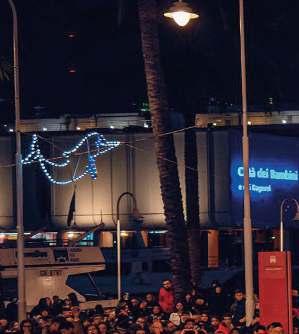
PtAtiPidFi
PortoAntico-PiazzadeFerrari
Porto Antico - Piazza De Ferrari
Location
Target
Target
Porto Antico - Piazza De Ferrari
Pubblicoadulto,pubblicogiovane, bambiniefamiglie
Pubblico adulto, pubblico giovane, bambini e famiglie
Target
Adults, young people, children, and families
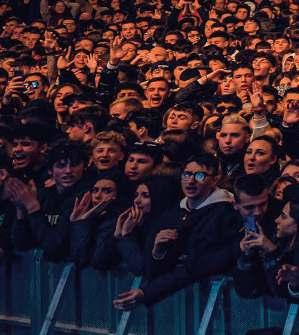
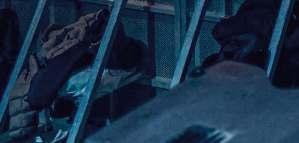




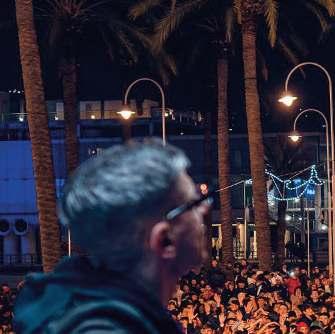



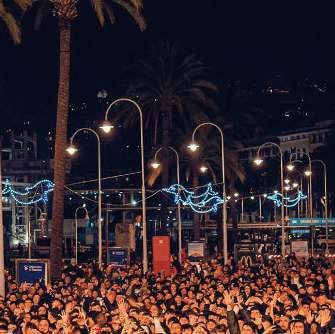




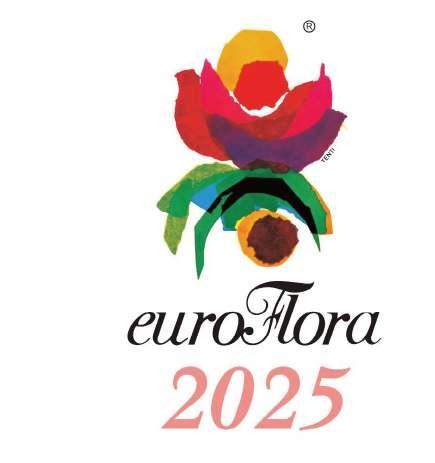
Euroflora is an international exhibition of plants and flowers recognized by AIPH, the International Association of Horticultural Producers. The event features exhibitors from Italy and abroad, including prominent categories such as floriculturists, who participate individually or collectively, usually coordinated by Regions and Chambers of Commerce. It also includes floral designers, parks, botanical gardens, municipalities, and foreign states showcasing their local specialties and productions through the creation of gardens. The first edition took place in 1966 at the
trade fair district of Genoa, held every five years until 2011. In 2018 and 2022, it was held within the Parks and Museums of Nervi, a scenic complex overlooking the cliffs formed by the merger of three historic parks under landscape and architectural constraints, preserving their beauty and integrity while open to the public daily.
The 2025 edition, titled Nature Makes Space, marks its thirteenth iteration and a return to the future. Scheduled from April 24th to May 4th, the event will take place in the former trade fair district, transformed by a large urban regeneration project designed by architect Renzo Piano.
Located on the Waterfront, Euroflora benefits from new seaside spaces, including a new 30,000 m2 urban park and a floating path in the marina, expanding the event’s content and references.
Highlighting rare and excellent floriculture productions, Euroflora encompasses themes of landscape architecture, species conservation, environmental respect, and sustainability.
Driving private cars is not recommended as there will be no public parking available in the area. Parking is only provided for service vehicles and the disabled.

Genova Brignole station is recommended.
From there, you can reach the exhibition spaces:
• on foot in approximately 20 minutes;
• by bus via line 31, which stops directly outside the station and heads towards via V Maggio (Osp. Gaslini). Get off at Marconi 1/Fiera.
Bus lines that stop near Euroflora 2025 include:
• line 31, from the east or Genova Brignole station;
• line 13 for those traveling between Porto Antico and the exhibition spaces, starting from piazza Turati (next to San Giorgio Metro station). Get off at Saffi 5/Pescatori.
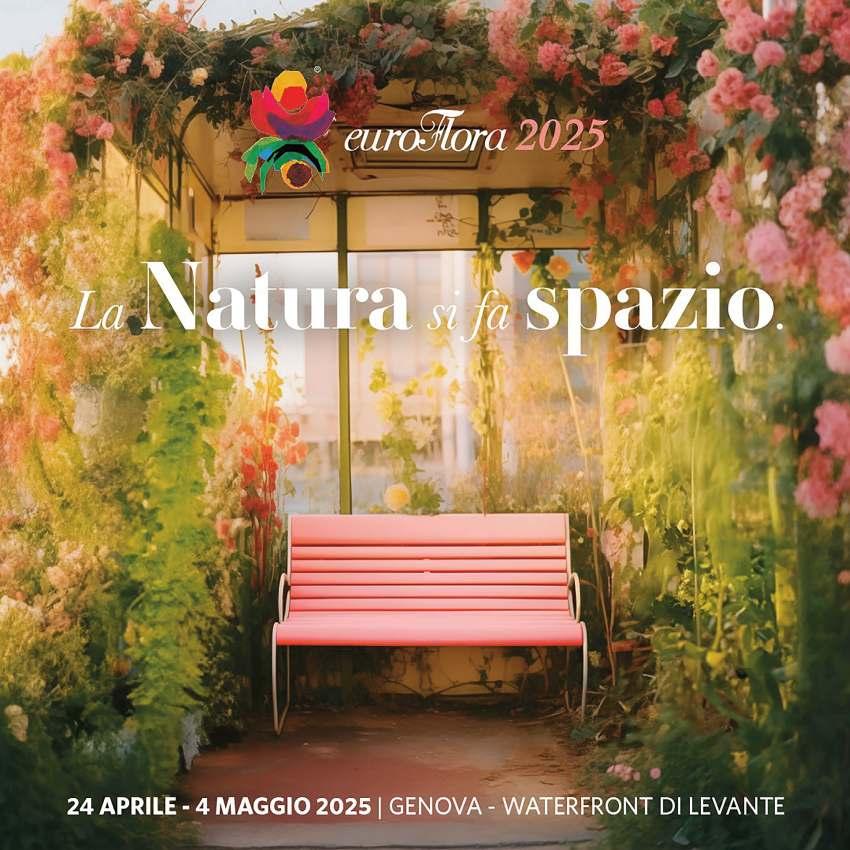
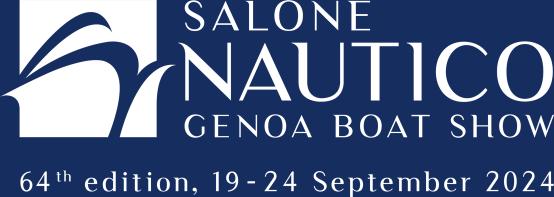
The International Boat Show of Genoa, organized by Confindustria Nautica and boasting an impressive 63 editions, represents a unique heritage blending history, knowledge, expertise, craftsmanship, design, technology, innovation, research, development, and business. It seamlessly combines the solidity of the past with a forward-thinking vision, establishing itself as a cutting-edge, effective, and concrete event that has demonstrated strength and resilience.
The International Boat Show is a must-attend event for the international boating market and sea enthusiasts alike. It features special events, sports activities, conferences, technical seminars, and all the latest innovations in international boating. Additionally, it serves as a global platform for institutional, technical, and market exchange across the sector.
The event encompasses 5 complementary yet distinct salons: a Tech Trade salon dedicated to components and accessories, a Sailing World salon, a Boating Discovery salon focusing on outboard engines, a Yacht and Superyacht salon, and a Living the Sea salon, each offering tailored and developed services to
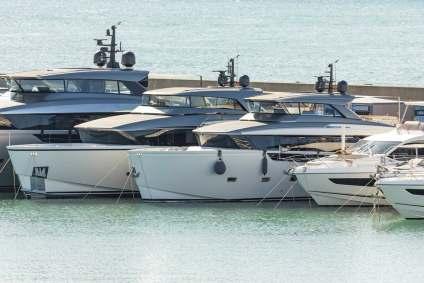
meet specific segment and clientele needs. Spanning over 200,000 m2 of land and water, with 85% of the area outdoors, the International Boat Show hosts over 1,000 boats. Continuing the transformation initiated by architect Renzo Piano, the event looks towards the future.
An innovative concept will provide a unique platform to showcase the excellence of the
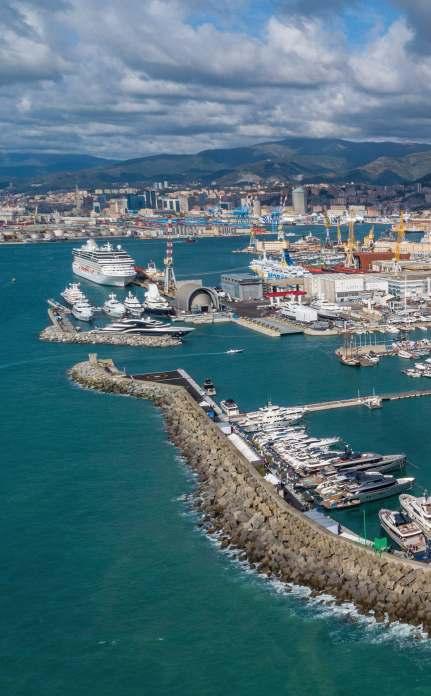
international boating industry.
The new Levante Waterfront takes shape with navigable canals, the creation of a spectacular island framing the Blue Pavilion, and new exhibition docks. These developments have already increased docking capacity by 143 spots in 2024 (with plans to reach 250), reclaiming more sea for the Boat Show.
The next edition of the International Boat Show of Genoa will take place from September 18th to 23th, 2025.

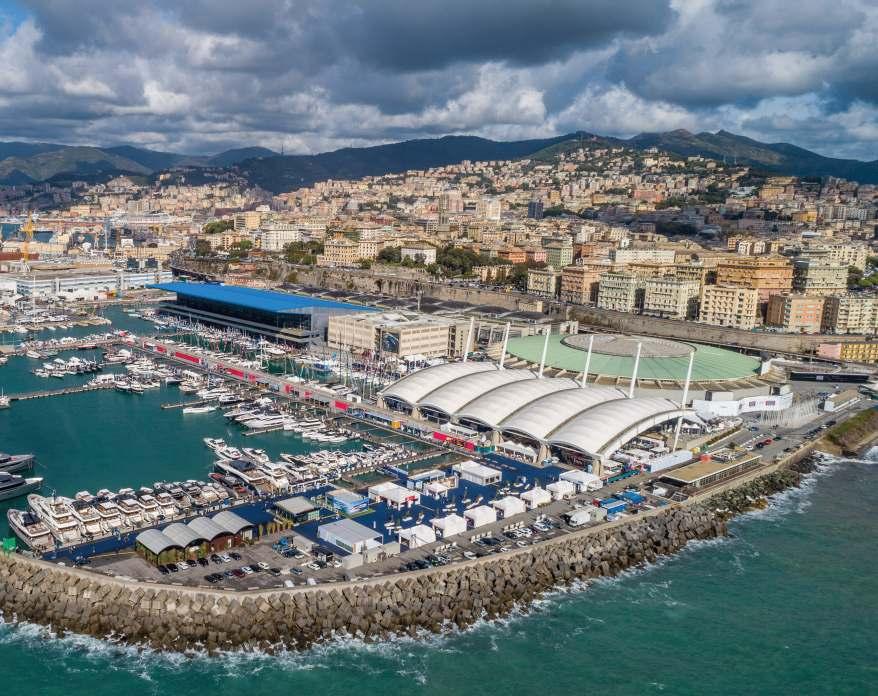

Genoa offers a wide range of accommodation options, including hotels, bed & breakfasts, apartments, vacation homes, agritourism facilities, villas, and hostels, all available for booking on different platforms. Here, we present the five, four and three-star hotels.
5 stars
Bristol Palace
Via XX Settembre 35 16121 Genova tel. 010 592541
email: info.bristolpalace@duetorrihotels.com www.hotelbristolpalace.it
Capitolo Riviera
Viale delle Palme 16 A 16167 Genova Nervi tel. 010 7001616
email: info@capitoloriviera.com www.capitoloriviera.com
Grand Hotel Savoia
Via Arsenale di Terra 5 16126 Genova tel. 010 2772700
email: direzione@hotelsavoiagenova.it www.grandhotelsavoia.it

Melià Genova
Via Corsica 4 16128 Genova tel. 010 5315111
email: reservations.melia.genova@melia.com www.meliahotels.com
Palazzo Durazzo Suites
Via del Campo 12 / Via Gramsci 1C 16124 Genova
tel. 010 2543199
email: info@palazzodurazzo.com www.palazzodurazzo.com

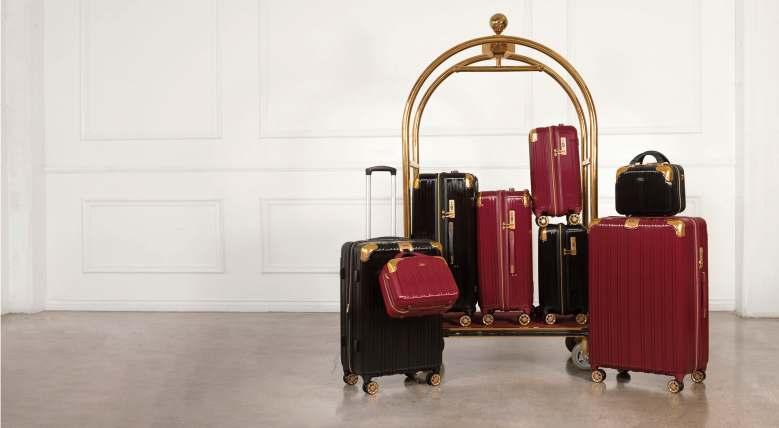
AC Hotel
Corso Europa 1075 16148 Genova Quarto tel. 010 3071180
email: direc.acgenova@ac-hotels.com www.hotelacgenova.com
Astoria
piazza Brignole 4 16122 Genova tel. 010 4556125
email: info@astoriagenova.it www.astoriagenova.it
Best Western City Hotel
Via San Sebastiano 6 16123 Genova tel. 010 584707
email: city.ge@bestwestern.it www.bwcityhotel-ge.it
Best Western Hotel Moderno Verdi
Piazza Giuseppe Verdi 5 16121 Genova tel. 010 5532104
email: info@modernoverdi.it www.modernoverdi.it
CHC Airport
Best Western Premier
Via Albareto 15 16153 Genova Sestri Ponente tel. 010 6018963
email: segreteria@gruppochc.it www.gruppochc.it
Continental Via Arsenale di Terra 1 16126 Genova tel. 010 261641
email: info@hotelcontinentalgenova.it www.hotelcontinentalgenova.it
Holiday Inn Genoa City
Via Milano 47 16126 Genova tel. 010 2534060
email: direzione@higenova.it www.higenova.it
Hotel de Ville
Via di Sottoripa 5 16123 Genova tel. 010 7960686
email: info@hoteldeville.it www.hoteldeville.it
MarinaPlace Resort
Via Pionieri e Aviatori d’Italia 129 16154 Genova
Sestri Ponente tel. 010 659401
email: info@marinaplace.it www.marinaplace.it
Mercure Genova
San Biagio Via Romairone 14 16163 Genova tel. 010 989751
email: h9617@accor.com www.accorhotels.com
NH Genova Centro
Via Martin Piaggio 11 16122 Genova tel. 010 83161 email: nhplaza@nh-hotels.com www.nh-hotels.com
NH Marina Genova
Molo Ponte Calvi 5 16124 Genova tel. 010 25391
email: nhmarina@nh-hotels.com www.nh-hotels.com
Novotel Genova City
Via Cantore 8 C 16149 Genova - Sampierdarena tel. 010 64841 email: H1709@accor.com www.novotelgenovacity.it
Palazzo Grillo
Piazza delle Vigne 4 16123 Genova tel. 010 2510018
email: ciao@hotelpalazzogrillo.it www.hotelpalazzogrillo.it
Starhotels President
Corte Lambruschini 4 16129 Genova tel. 010 5727
email: president.ge@starhotels.it www.starhotels.com/it/i-nostri-hotel/president-genova/
Tower Genova Airport
Hotel & Conference Center
Via Pionieri e Aviatori d’Italia 44 16154 Genova - Sestri Ponente tel. 010 65491
email: reservations@towergenova.com www.towergenova.ideahotel.it/it/
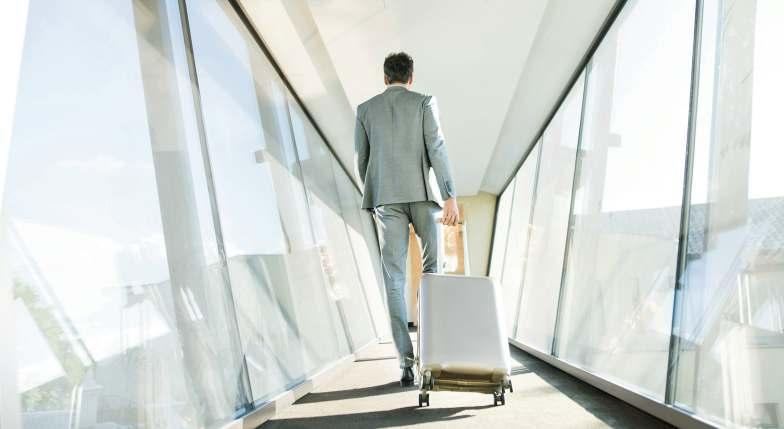
Actor
Via Goito 20 - 16122 Genova tel. 010 4070200
email: info@hotelactor.it www.hotelactor.it
Alexander
Via Bersaglieri d’Italia 19 16126 Genova
tel. 010 0993941
email: newalexanderhotel@gmail.com www.alexandergenova.com
B&B Hotel Genova City Center
Via degli Archi 6 16121 Genova
tel. 010 593061
email: ge.citycenter@hotelbb.com www.hotelbb.com
Bel Soggiorno
Bel Soggiorno
Via XX Settembre 19/2 16121 Genova
tel. 010 542880
email: info@belsoggiornohotel.com www.belsoggiornohotel.com

Assarotti
Via Assarotti 40 C 16122 Genova
tel. 010 885822
email: mail@hotelassarotti.it www.hotelassarotti.it
B&B Hotel Genova
Piazza Acquaverde 2 16126 Genova
tel. 010 4030343
email: genova@hotelbb.com www.hotelbb.com
Bellevue
Salita della Provvidenza 1 16134 Genova tel. 010 2462400
email: info@bellevue.genova.it www@hotelbellevuegenova.it
Best Western Hotel Metropoli
Vico dei Migliorini 8 16123 Genova
tel. 010 2468888
email: metropoli.ge@bestwestern.it www.hotelmetropoli.it

Best Western Hotel Porto Antico
Via al Ponte Calvi 5 - 16124 Genova tel. 010 2518249
email: portoantico.ge@bestwestern.it best-western-porto-antico.h-rez.com/
Boccascena
Via Carlo Barabino 62/R - 16129 Genova tel. 010 5740006
email: info@hotelboccascena.it www.hotelboccascena.it
Brignole
Vico del Corallo 13 R - 16122 Genova tel. 010 561651
email: info@hotelbrignole.it www.hotelbrignole.it
Britannia
Via Balbi 38 - 16126 Genova tel. 010 2470800
email: admin.genova@ostellobello.com www.ostellobello.com
Cairoli
Via Cairoli 14/4 - 16124 Genova tel. 010 2461454 - 2461524
email: info@hotelcairoligenova.com www.hotelcairoligenova.com
Cantore
Via Cantore 32 A 16149 Genova - Sampierdarena tel. 010 9418713
email: hotelcantoresrl@gmail.com www.hotelcantoregenova.it
Castello Miramare
Via Pegli 2 - 16156 Genova - Pegli tel. 010 6969690 - 6974470
email: info@castellomiramare.it www.castellomiramare.it
Columbus Sea
Via Milano 63 - 16126 Genova tel. 010 265051
email: info@columbussea.com columbussea.booking-channel.com
Della Posta
Via Balbi 24 - 16126 Genova tel. 010 2462005
email: hotelpost@tiscali.it
Doria
Vico dei Garibaldi 3 - 16123 Genova tel. 010 2474278
email: info@hoteldoriagenova.com www.hoteldoriagenova.com
Esperia
Via Val Cismon 1
16167 Genova - Nervi tel. 010 321777
email: info@hotelesperia.it www.hotelesperia.it
Galata
Via Andrea Doria 4a 16126 Genova tel. 010 261517
email: info@galatahotel.it www.galatahotel.it
Genova Liberty
Via XX Settembre 23/8 A 16121 Genova tel. 010 0995605
email: hotelgenoa@gmail.com www.hotelgenovaliberty.it
Helvetia
Piazza della Nunziata 1 16124 Genova
tel. 010 2465468
email: info@hotelhelvetiagenova.it www.hotelhelvetiagenova.it
Il Giardino di Albaro
Via Oreste De Gaspari 19/C 16146 Genova - Albaro tel. 010 366276
email: info@ilgiardinodialbaro.it www.ilgiardinodialbaro.com
Iris
Via Gabriele Rossetti 3-5 16148 Genova - Quarto tel. 010 3760703
email: info@hoteliris.it www.hoteliris.it
La Capannina
Via Tito Speri 7 16146 Genova - Albaro tel. 010 317131
email: info@lacapanninagenova.it www.lacapanninagenova.it
La Superba
Via Bersaglieri d’Italia 13 16126 Genova tel. 010 2462820
email: info@hotelsuperba.it www.hotelsuperba.it
Mediterranée
Lungomare di Pegli 69 16155 Genova - Pegli tel. 010 6973850
email: info@hotel-mediterranee.it www.hotel-mediterranee.it
Nuovo Nord
Via Balbi 153 r 16126 Genova tel. 010 2464470
email: direzione@hotelnuovonord.com www.hotelnuovonord.com
Sirenella
Via Don Giovanni Verità 4 R 16158 Genova - Voltri tel. 010 6101787
email: info@sirenellahotel.it www.sirenellahotel.it
Tirreno
Via dei Mille 17 16147 Genova - Sturla tel. 010 386342
email: info@hoteltirrenogenova.it www.hoteltirrenogenova.it
Veronese
Vico Cicala 3 16124 Genova tel. 010 9915732
email: info@hotelveronese.com www.hotelveronese.com
Vittoria & Orlandini
Via Balbi 33 16126 Genova tel. 010 261923
email: info@hotel-vittoria-genova.it www.vittoriaorlandini.com

Genova Liguria Gourmet is the collective geographical brand for Ligurian cuisine, conceived, registered, and guaranteed by the Liguria Region and the Ligurian Chamber System. Its purpose is to promote and protect the excellence and typicality of local gastronomy, certifying “True Liguria on the plate...”. The brand is issued by the Chamber of Commerce to restaurants that commit to following the provisions of the Usage Regulations, ensuring the origin and quality of dishes prepared according to ancient Ligurian traditions and using local products, paired with Ligurian PDO-IG wines.

AC Hotel
Lounge Restaurant
Corso Europa 1075 16148 Genova Quarto tel. 010 3071180
Antica Osteria
della Castagna
Via Romana della Castagna 20 r 16148 Genova Quarto tel. 010 3990265
email: osteriadellacastagna@virgilio.it
Antica Trattoria
Archivolto Mongiardino
Archivolto Mongiardino 2 16123 Genova tel. 010 2477610
email: info@archivoltomongiardino.it www.archivoltomongiardino.it
Cacio & Pepe
Via Lomellini 14 r 16124 Genova tel. 010 8983348
La Cantina Clandestina
Salita Pallavicini 25 r 16123 Genova tel. 010 8596069
email: lacantinaclandestina@gmail.com www.lacantinaclandestina.it
Cantine Camilla
Vico Indoratori 20 r
16123 Genova
tel. 010 2757608
email: cantinaecamilla@gmail.com
Cavour modo21
Piazza Cavour 21 r 16128 Genova
tel. 393 8511140
email: info@modo21.it - www.modo21.it
Le Cicale in città
Via Giuseppe Macaggi 53 r 16121 Genova
tel. 010 592581
email: ristorante@lecicalegenova.it www.lecicalegenova.it/ristorante
Le Cicale in Trattoria
Via Eugenio Ruspoli 55 r 16129 Genova tel. 010 9910724
email: ristorante@lecicalegenova.it www.lecicalegenova.it/trattoria
Cucina Valoria
Piazza Valoria 9-11 r
16123 Genova
tel. 010 9917841
email: cucinavaloria@gmail.com www.cucinavaloria.it
Il Genovese cucina ligure
Via Galata 35 r 16121 Genova
tel. 010 8692937 - www.ilgenovese.com
Hostaria Ducale
Salita San Matteo 29 r 16123 Genova tel. 010 4552857
email: prenotazioni@hostariaducale.it www.hostariaducale.it
La Lanterna Trattoria
Piazza Nicolò Barabino 25-27 r 16149 Genova Sampierdarena tel. 339 6367635 email: lalanternatrattoria@gmail.com
Life ristorante sano
Viale Cambiaso 13 r 16145 Genova Albaro tel. 349 8798227 www.lifecibosano.it/ristorante-sano/

Isi Bistrot
Via Ilva 1H
16128 Genova
tel. 010 0899083
email: isibistrotgenova@gmail.com www.isibistrotgenova.com
Kapperi
Vico dei Lavatoi 6 r 16128 Genova tel. 010 8696901
email: ristorantekapperi@gmail.com
Locanda Spinola
Vico della Scienza 17 r 16123 Genova tel. 010 4077266
email: locandaspinola@virgilio.it
La Mandragola
Piazza San Cosimo 2 r 16128 Genova tel. 010 2518206 email: zarmandragola@hotmail.com
Le Mani in Pasta
Via del Molo 45 r 16128 Genova tel. 010 255646
Il Marin
Calata Cattaneo 3 16128 Genova tel. 010 8698722 email: info@ilmarin.it www.ilmarin.it
Murena Suite
Via XX Settembre 157 16121 Genova tel. 010 591887 email: info@murenasuite.it
L’Ostaia in Darsena
Piazza dello Statuto 7 16126 Genova tel. 320 6888933 email: ostaiaindarsena@gmail.com

Meliá
Via Corsica 4
16128 Genova tel. 010 5315111 www.melia.com
Il Michelaccio
Via Innocenzo Frugoni 47-49 r 16121 Genova tel. 010 5704274 email: info@ilmichelaccio.it www.ilmichelaccio.it
Osteria della Foce
Via Eugenio Ruspoli 72 r 16129 Genova tel. 010 3027696 www.osteriadellafocegenova.it
Osteria da Genio
Salita San Leonardo 61 r 16128 Genova tel. 010 588463
Osteria Gigino
Via Romana della Castagna 27 r 16148 Genova Quarto tel. 010 3772080 – 339 8732013
email: info@osteriagigino.com www.osteriagigino.com
Osteria della Piazza
Piazza Colombo 30 r 16121 Genova tel. 010 5760308
email: info@fratellimanzella.it
Osteria Rustichello
Via San Vincenzo 59 r 16121 Genova tel. 010 588556 email: osteriarustichello@gmail.com www.osteriarustichello.com
Osteria Sant’Ilario
Via Scuola di Agricoltura 5-6-7 16167 Genova Nervi tel. 010 321598
email: dallosteriacarmello@gmail.com
Osteria della Triglia
Passo Renato 1 r 16165 Genova Struppa tel. 010 3906120
Patanegra Boccadasse
Piazza Enrico Bassano 2 16138 Genova tel. 010 4559740 - 344 2884135 email: info@patanegragenova.it www.patanegragenova.it
Patanegra Molassana
Via Molassana 132A r 16138 Genova tel. 010 4550500
email: info@patanegragenova.it www.patanegragenova.it
Le Perlage
Via Mascherpa 4 r 16129 Genova tel. 010 588551
email: info@leperlage.com www.leperlage.com
La Pineta
Via Gualco 82 16165 Genova Struppa tel. 010 802772 email: lapinetastruppa@gmail.com
Rossocarne
Via di Ravecca 75 r 16128 Genova tel. 010 2530518 email: inforossocarne@gmail.com www.rossocarne.it
Rossopomodoro
Calata Molo Vecchio 16 16128 Genova tel. 010 2466376 www.rossopomodoro.it
Rossovino Bistrot
Piazza Lavagna 6A r 16123 Genova tel. 329 1761889
email: bistrotrossovino@gmail.com
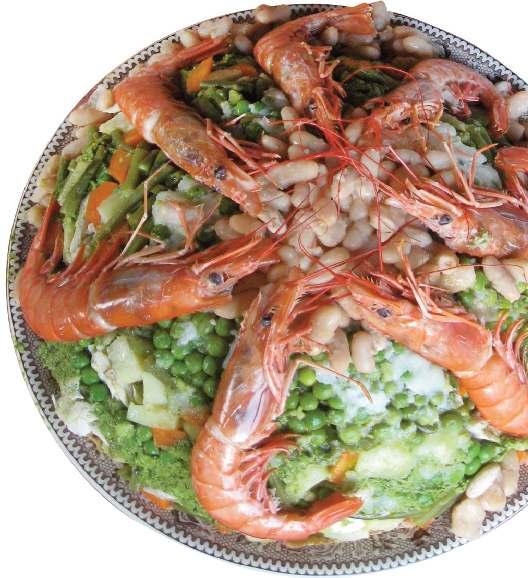
Le Rune
Salita inf. Sant’Anna 13 r 16125 Genova
tel. 010 594951 - 349 1728910
email: info@ristorantelerune.it www.ristorantelerune.it
Teresa Piazza Lido di Pegli 5-6 r 16156 Genova Pegli
tel. 010 6937774
email: info@ristoranteteresa.com www.ristoranteteresa.it

San Giorgio
Viale Brigata Bisagno 69 16121 Genova
tel. 010 5955205 - 347 9106338
email: info@ristorantesangiorgiogenova.it www.ristorantesangiorgiogenova.it
Soul Kitchen Il Ristorante
Piazza dell’Agnello 41 r 16124 Genova
tel. 010 8623196 - 333 3531515
email: info@soulkitchengenova.it www.soulkitchengenova.it
The Cook al Cavo
Vico Falamonica 9 r 16123 Genova
tel. 375 5004773
email: thecookrestaurant@gmail.com www.thecookrestaurant.com
Tiflis
Vico del Fico 35 r 16128 Genova
tel. 346 8810911
email: info.tiflis.it www.tiflis.it
Toe Drue Antica Osteria
Via Carlo Corsi 44 r 16154 Genova Sestri Ponente tel. 010 6500100
email: info@toedrue.it www.toedrue.it
Trattoria dell’Acciughetta Piazza Sant’Elena 16126 Genova tel. 010 8693918
email: postmaster@acciughetta.it www.acciughetta.com/tda/
Trattoria Arvigo
Via Cremeno 31A
16162 Genova Bolzaneto fraz. Cremeno tel. 010 7170001 - 348 2599904
email: trattoriaarvigo@virgilio.it www.trattoriaarvigo.it
Trattoria detta del Bruxaboschi 1862
Via Francesco Mignone 8 16133 Genova San Desiderio tel. 010 3450302
email: info@bruxaboschi.com www.bruxaboschi.com
Trattoria Gianna by Bambi la mia cucina
Vico delle Camelie 26 r 16128 Genova tel. 010 2468659
email: info@trattoriagianna.it www.bambilamiacucina.it
Trattoria La Ruota
Via Guglielmo Oberdan 215 r 16167 Genova Nervi tel. 010 3726027
email: info@trattorialaruota.com www.trattorialaruota.com
Trattoria Rosmarino
Salita del Fondaco 30 16123 Genova tel. 010 2510475 – 339 8301524
email: info@trattoriarosmarino.it www.trattoriarosmarino.it
Trattoria Tralalêro Genovese c/o Hotel Continental Via Arsenale di Terra 3 r - 1C r 16126 Genova tel. 010 2772834
email: info@trattoriatralalero.it www.hotelcontinentalgenova.it
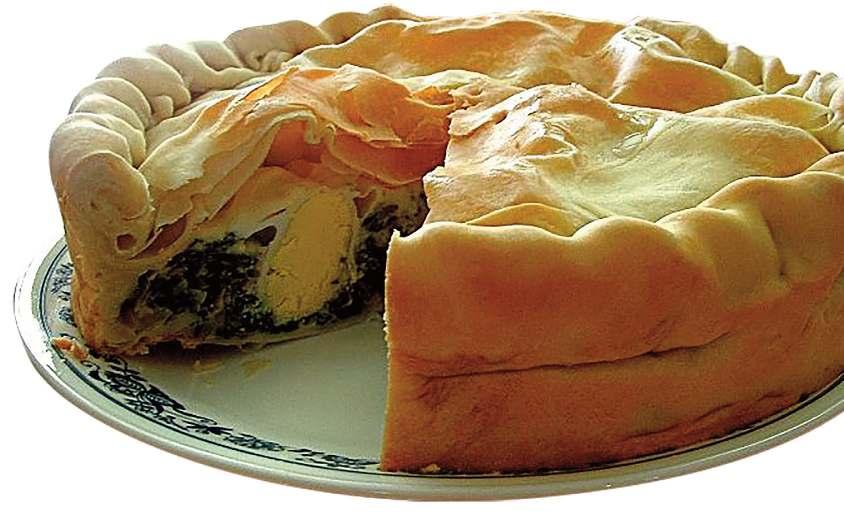
I Tre Merli Porto Antico
Calata Cattaneo 17 16128 Genova tel. 010 2464416
email: portoantico@itremerli.it www.itremerli.it
Tuna cantina e pescato
Piazza Sarzano 8 r 16128 Genova tel. 392 4259350 - 340 4105180
email: tunarestaurant7@gmail.com www.tunacantinaepescato.it
Le Vecchie Mura
Via alla Calata Marinetta 12 16128 Genova tel. 010 8690866 email: levecchiemurasrl@gmail.com www.levecchiemura.eu
La voglia matta
Via Cerusa 63 r
16158 Genova Voltri tel. 010 6101889 email: info@lavogliamatta.org www.lavogliamatta.org
Voltalacarta
Via Assarotti 60 r 16122 Genova tel. 010 8312046
email: info@voltalacartagenova.it www.voltalacartagenova.it
Zeffirino
Via XX Settembre 20 16121 Genova tel. 010 591990 email: info@zeffirino.com www.zeffirino.com

Vegia Ostaia da-o Pöulu
Via Superiore Gazzo 30 16153 Genova Sestri Ponente tel. 392 9473588
email: vegiaostaiadaopoulu@gmail.com
Al Veliero
Via Ponte Calvi 10 r 16124 Genova tel. 010 2465773
Zena Zuena
Via Cesarea 78 r 16121 Genova tel. 010 530199
Zupp
Piazza San Matteo 6A r 16123 Genova tel. 010 0899262 www.zupp.it

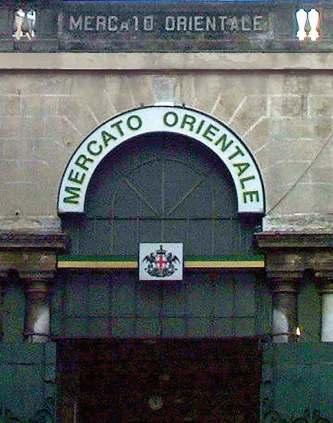
Every neighborhood in the city has markets, in indoor or outdoor structures, where you can immerse yourself in the colours and aromas of fruits and vegetables, bread and focaccia.
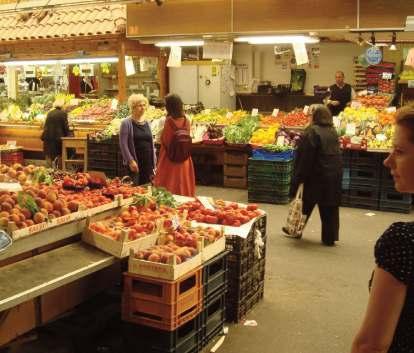
The most well-known is the Mercato Orientale, located on the central Via XX Settembre, established on the structure of the cloister annexed to the convent of Nostra
Signora della Consolazione, founded in 1699. The convent project was never completed and the cloister spaces were partially dedicated to hosting shops and vendors. In the late 19th century, the Municipality of Genoa decided to permanently transform it into a covered market, using the Hennebique system of reinforced concrete with iron. The inauguration took place in May 1899 with a large floral exhibition. The structure that can be admired today is the result of the 2019 restoration project.
The stalls of MOG are a riot of colours: seasonal fruits and vegetables alternate with fresh catches of the day, cured meats and cheeses, spices, and dried fruits. A connection links the raw materials sold in the stalls of the side corridors to the dishes served in the central courtyard, where several restaurants offer Genoese specialties and world recipes. The balcony hosts various initiatives aimed at promoting the local gastronomic tradition, as well as cooking and baking courses held in the "Aula fornelli" and "Aula mani in pasta".
MOG - Mercato Orientale Genova
Via XX Settembre 75 r tel. 010 8973000 www.moggenova.it
Opening times: Open Monday to Saturday; market stalls 8:30-12:30 and 16:30-19:00; dining area Monday 10:00-16:00, Tuesday and Wednesday 10:00-22:00, Thursday, Friday, and Saturday 10:00-23:00.
In a Liberty style building constructed in 1921, you'll find the Mercato del Carmine. Recently restored, the market hosts several food stalls and a restaurant that offers dining in its spacious hall: from pizza to hamburgers, from pasta dishes to meat, everyone can choose his favourite dish.

Mercato del Carmine
Piazza del Carmine
www.mercatodelcarmine.it
Opening times: Open Monday to Saturday; market stalls 8:00-19:00; bar, restaurant, and wine bar 8:00-24:00.
The Mercato di corso Sardegna is a landmark not only for the Valbisagno area but also for the people of Genoa: the ancient structure that housed Genoa's fruit and vegetable market from 1926 to 2009 has recently been revitalized and returned to the citizens, preserving the architec-
tural memory of the complex. In addition to shops, restaurants, and services, the market includes a large park with a playground, multipurpose field, and relaxation areas. The park has been designed to optimize environmental aspects, from rainwater reuse to LED lighting.
Mercato Corso Sardegna
Corso Sardegna 165 tel. 010 7940680
www.mercatocorsosardegna.it
Opening times: Open every day; shops 9:00-20:00; restaurants 11:00-24:00; public park 7:00-1:00.
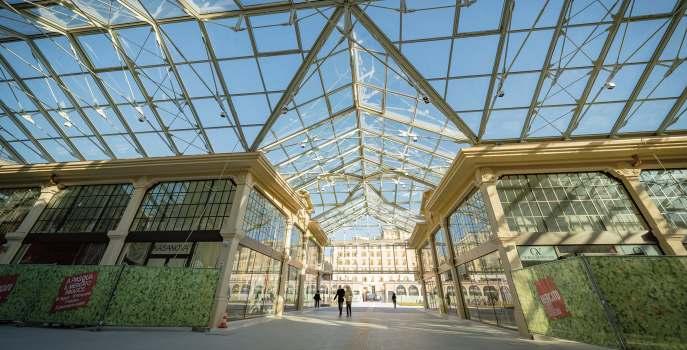
In the Genoese dialect, sciamadda means "flame”. Sciamadde are small eateries, with no more than three or four seats, named after the old wood-fired oven that characterizes them. They symbolize the city's street food and are almost all located near the port because they used to be meeting places and lunch spots for dockworkers.
The chickpea farinata is the signature dish of the sciamadde, along with savory pies that vary with the seasons: from chard pie to artichoke pie, from rice pie to onion pie.
Antica Sciamadda di via San Giorgio
It is the oldest: it has been around for 700 years, with an oven that just turned 200. In addition to farinata and vegetable pies, it offers a wide array of fried foods: panisse and frisceu, small balls of herb-flavored dough. The menu also includes typical dishes such as stockfish and minestrone.
Via San Giorgio 14r - 16128 Genova tel. 010 2468516
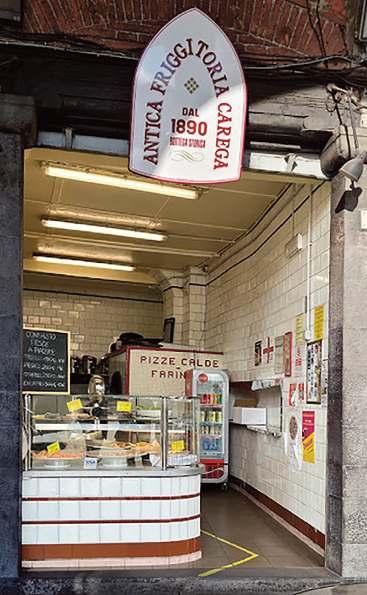

Antica friggitoria Carega
Now in its sixth generation (it has been open for 133 years), it continues to produce delicious savory specialties. A wood-fired oven and a charcoal kitchen support a timelessly unchanged high-level offering where fried foods dominate, especially fish fry. Above all, the fry of "pigneu," small anchovies, and other types of bluefish. Calamari, shrimp, battered cod continue the line of fried foods along with the inevitable farinata.
Via di Sottoripa 113 r 16124 Genova tel. 010 2470617
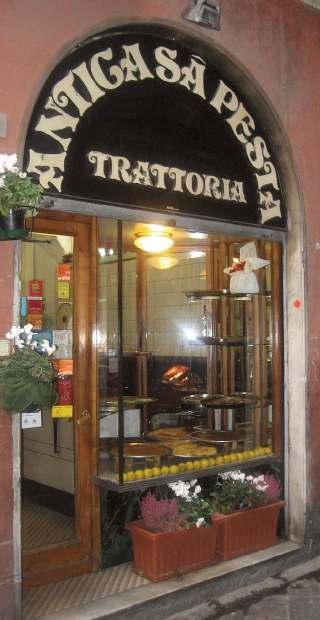
Located in the bustling heart of the historic center, it reveals a dual soul, halfway between the traditional sciamadda and a genuine tavern, united by the large oven where everything comes together in a memorable "mixed oven" dish. The farinata, stuffed vegetables, potato and green bean pie, onion pie, chard pie, and pasqualina are prepared as in the past. A brief menu retraces the typical dishes of Genoese cuisine offering additional choices: from minestrone to cima, from codfish to stockfish, to tripe and pesto pasta, all of excellent quality.
Via dei Giustiniani 16 r - 16123 Genova tel. 010 2468336



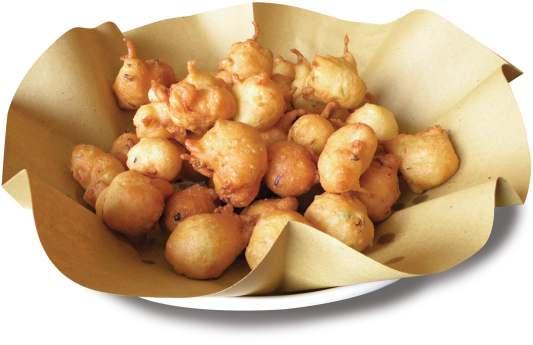
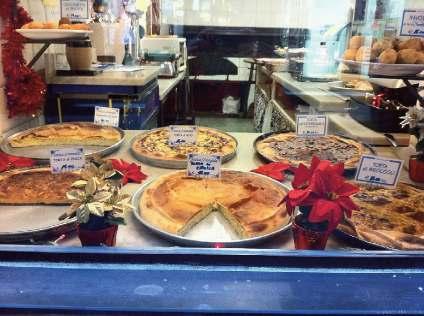


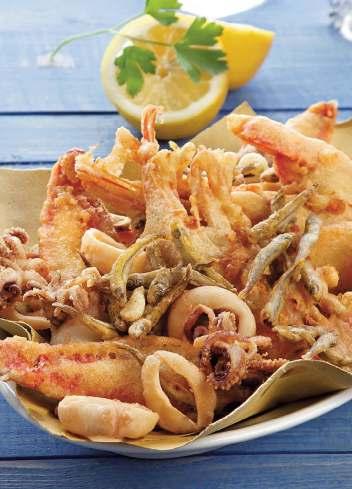
Sciamadda
In Via di Ravecca, a stone's throw from Porta Soprana, is this tiny farinotto that, in addition to farinata and panisse, also offers a wide selection of savory vegetable pies accompanied by frisceu, and even sweet dishes. Notable are the cod fritters and latte brusco, a sort of flavored, thickened, and then fried béchamel, essential in the composition of the Genoese mixed fry.
Via di Ravecca 19 r - 16128 Genova tel. 345 7689233


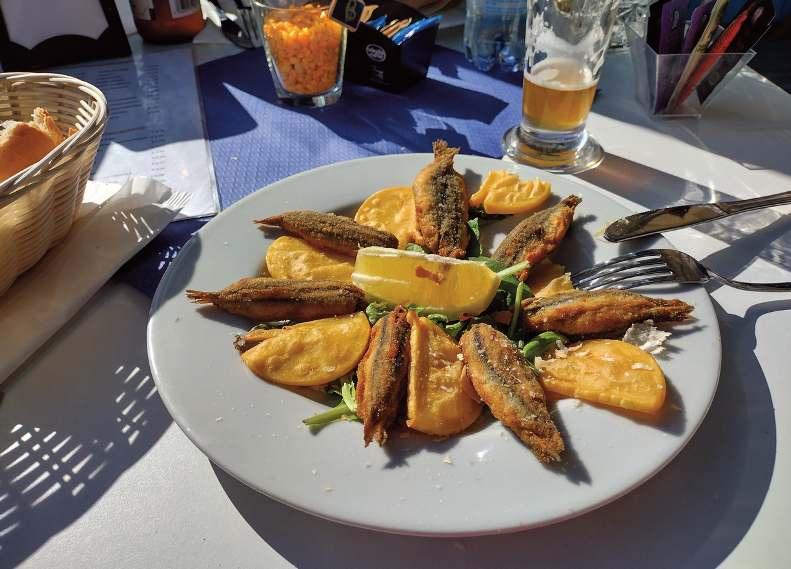

Preliminary
First round - Palazzo Tuursi, 15-16 October
Second round - Teeatro Carlo Felice, 18-19 October
Teeatro Carlo Felice, 22 October
Final
Teeatro Carlo Felice, 25 October
Gala concert
Teeatro Carlo Felice, 26 October
Under


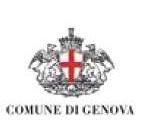







p. 10 Granarolo Rack Railway - Photo: Torsten Maue
p. 12 Galata Maritime Museum - Photo: Christine Zenino
Nazario Sauro Submarine
p. 13 Neptune Galleon - Photo: Zairon
Città dei Bambini e dei Ragazzi - Photo: Family Welcome and Andrea Beggi
p. 14 Tourist train - Photo: treninituristici.it
p. 15 Spianata Castelletto - Photo: Alessandro Vecchi
City Sightseeing Genoa - Photo: gregorio (ettore(at)gmail(dot)com)
p. 16 Palazzo Doria Tursi
p. 17 Piazza De Ferrari - Photo: Maurizio Beatrici
p. 18 Elevator of Castelletto
Cathedral of San Lorenzo - Photo: Paola Leoni
p. 19 Sant’Anna funicular
p. 20 Boccadasse
p. 21 Cemetery of Staglieno
p. 22 Bigo elevator - Photo: Lorenzo Trombetta
p. 23 The Lanterna Museum of Ligurian Archaeology
p. 24 Forte Puin
Villa Brignole Sale Duchessa di Galliera - Photo: GiuF80
p. 25 Biosfera
p. 34 Bernardo Strozzi, The Cook (Palazzo Rosso)
p. 35 Antoon Van Dyck, Portrait of Caterina Balbi Durazzo (Palazzo Reale)
p. 36 Sebastiano del Piombo, Portrait of Andrea Doria (Villa del Principe)
p. 37 Sacred Basin (Treasure Museum of San Lorenzo Cathedral)
Contemporary Art Museum of Villa Croce
p. 38 Passion Tapestries (Diocesan Museum)
Antependium (Museo di Vita Cappuccina)
p. 39 Katsushika Hokusai, The Great Wave (Museum of Oriental Art E. Chiossone)
GAM - Gallery of Modern Art
p. 40 Giovanni Boldrini, Miss Bell (Frugone Collections)
Wolfsoniana
p. 41 Museum of Ligurian Archaeology
Manuscript of Mameli’s Anthem (Museum of Risorgimento)
p. 42 Columbus’ House
MEI - Italian Emigration Museum
p. 43 List of Rolli Palaces (State Archive)

Museum of Natural History
Galata Maritime Museum
Cristoforo Grassi, View of Genoa in 1481 (Galata Maritime Museum)
D’Albertis Castle - Museum of World Cultures
Palazzo di Antonio Doria - Photo: Superchilum
Palazzo di Clemente della Rovere - Photo: Zenawiki
Palazzo di Tomaso Spinola
Palazzo di Giacomo Spinola
Palazzo di Agostino Ayrolo - Photo: Carlo Dell’Orto
Palazzo di Paolo e Niccolò Interiano
Palazzo di Agostino Pallavicino
Palazzo di Tobia Pallavicino
Palazzo di Angelo Giovanni Spinola
Palazzo di Nicolosio Lomellino
Palazzo di Niccolò Grimaldi - Photo: Studio Leoni
Palazzo Bianco
Palazzo di Francesco e Ridolfo Brignole Sale
Palazzo di Gerolamo Grimaldi - Photo: Superchilum
Palazzo di Gio Carlo Brignole
Palazzo di Giacomo Patrone Lomellini
pp. 62-63 Palazzo di Giacomo e Pantaleo Balbi - Photo: G. Cavalieri

Palazzo di Stefano Balbi - Photo: Steven Lek
Palazzo di Cosmo Centurione
Palazzo di Gio Battista Centurione
Palazzo di Francesco Grimaldi
Palazzo di Gio Battista Grimaldi
Palazzo di Ambrogio Di Negro
Palazzo di Gerolamo Grimaldi (Palazzo della Meridiana)
Palazzo Ducale, Lower Courtyard - Photo: Graziella Taibi
Palazzo Ducale, The Hall of the Major Council - Photo: Alessandro di.
Palazzo Ducale, Internal Courtyard
The Grimaldine Tower
Teatro Carlo Felice - Photo: Maurizio Beatrici
Teatro Nazionale di Genova
TIQU Teatro Internazionale di Quartiere
Moni Ovadia and don Gallo at Suq Festival - Photo: Najjar88
Teatro Rina e Gilberto Govi
Galleria Mazzini - Photo: Federico Parodi
Cathedral of San Lorenzo - Photo: Twice25 & Rinina25
Cathedral of San Lorenzo - Photo: Fabrizio Binello
Peter Paul Rubens, The Circumcision of Jesus (Chiesa del Gesù)
Santissima Annunziata del Vastato - Photo: Betti1955
Santi Cosma e Damiano
San Donato - Photo: Anonimogenovese
San Giovanni di Prè - Photo: Maurizio Beatrici
Filippo Parodi, Immaculate Virgin (San Luca) - Photo: John Samuel
Domenico Fiasella, The Martyrdom of Saint Barbara (San Marco al Molo)
Carlo Maratta, The Martyrdom of Saint Blaise (Santa Maria Assunta di Carignano)
Santa Maria Assunta di Carignano
p. 84
Ludovico Brea, Pala di Ognissanti (Santa Maria di Castello)
The vault of the central nave (Santa Maria delle Vigne)
p. 85 San Matteo
p. 86 San Pietro in Banchi
San Siro
p. 87 Chiesa del Gesù
p. 102 Monumental Cemetery of Staglieno - Photo: Sven Kaiser
p. 103 Votive niches
p. 104 Commenda di Pré - Photo: Faber1893
p. 105 Porta dei Vacca
Palazzo San Giorgio - Photo: Captain Raju
p. 106 Campo Pisano
p. 107 Porta Soprana - Photo: Maurizio Beatrici
Palace of Andrea Doria and Palace of Lamba Doria
p. 108 Photo: Gian Luca Sgaggero
p. 109 Photo: Superchilum
p. 110 Biosphere - Photo: Cristina.Sanvito
pp. 110-111Bigo Elevator - Photo: Benjamin Smith
p. 111 La Città dei bambini e dei ragazzi
p. 112 De Amicis Library - Foto: Anagrafe delle Biblioteche Italiane
Porta Siberia - Photo Rinina 25
p. 113 Magazzini del Cotone
Palazzine del Porto Franco
pp. 114-115 Villa Brignole Sale Duchessa di Galliera - Photo: Lorenzo Piccardo
p. 115 Villa Durazzo Pallavicini - Photo: Maurizio Beatrici
p. 116 Villa Durazzo Pallavicini - Photo: Zairon
p. 117 Villa Doria
Villa Rossi Martini - Photo: Angelo G. Valle
p. 118 Villa Durazzo Bombrini - Photo: General Catalogue of Cultural Heritage
p. 119 Villa del Principe - Photo: Marta1977
Villa Gruber De Mari - Photo: Zenawiki
p. 120 Villetta Di Negro - Photo: Faber1893
pp. 120-121Villetta Di Negro and park
p. 121 Villa Imperiale Cattaneo
p. 122 Villa Gropallo - Photo: Alessio Sbarbaro
Villa Grimaldi Fassio - Photo: Maurizio Beatrici
p. 123 Villa Saluzzo Serra - Photo: Faber1893
Villa Luxoro - Photo: Faber1893
p. 124 View from Spianata Castelletto Boccadasse
p. 125 The small port of Nervi - Photo: M. Niccolai
pp. 134-135 Pegli - Photo: Kent Wang
p. 178 Farinata - Photo: Gianluca Grassano
p. 180 Cima genovese - Photo: So Said Ellie
p. 181 Pasqualina pie - Photo: GabeD
p. 182 Recco cheese focaccia - Photo: Michele Ursino
p. 187 Frisceau - Photo: Chefpercaso
p. 188 Fugassin - Photo: N. Longo
Panissa and stuffed anchovies - Photo: Pampuco

